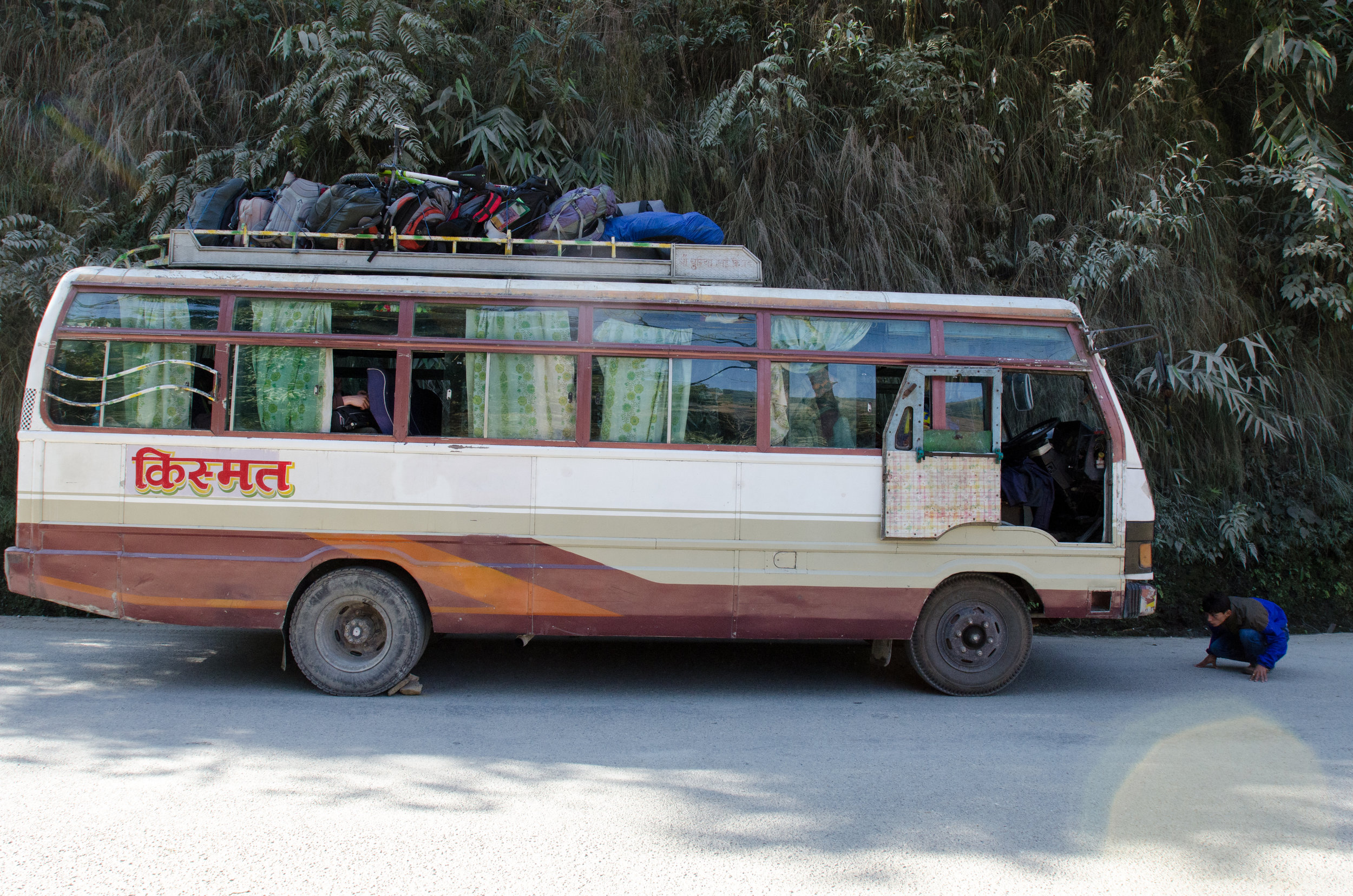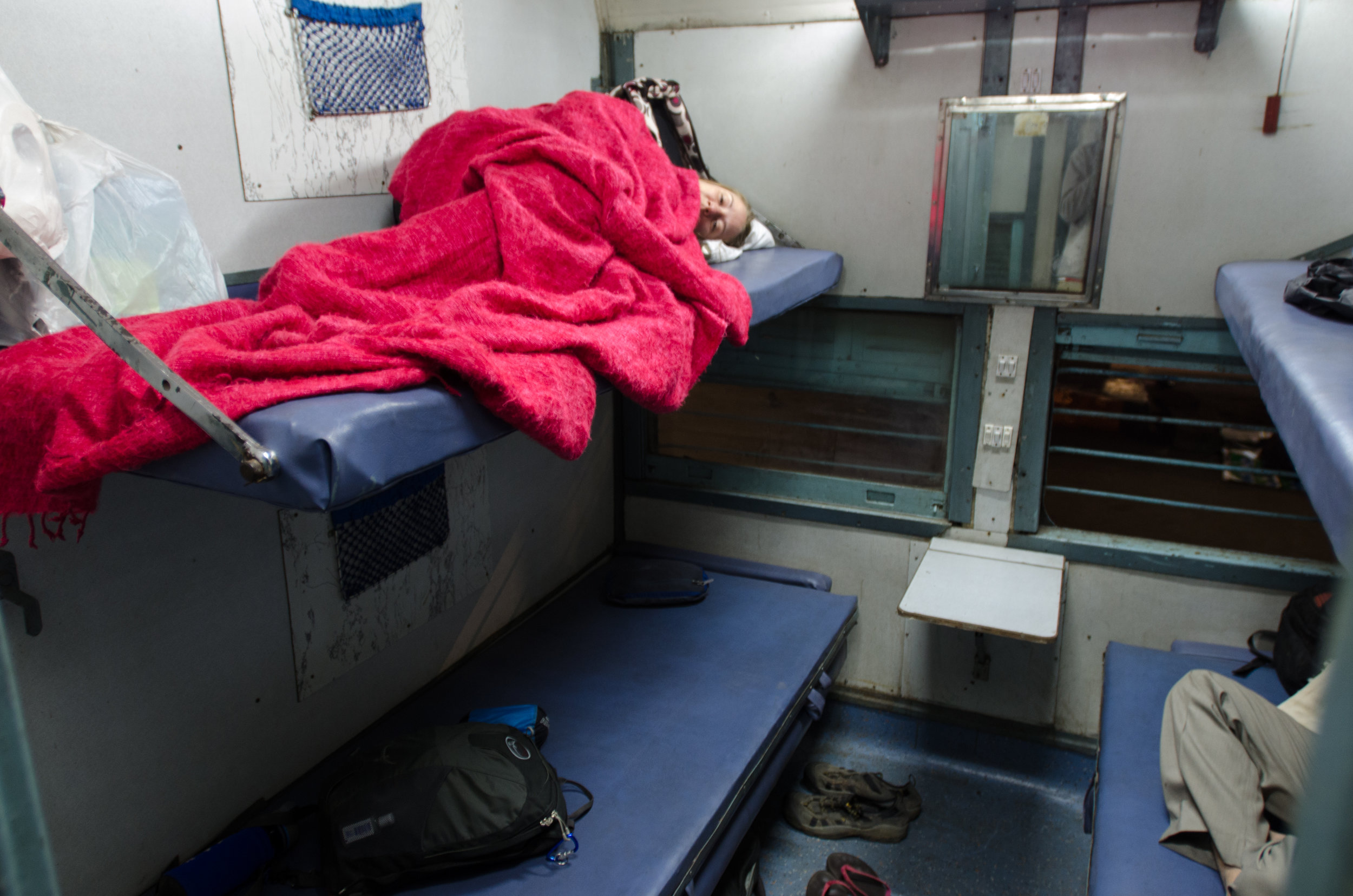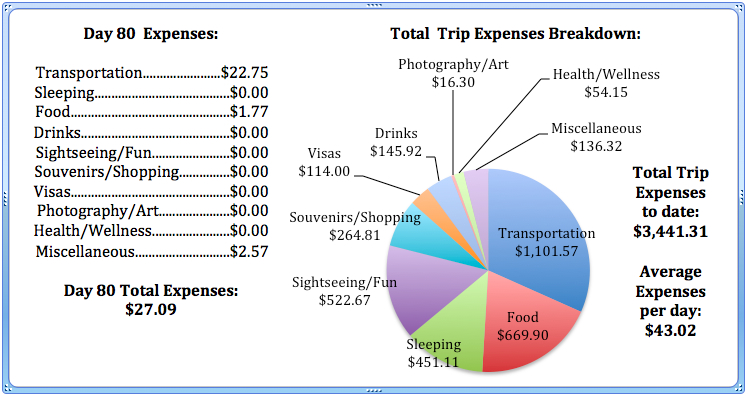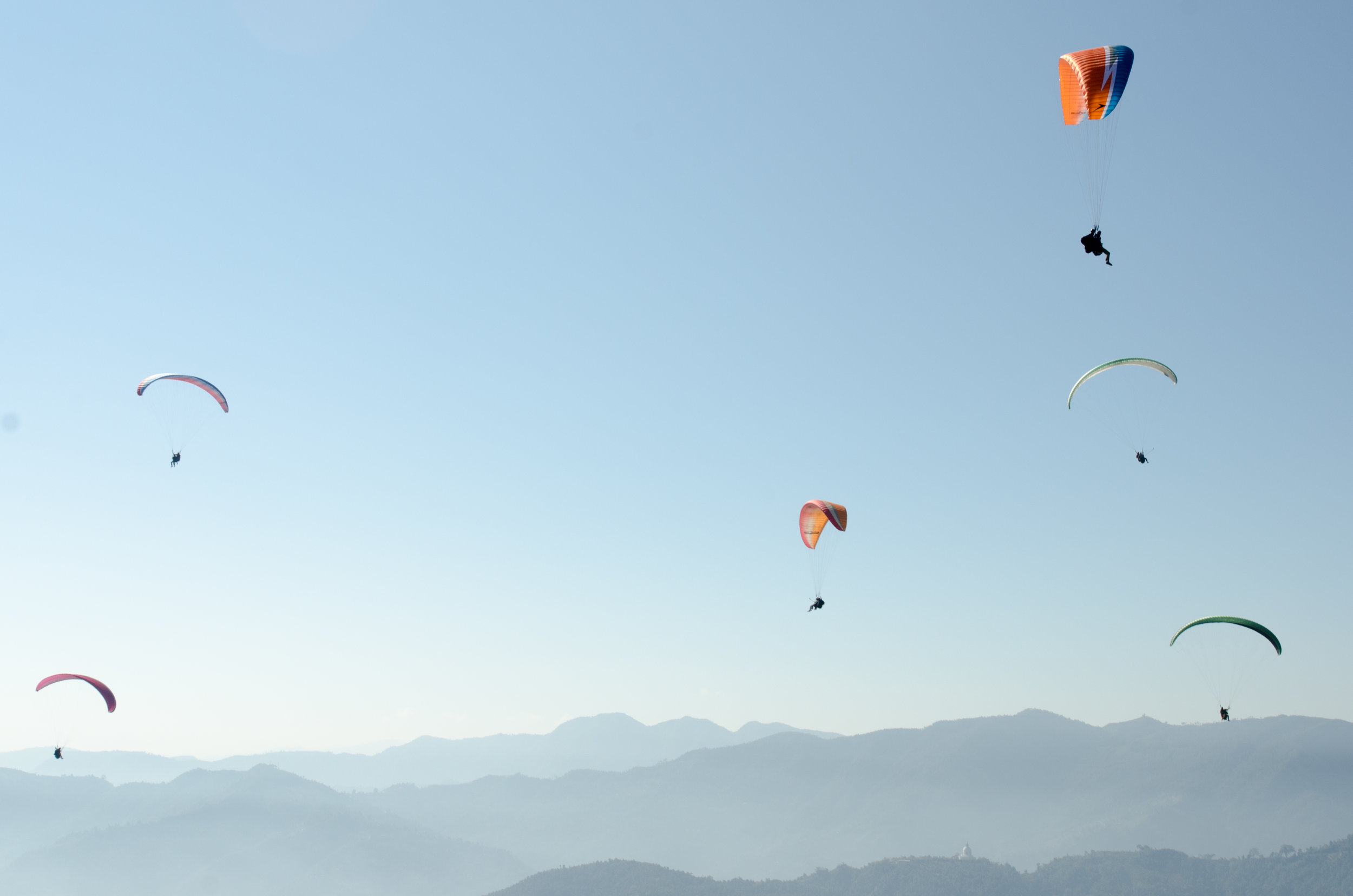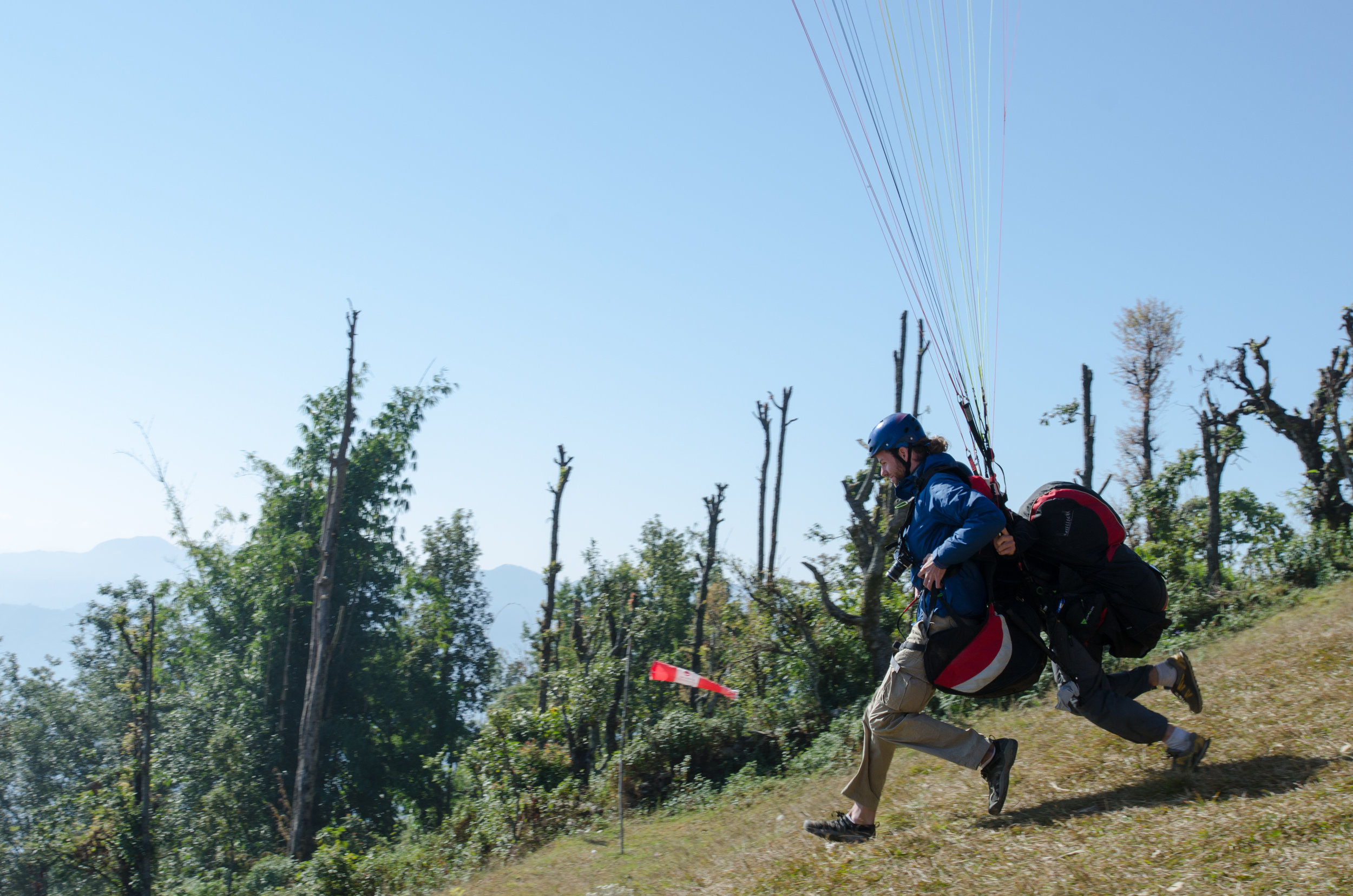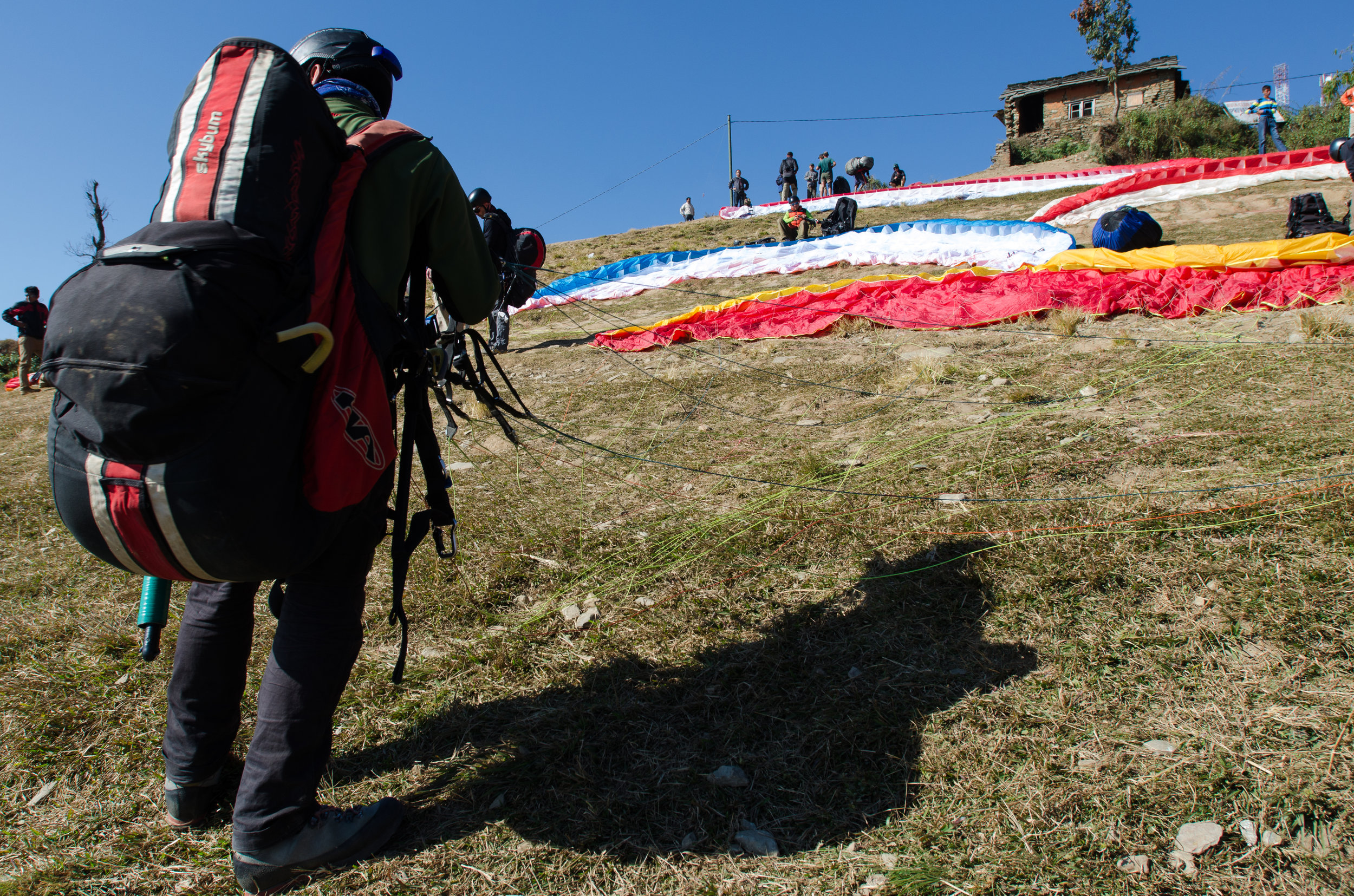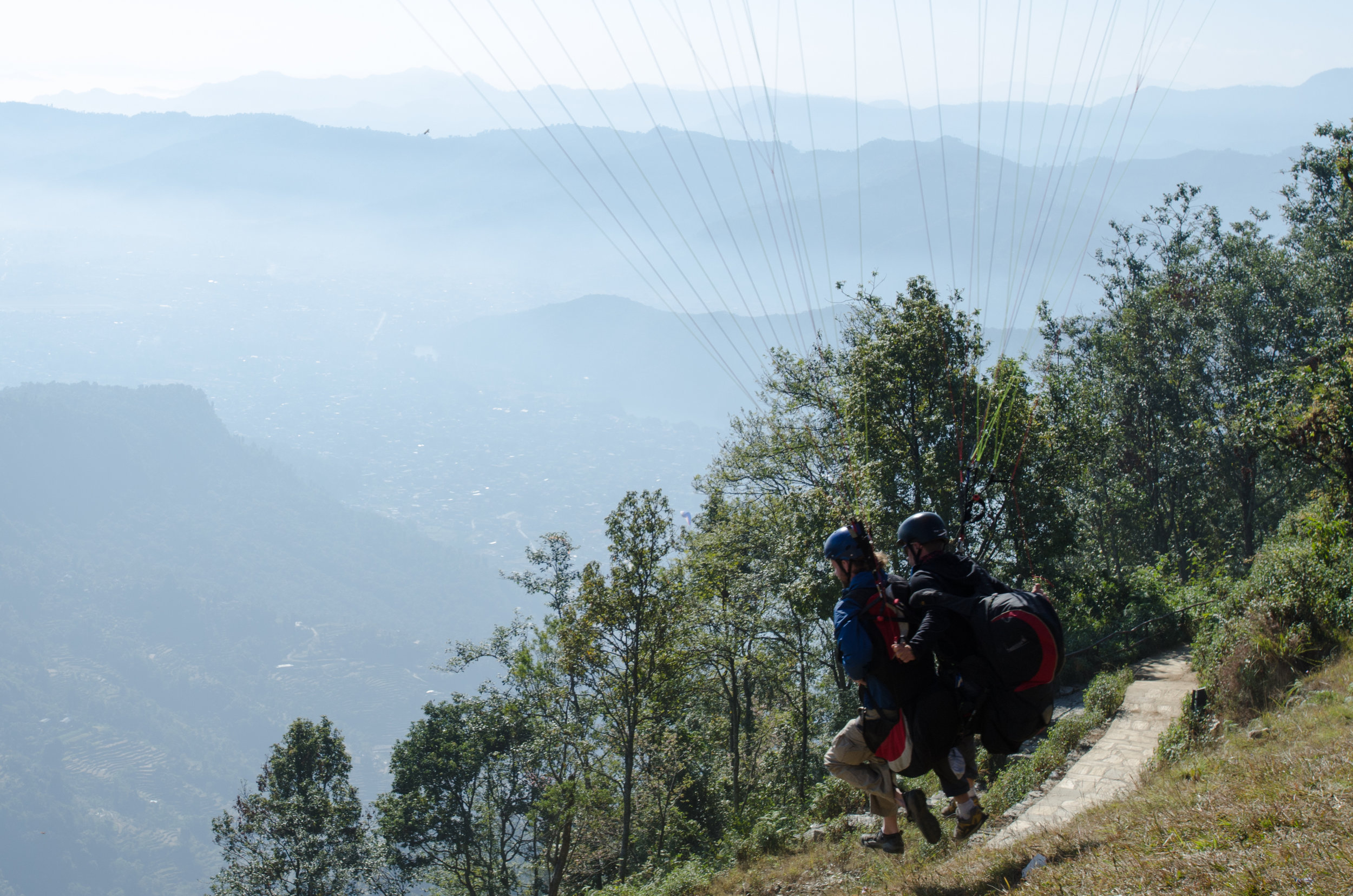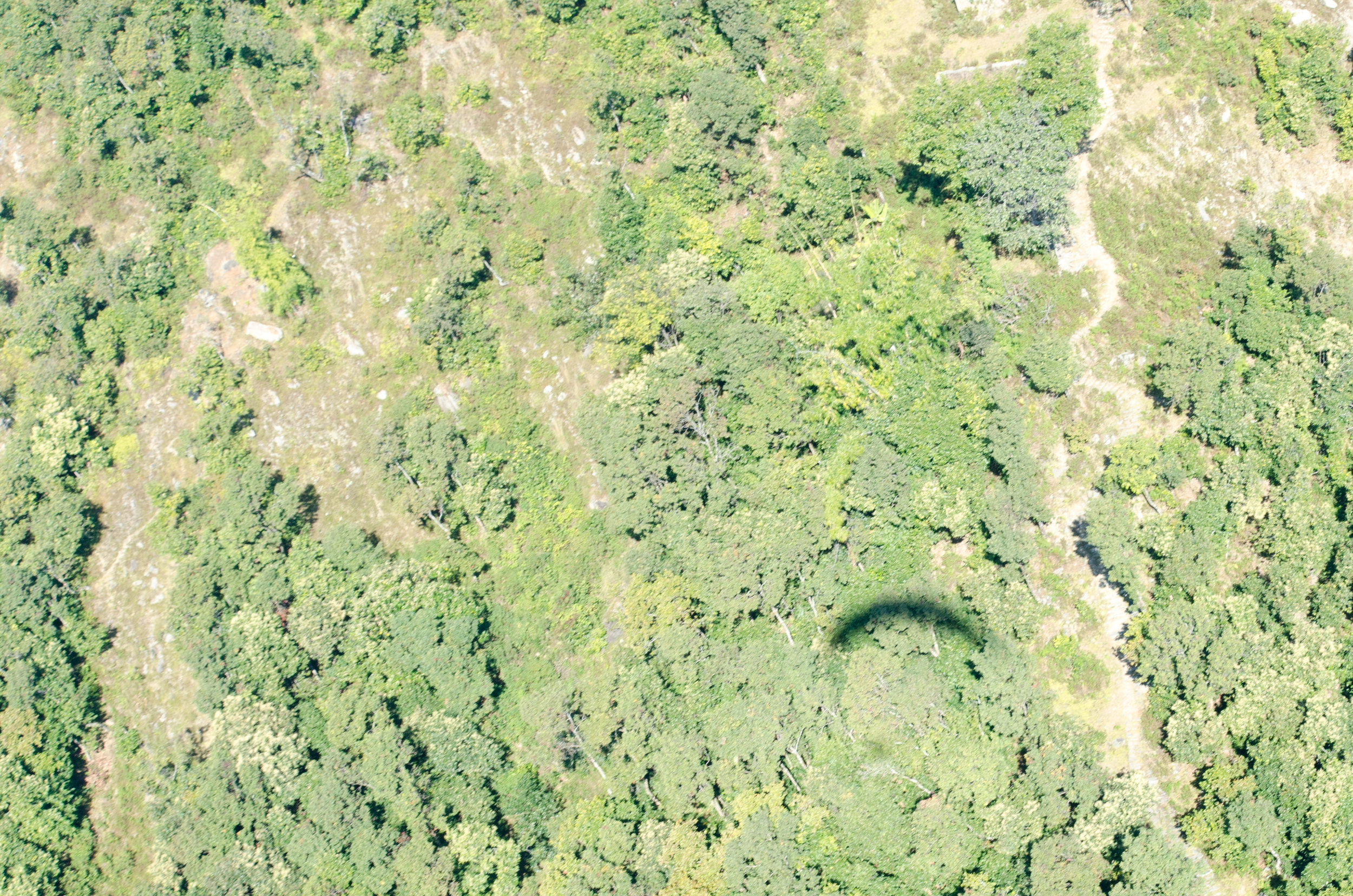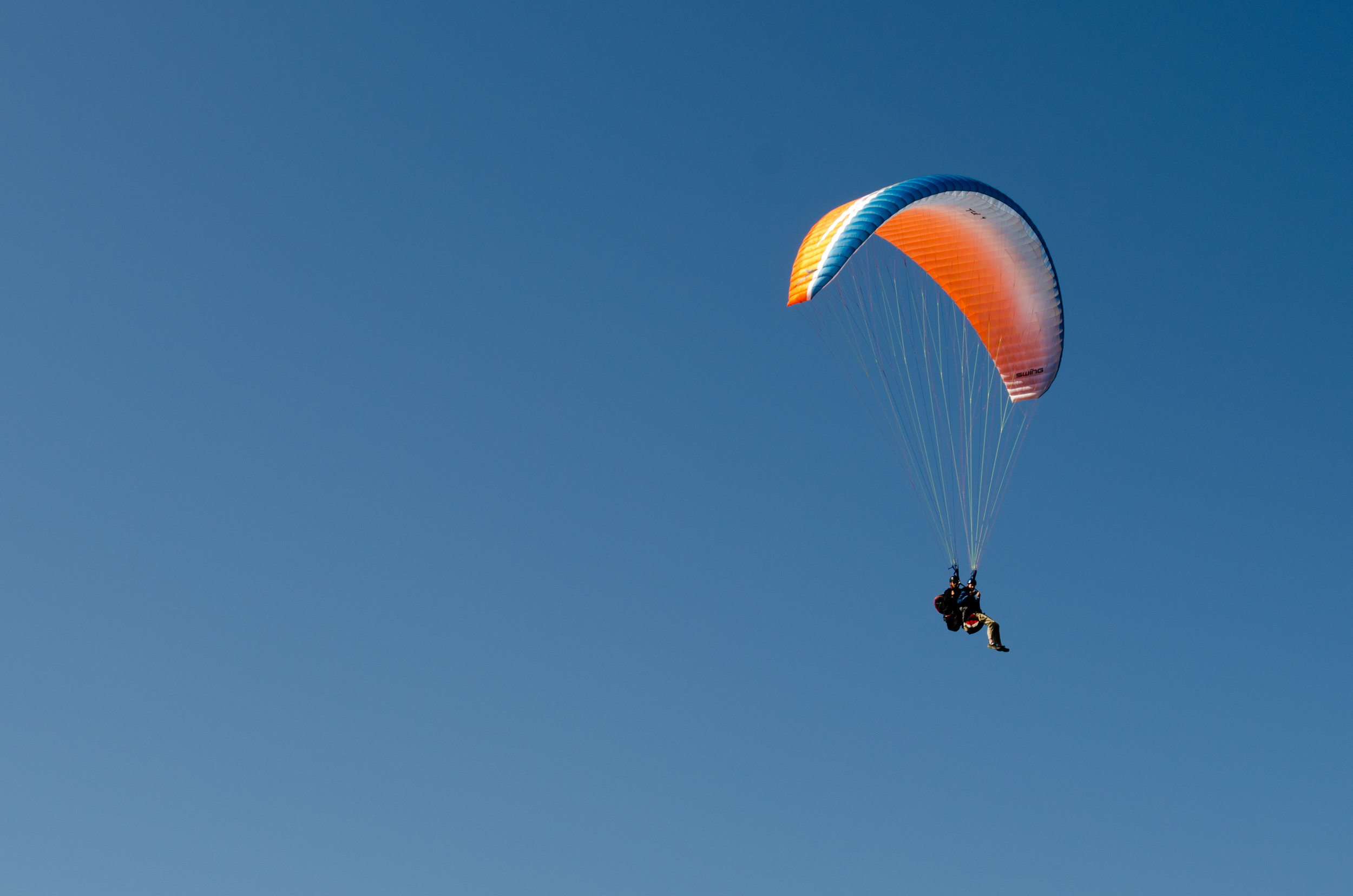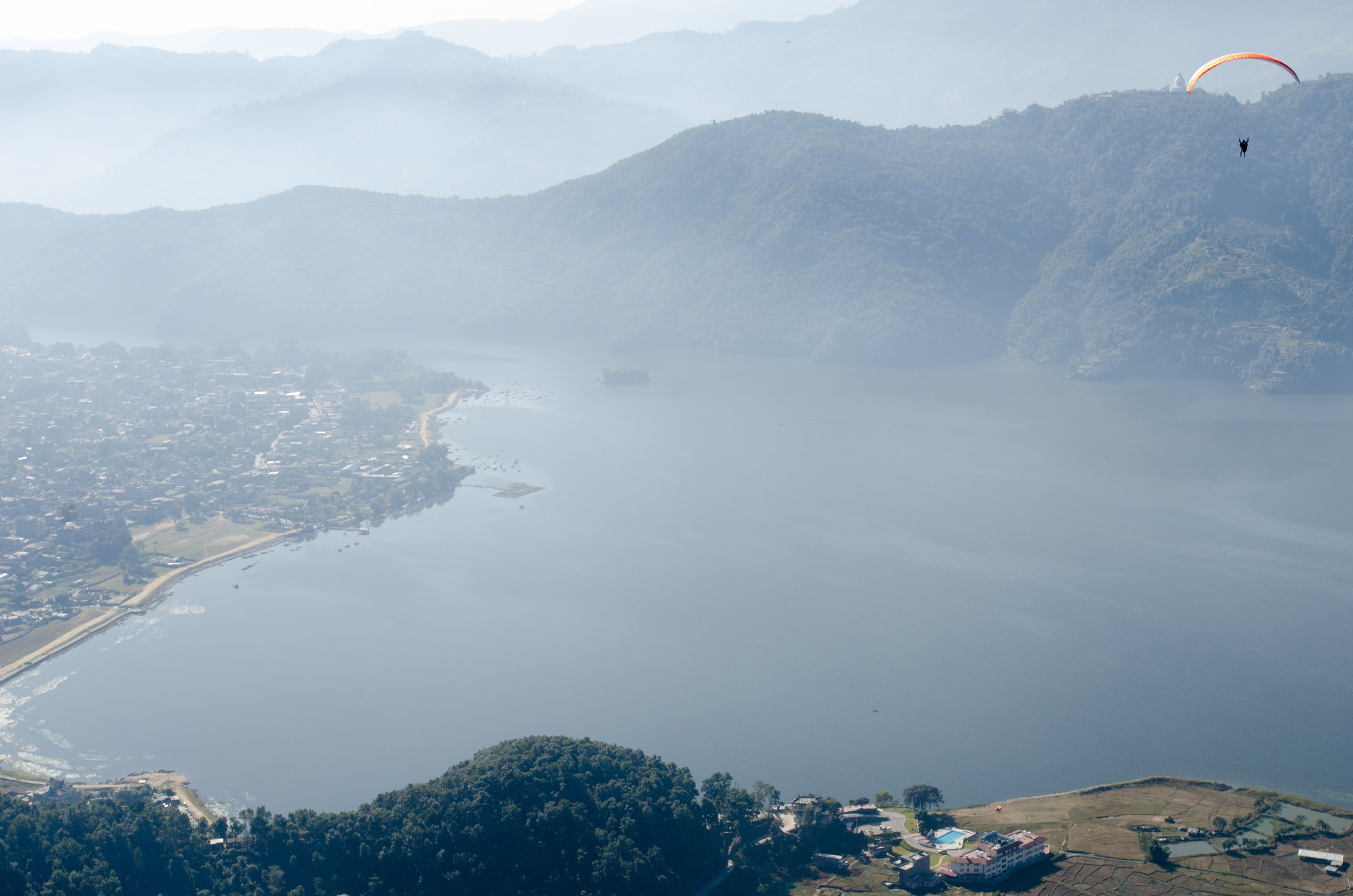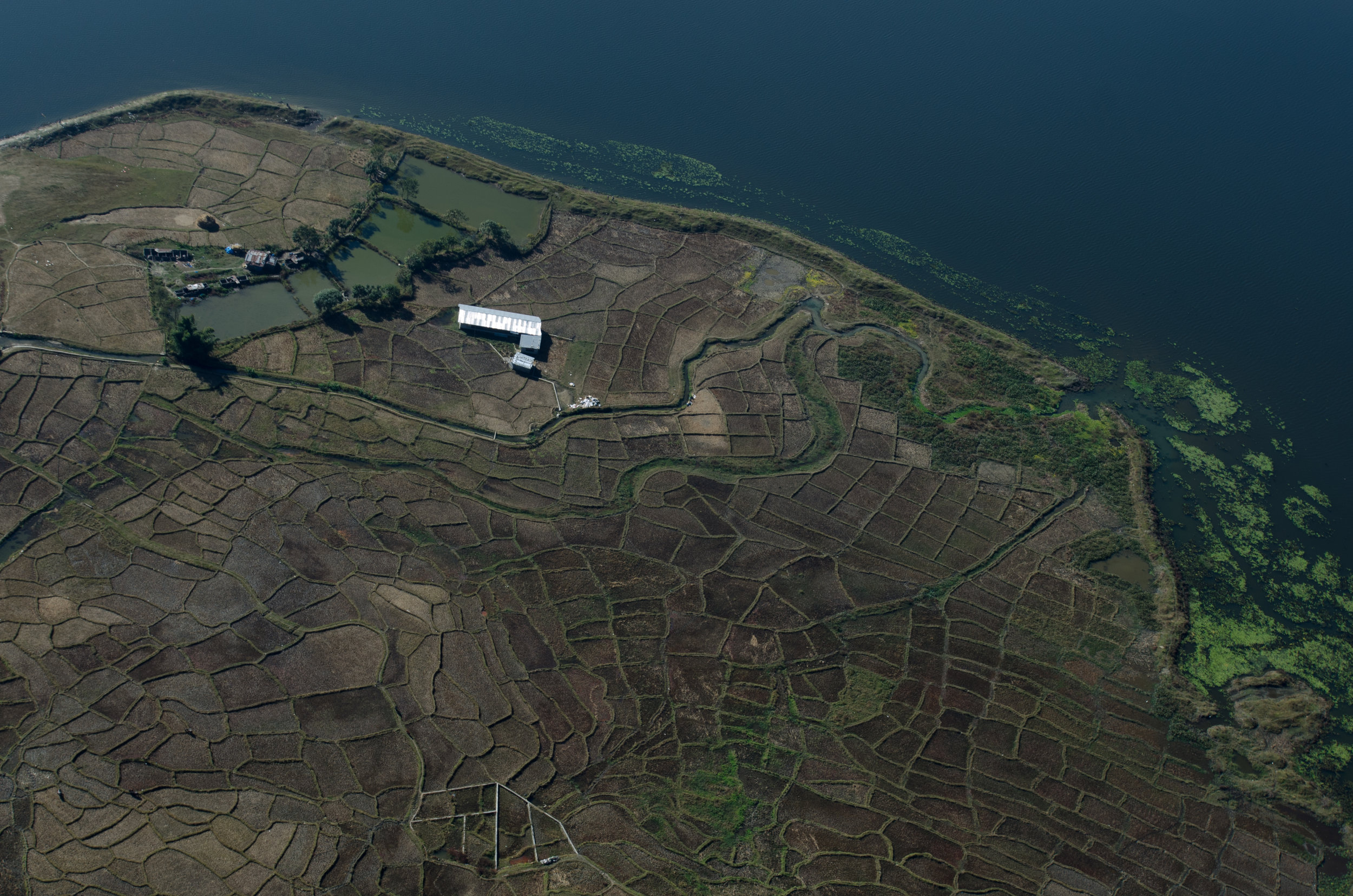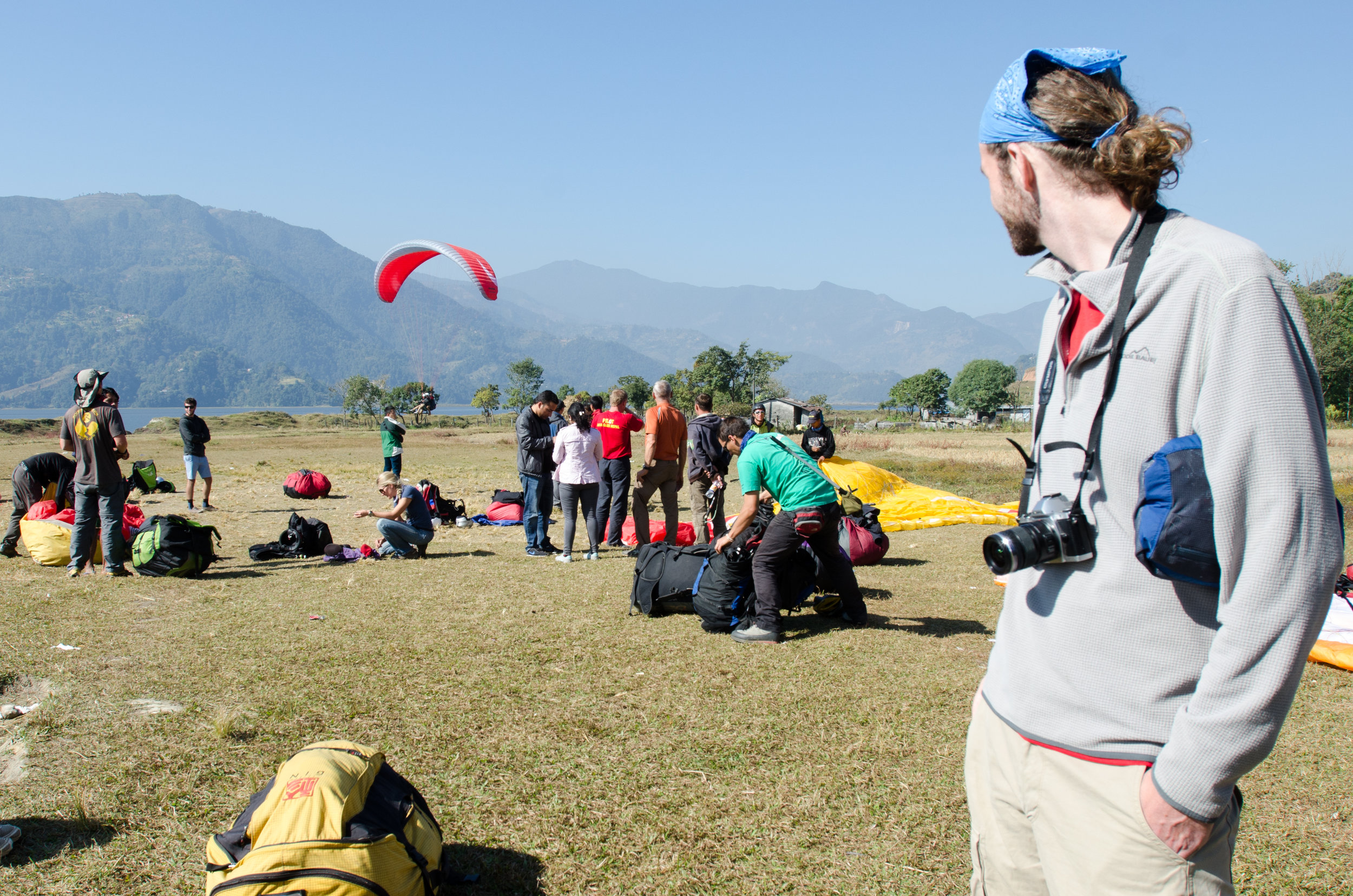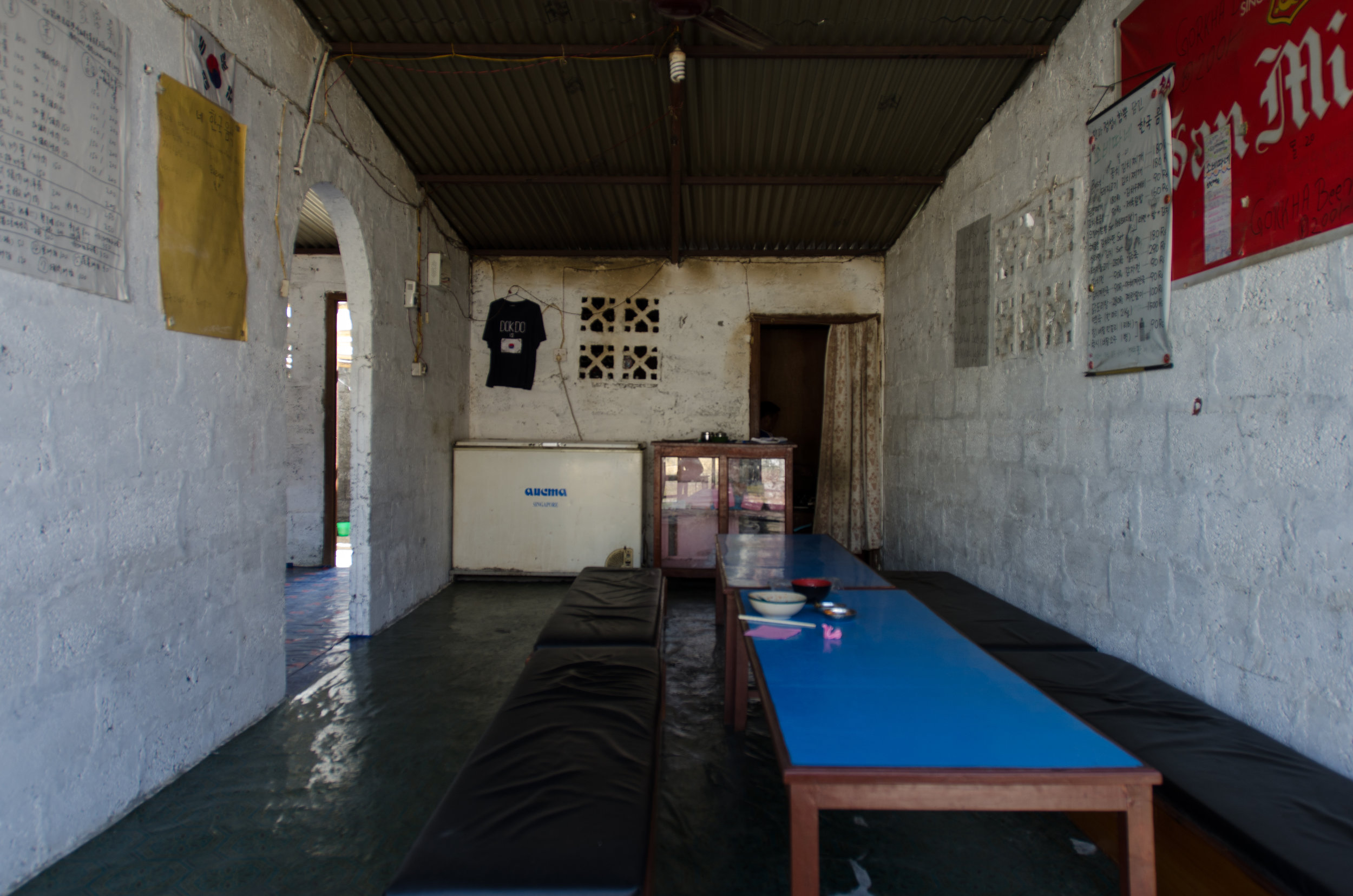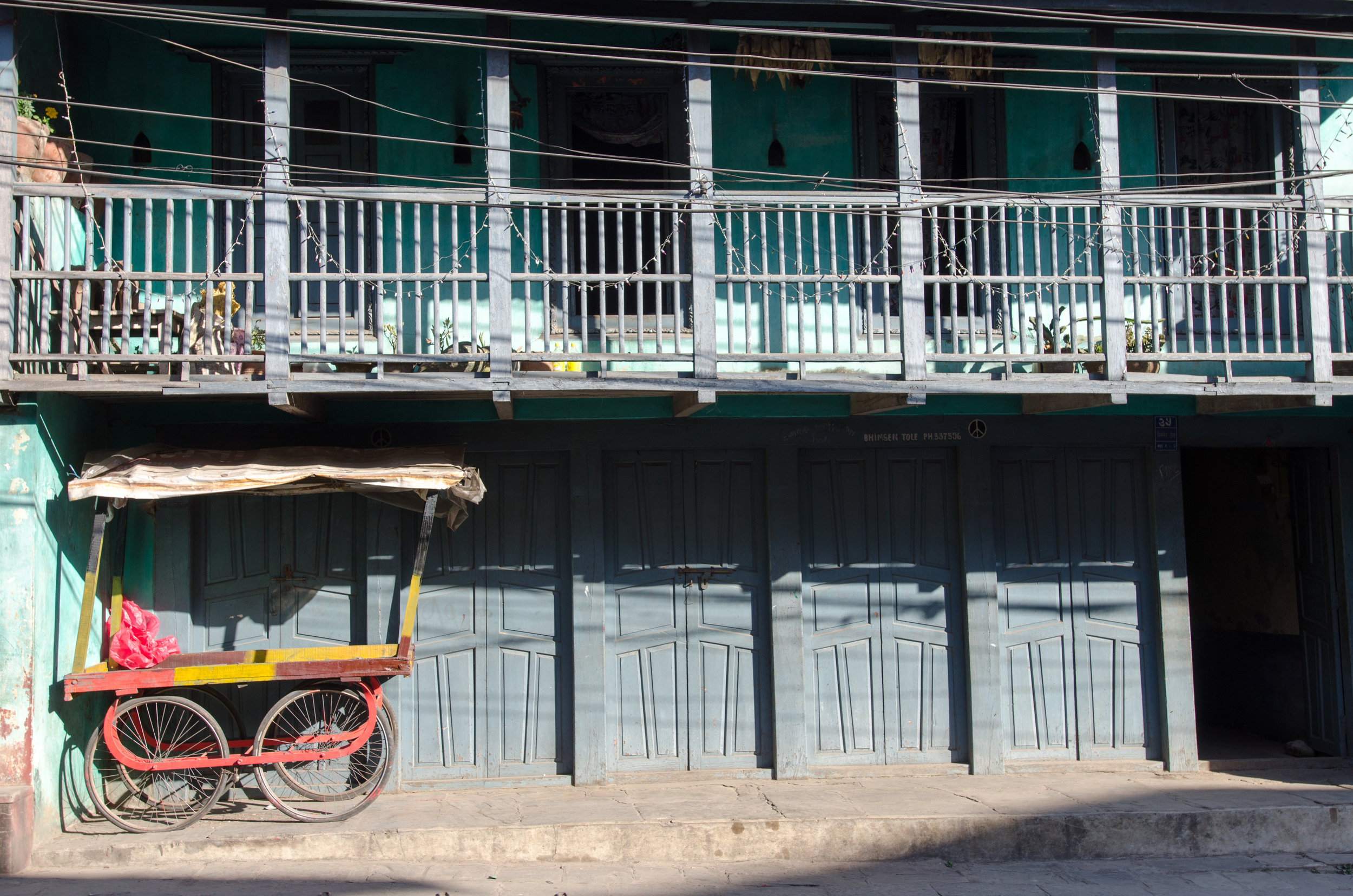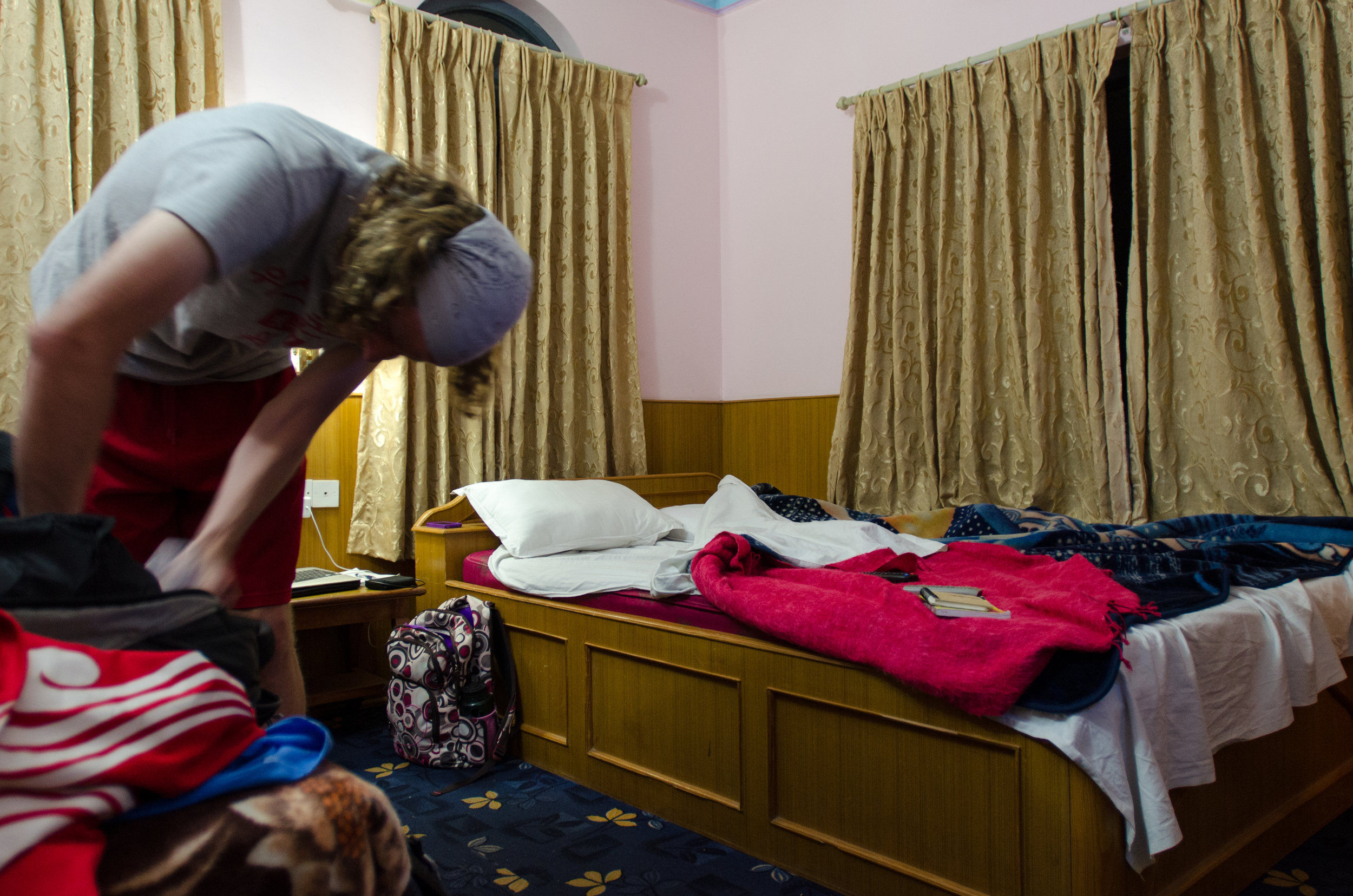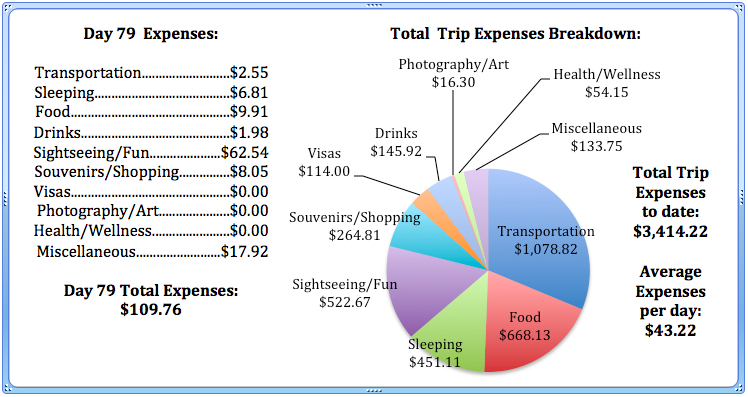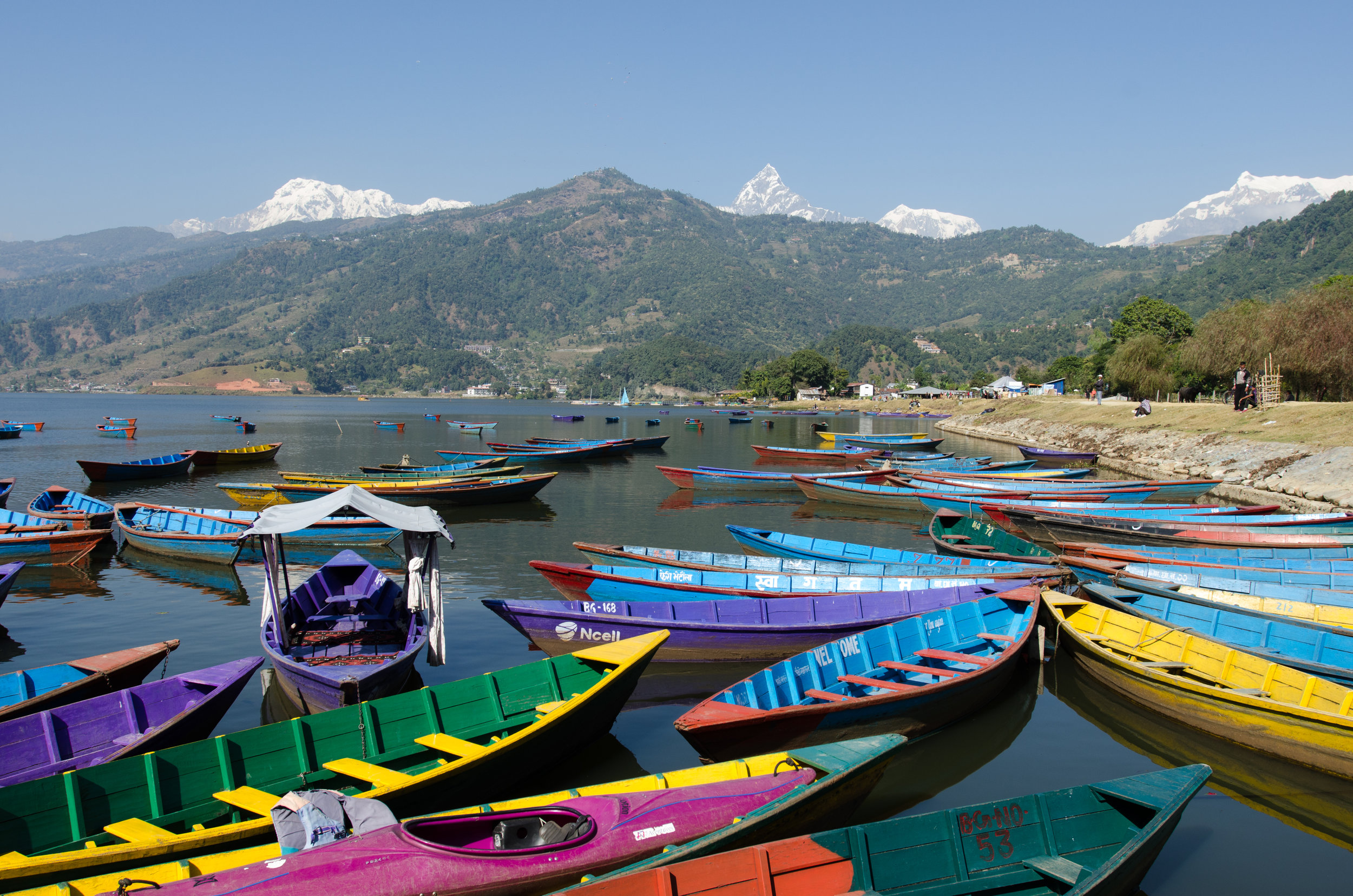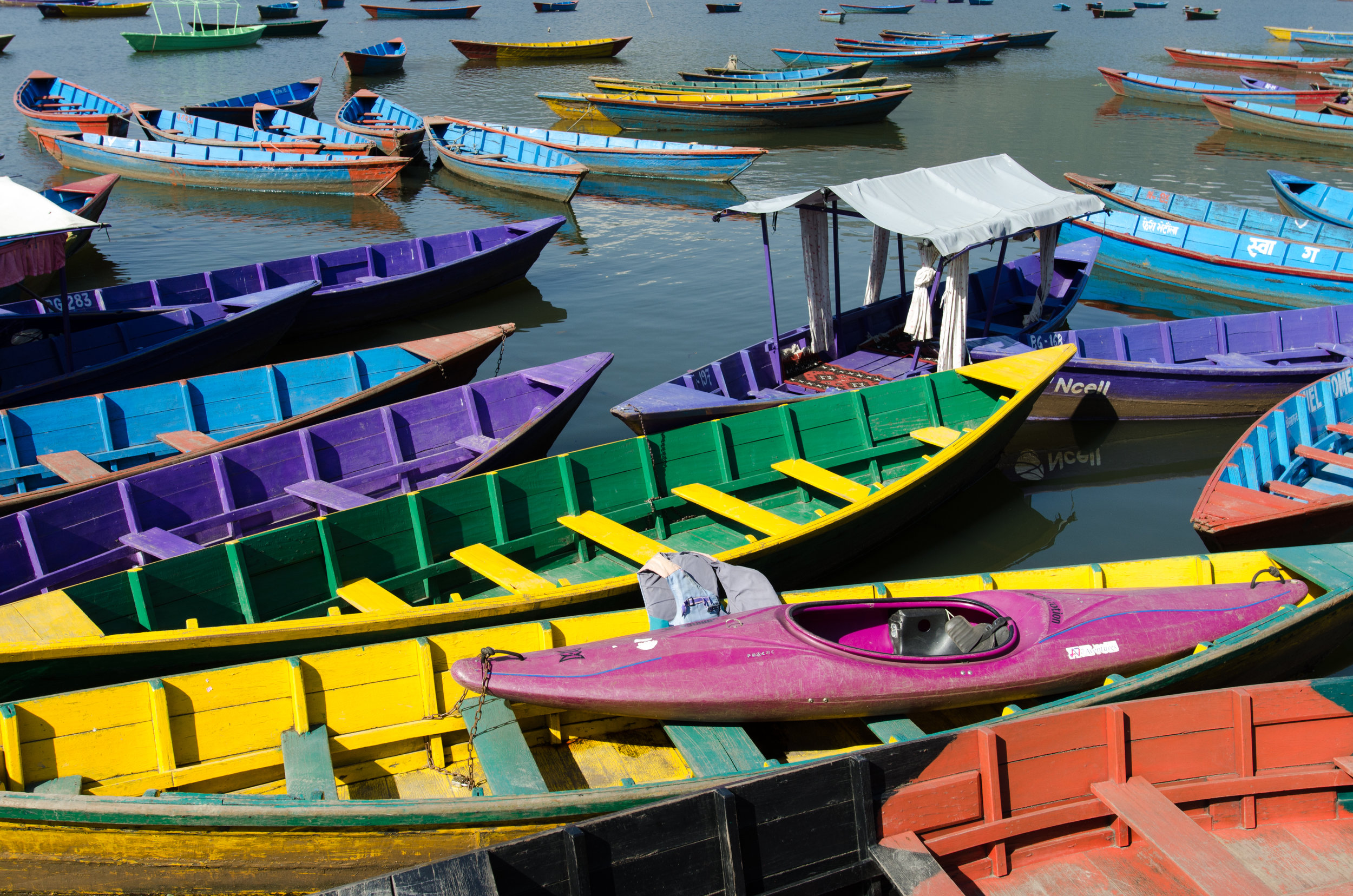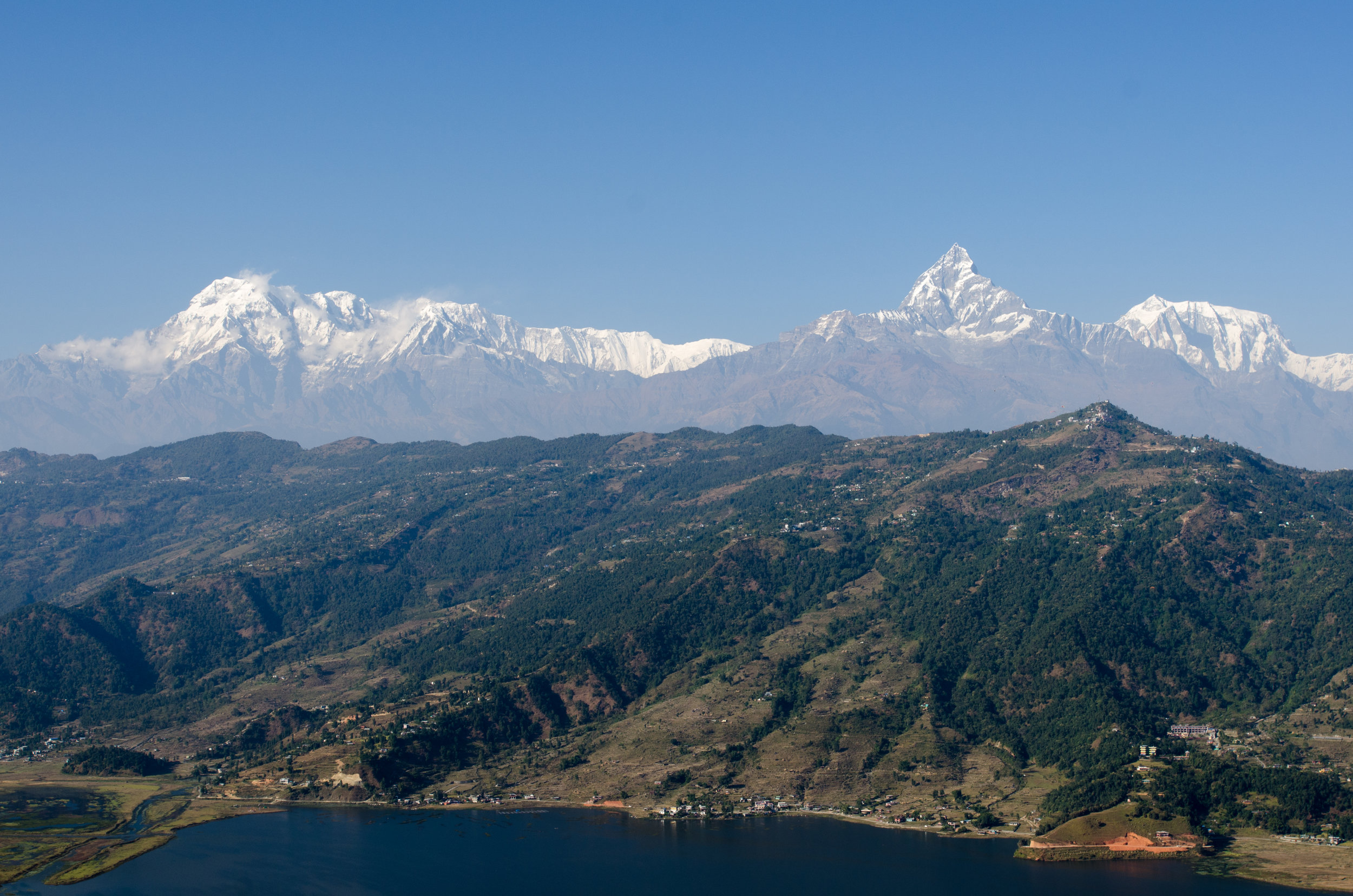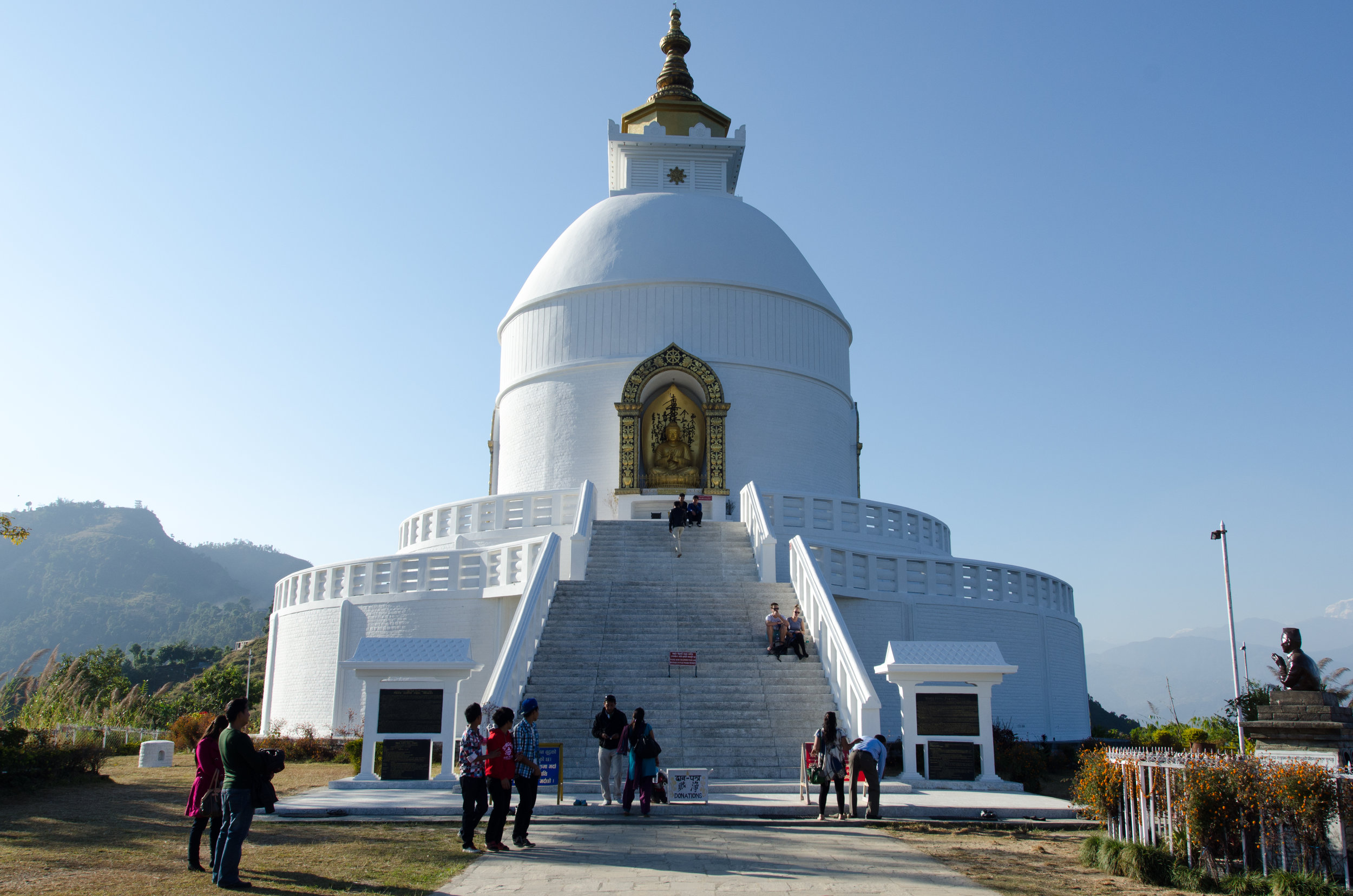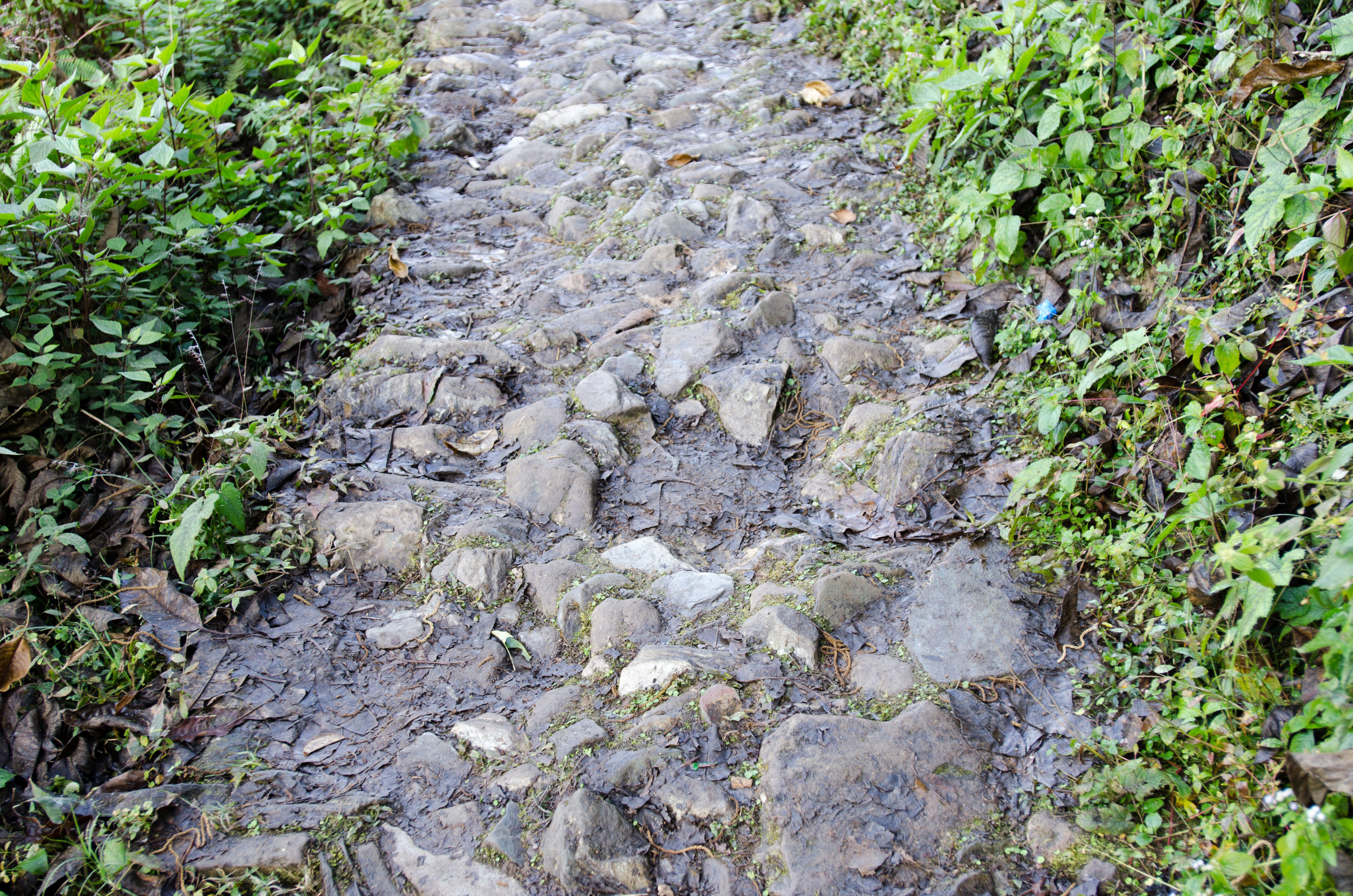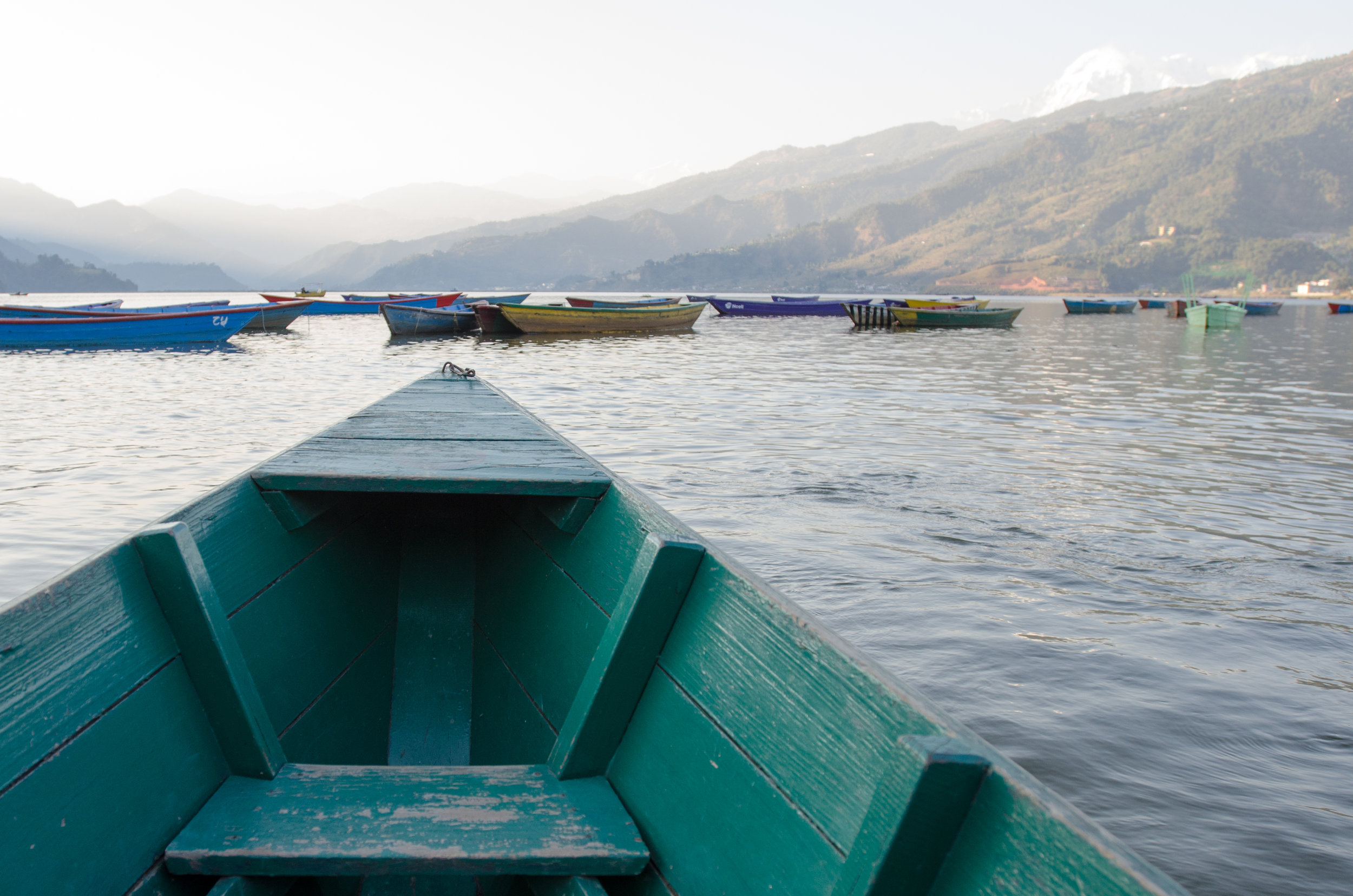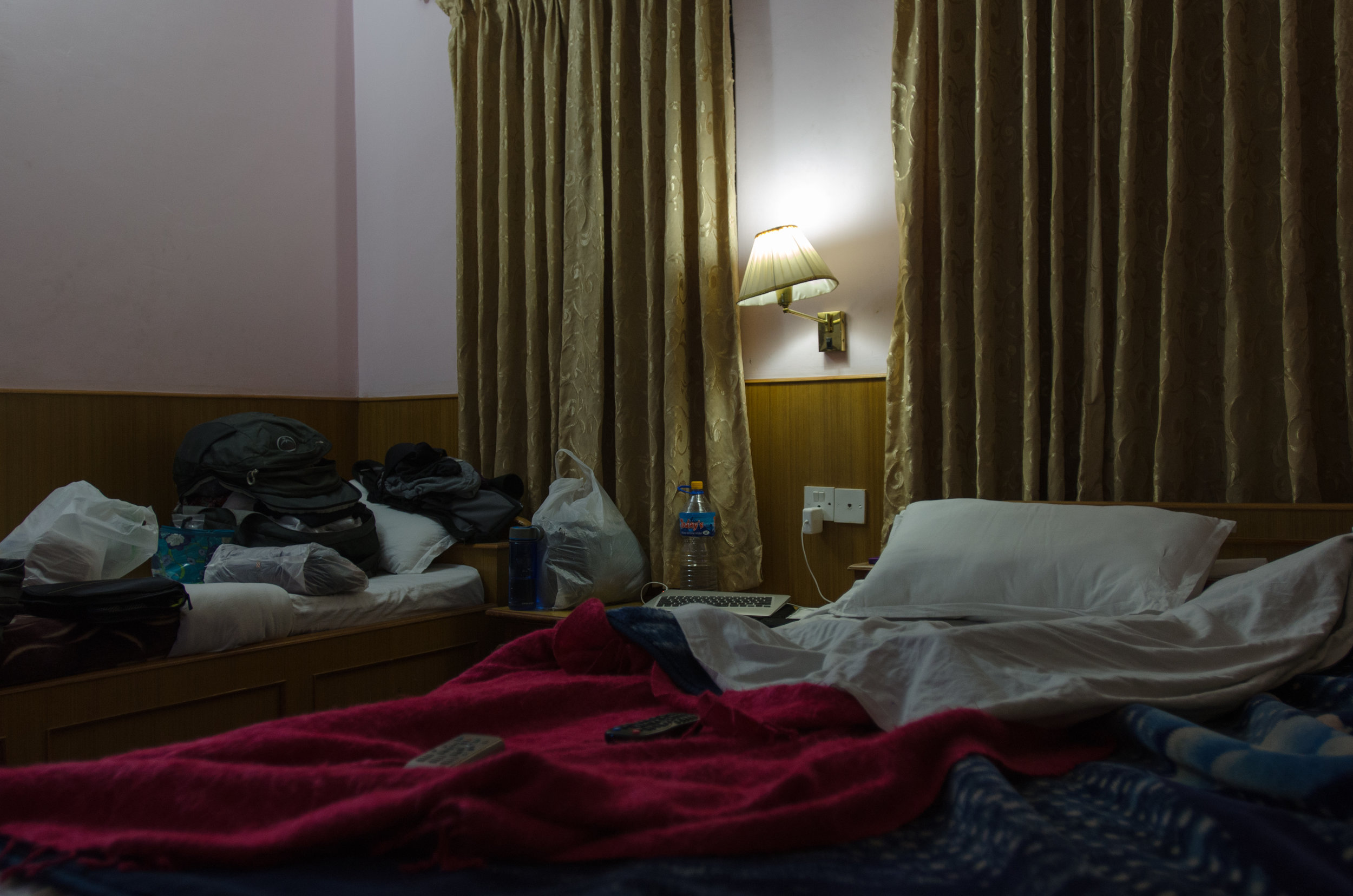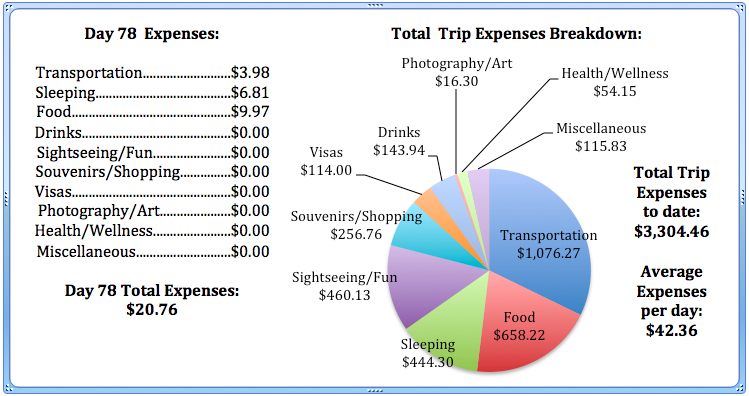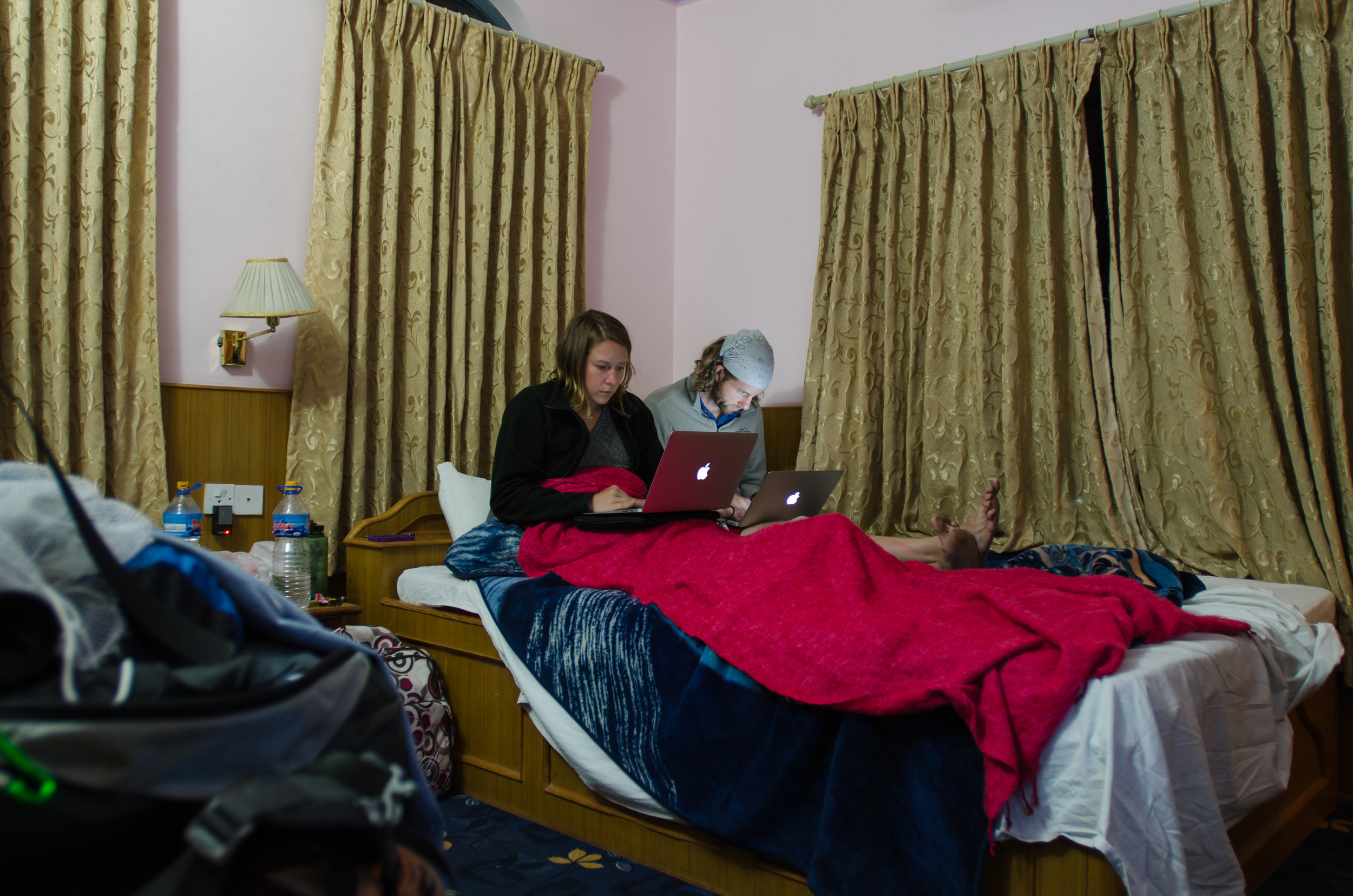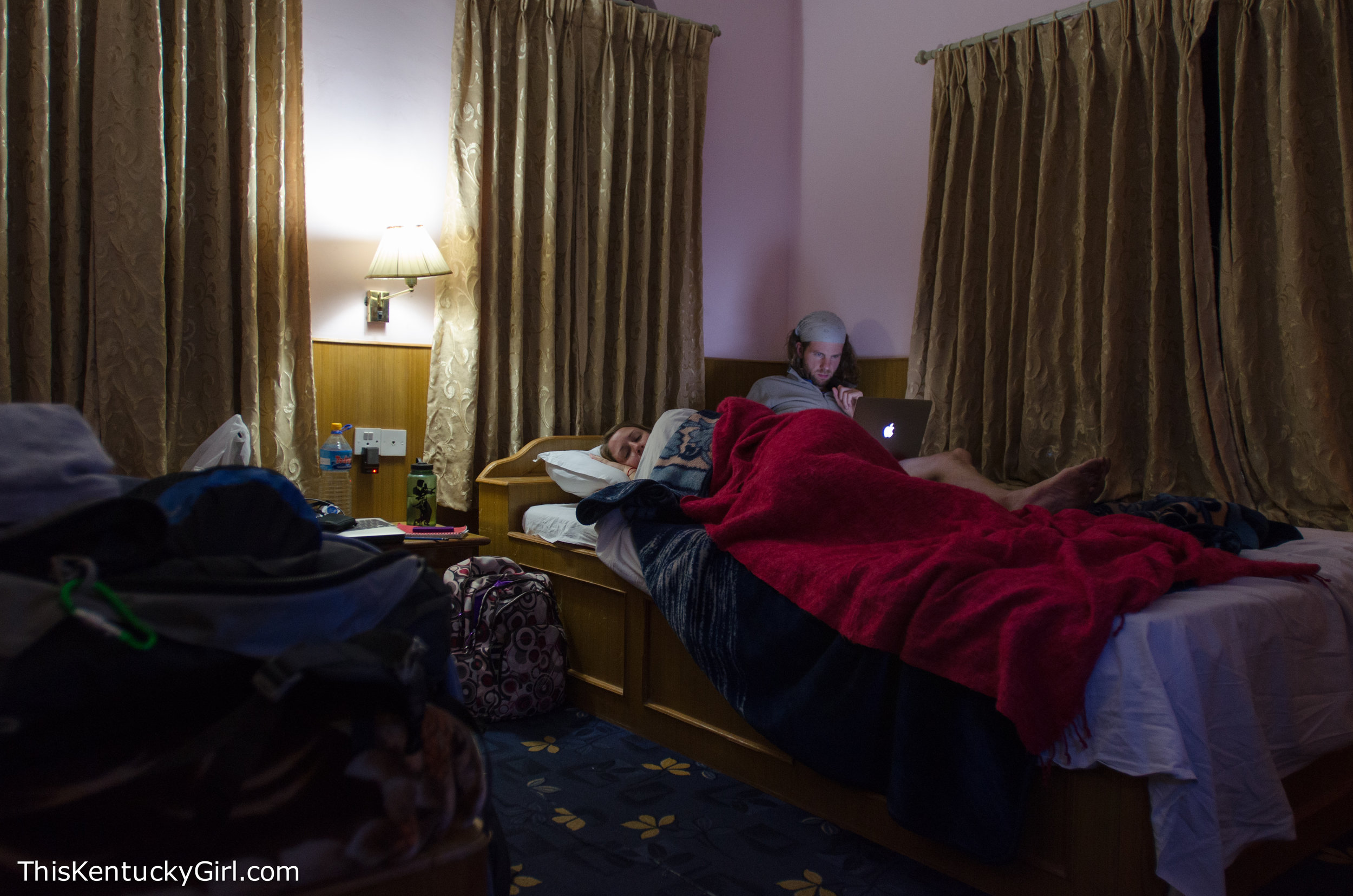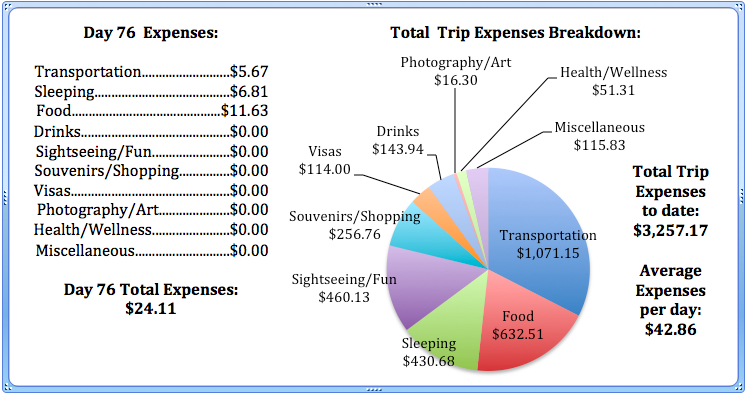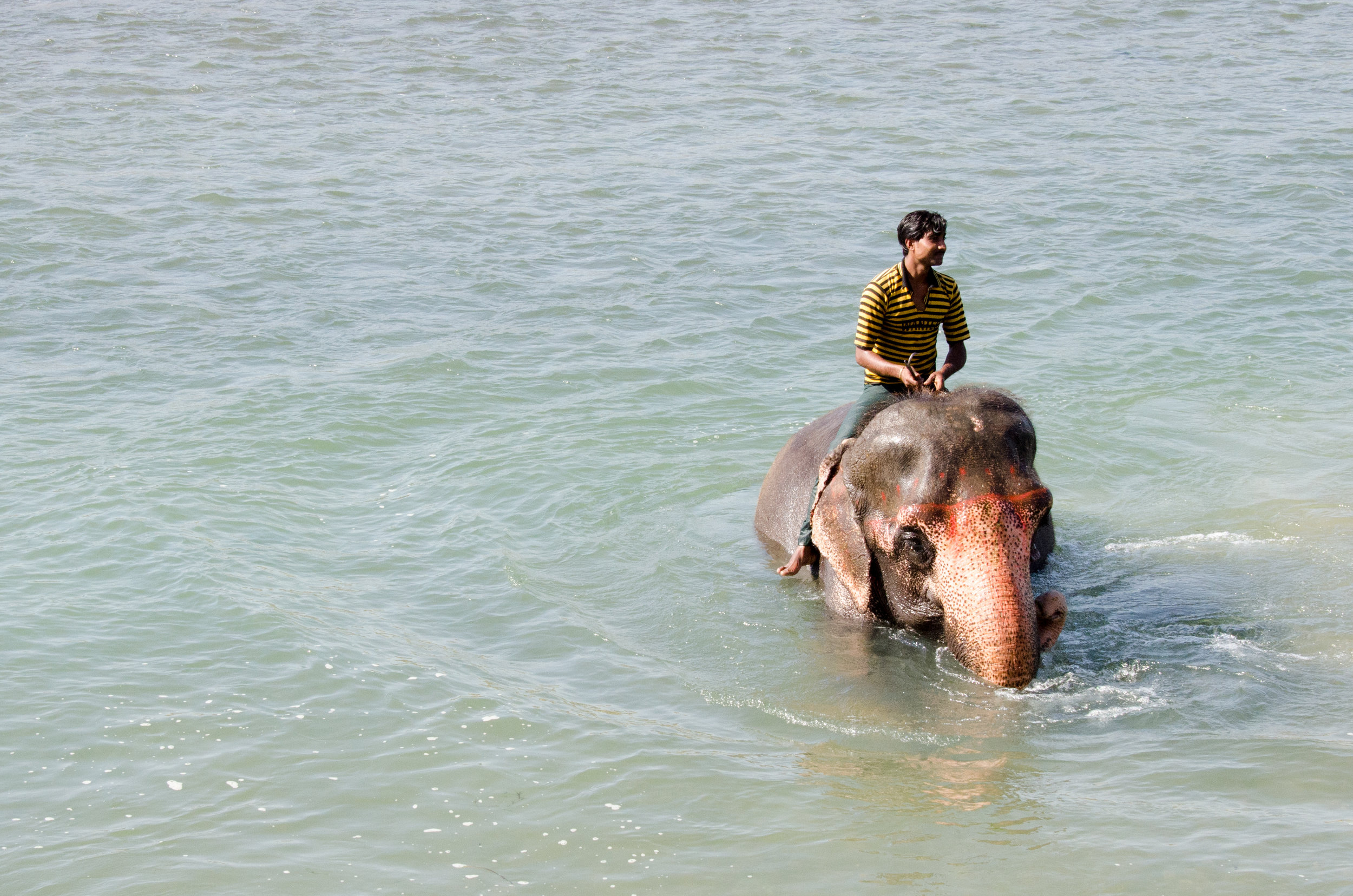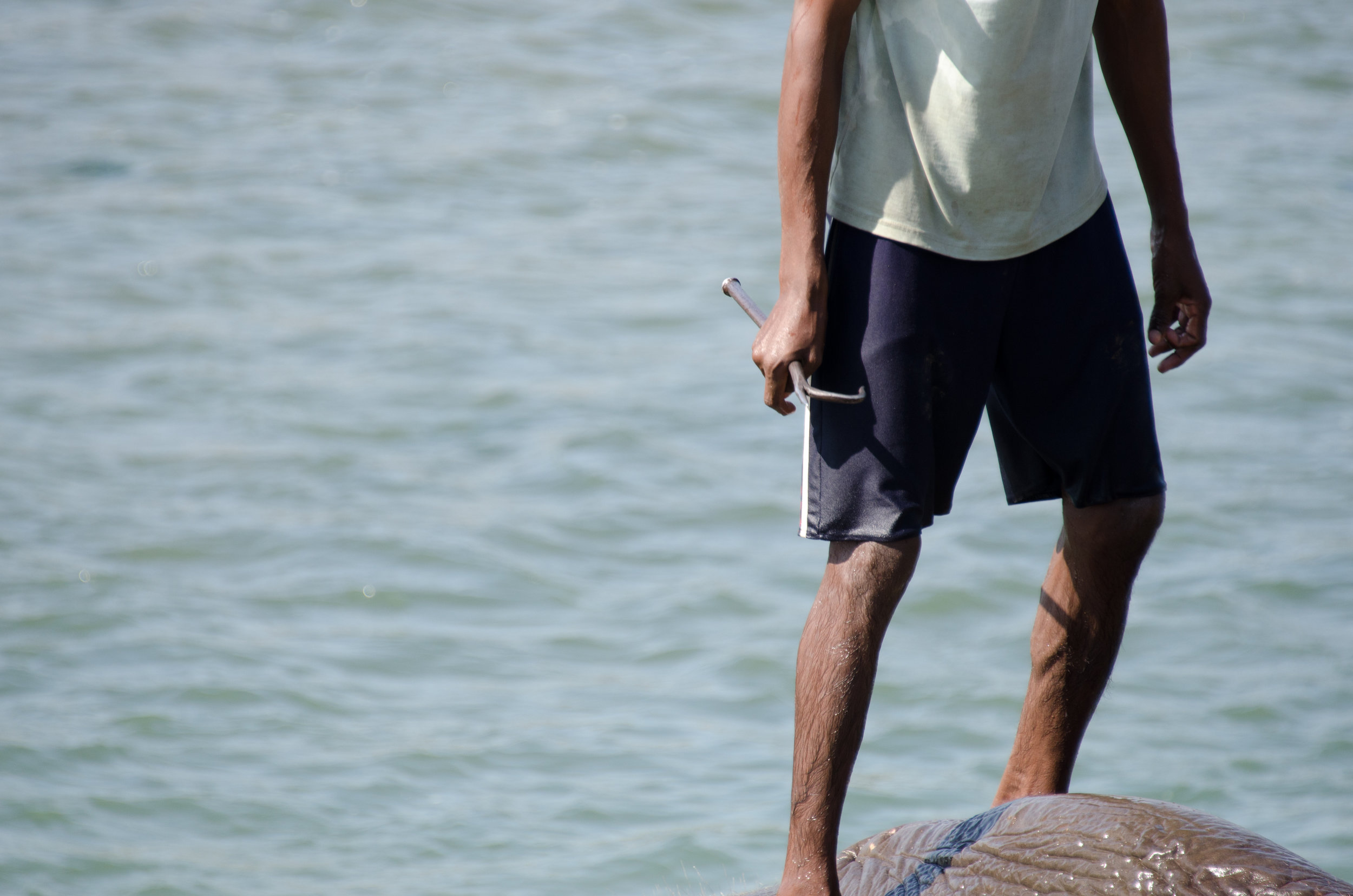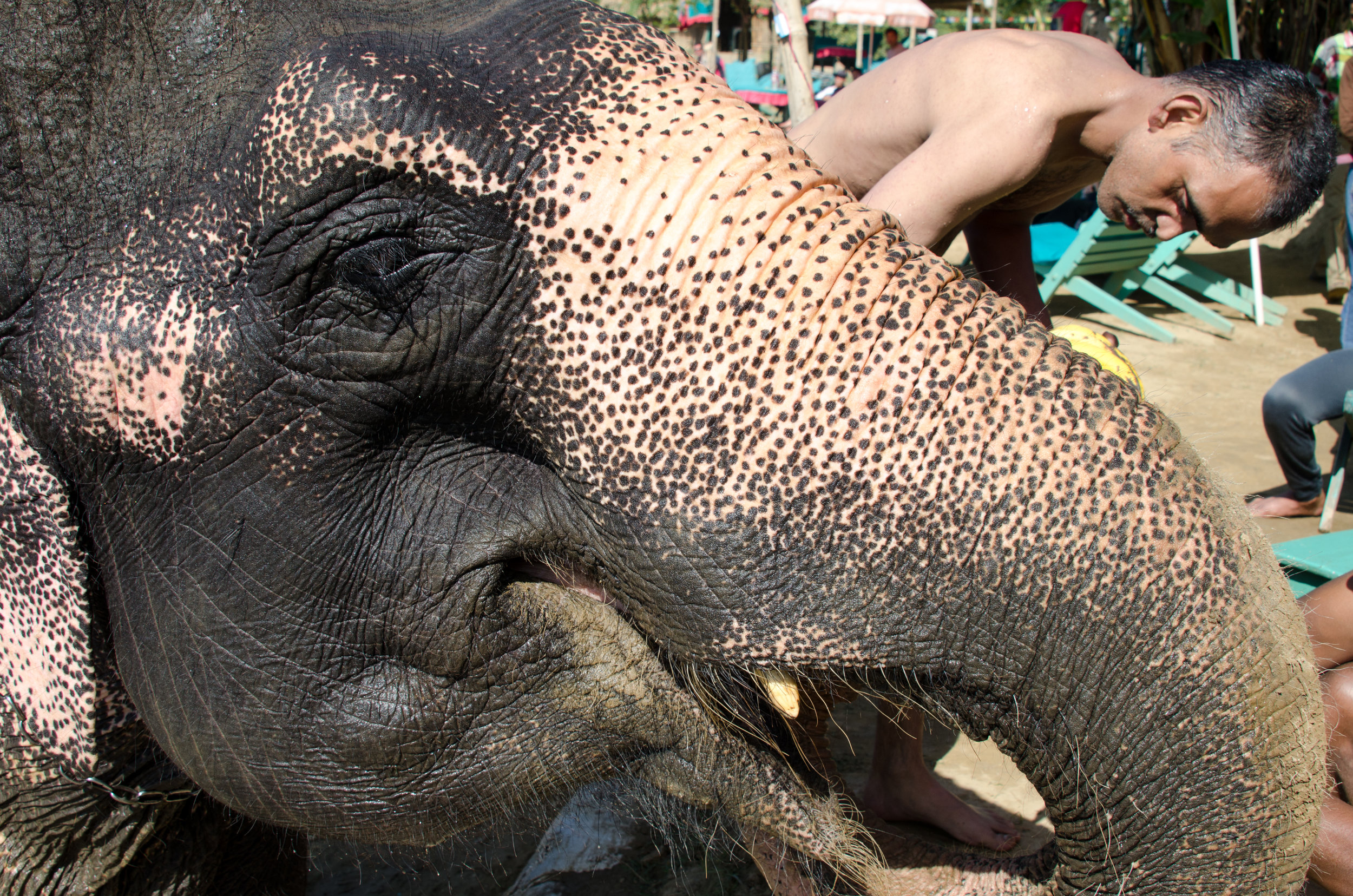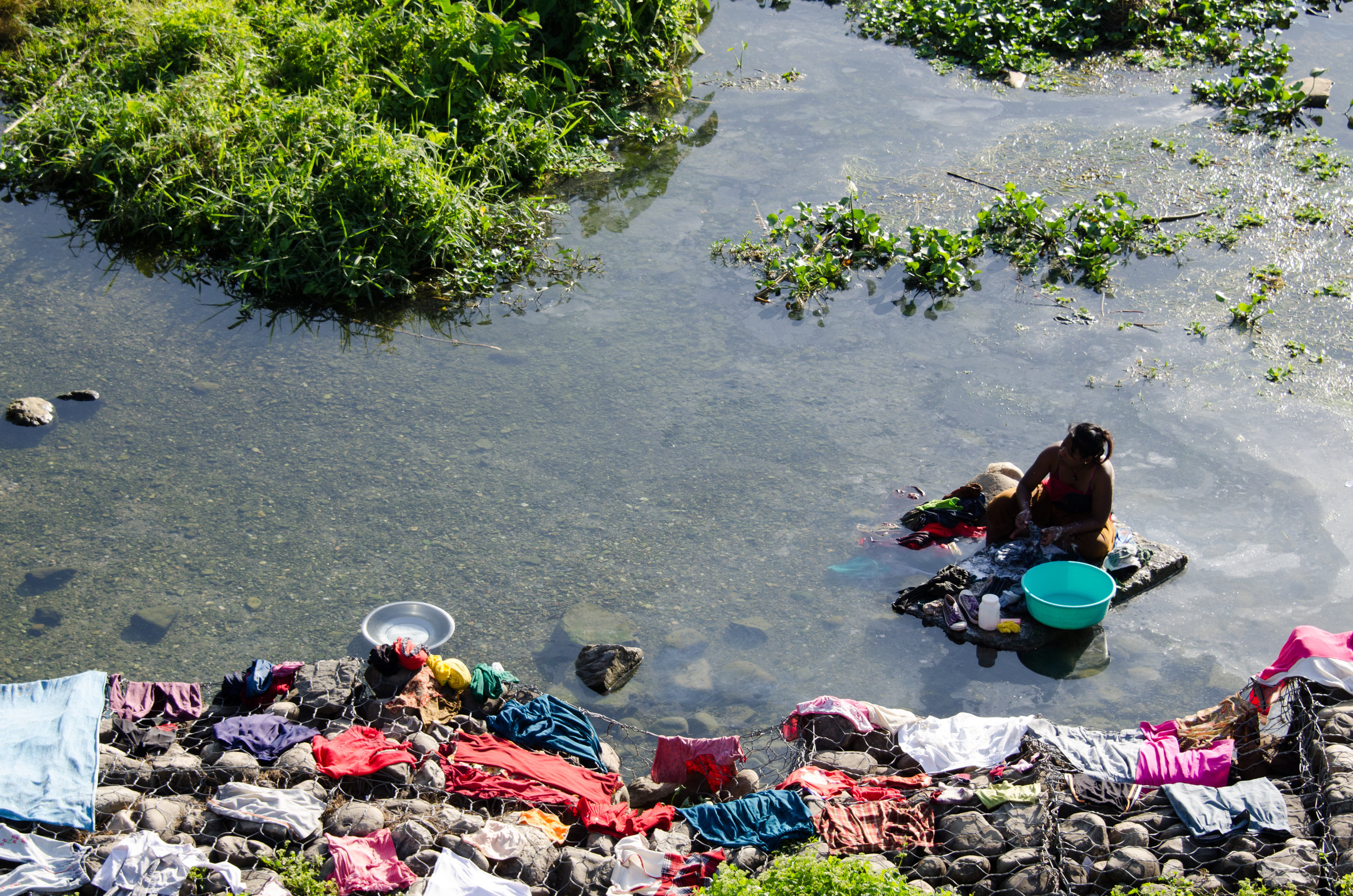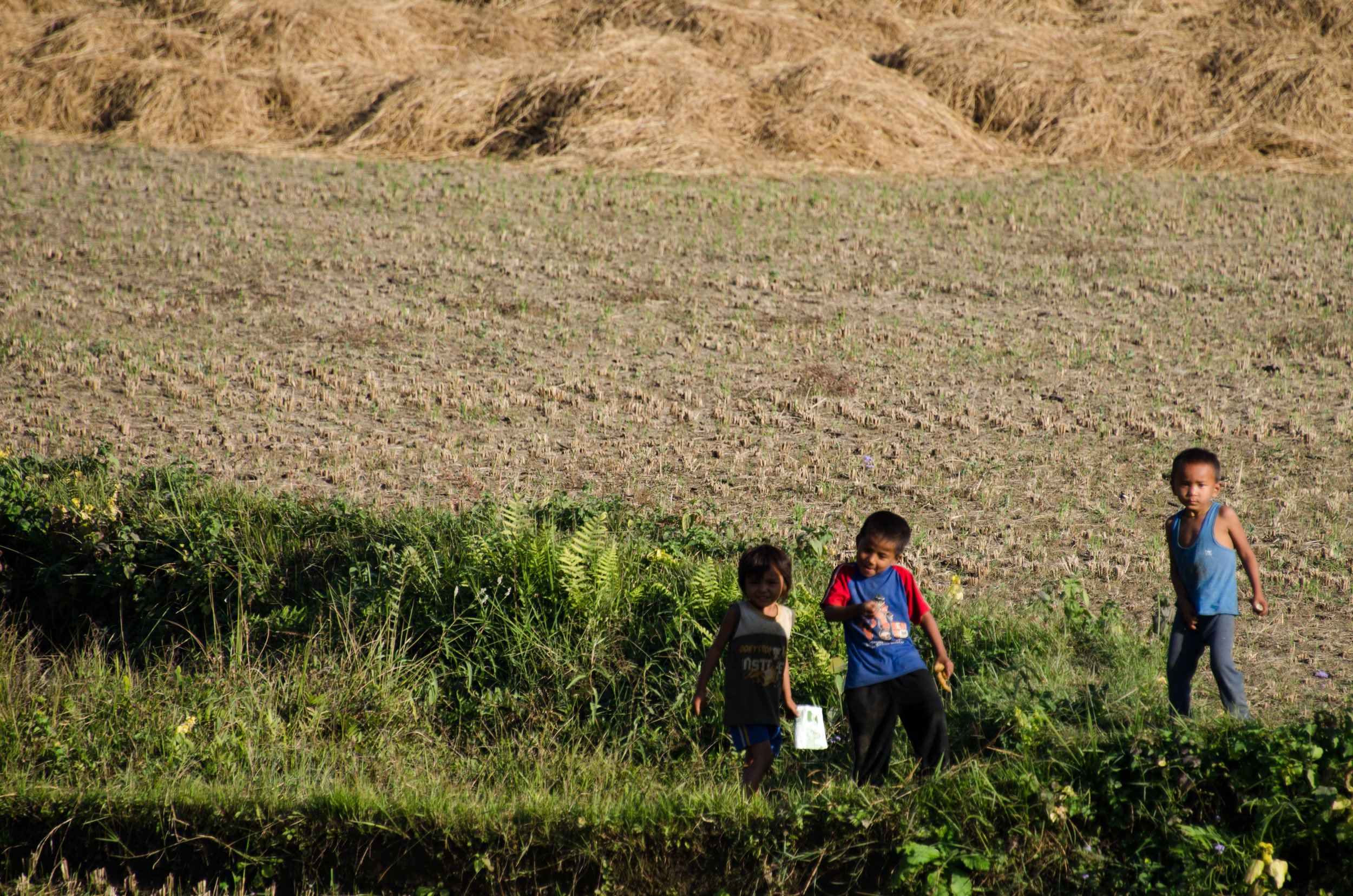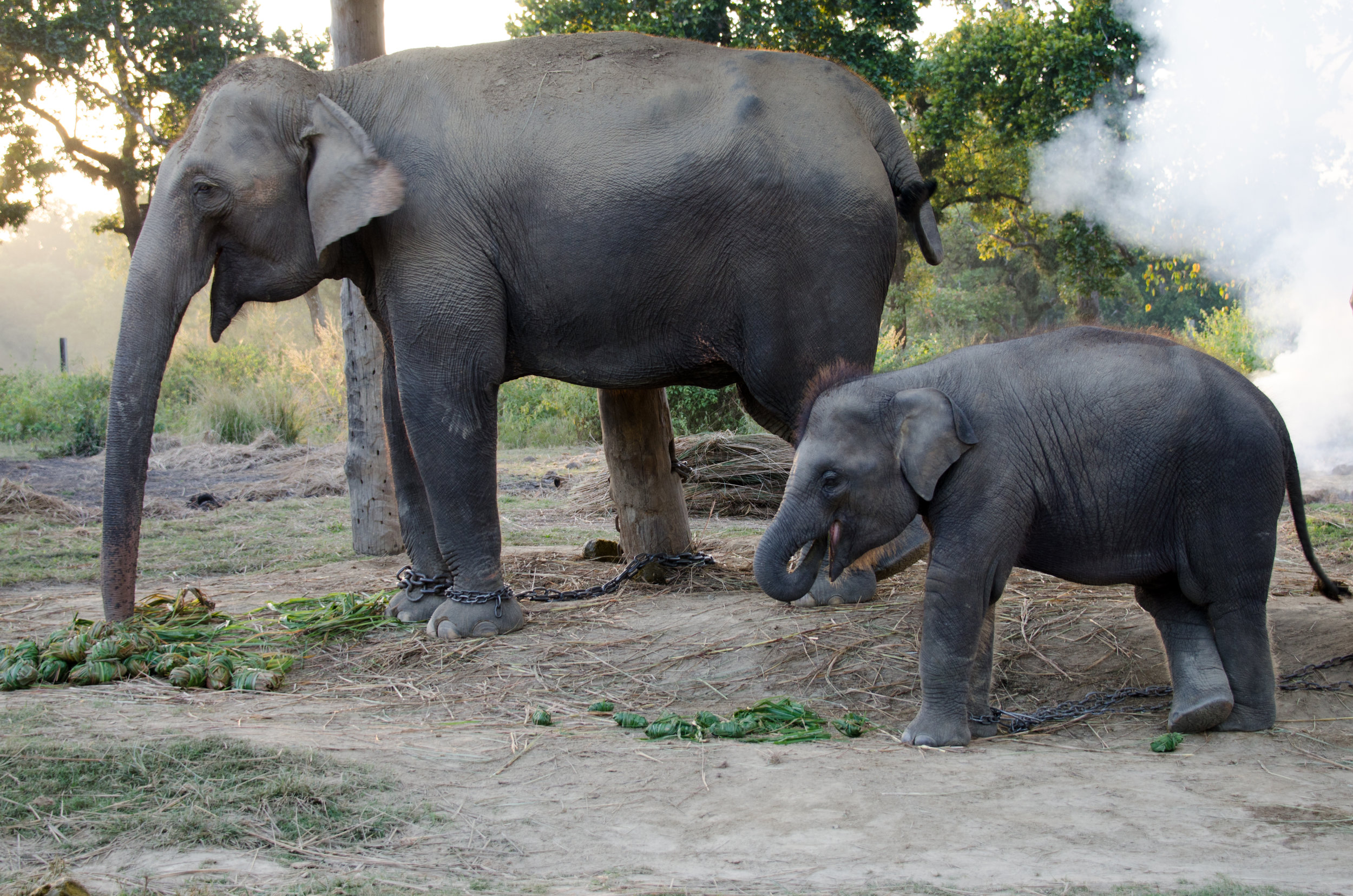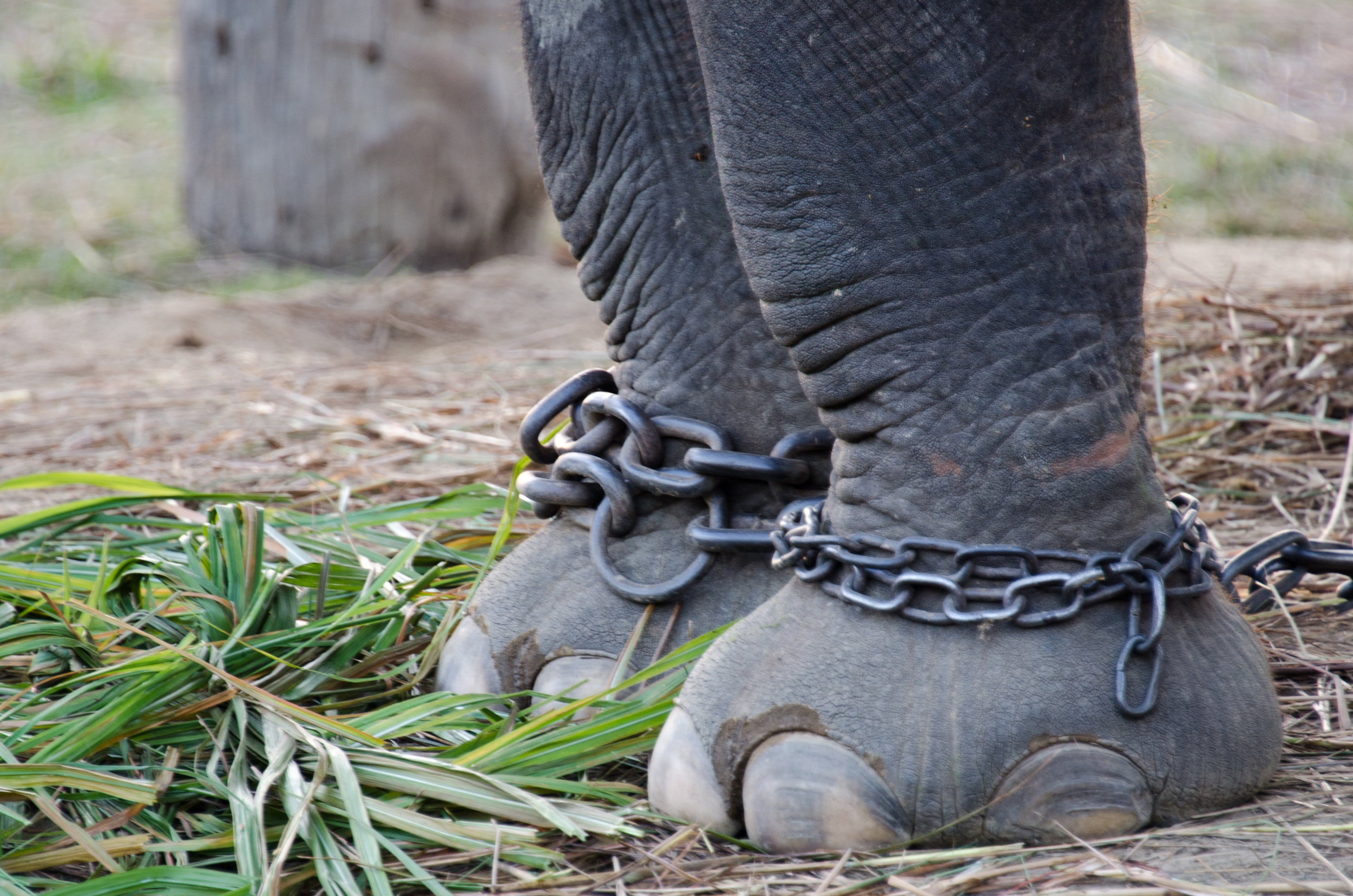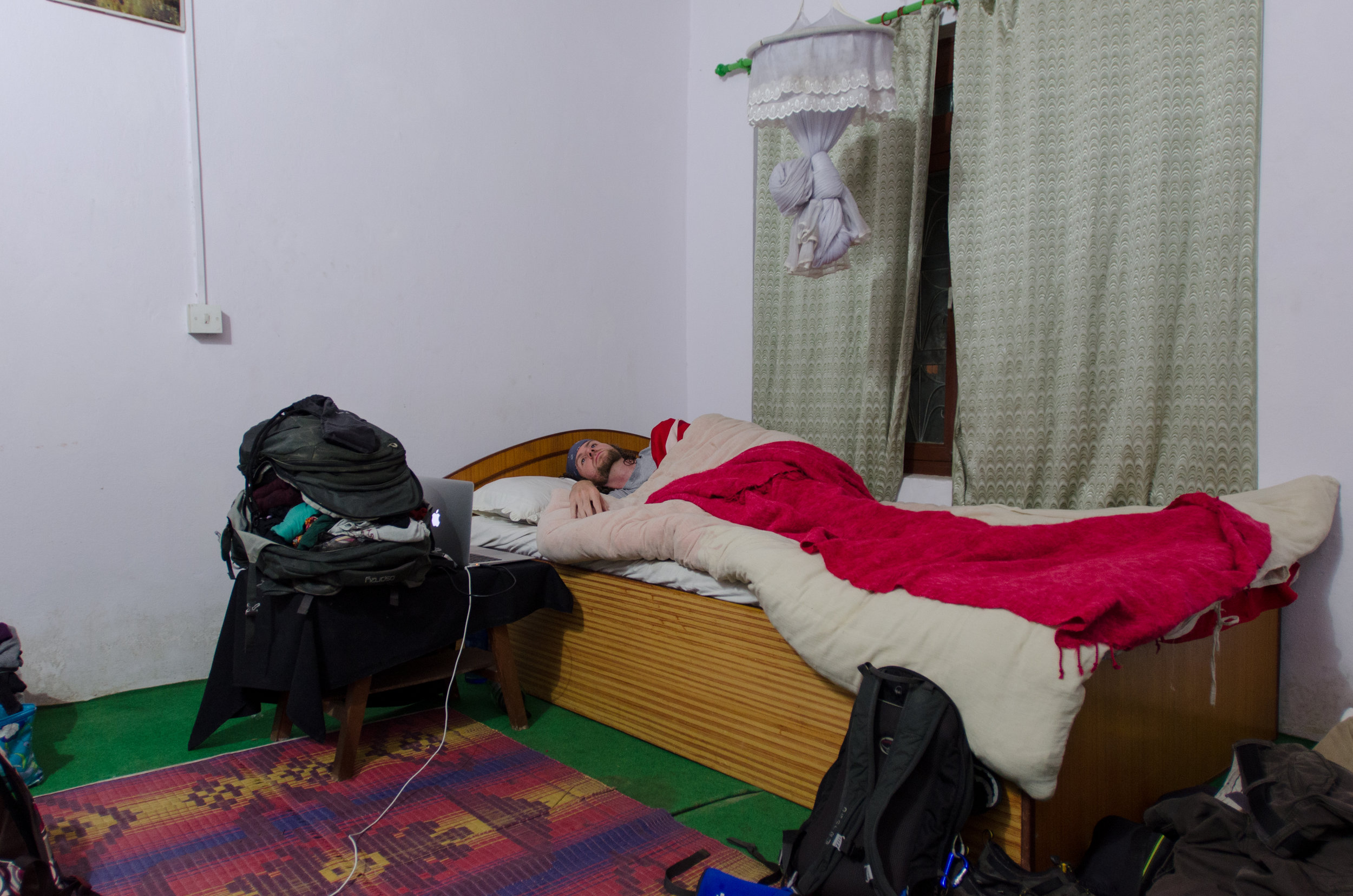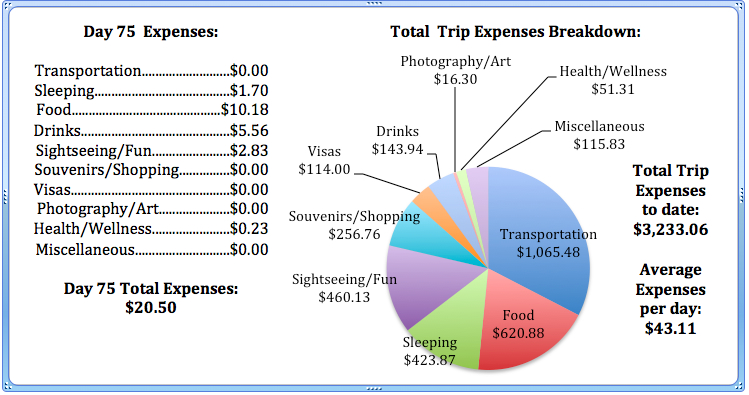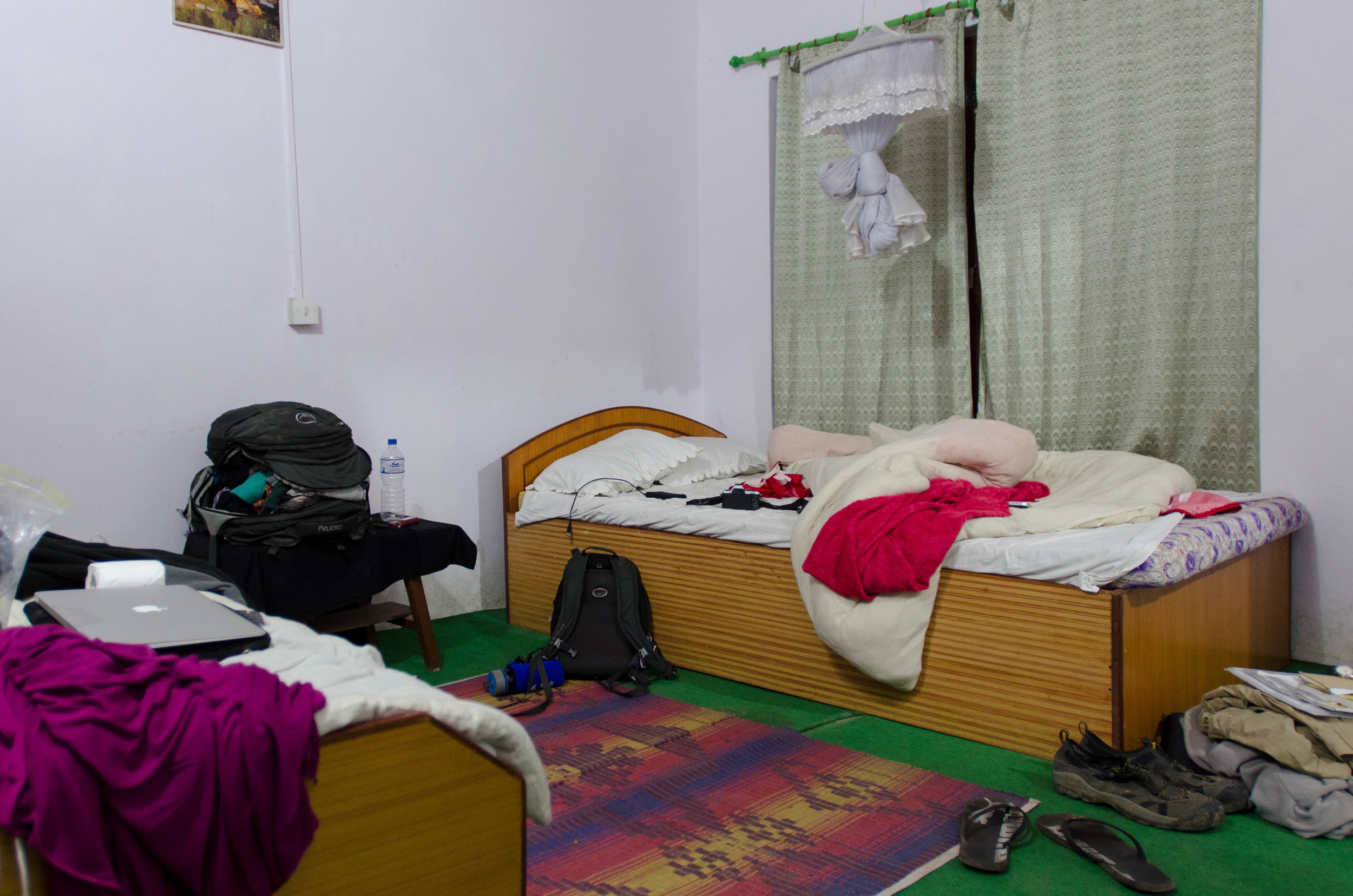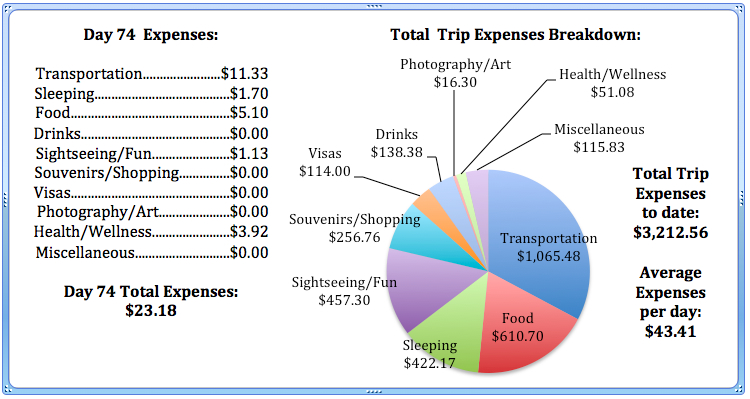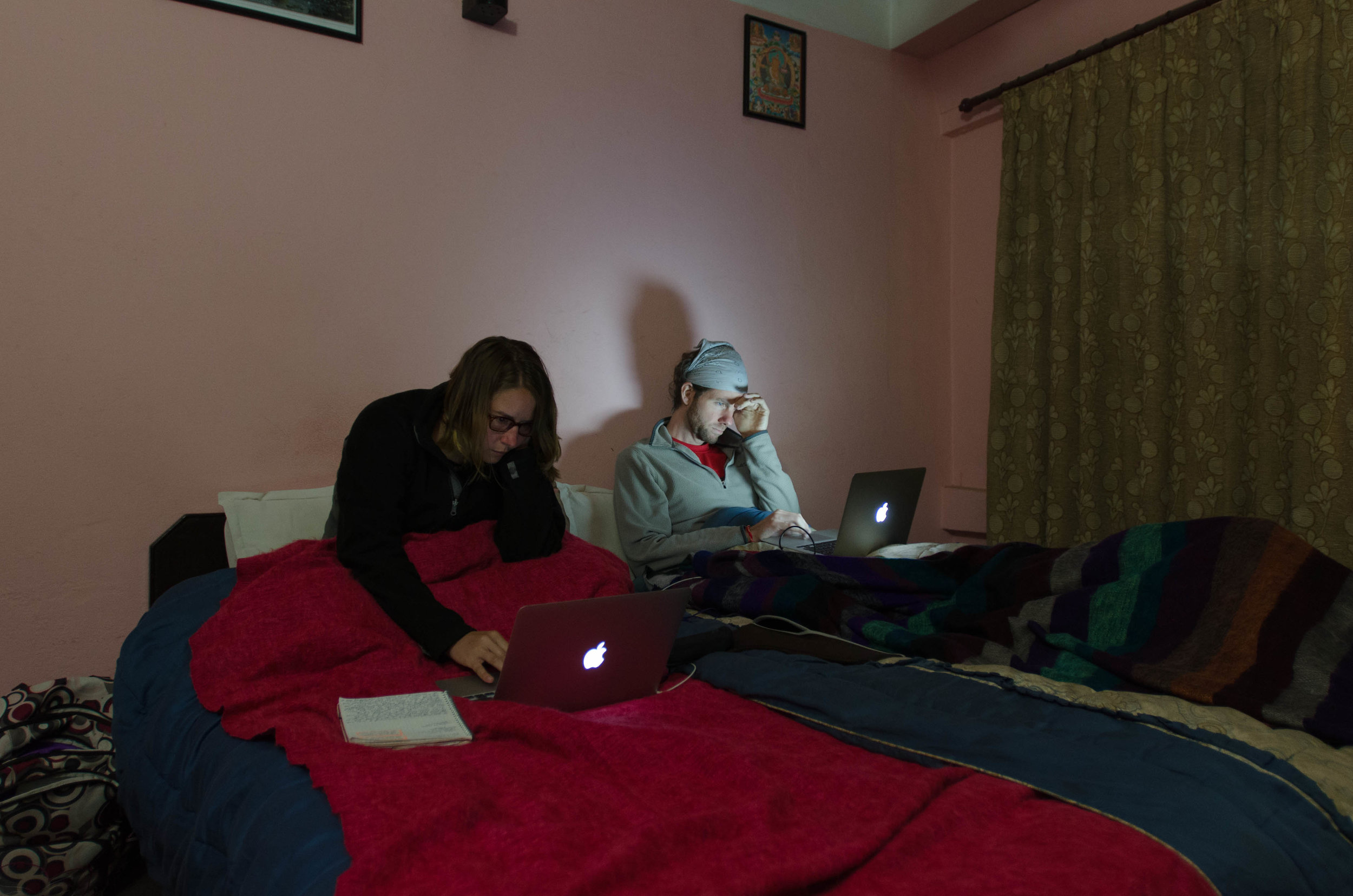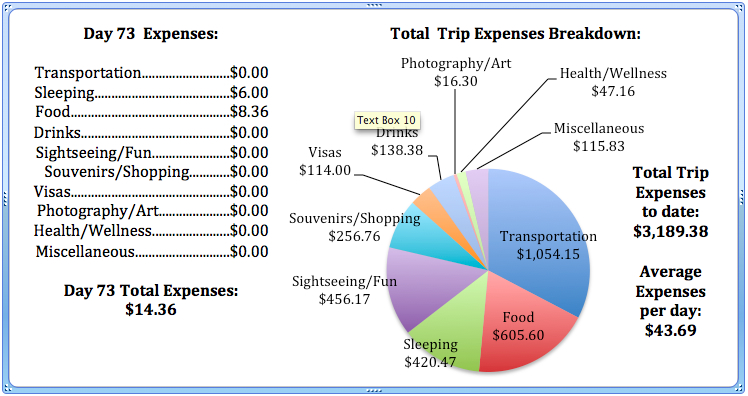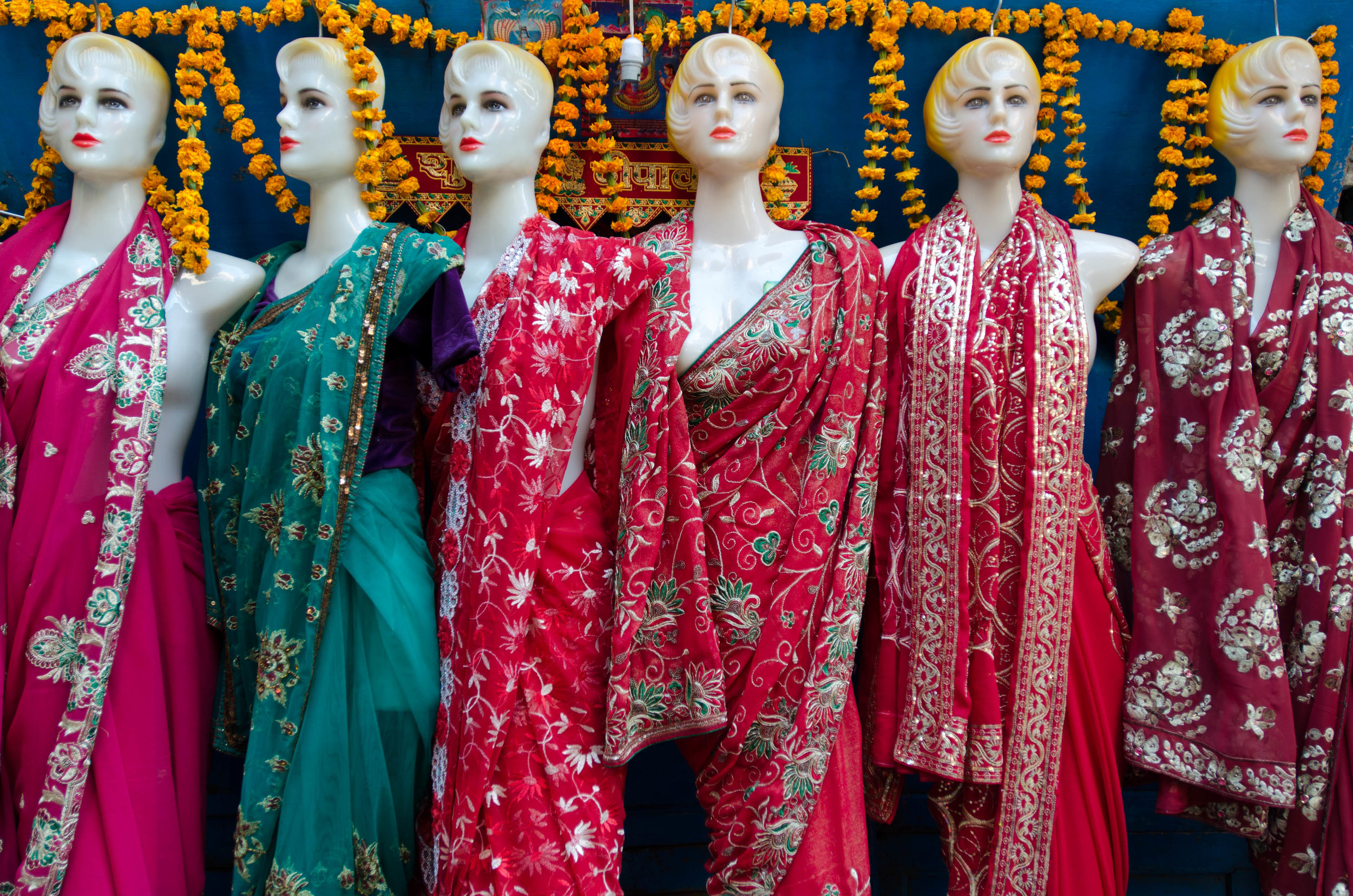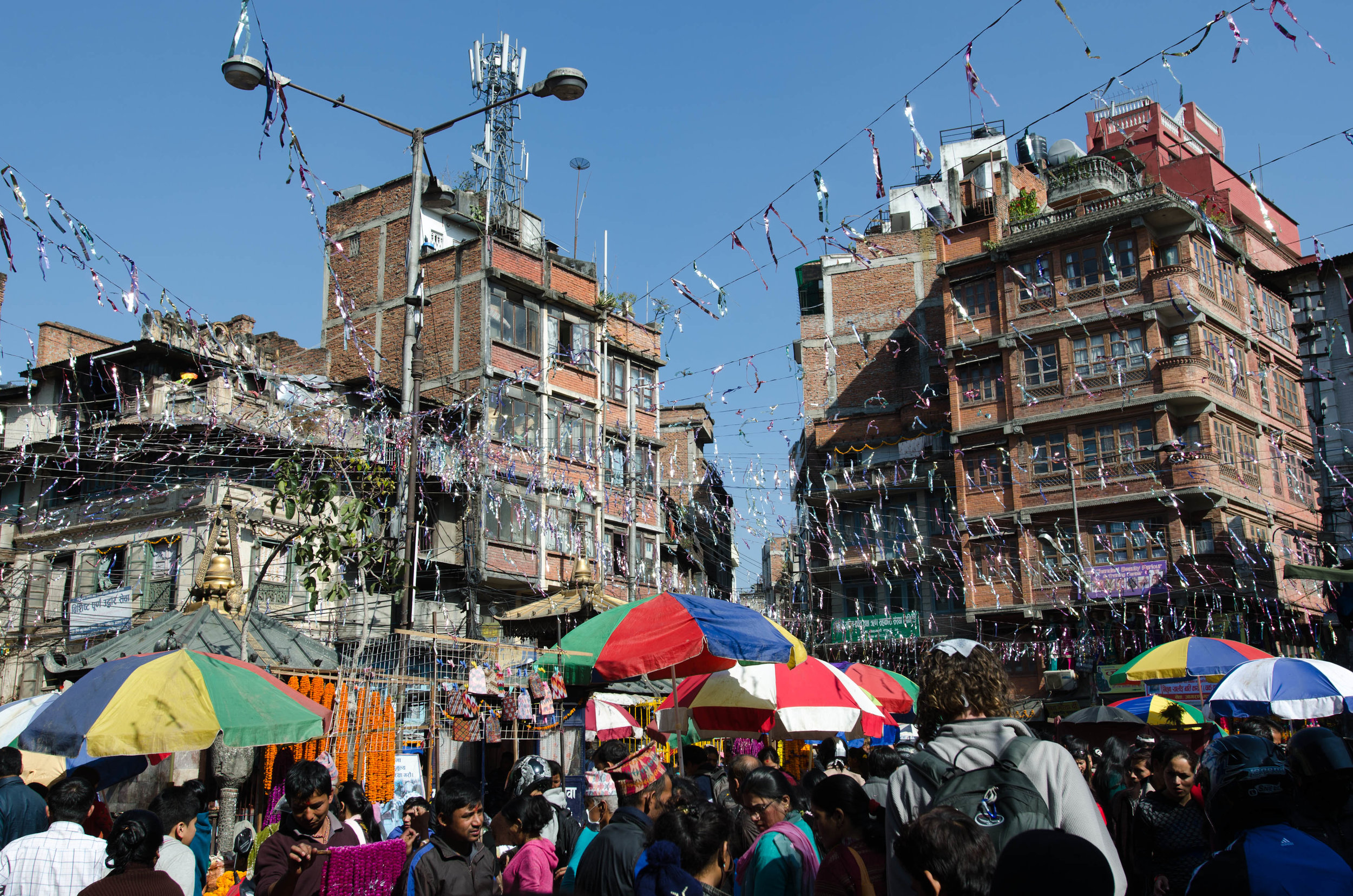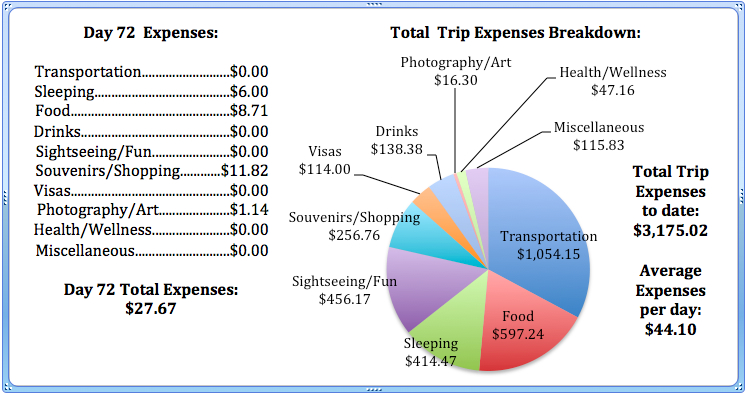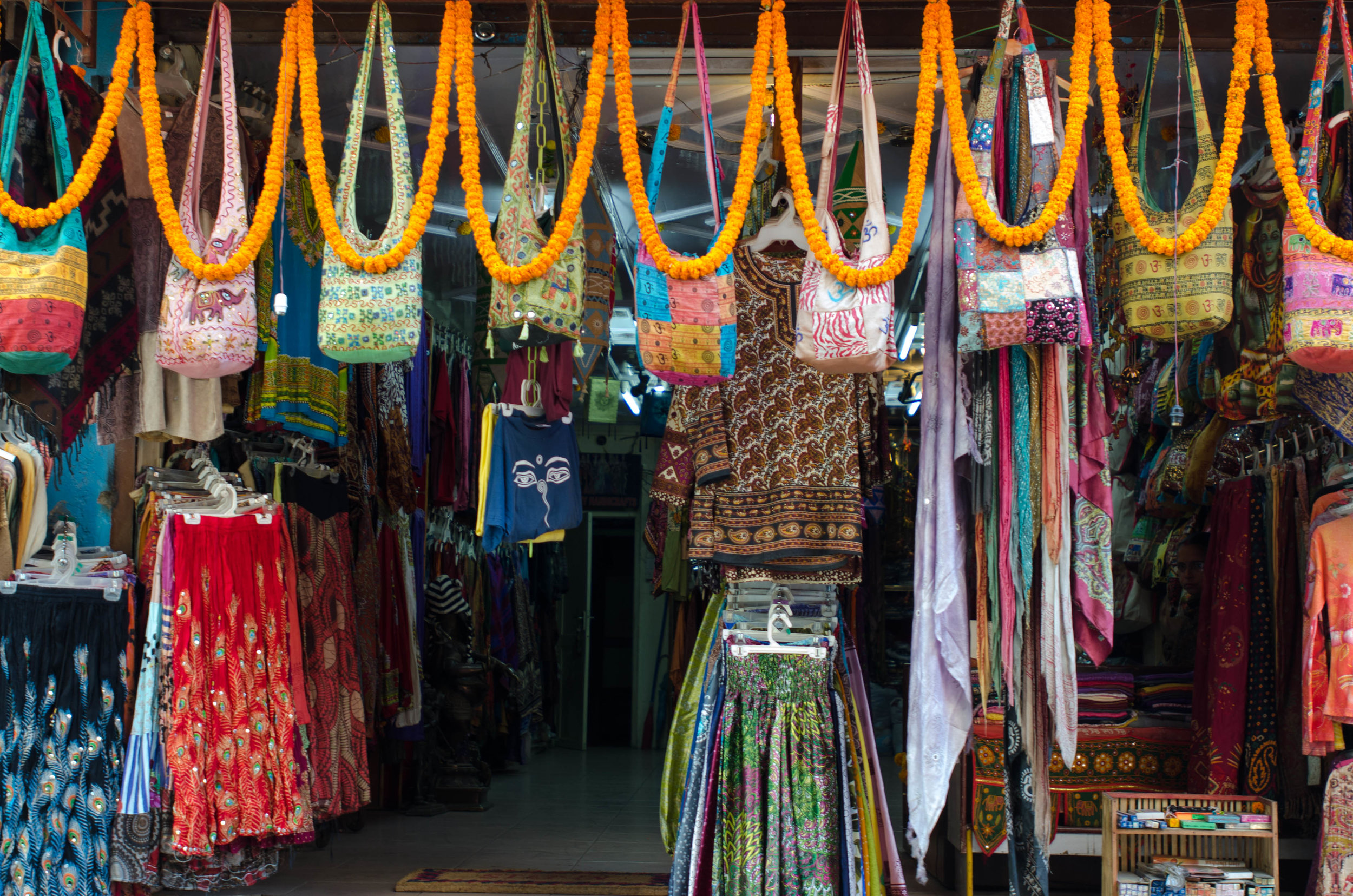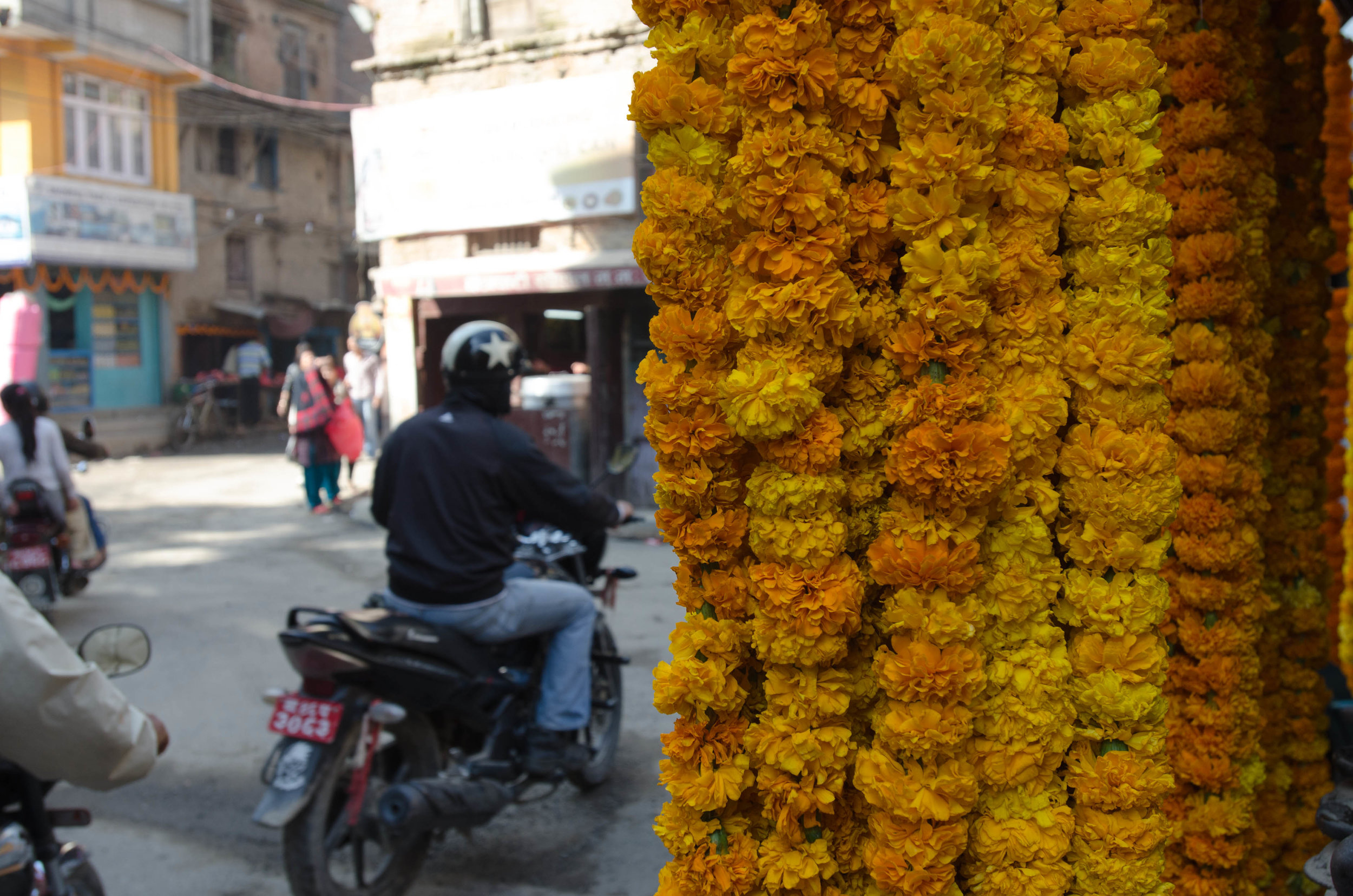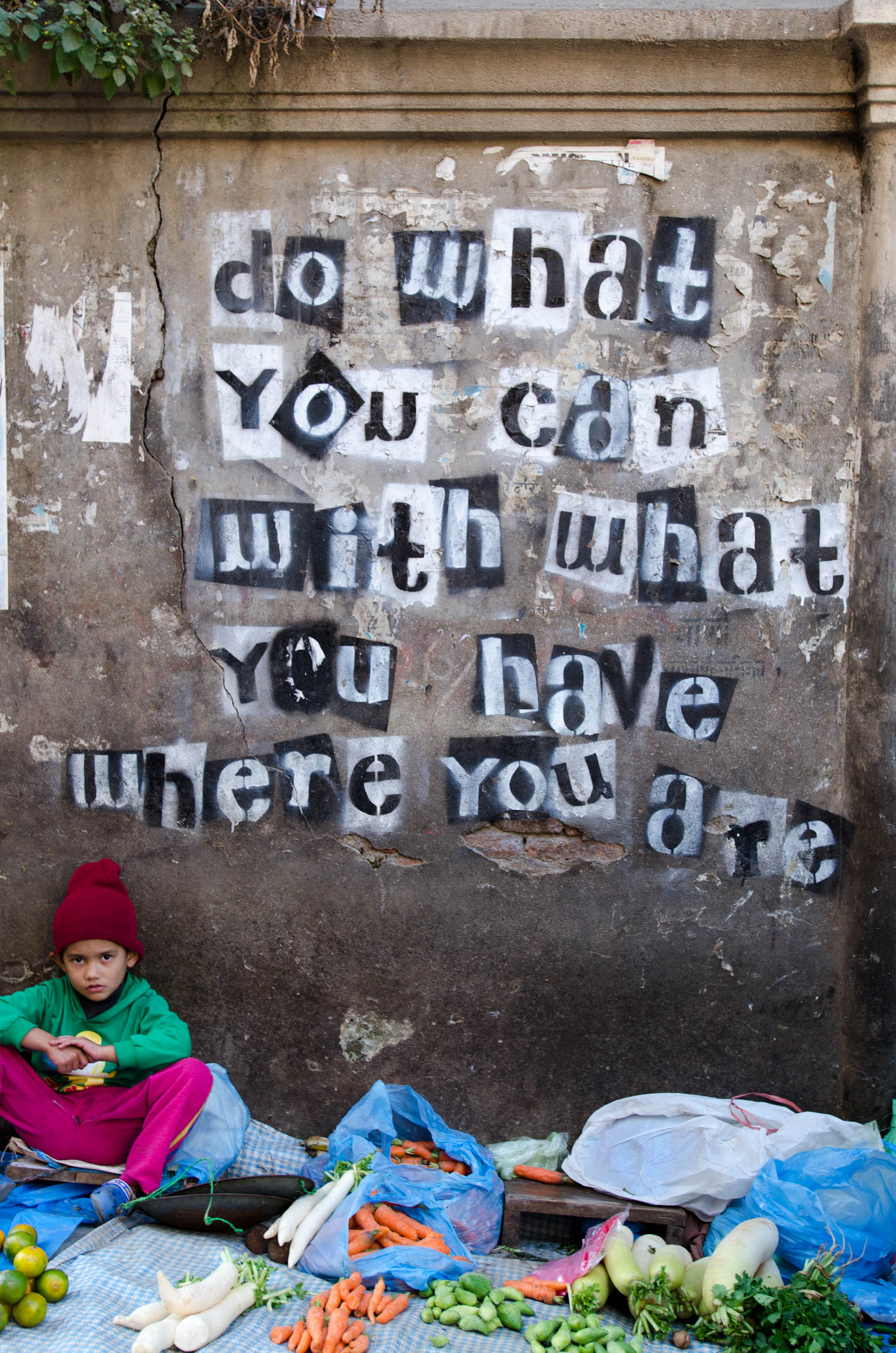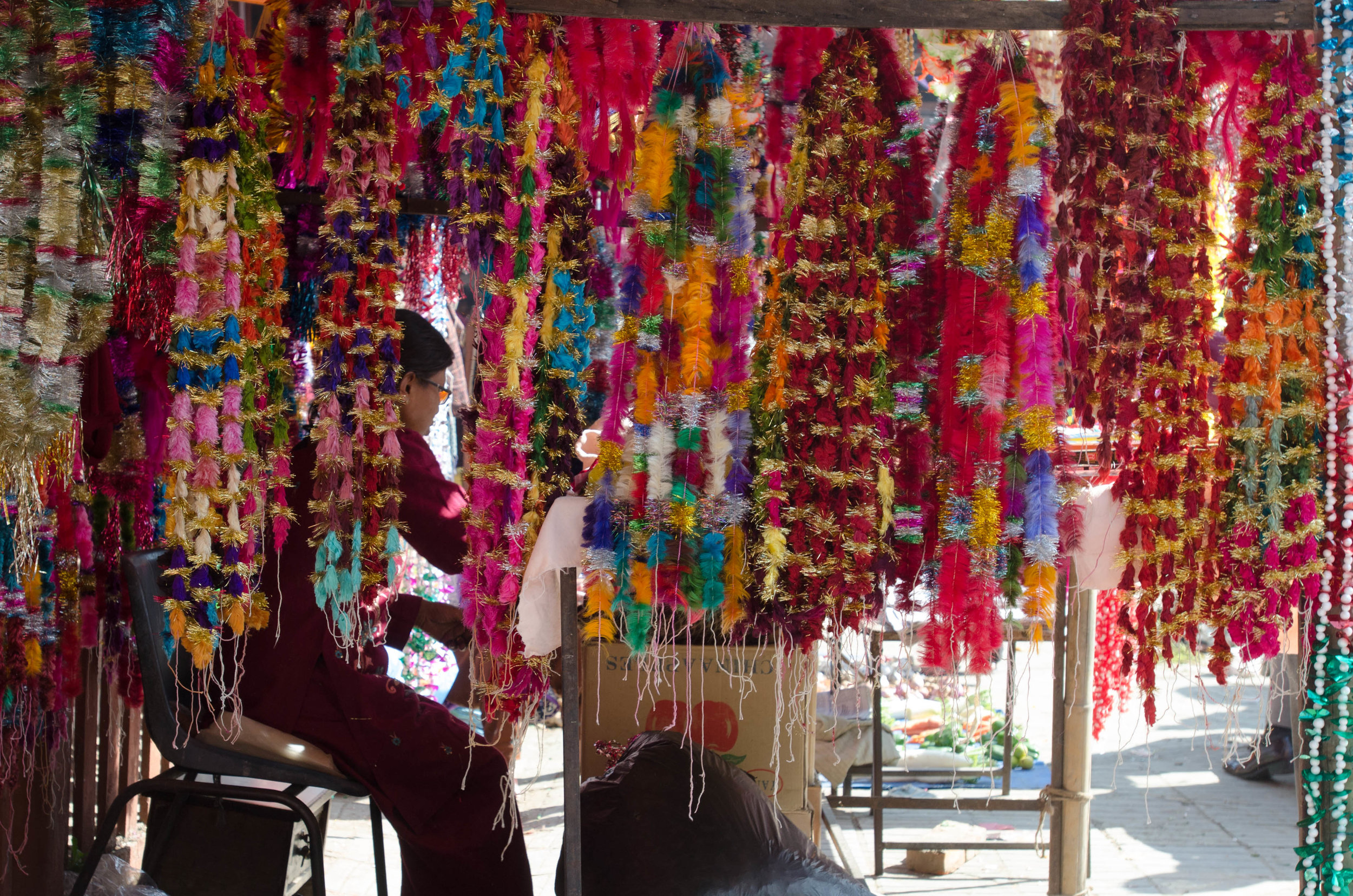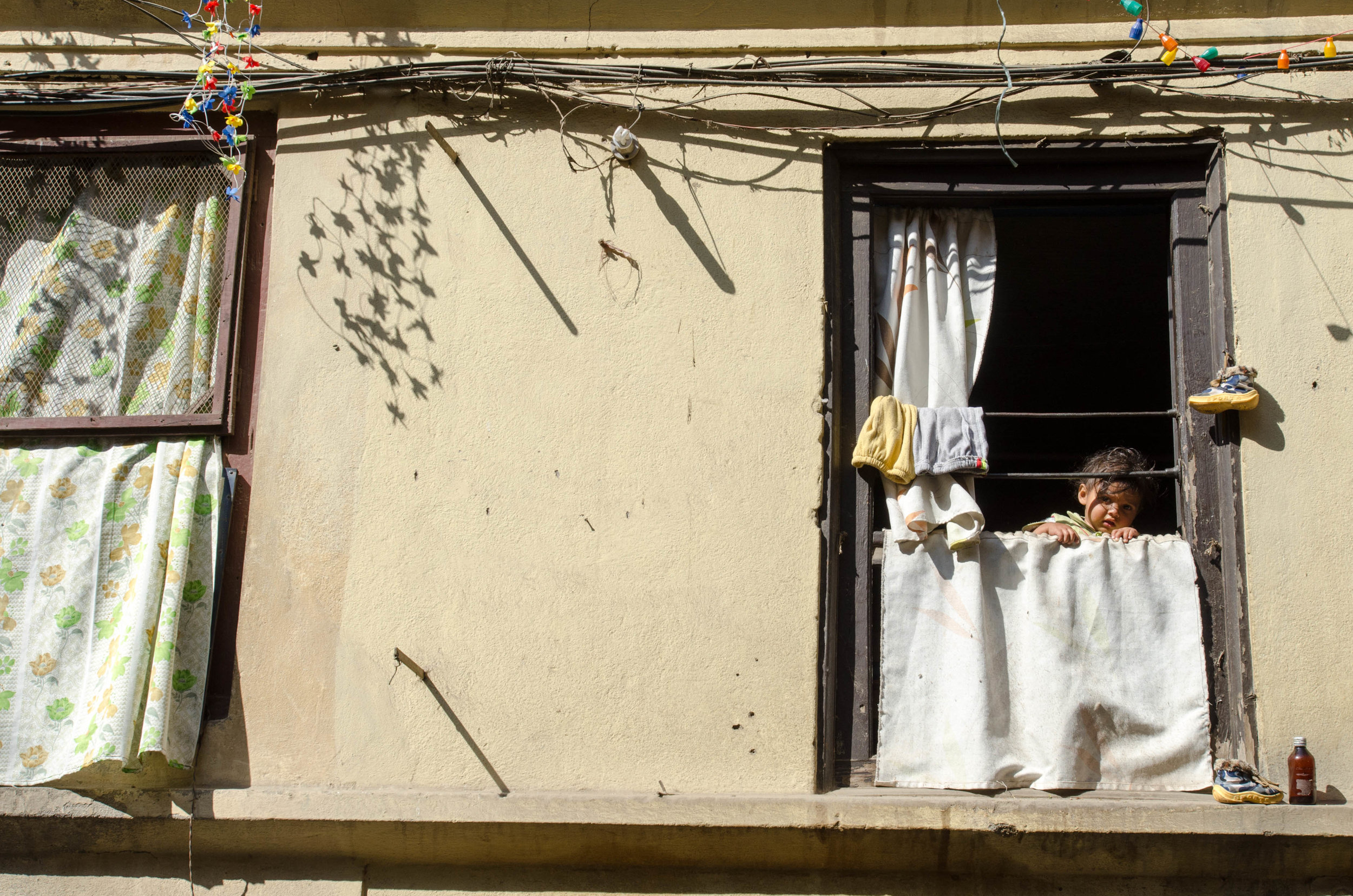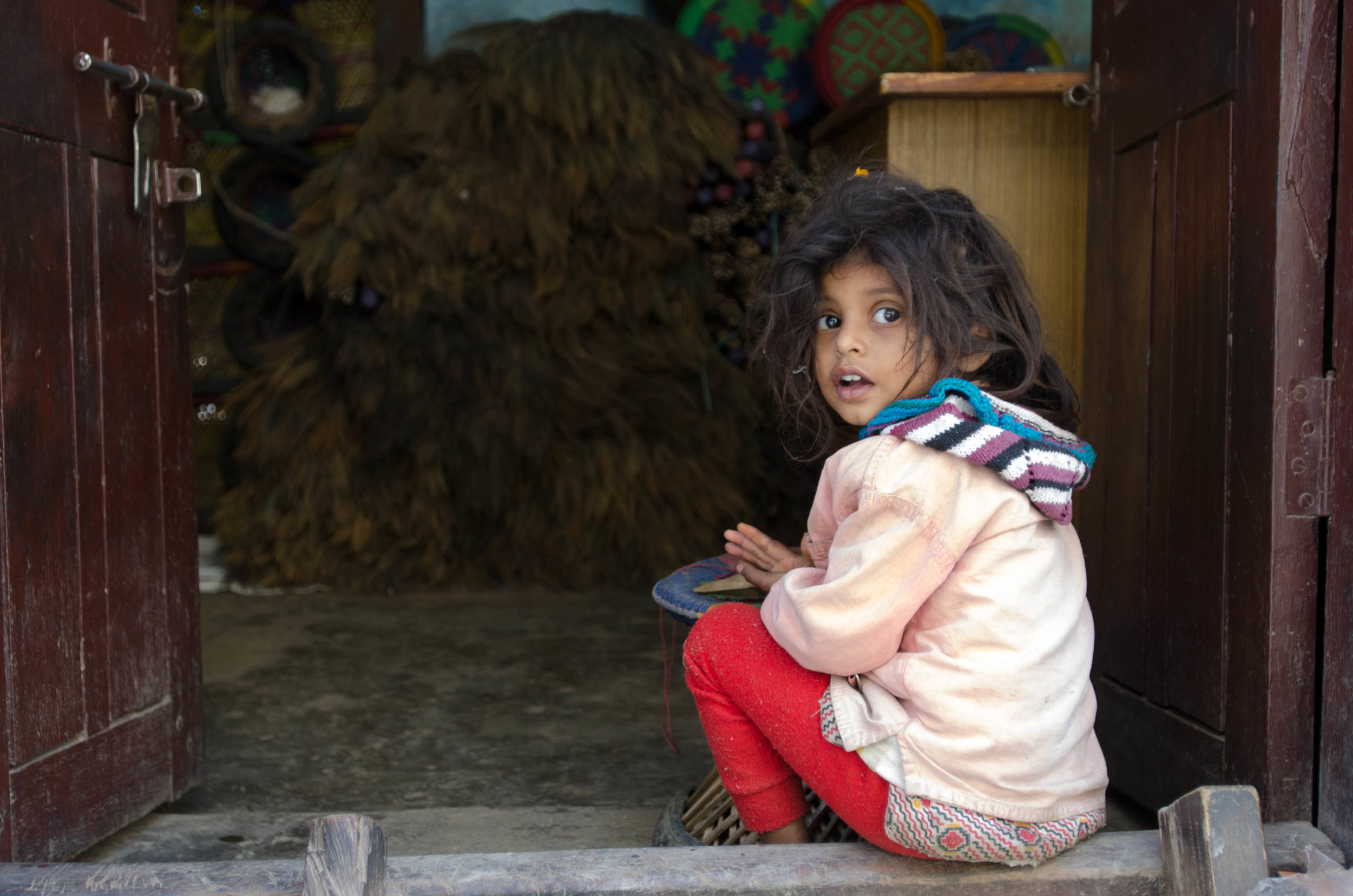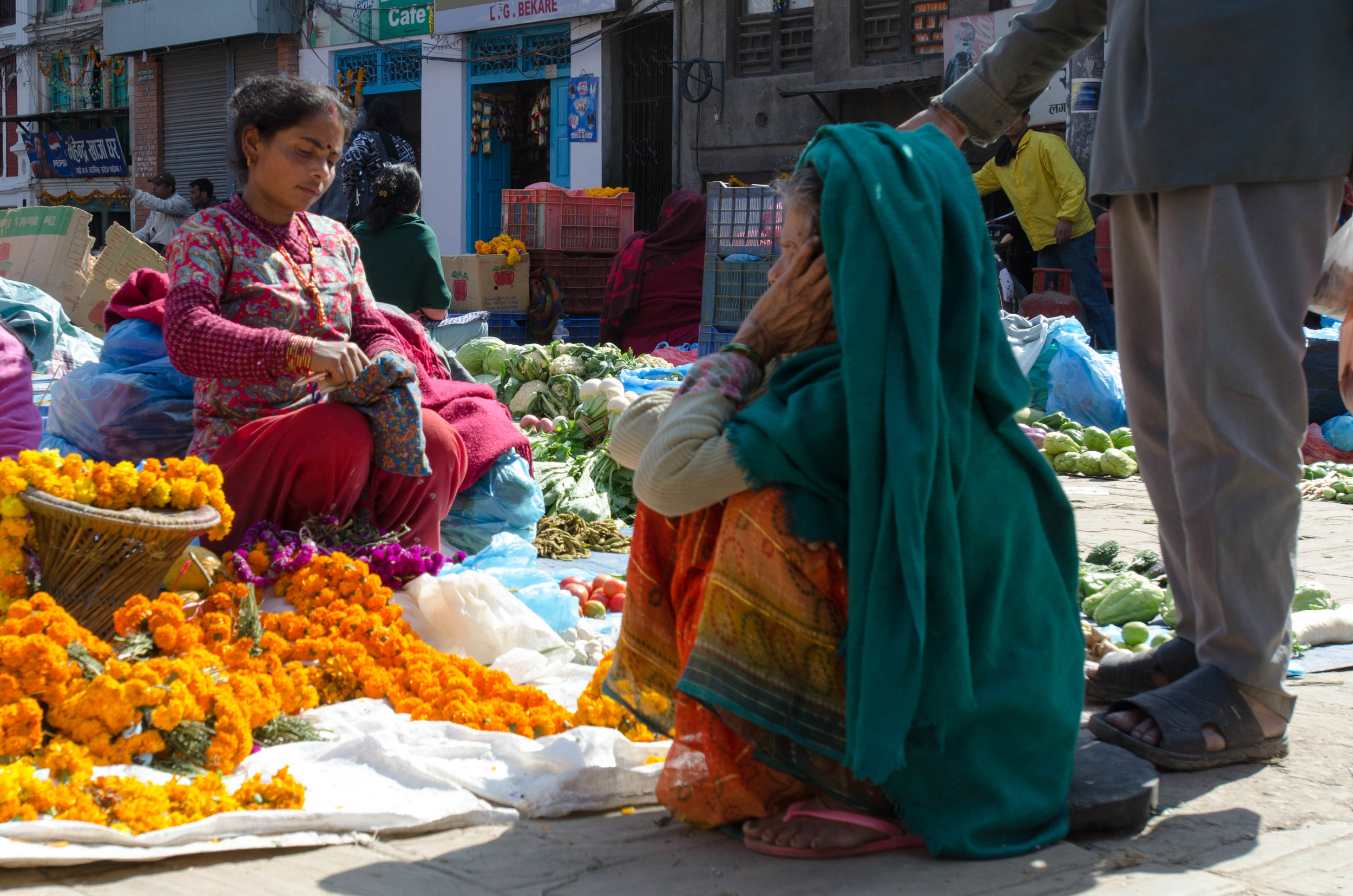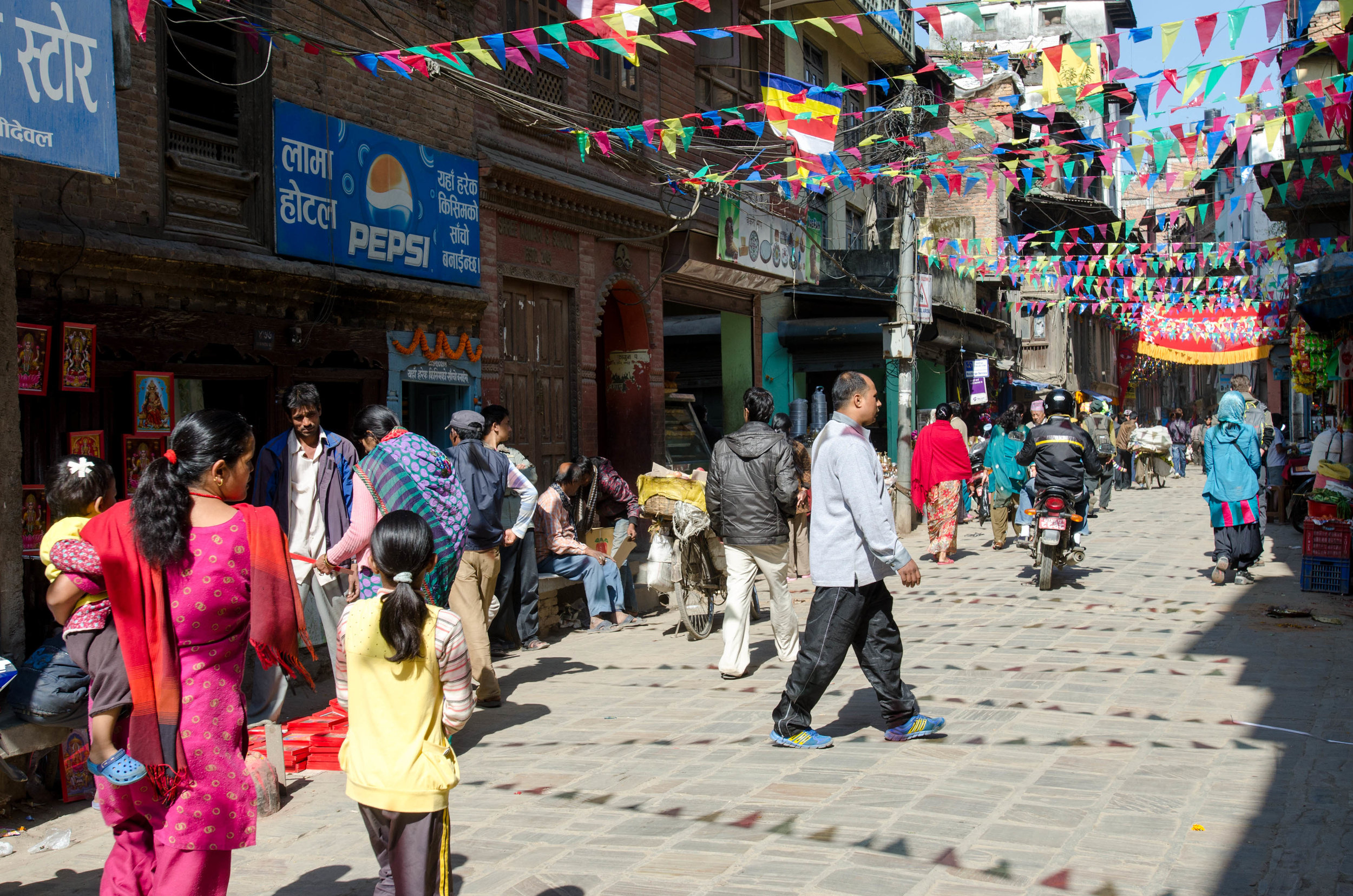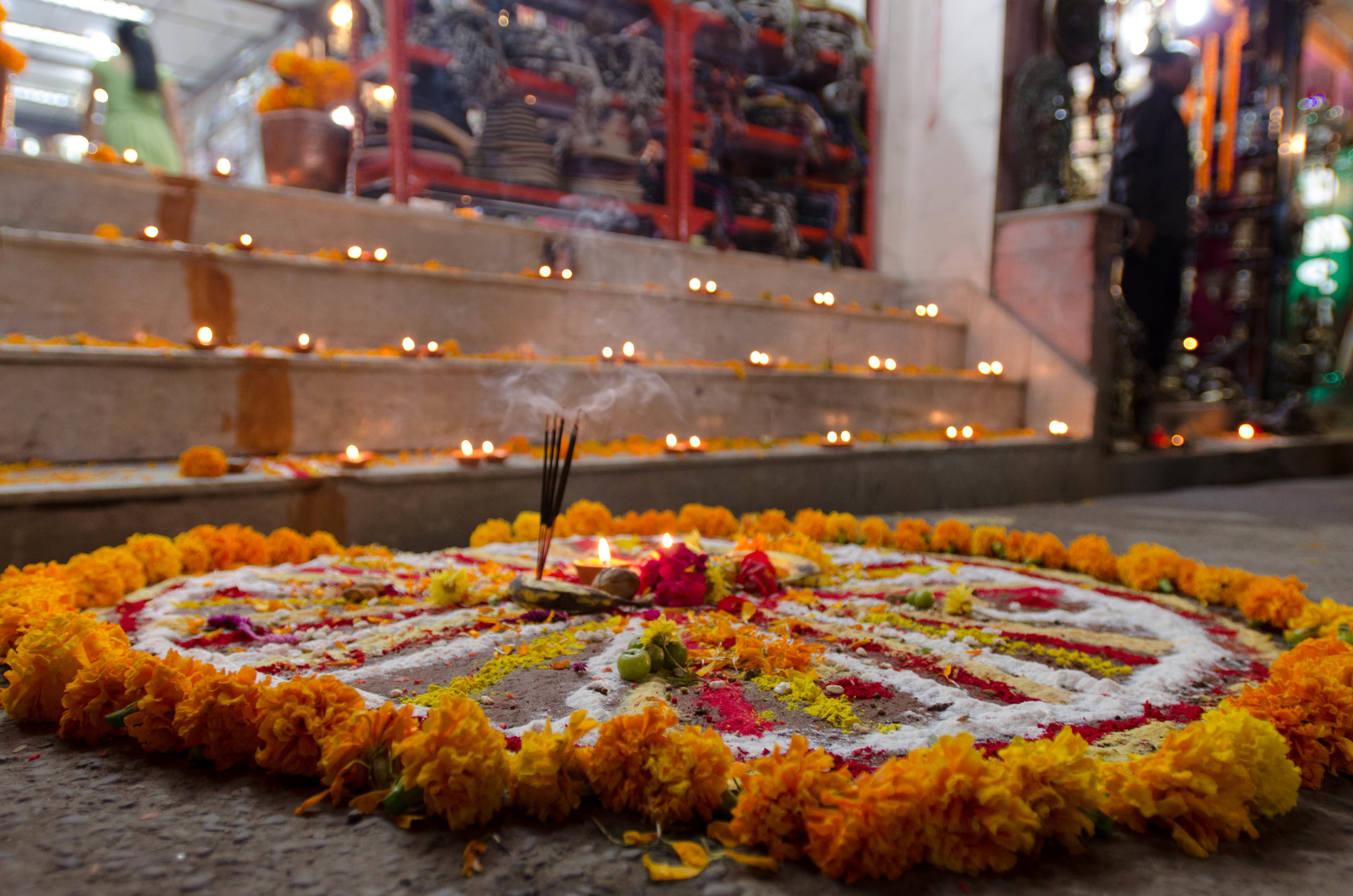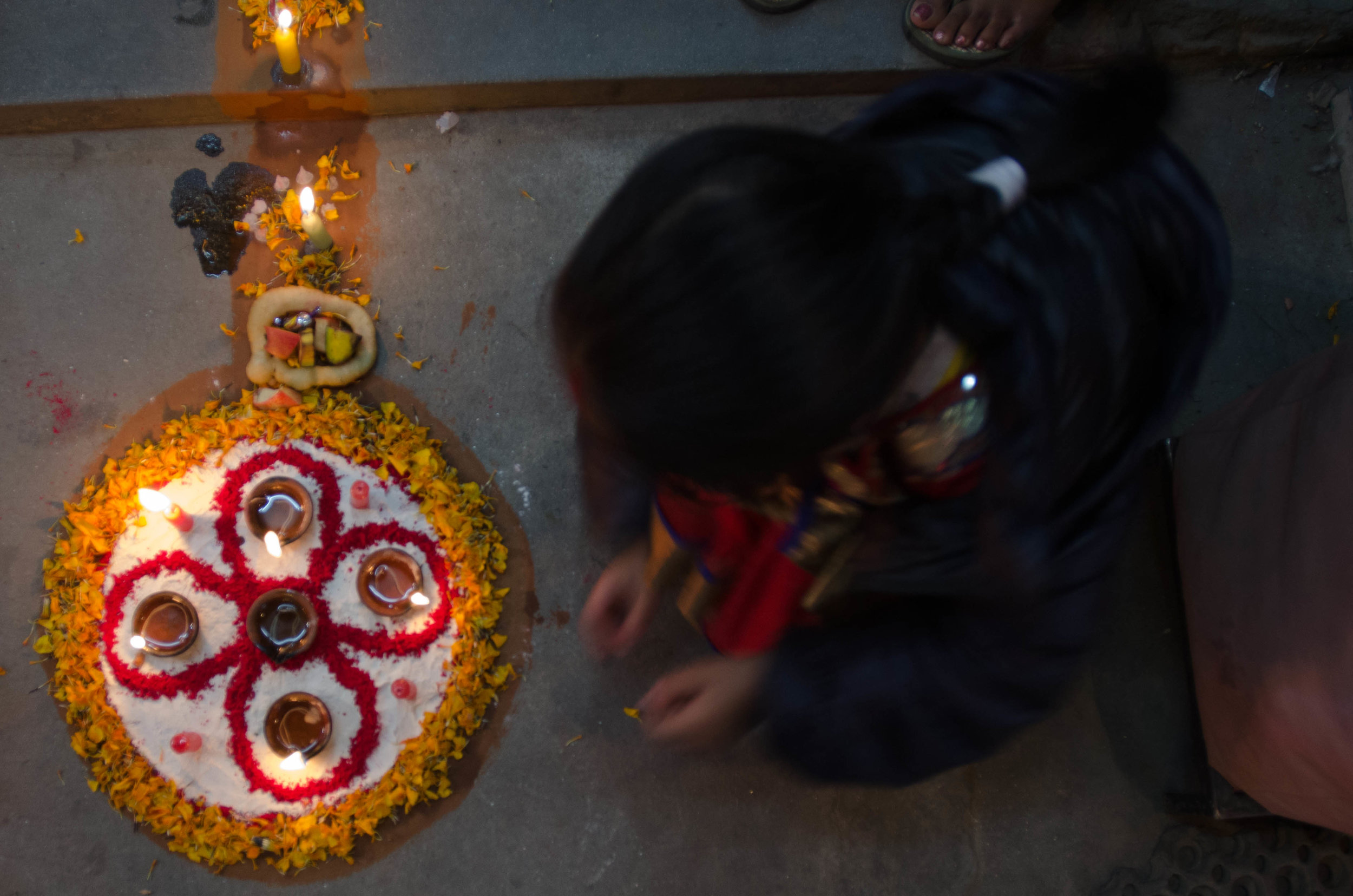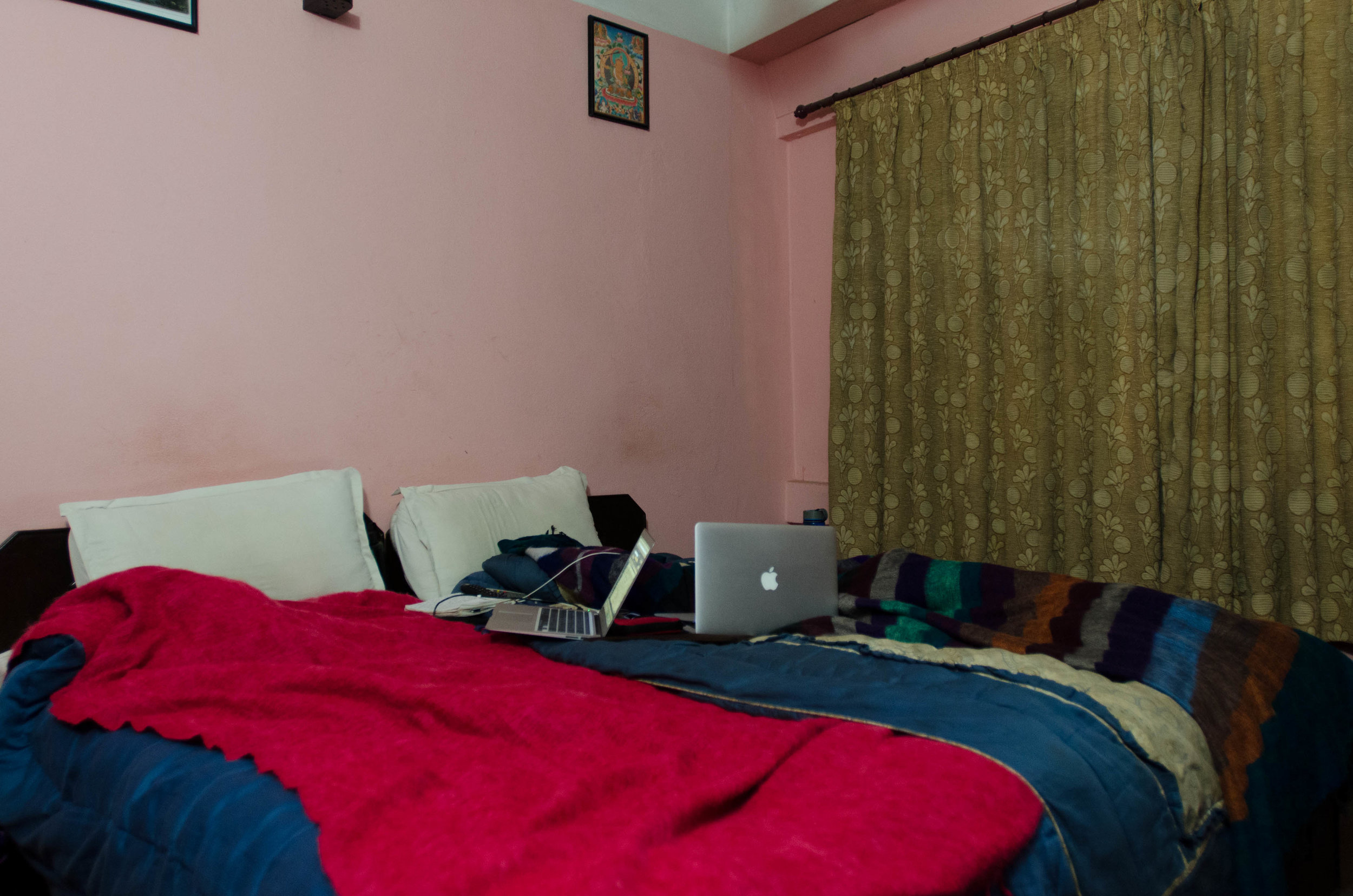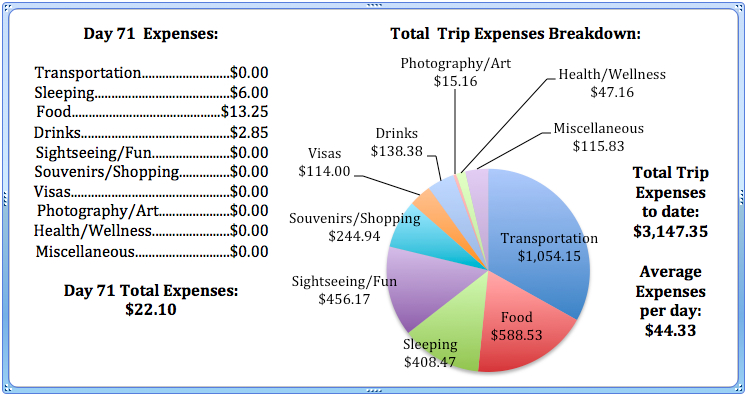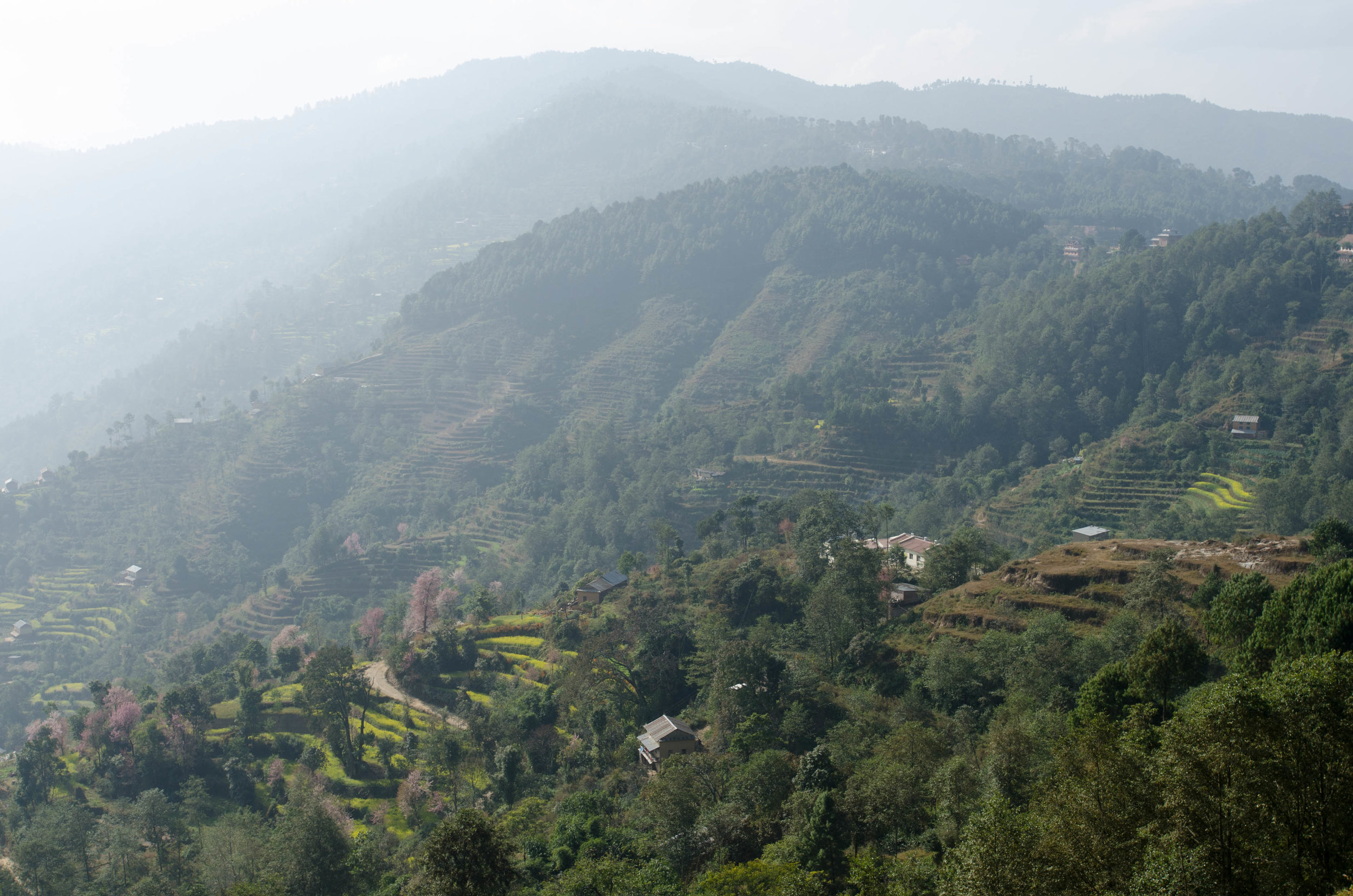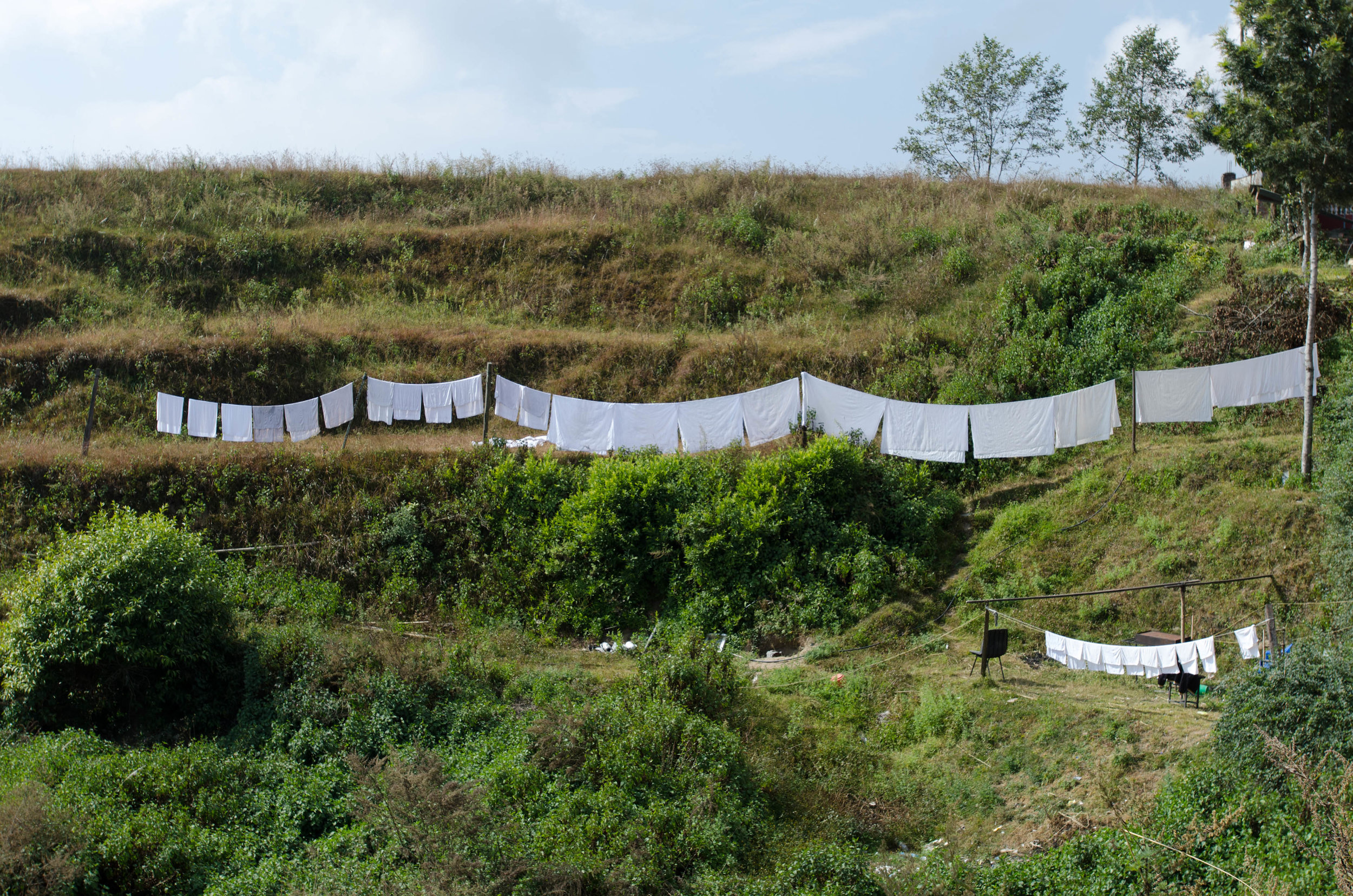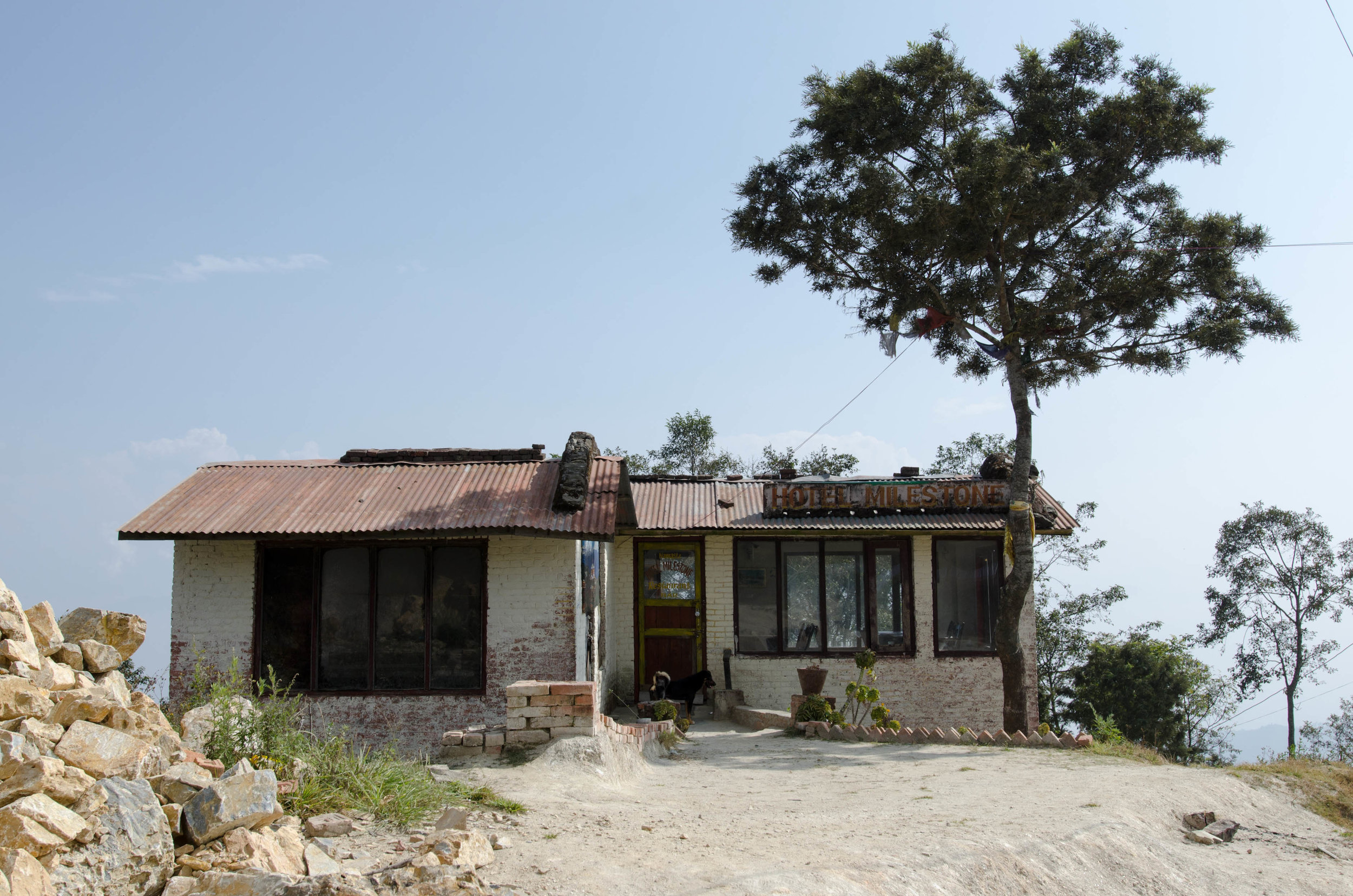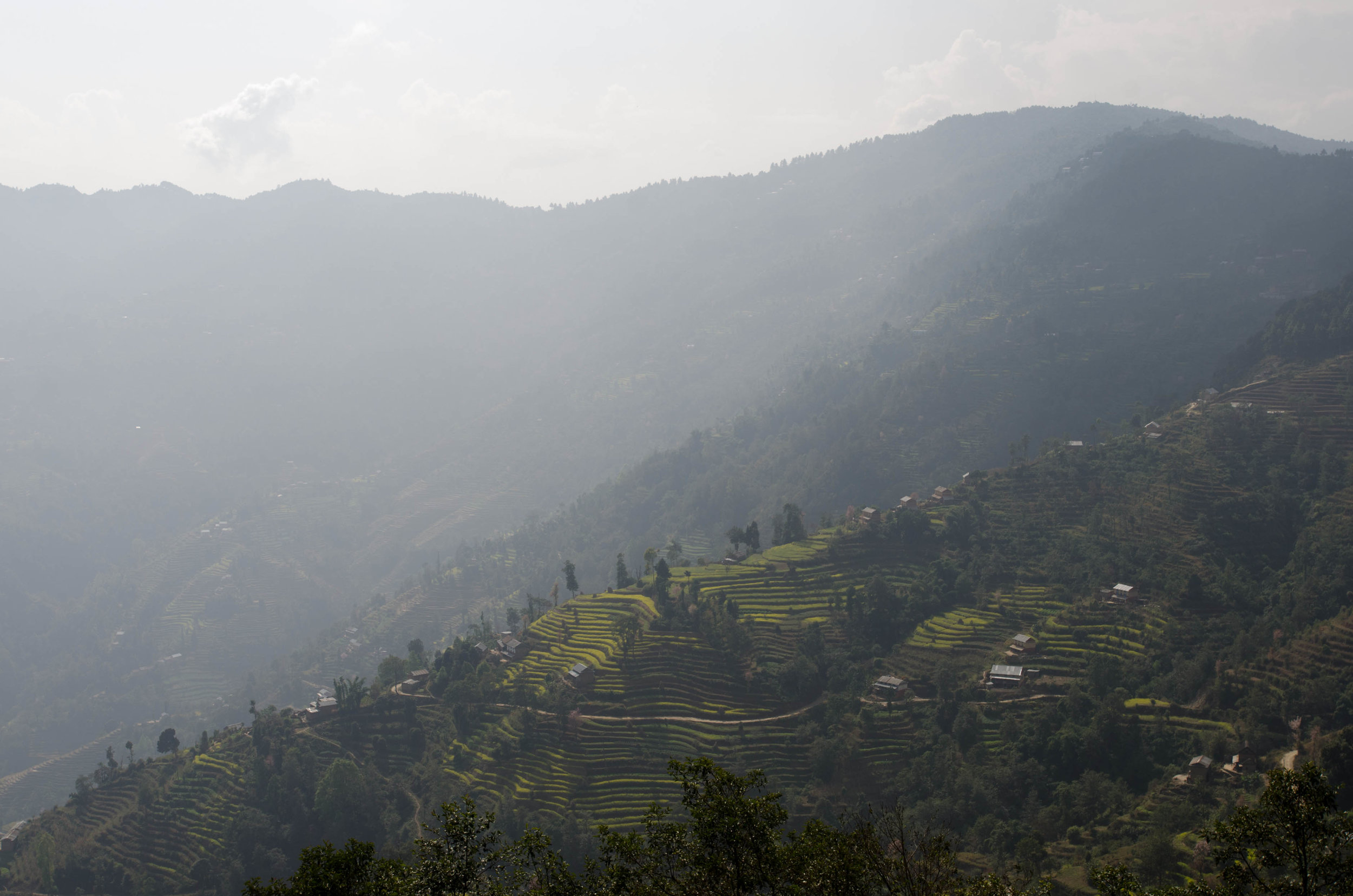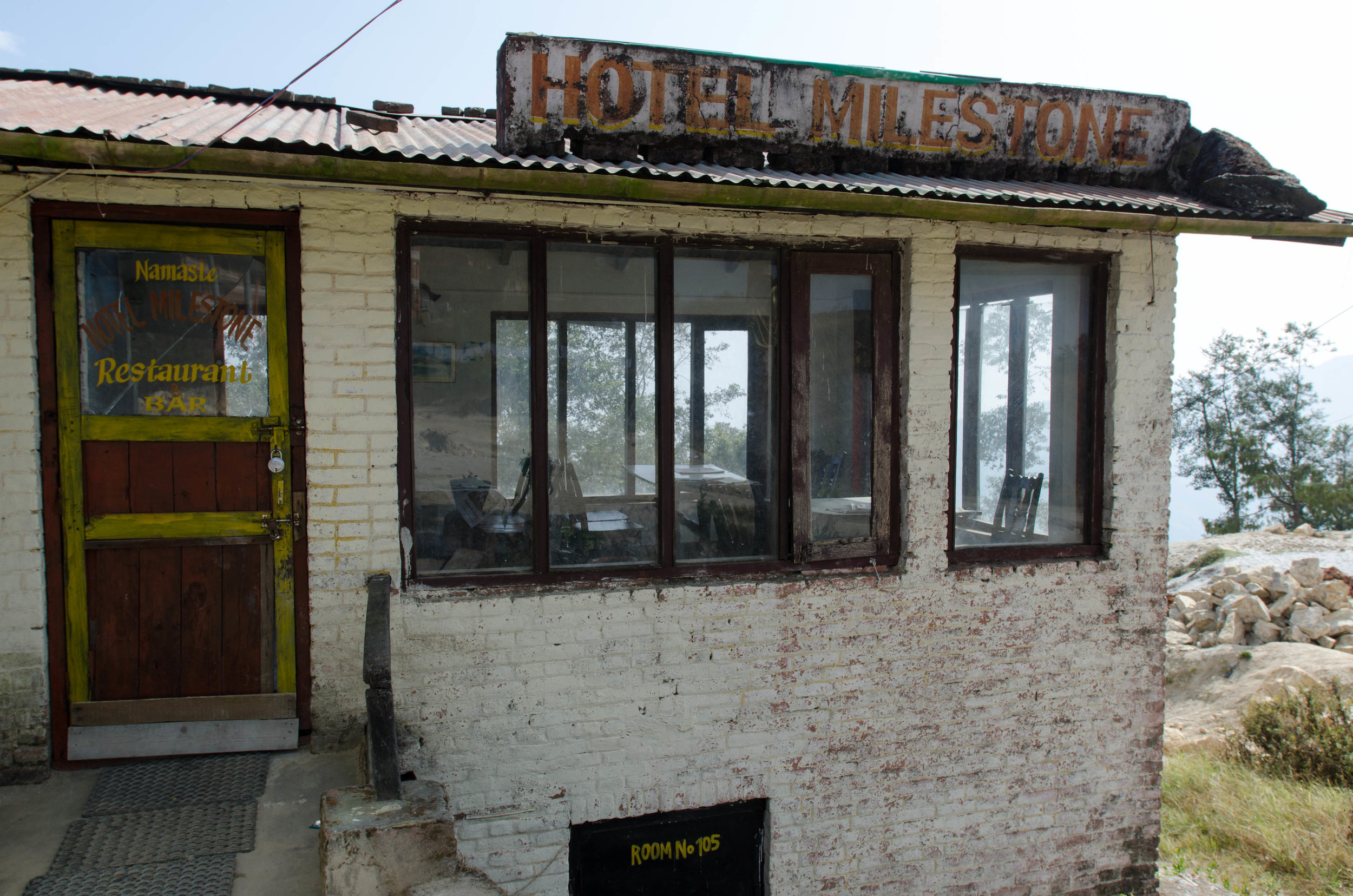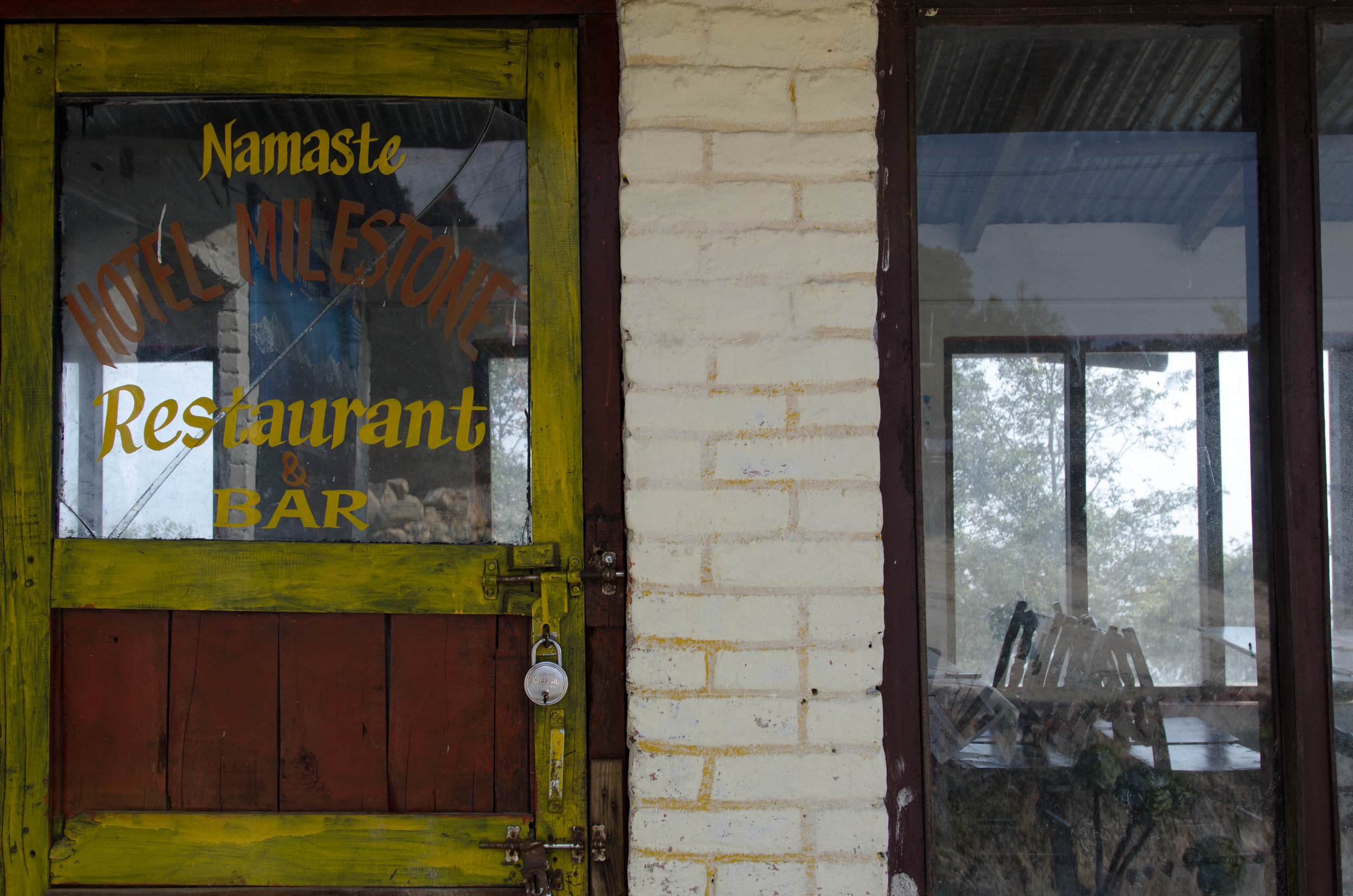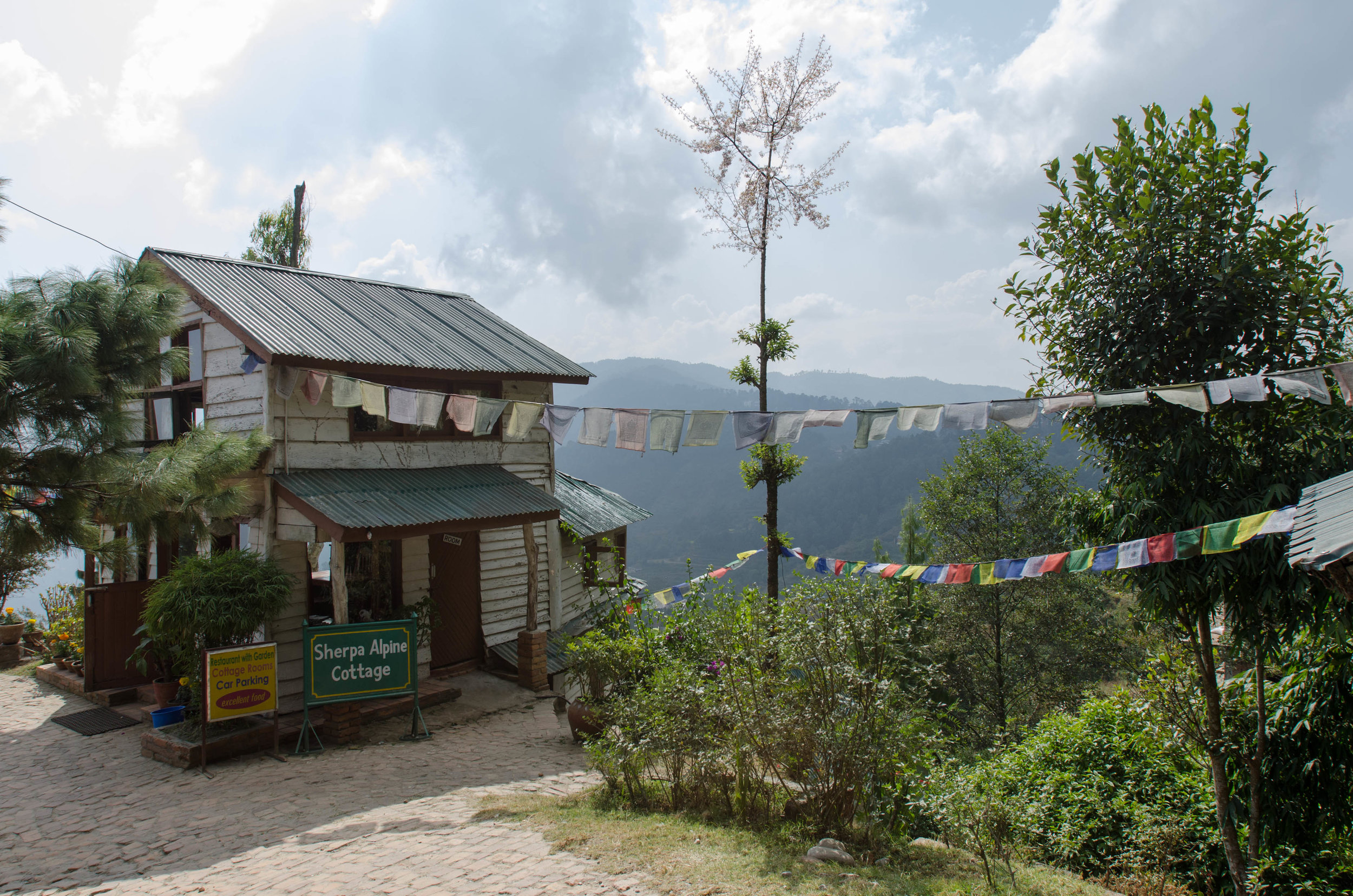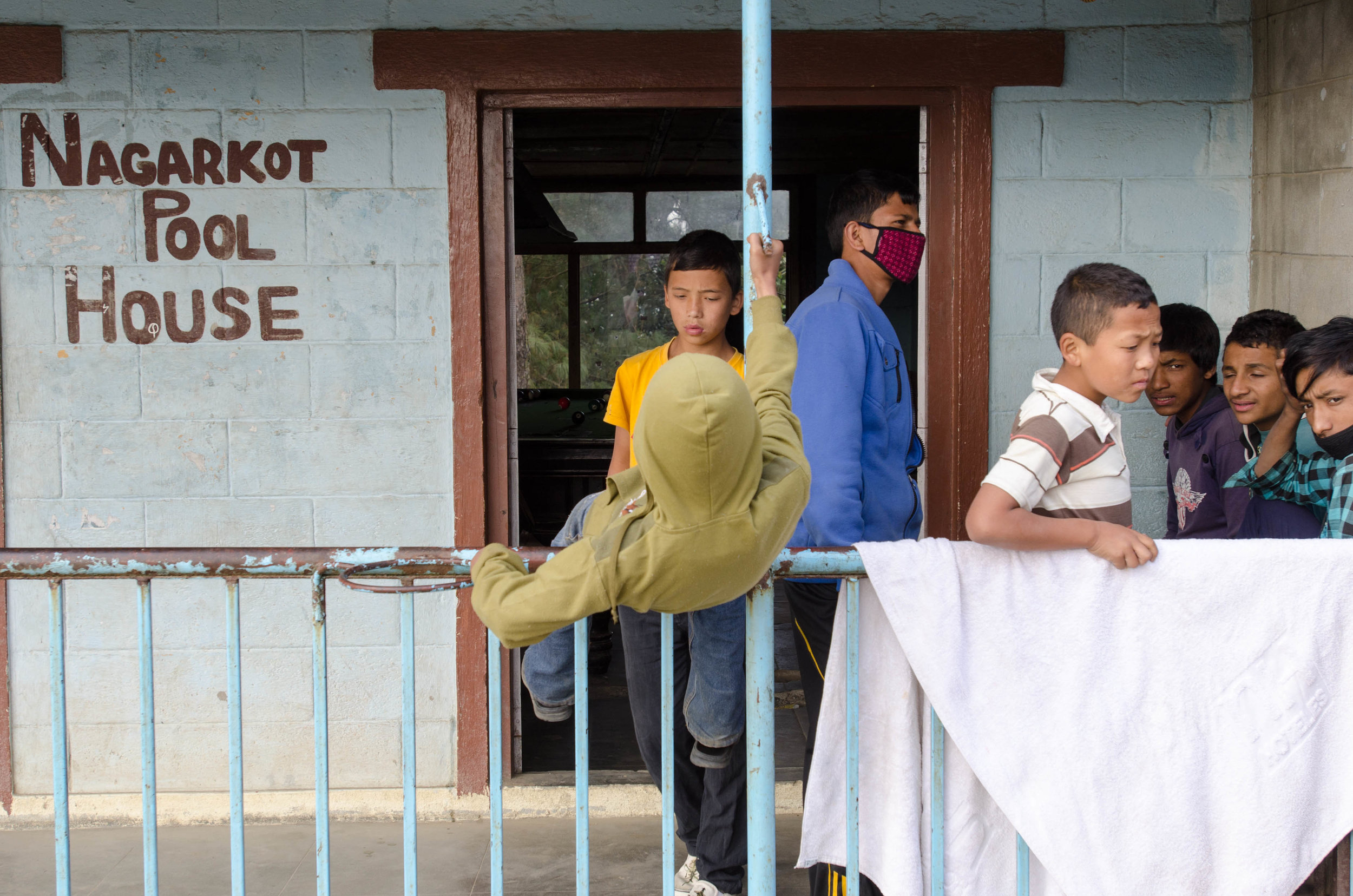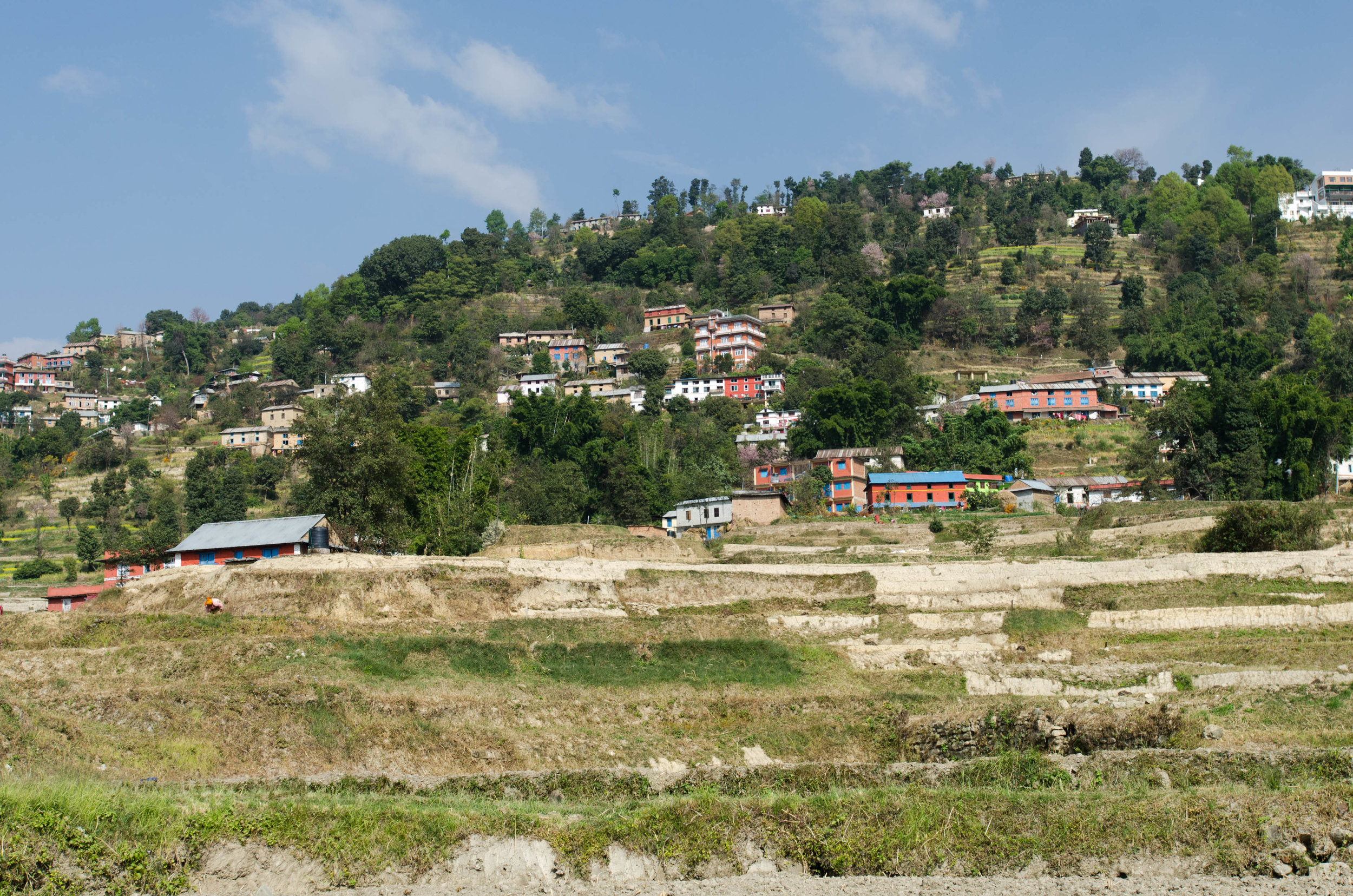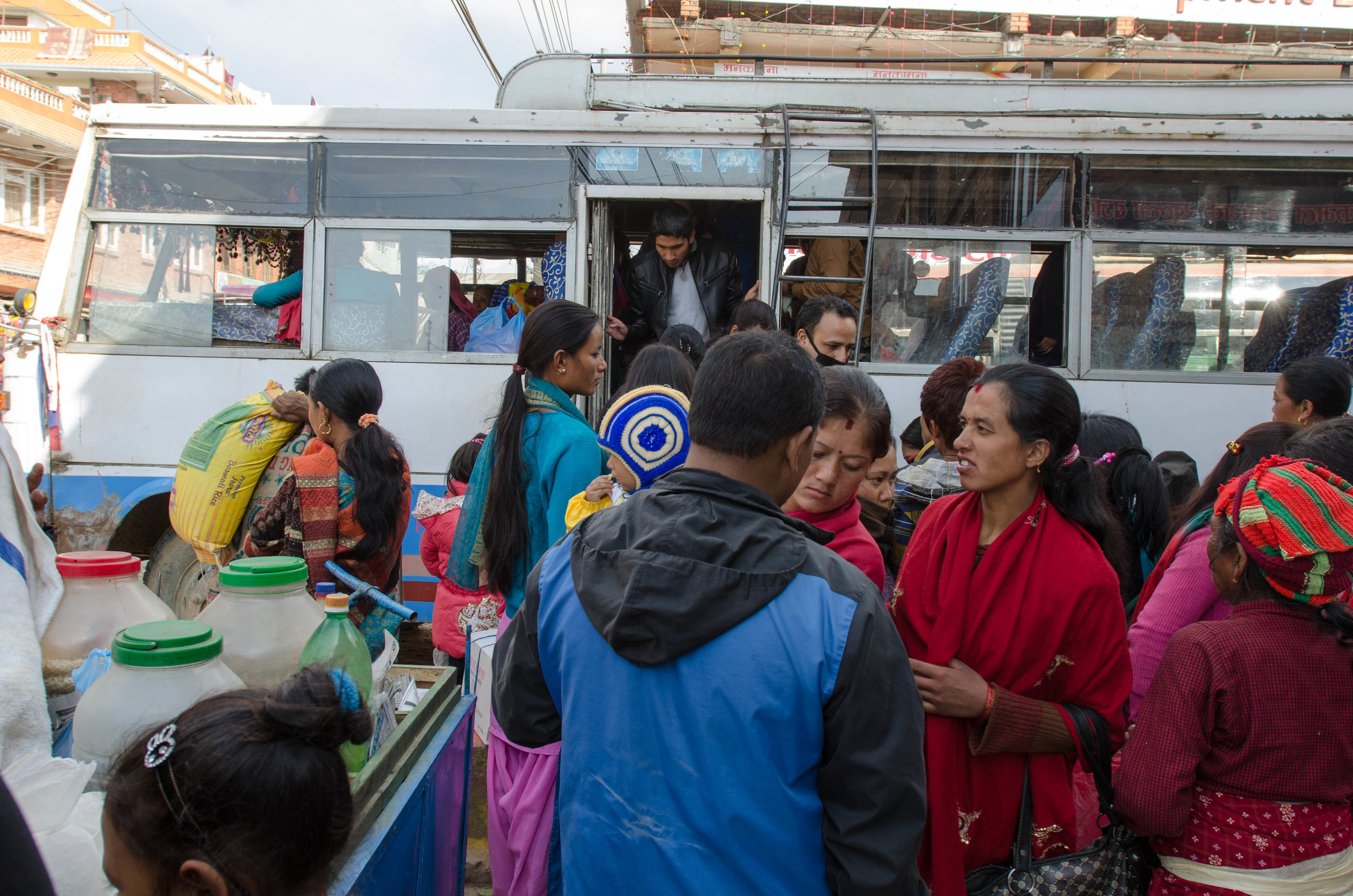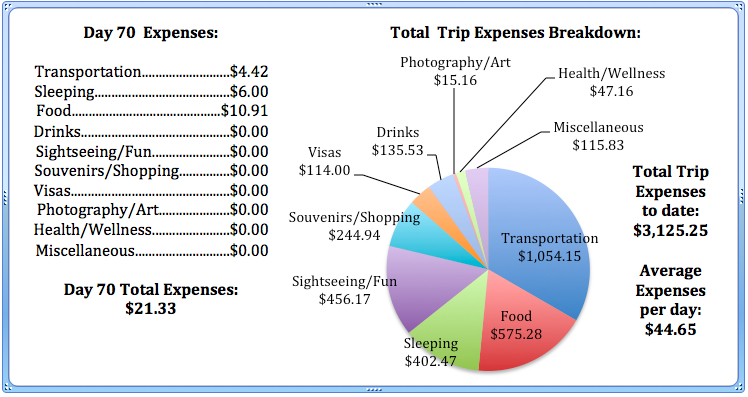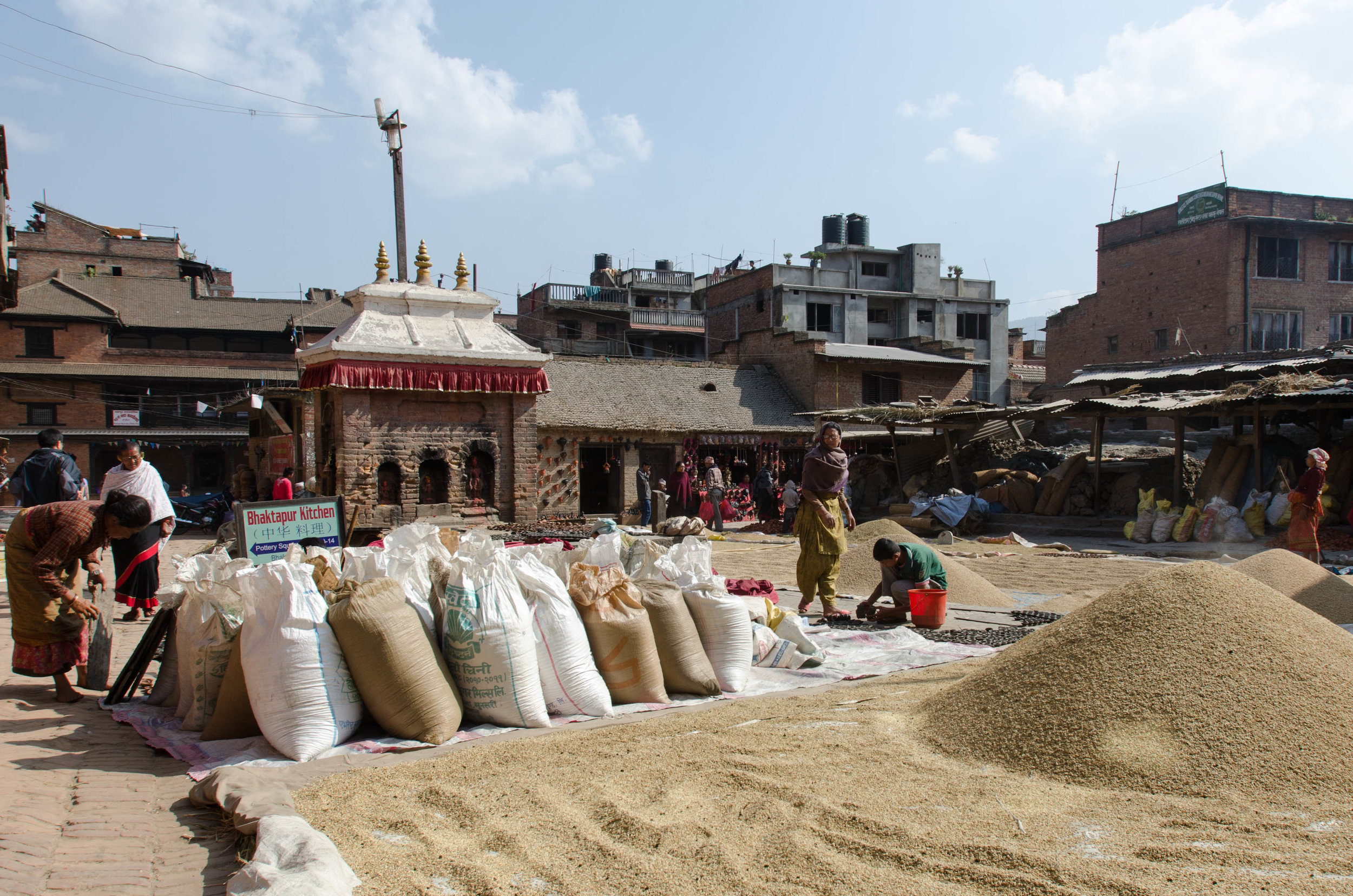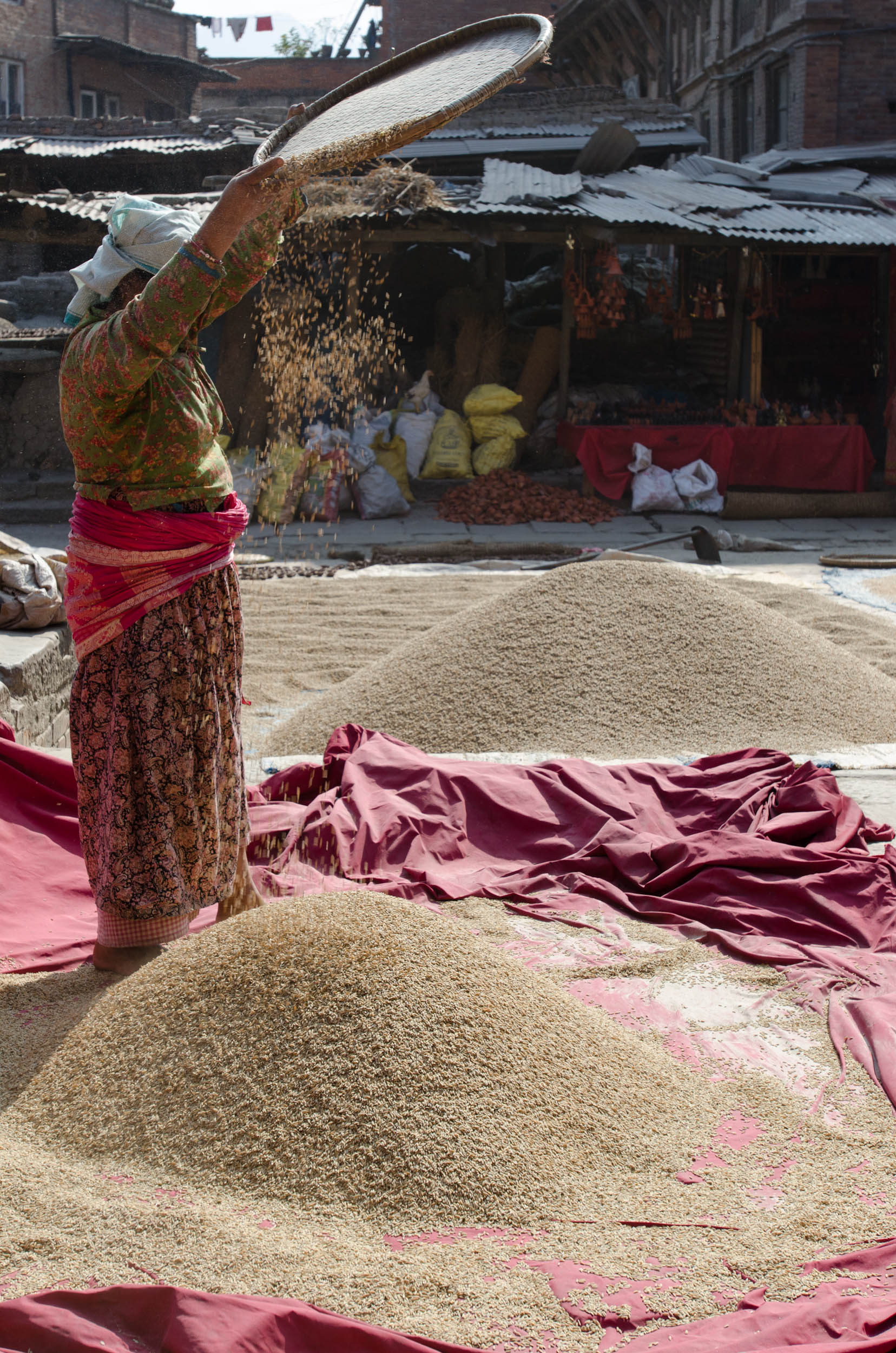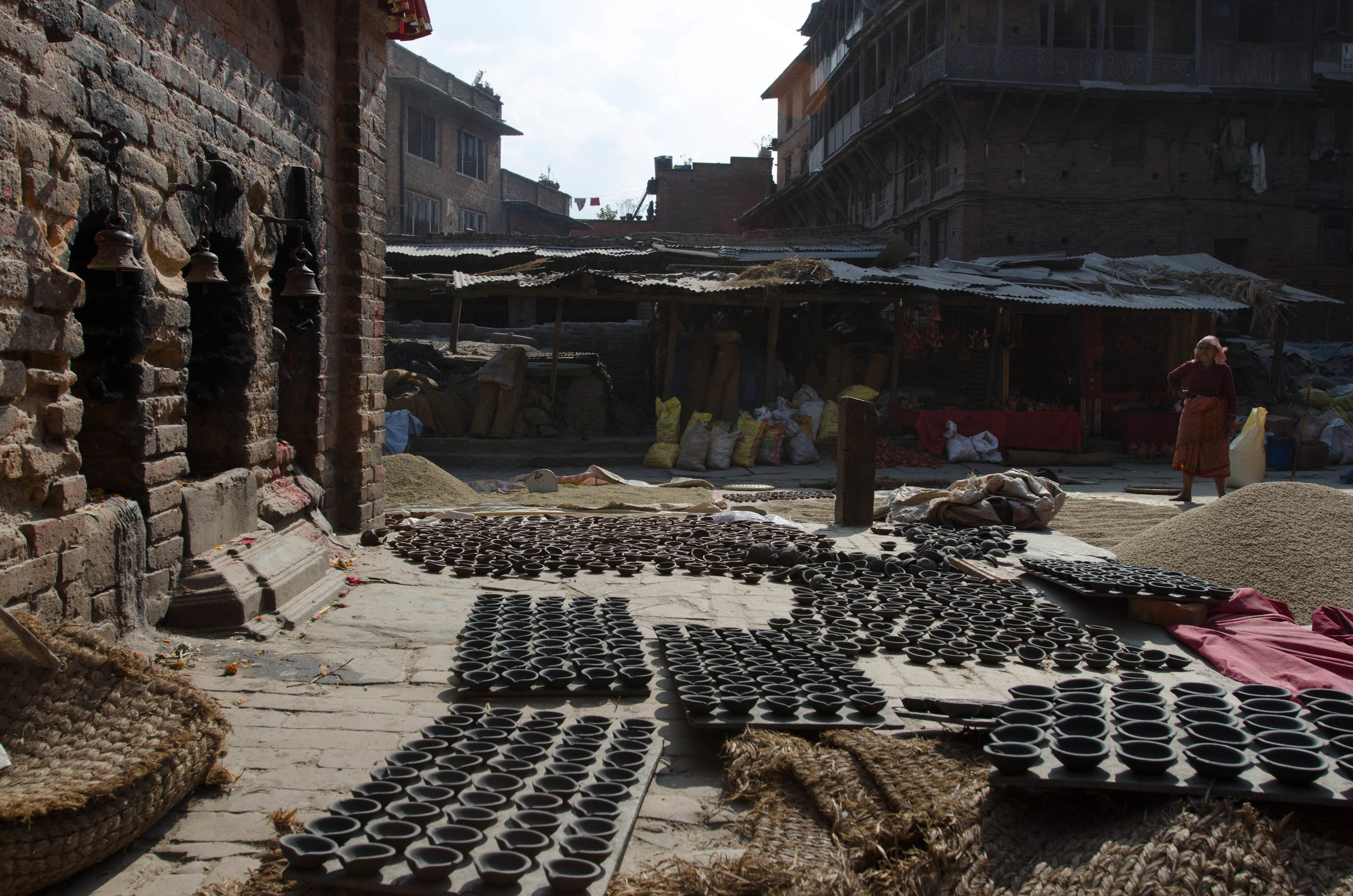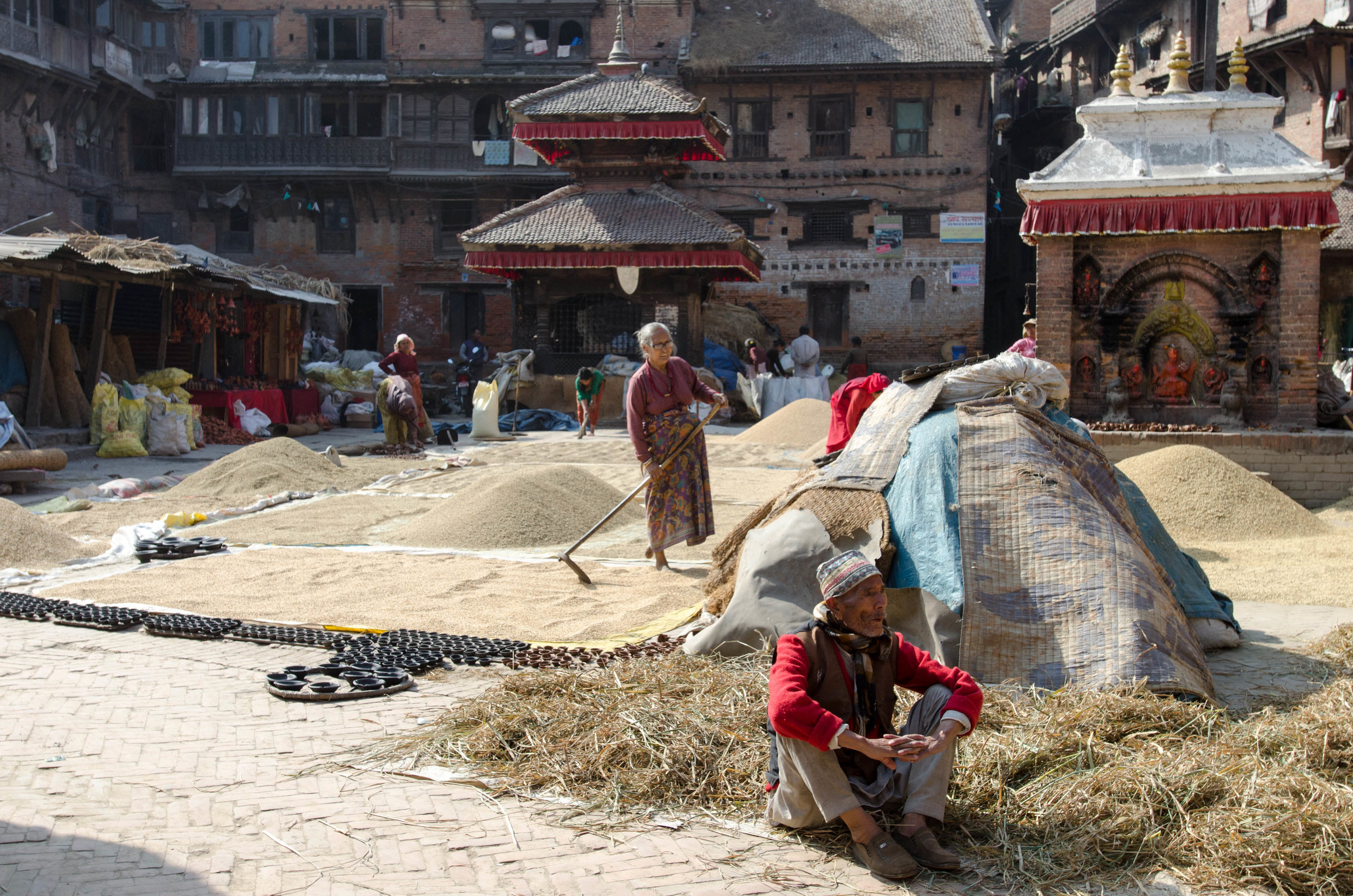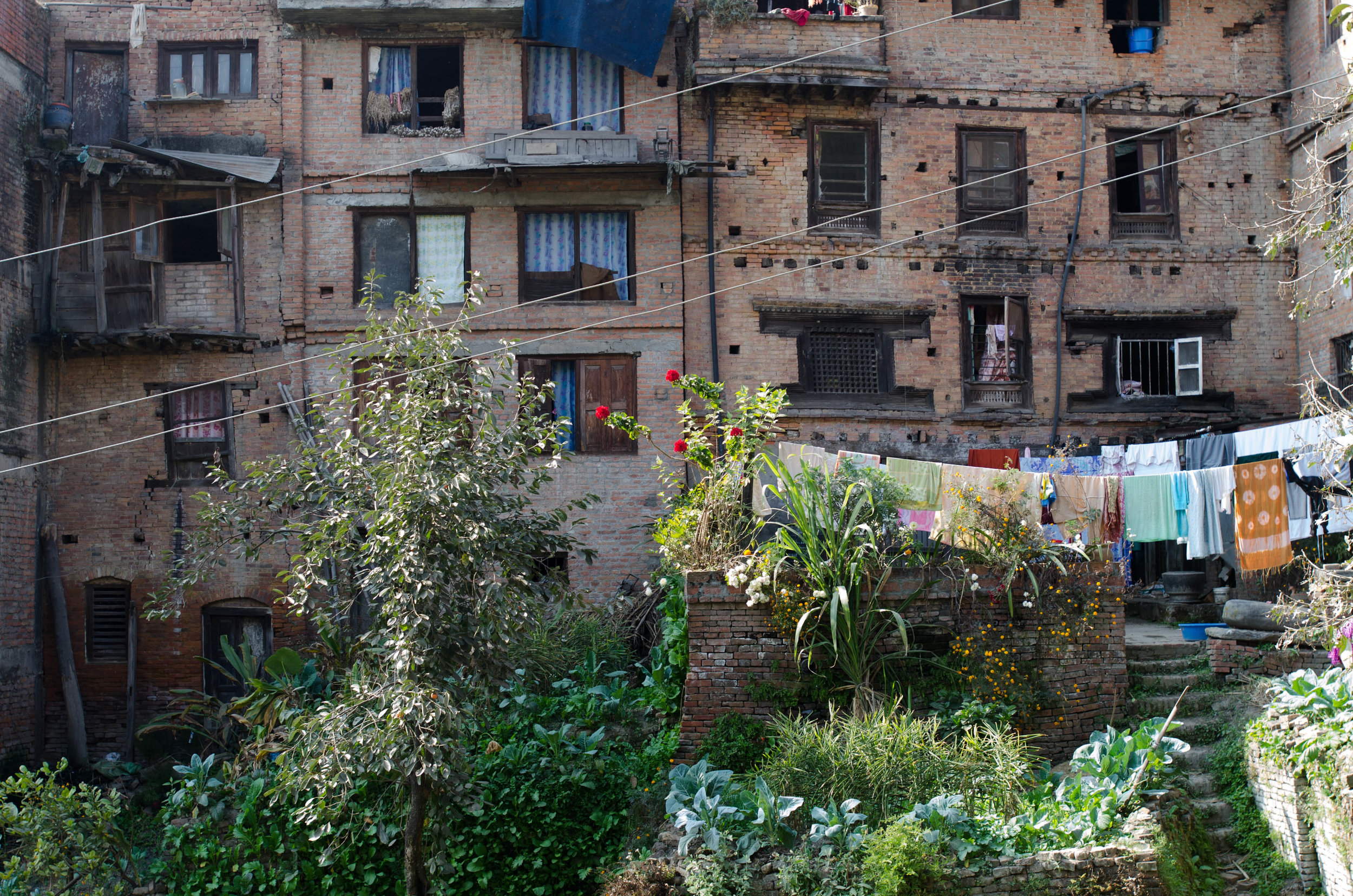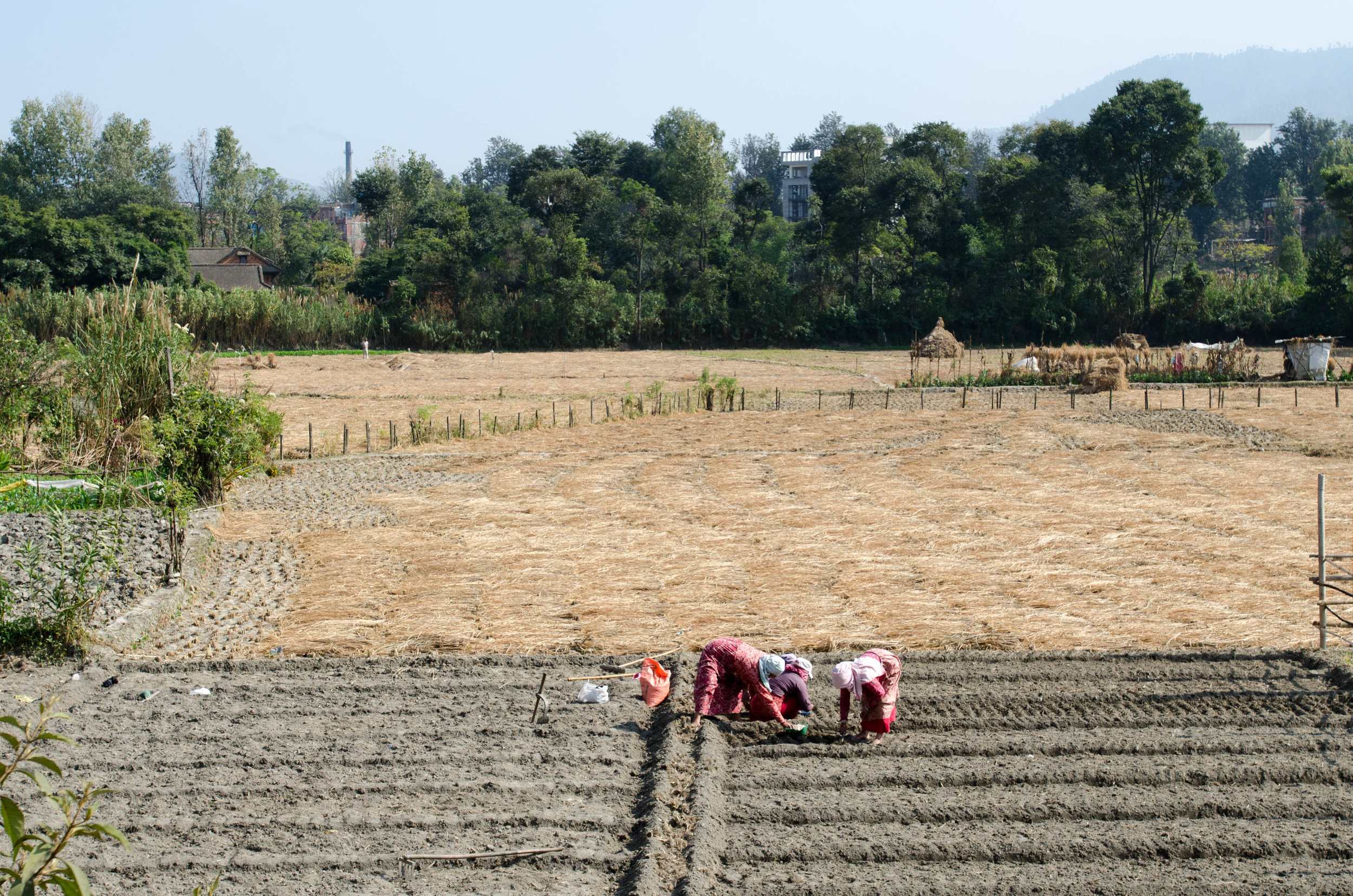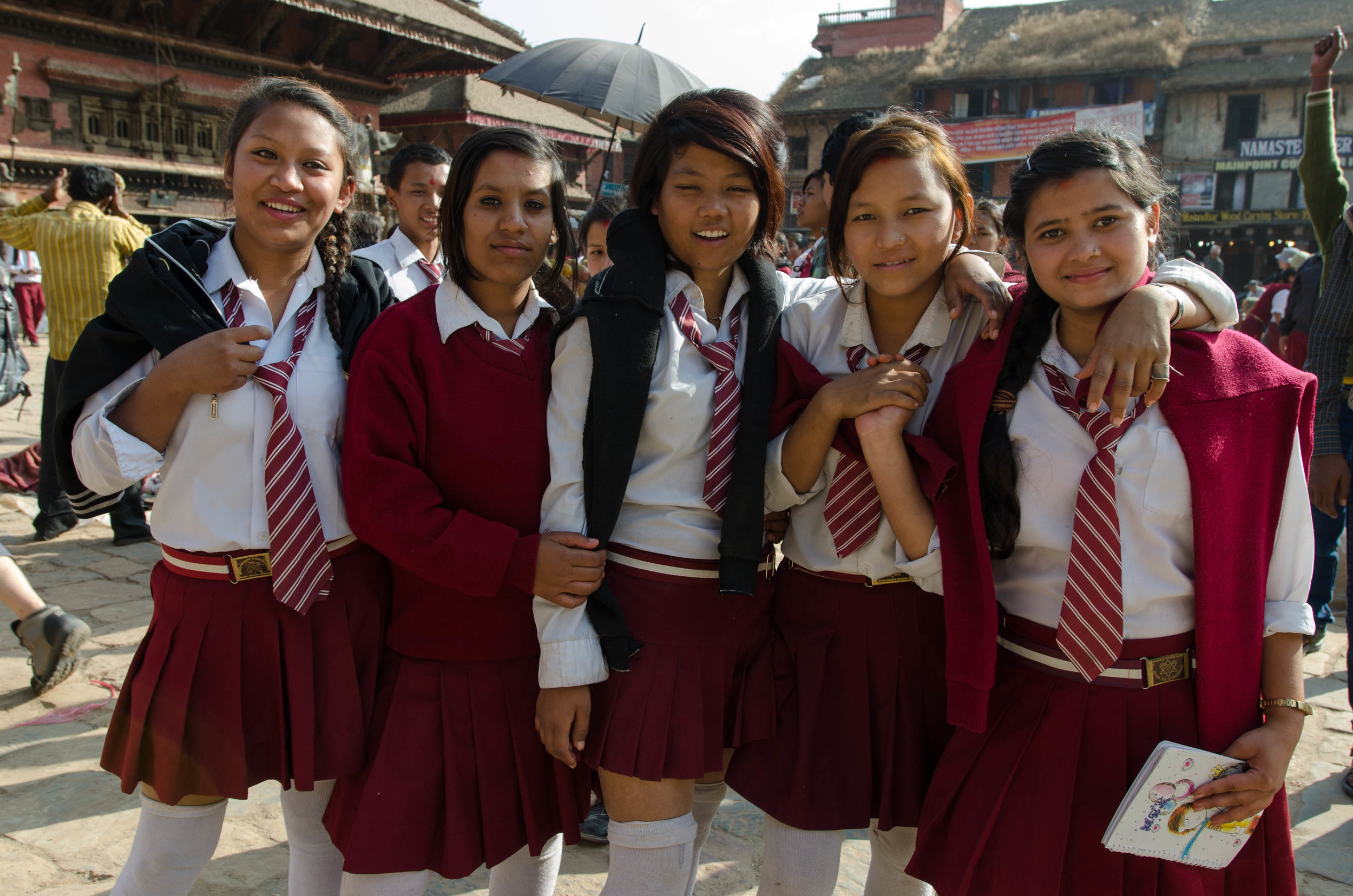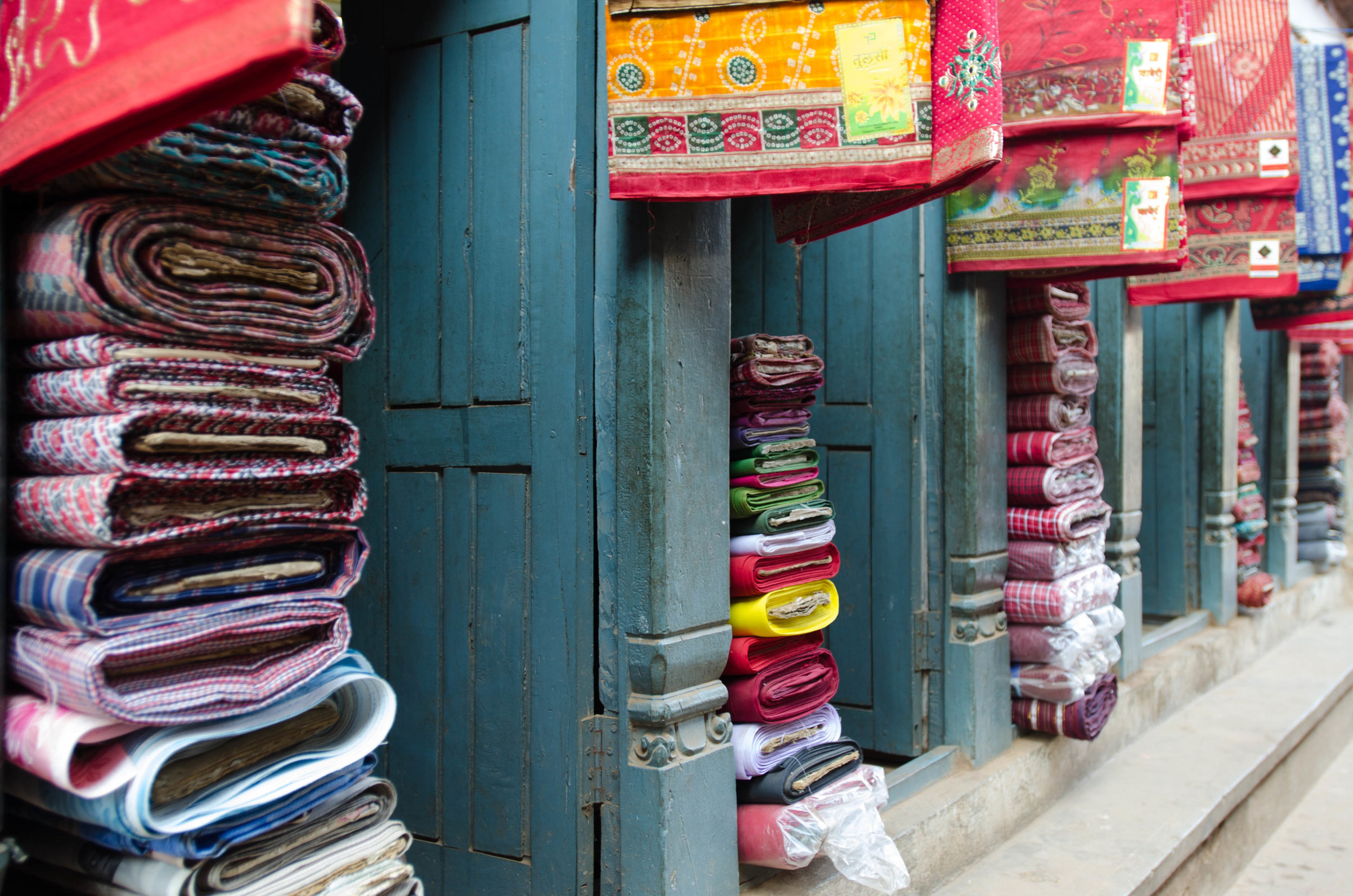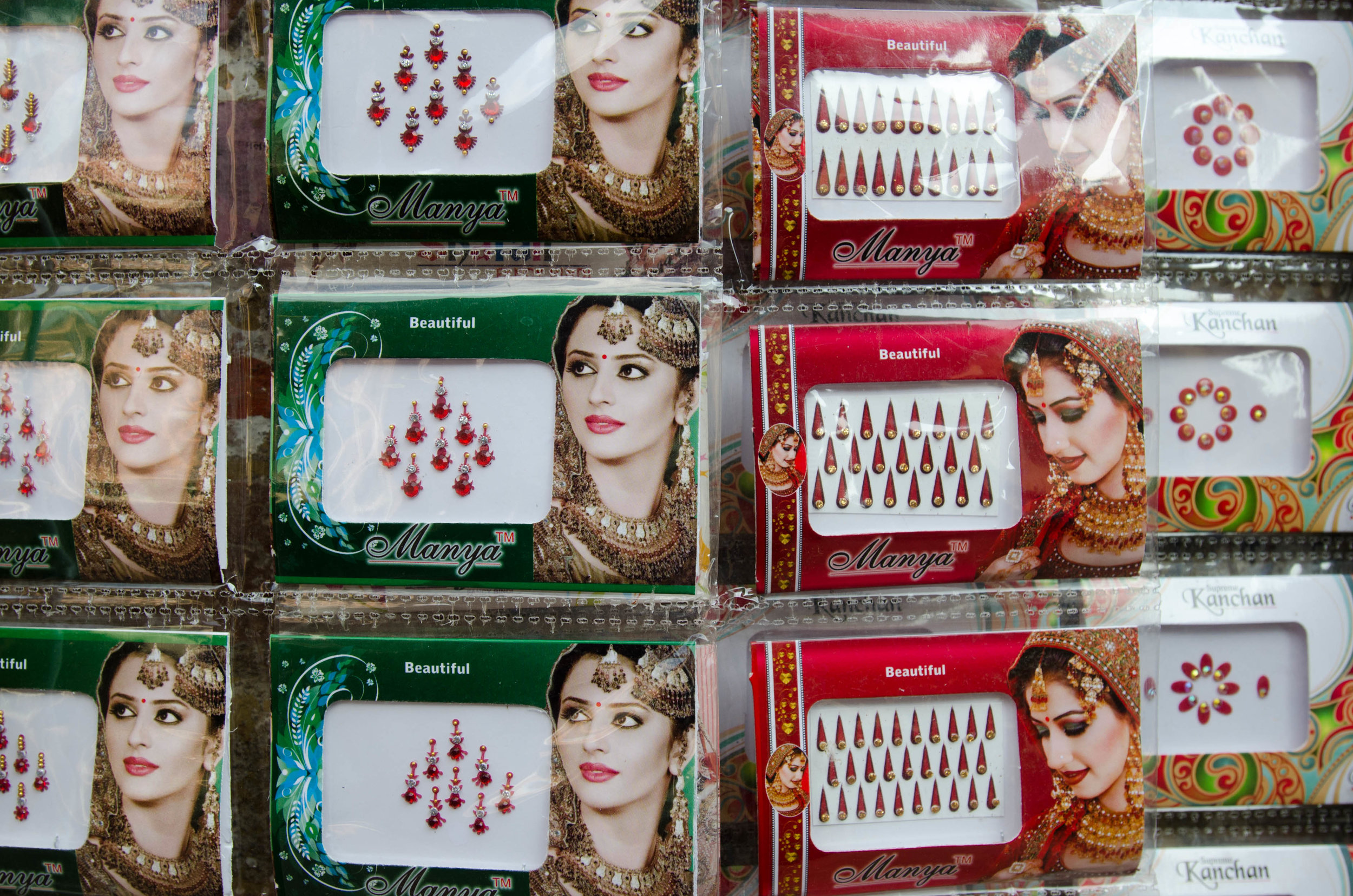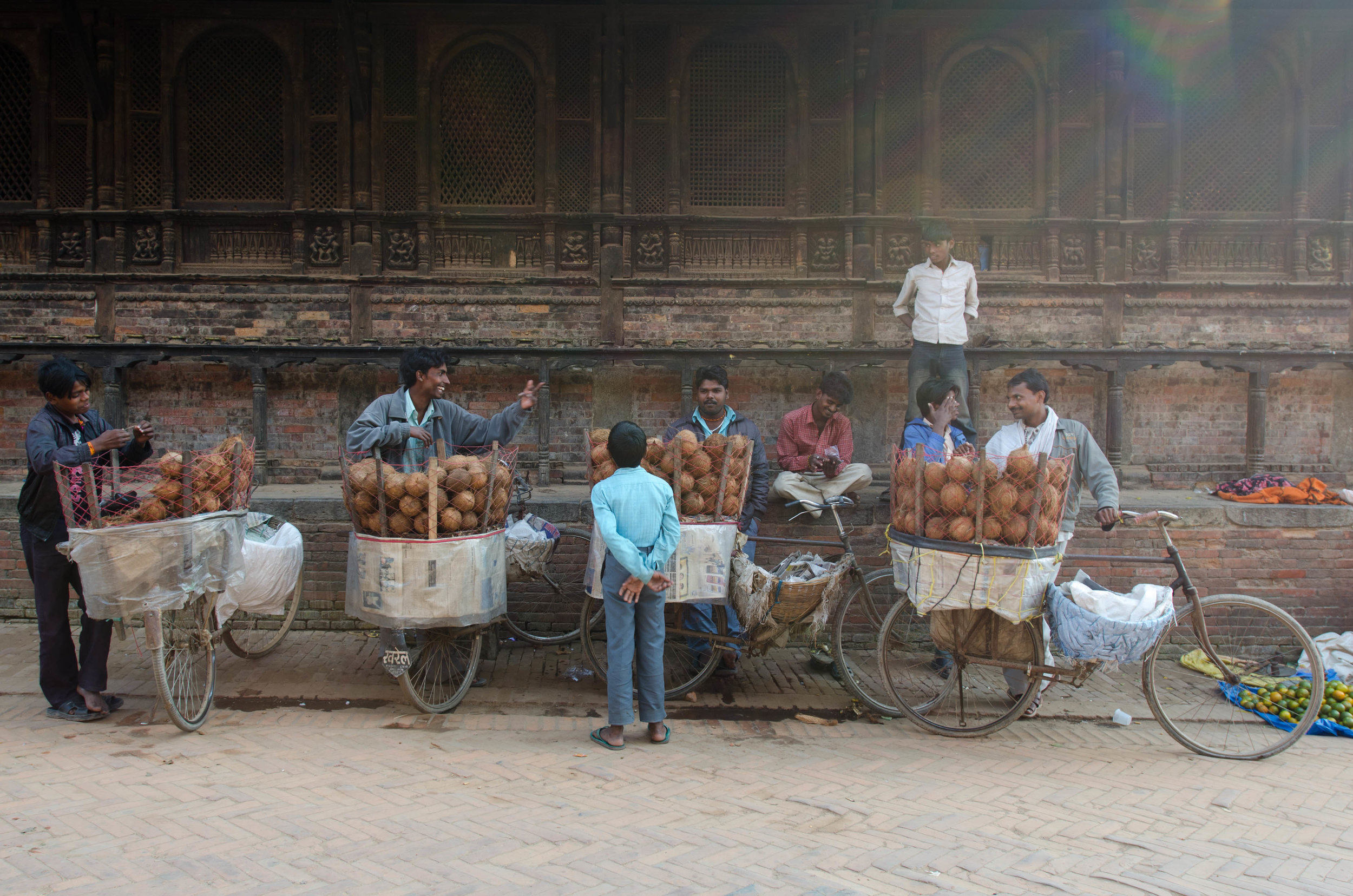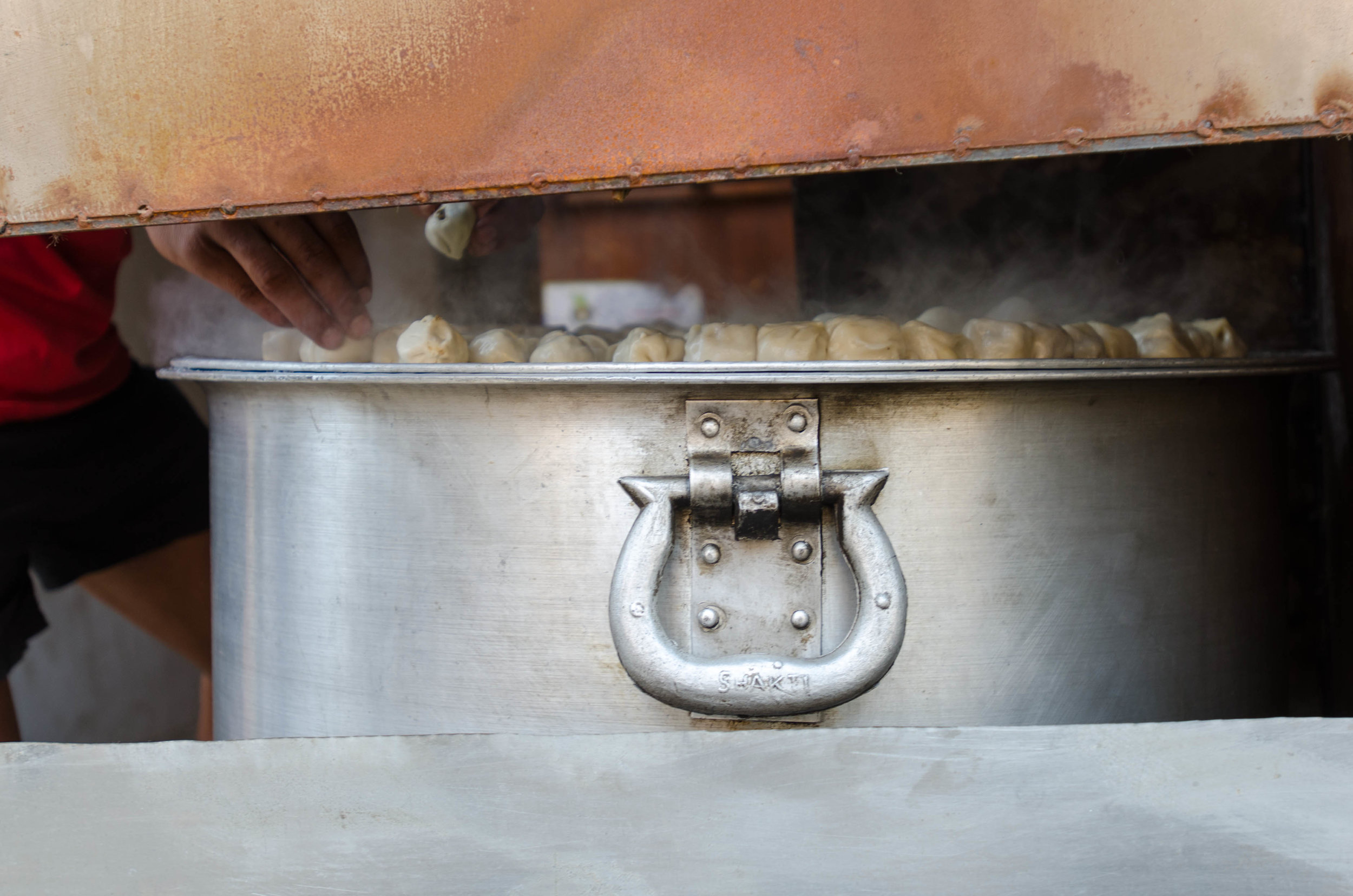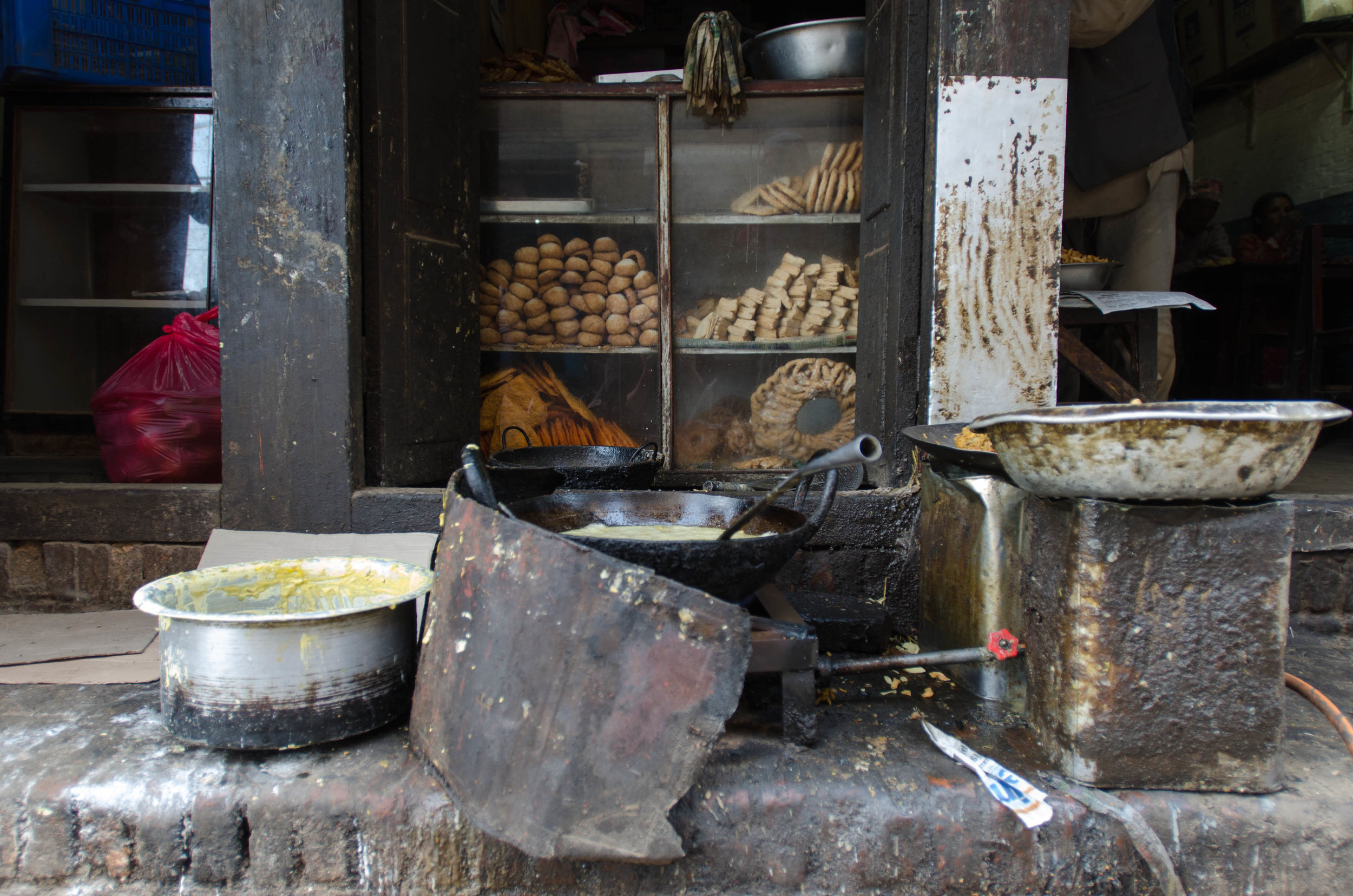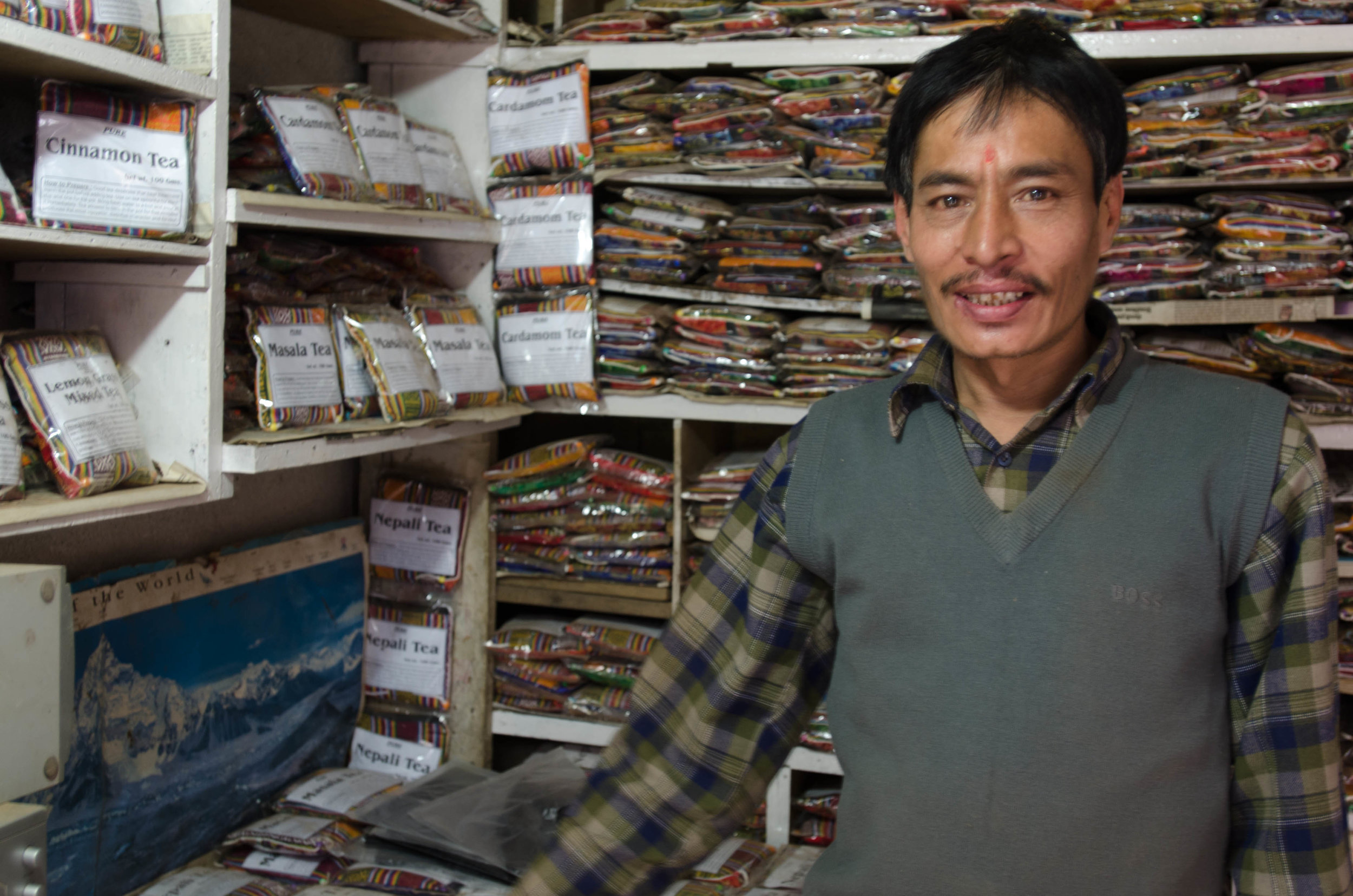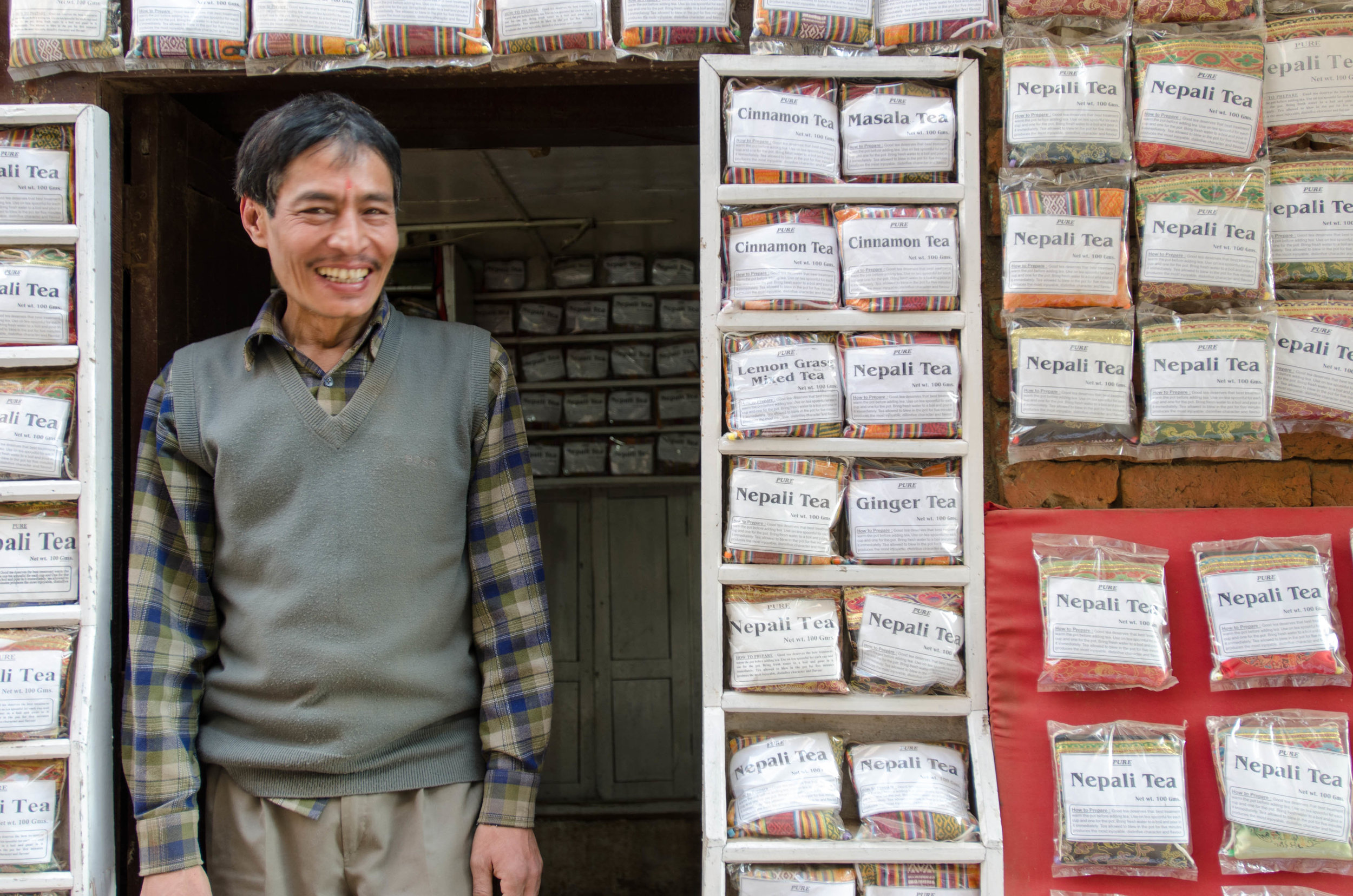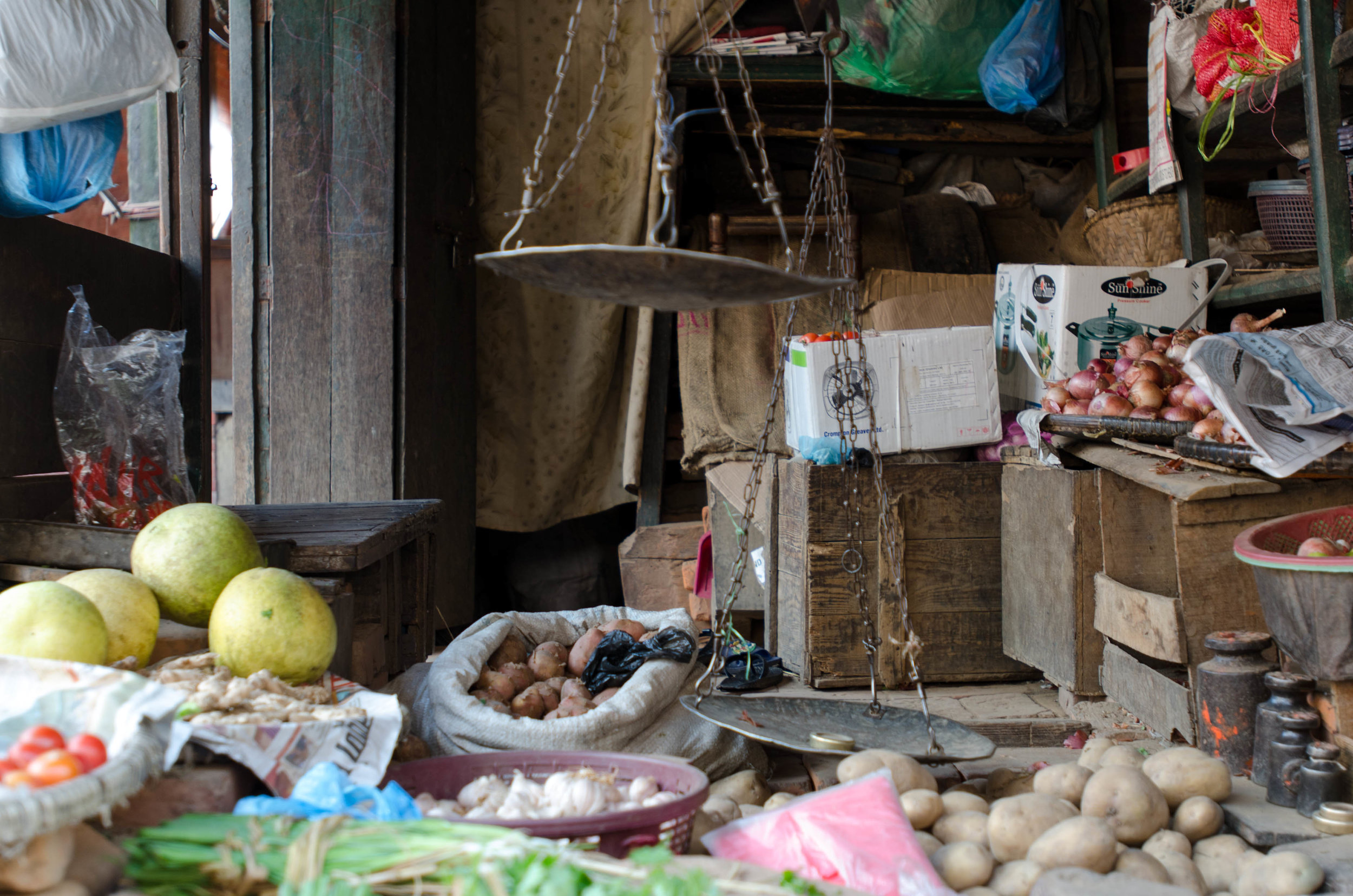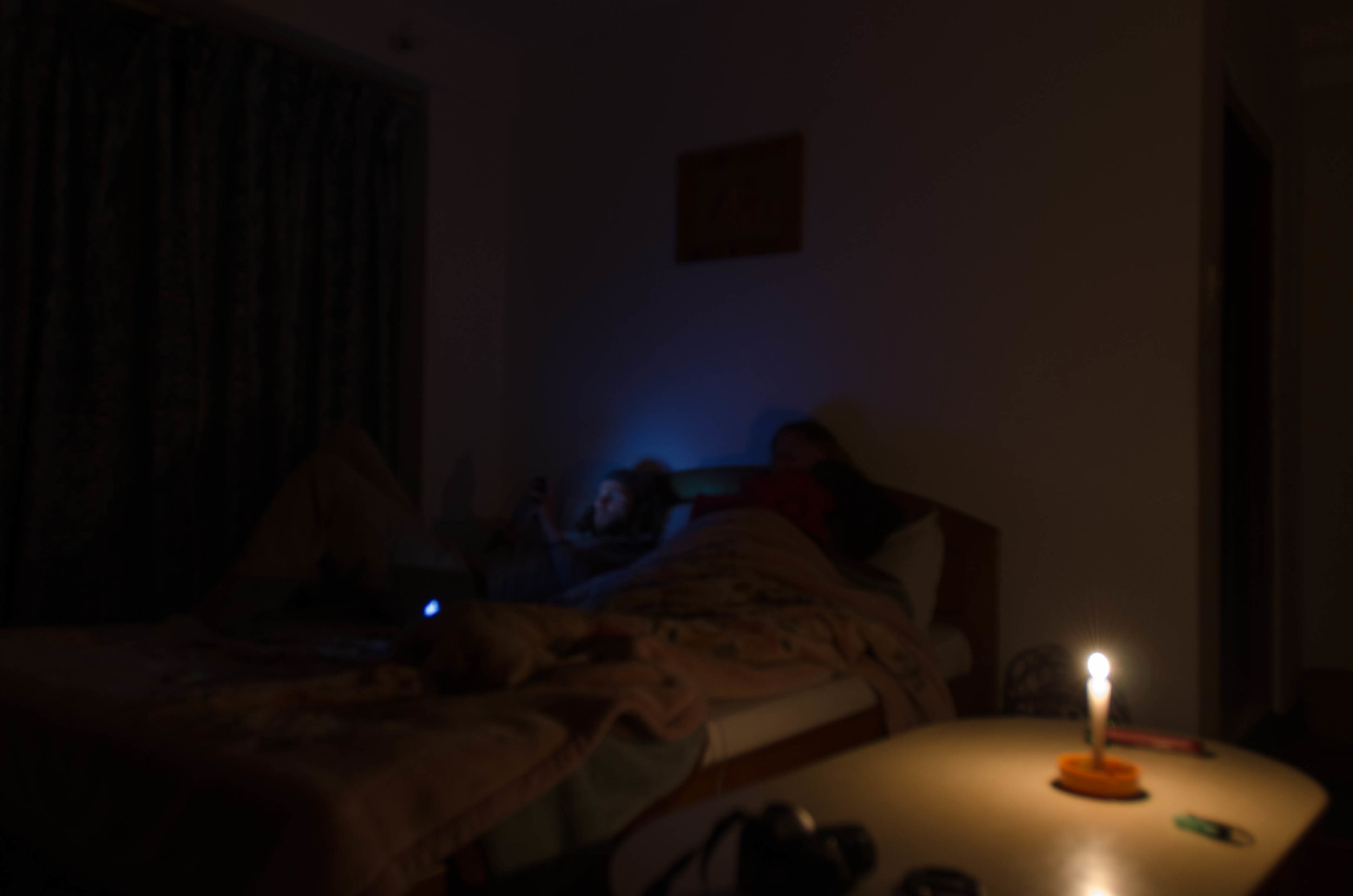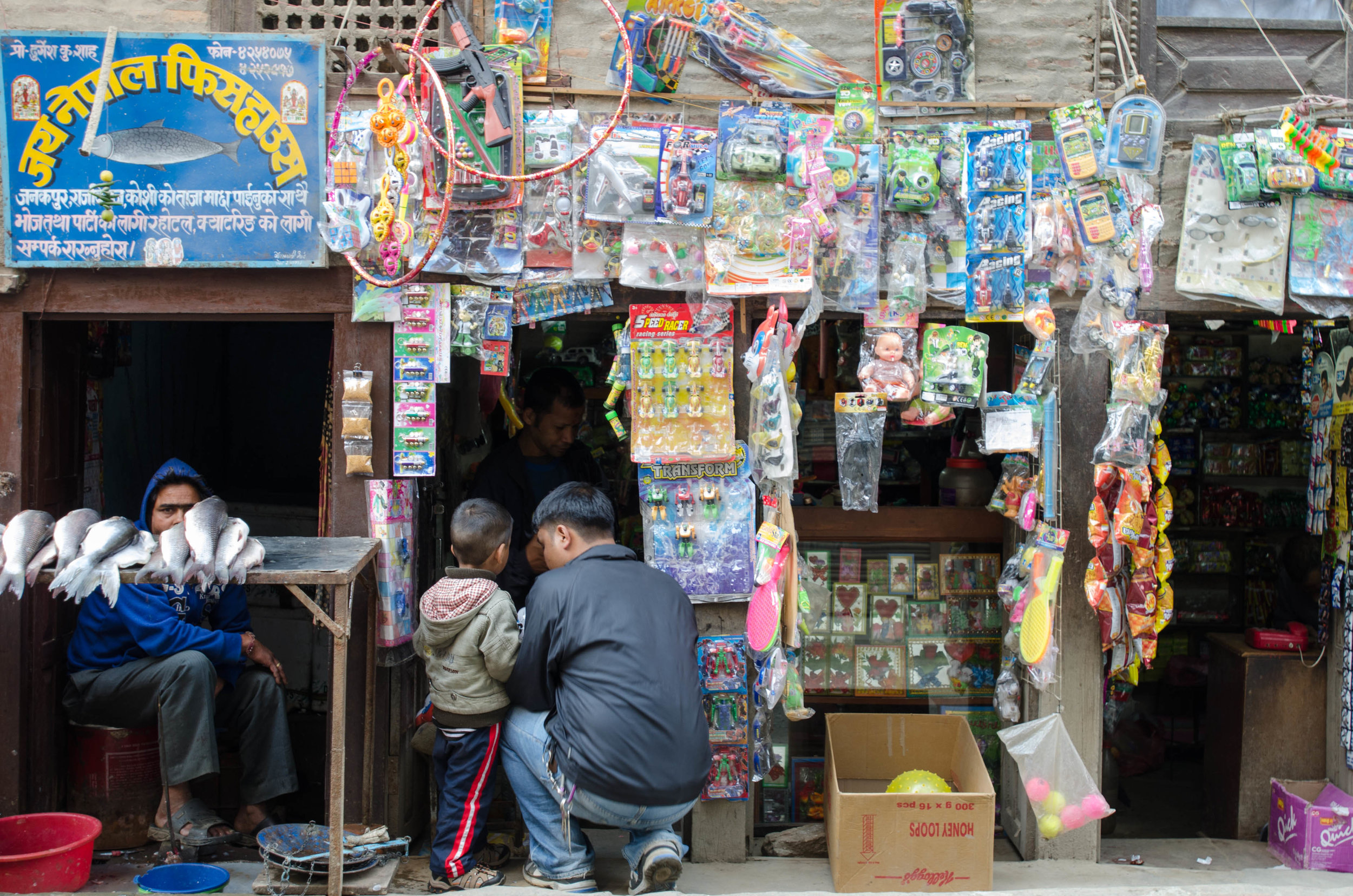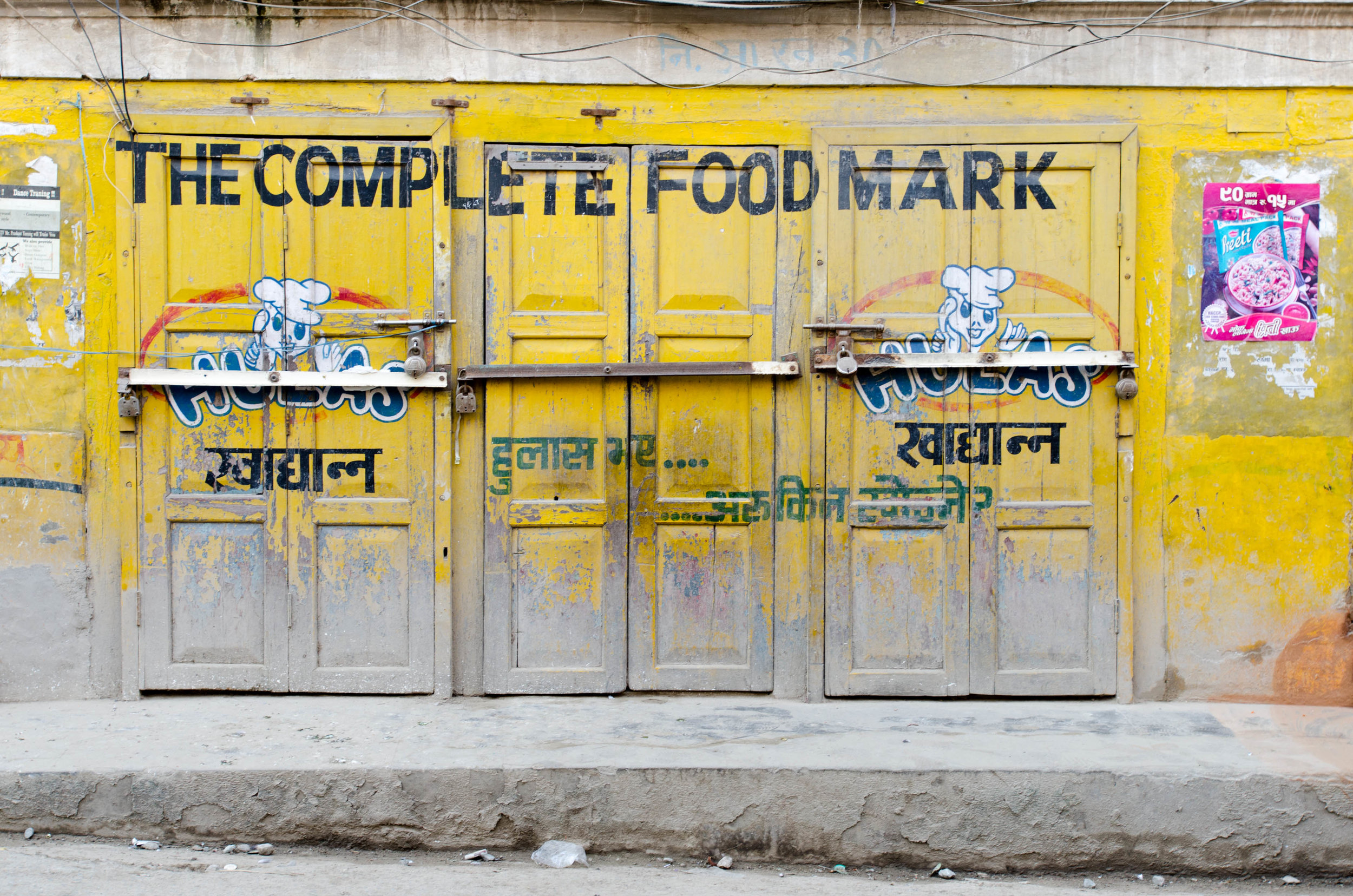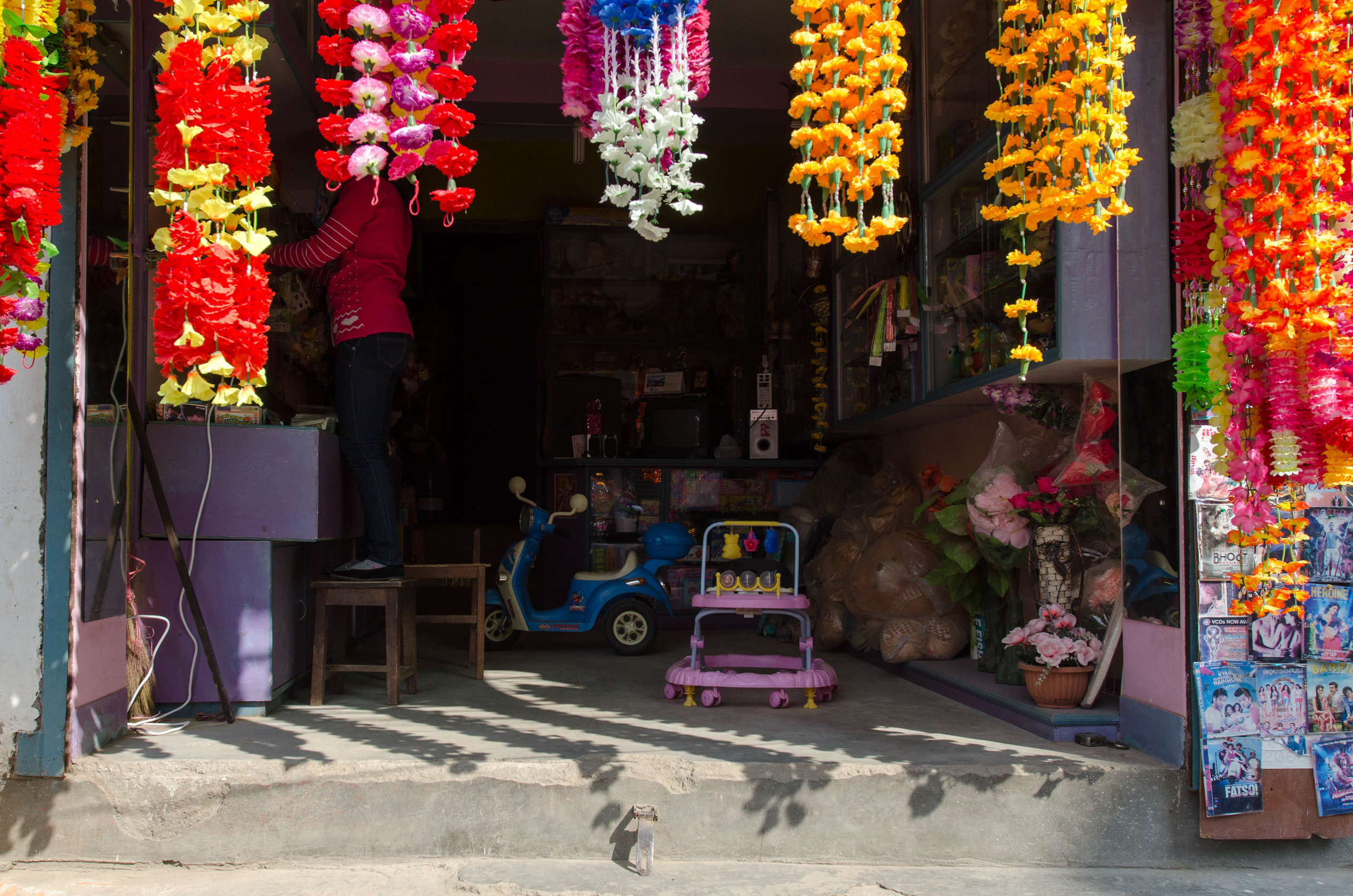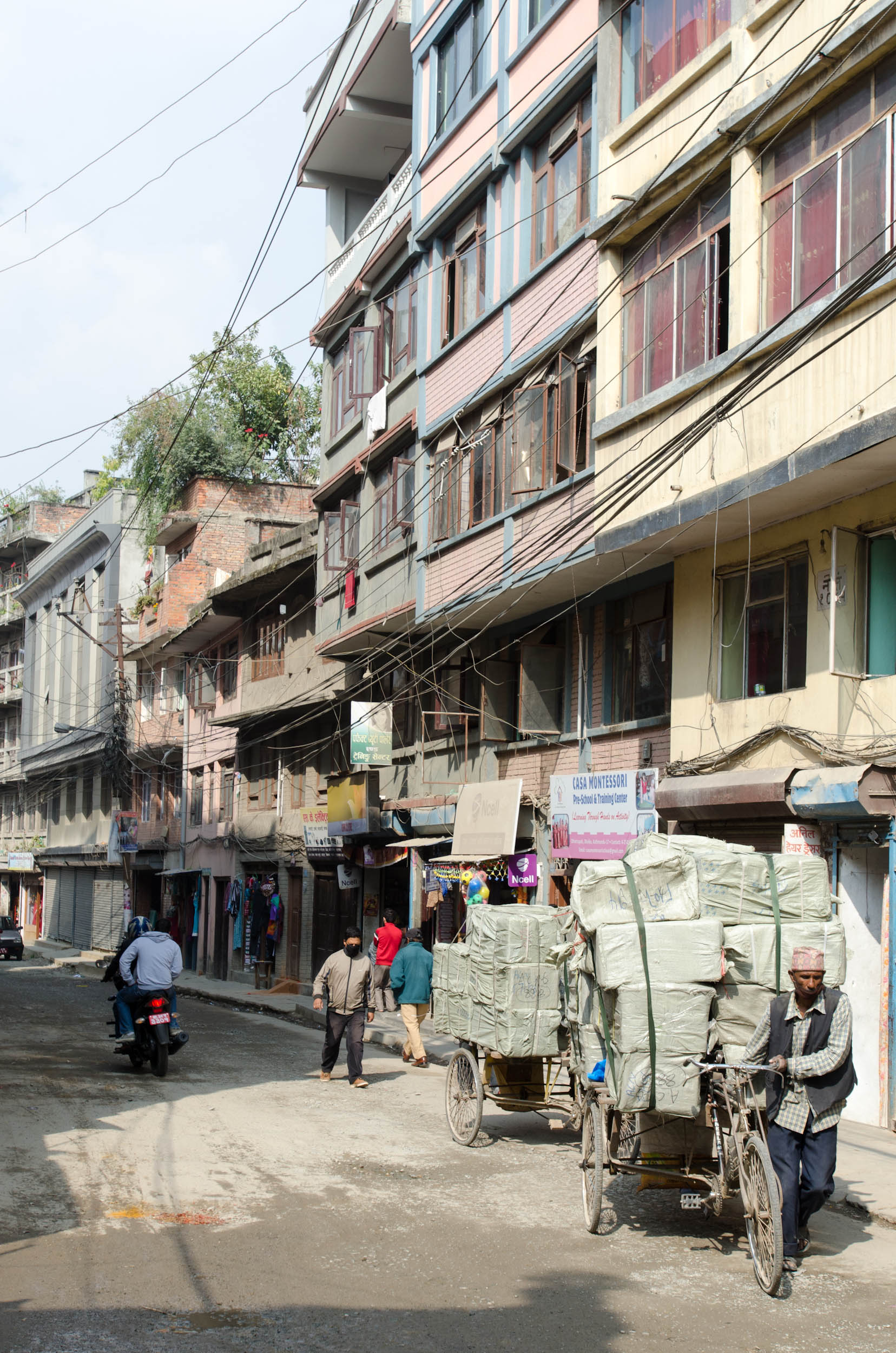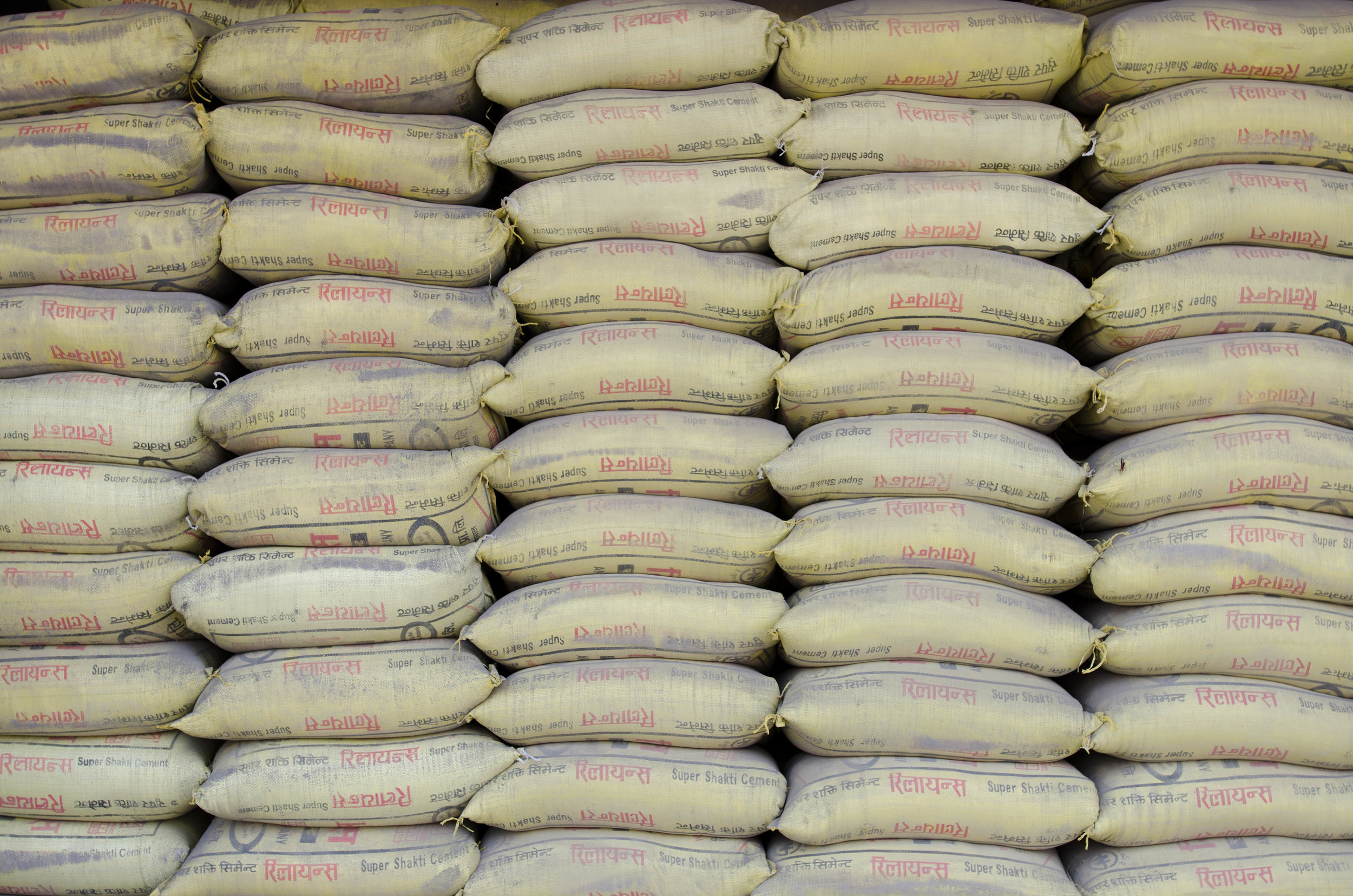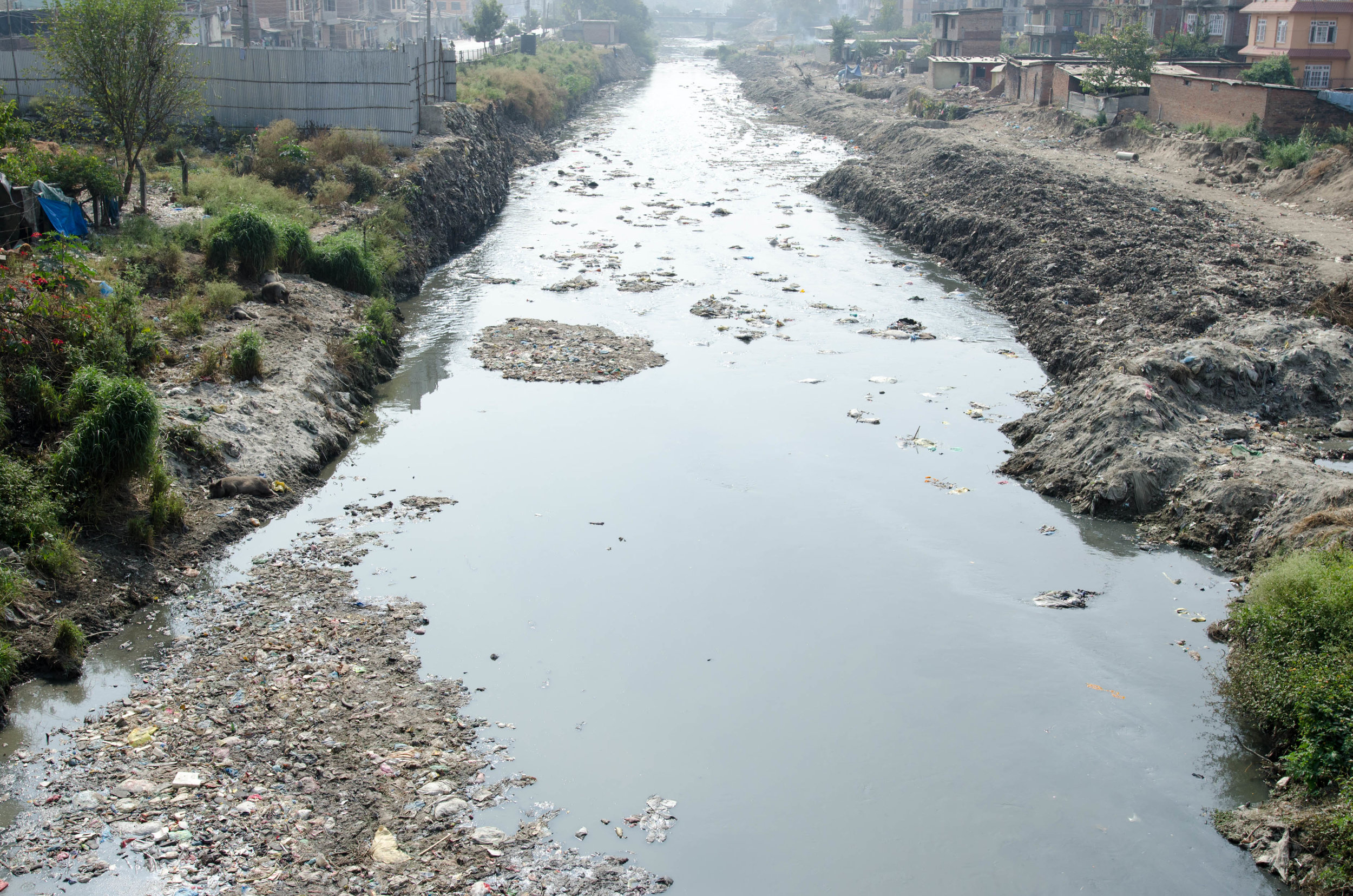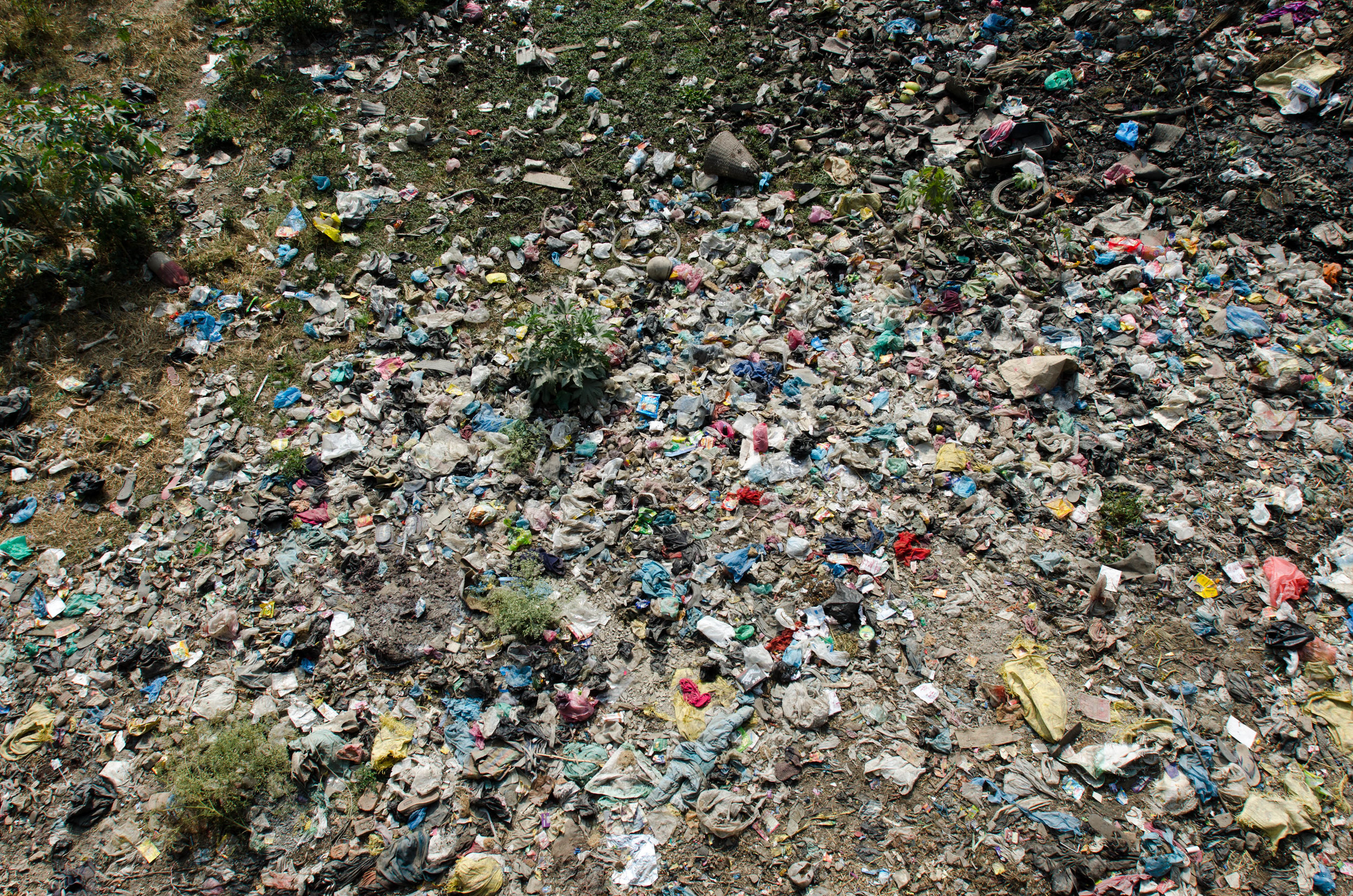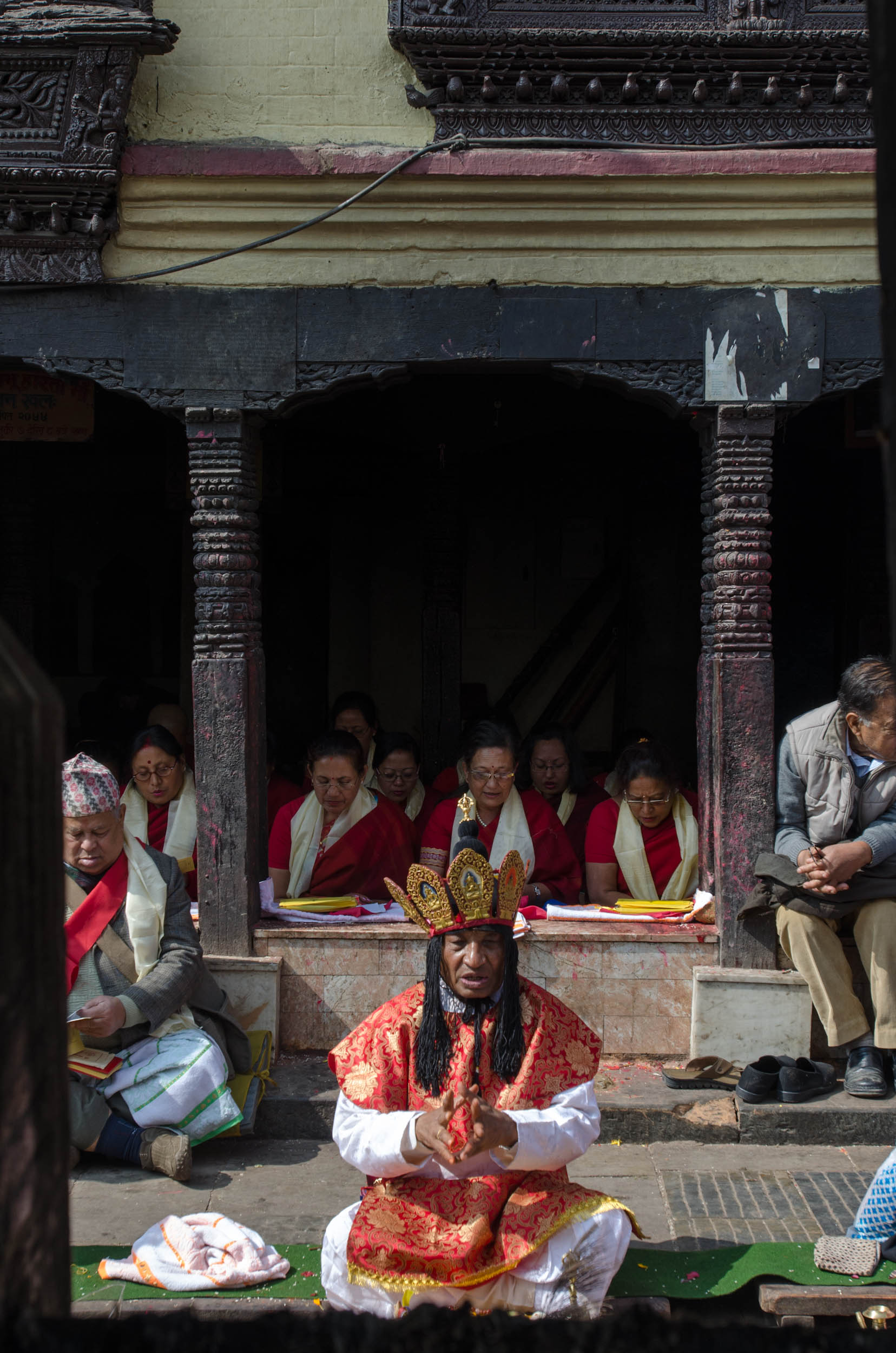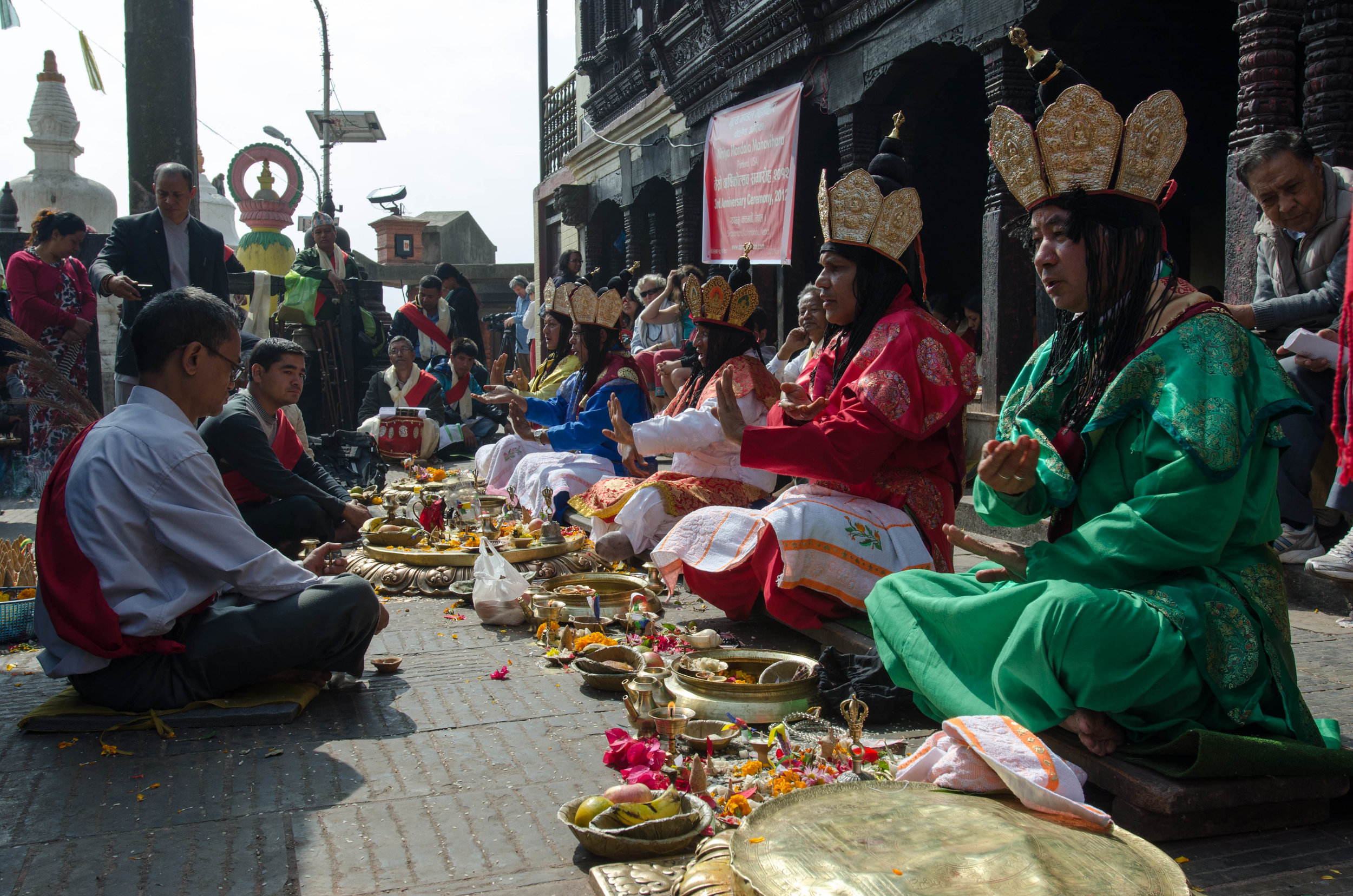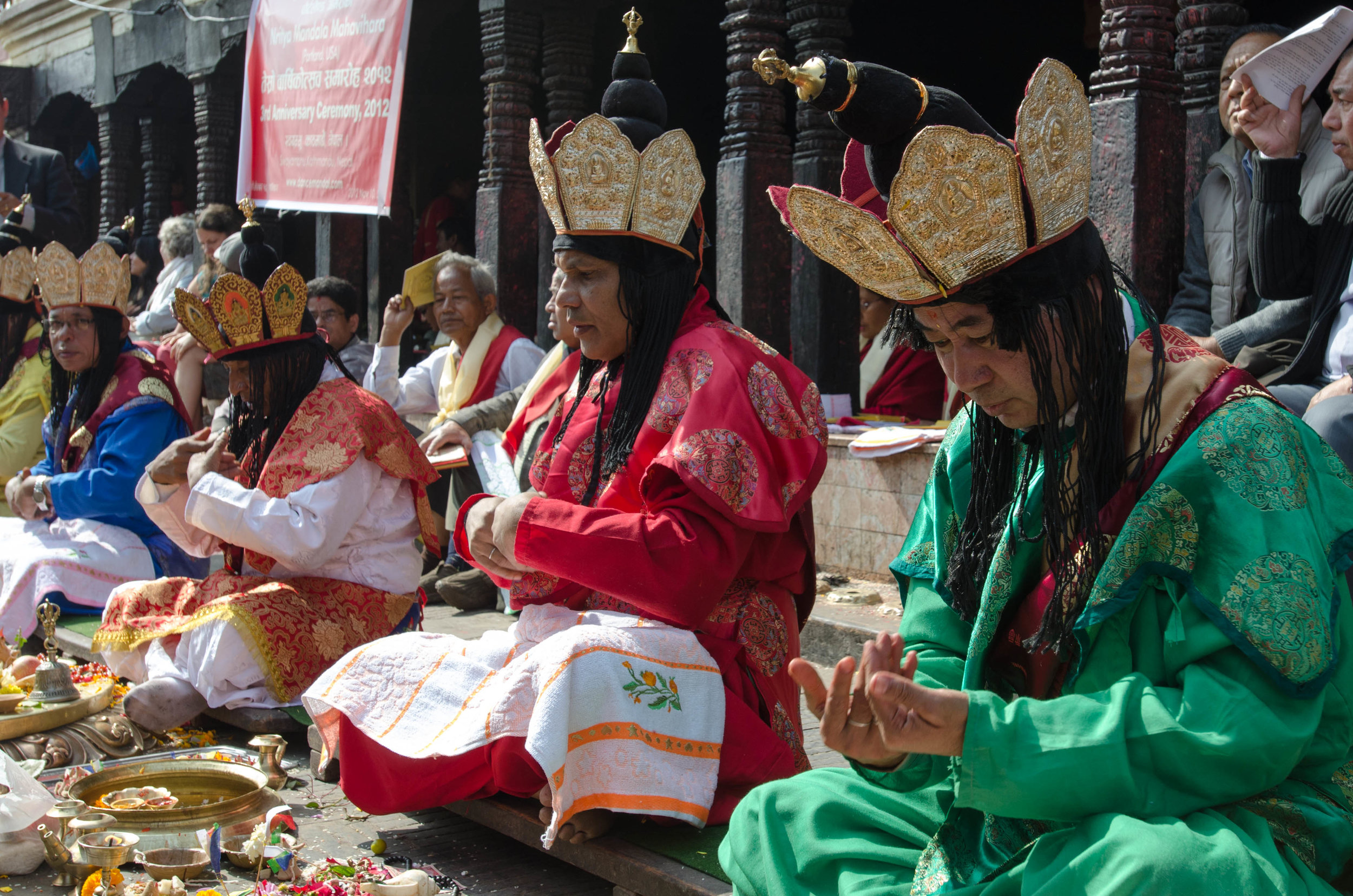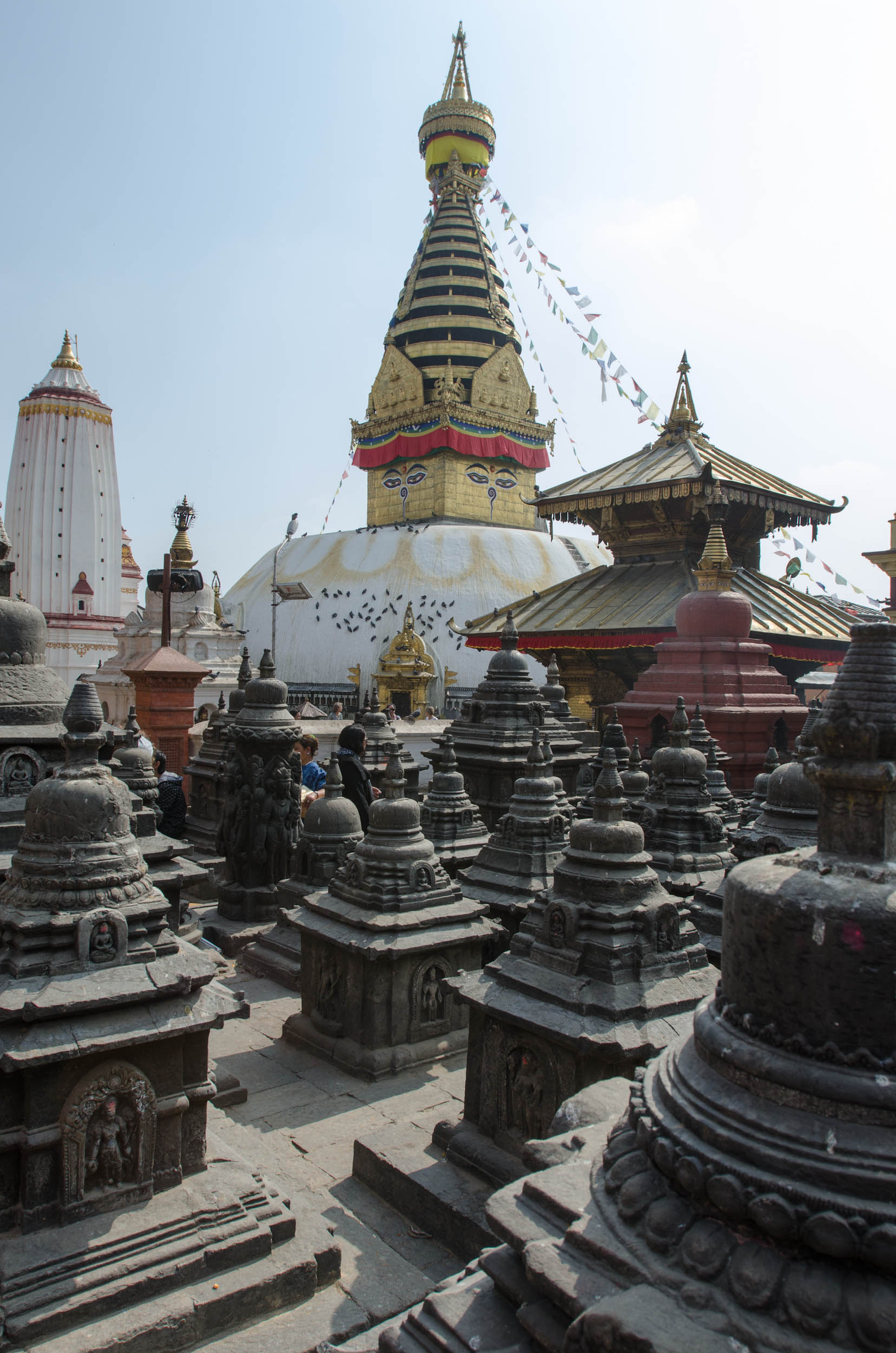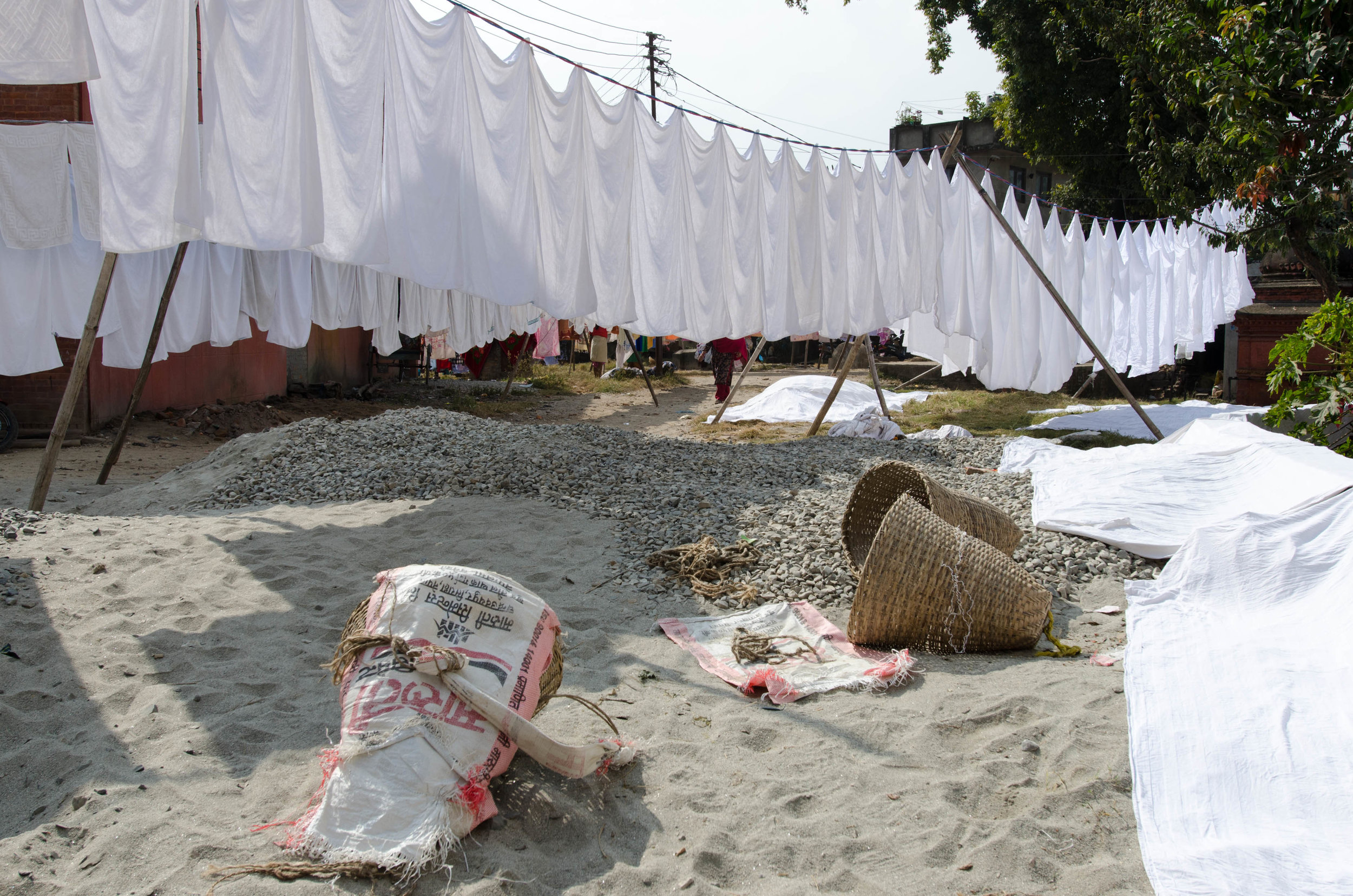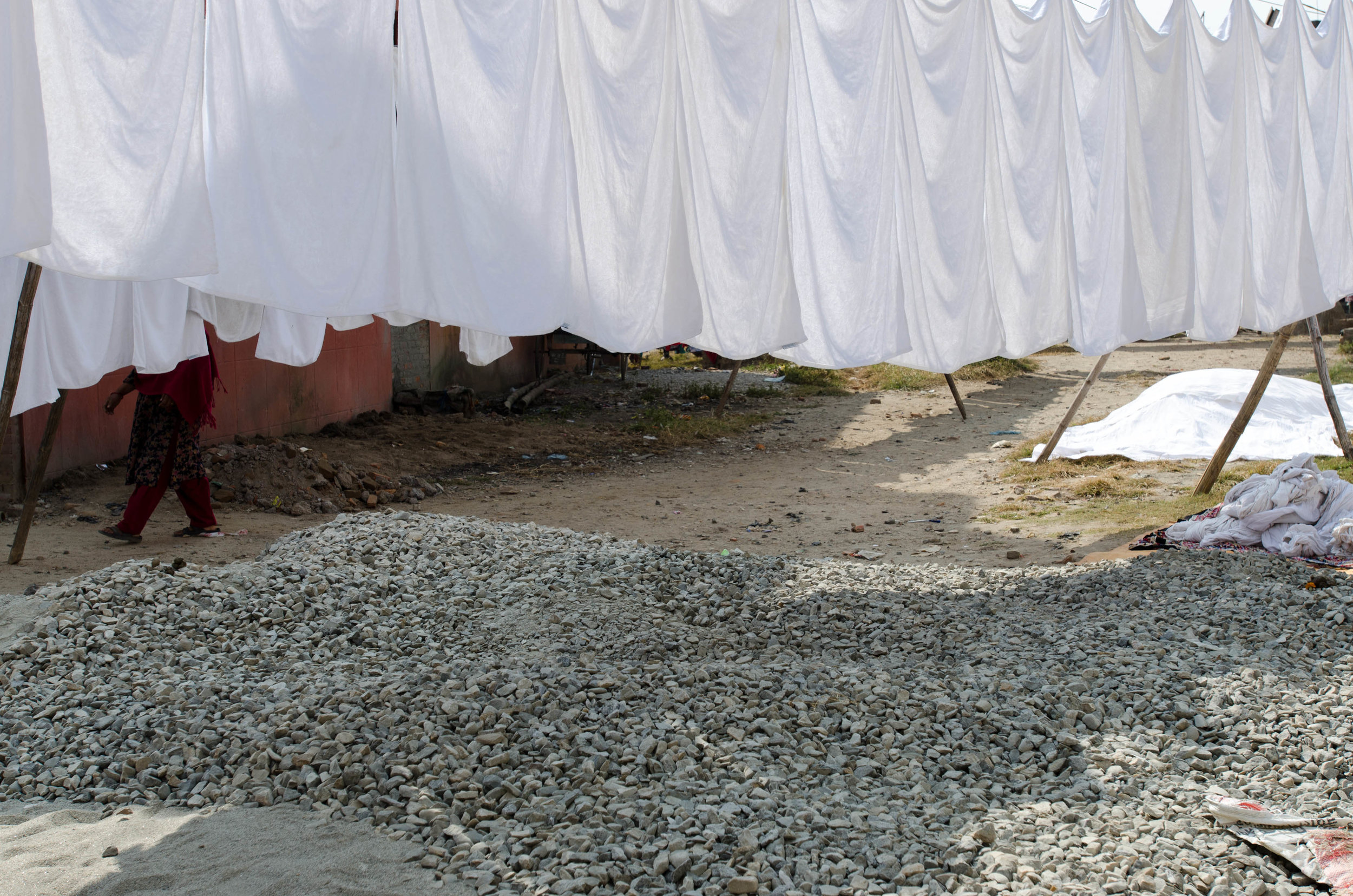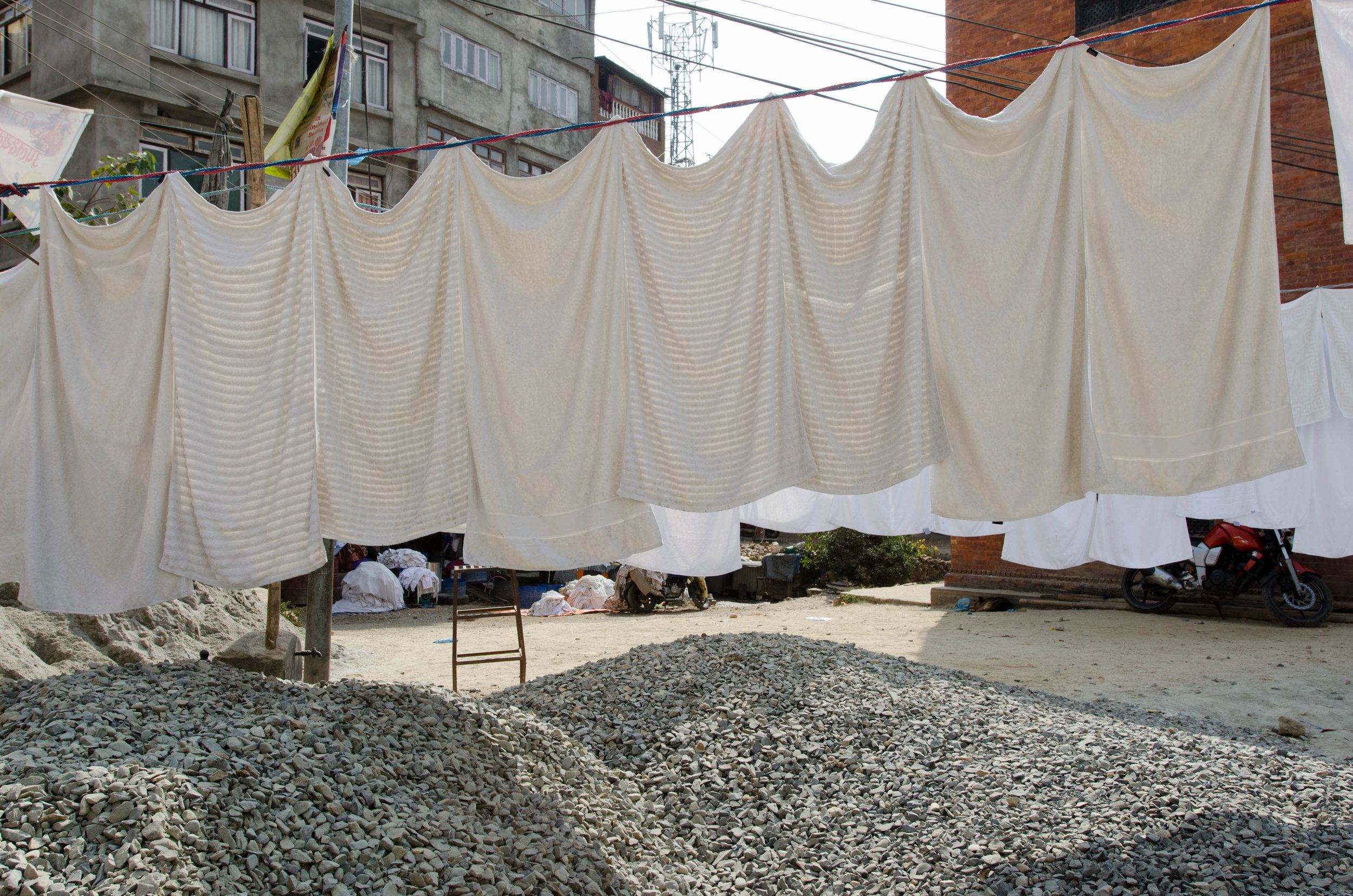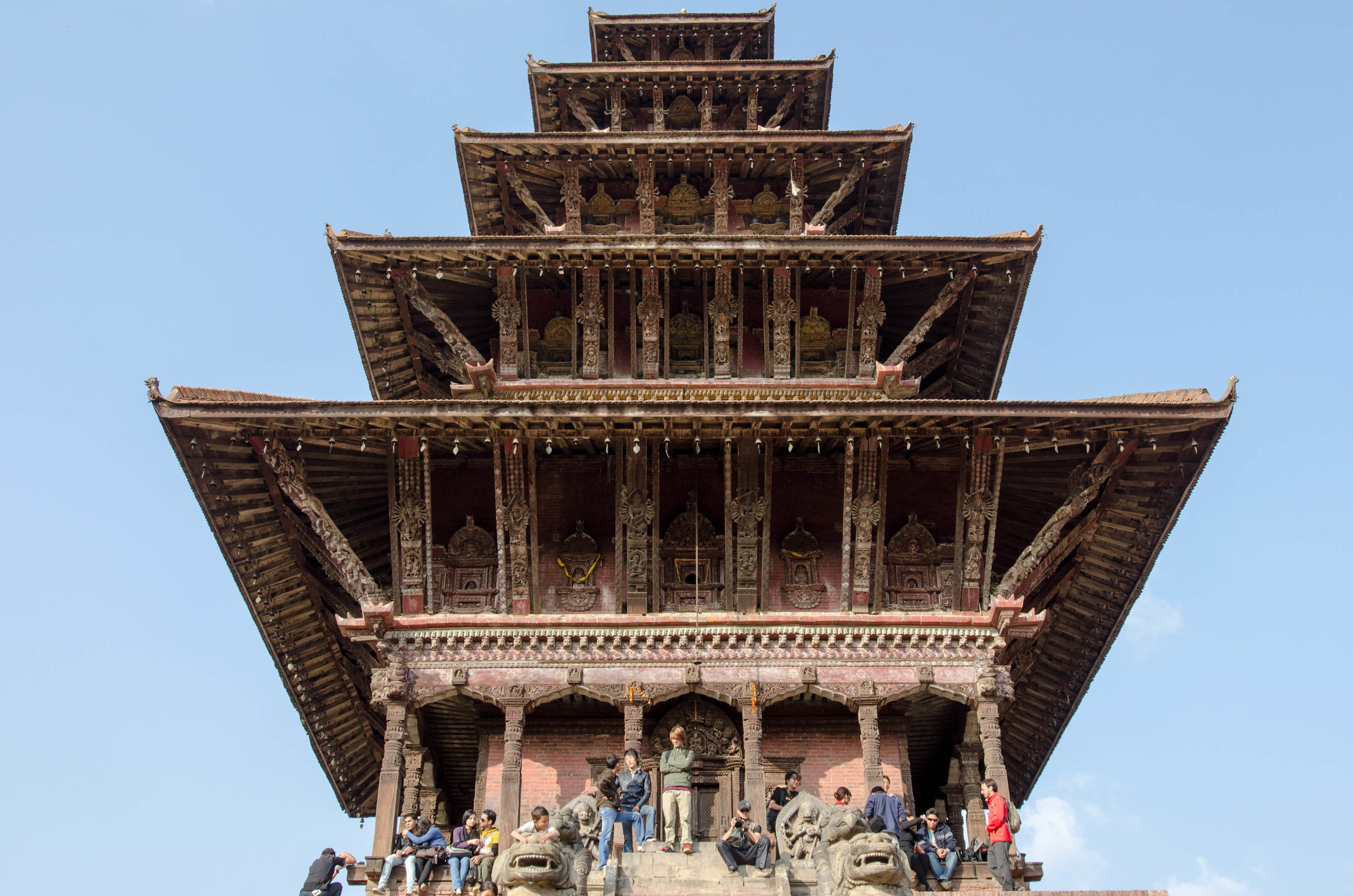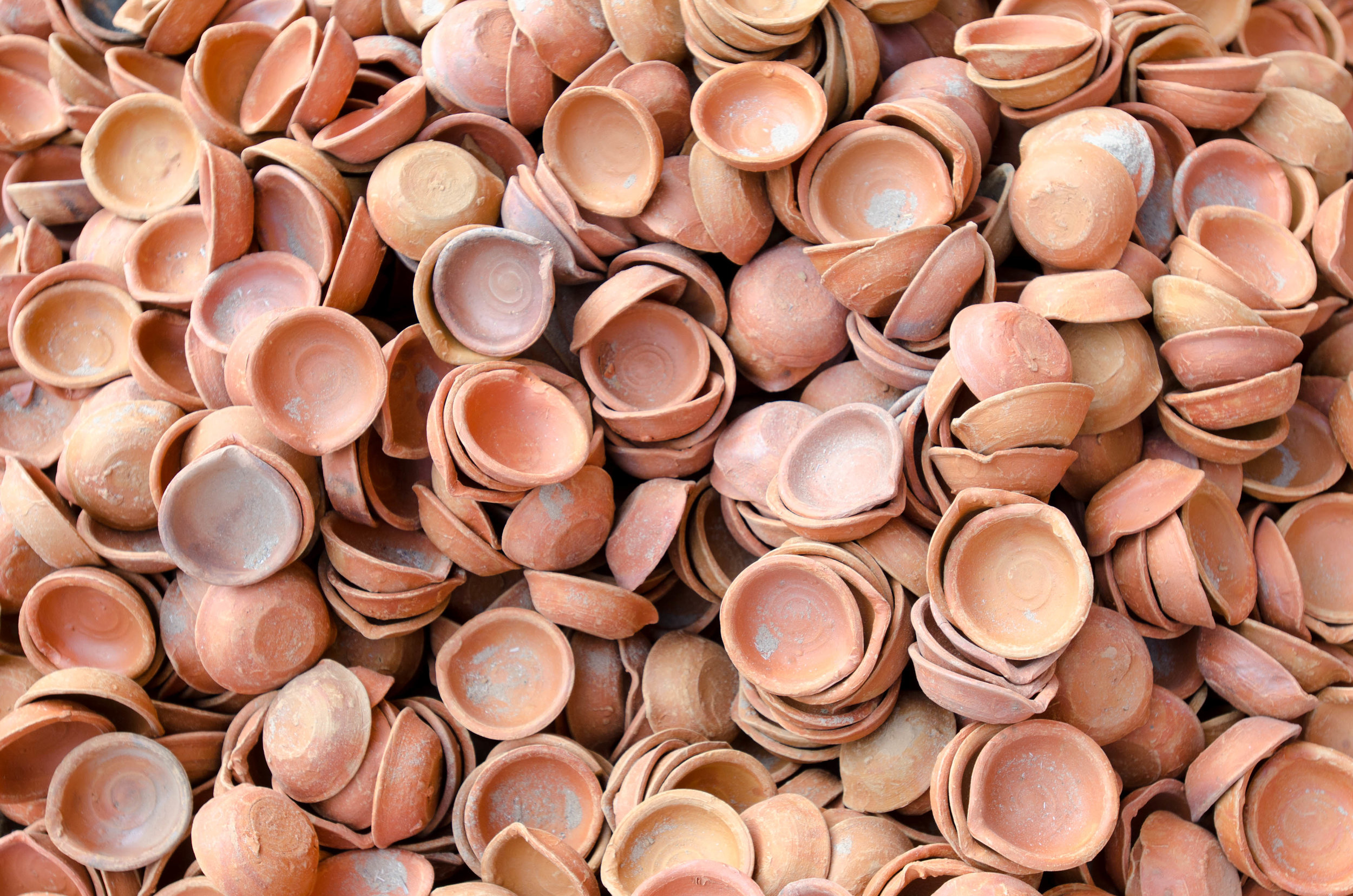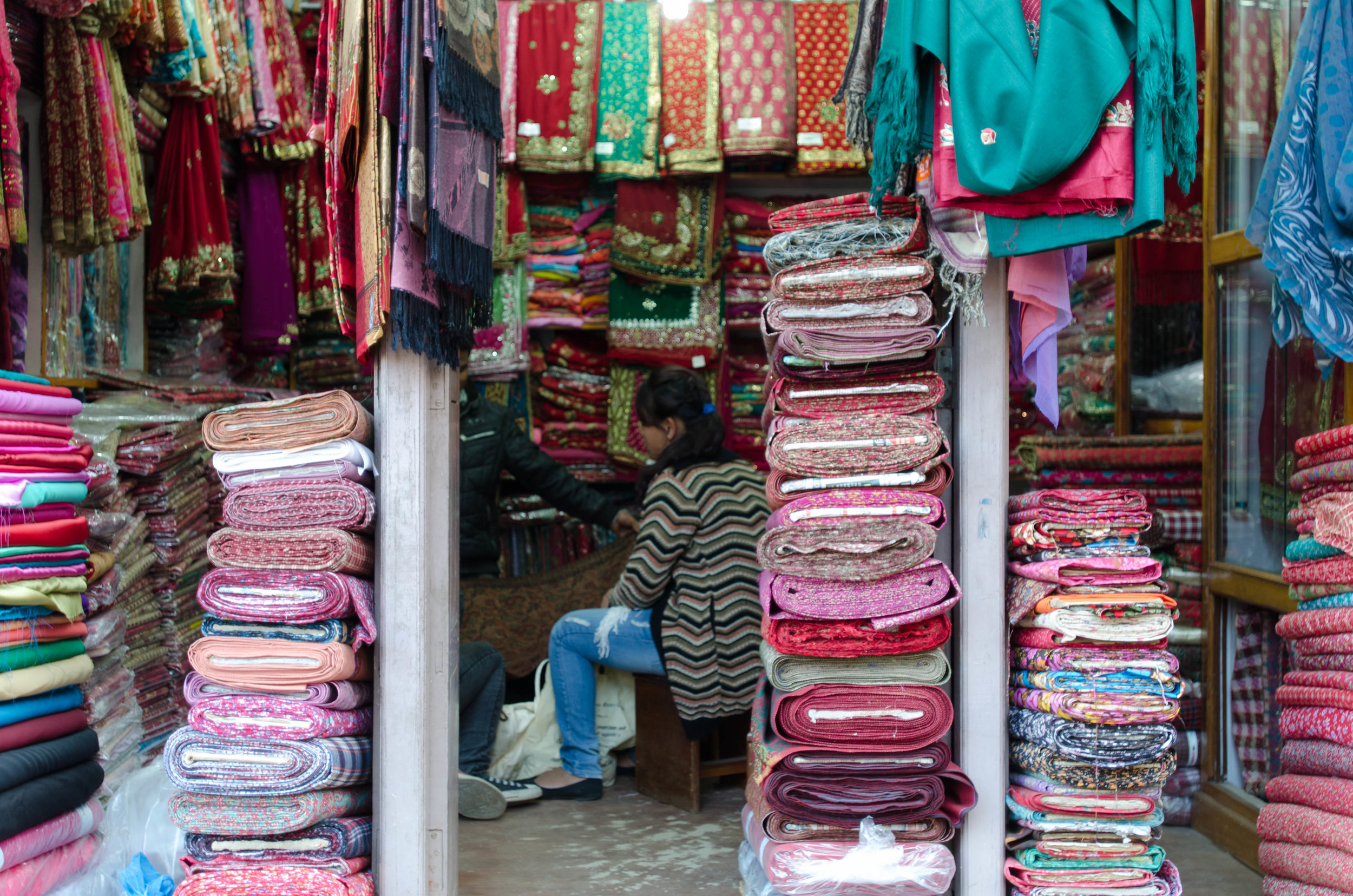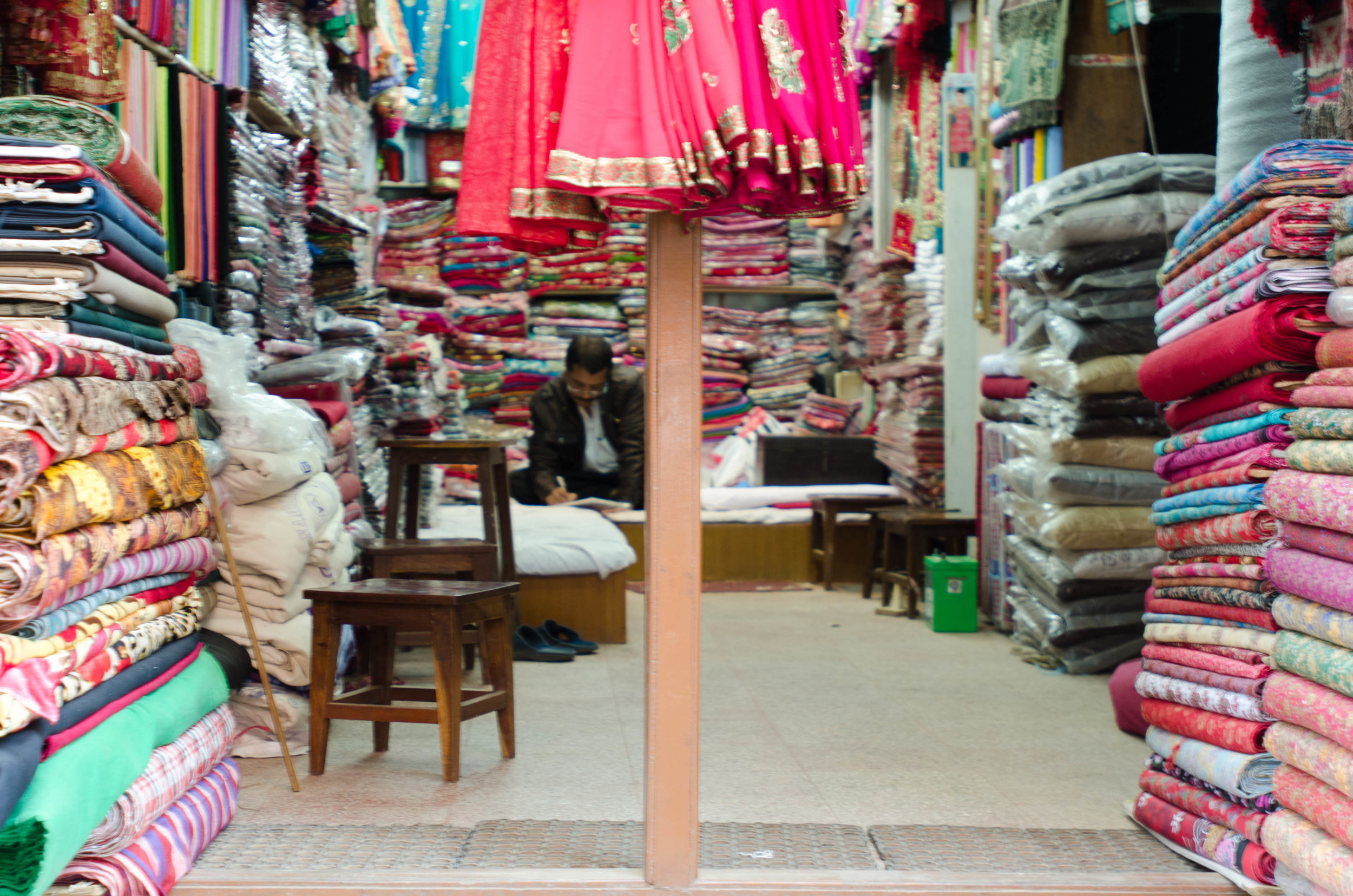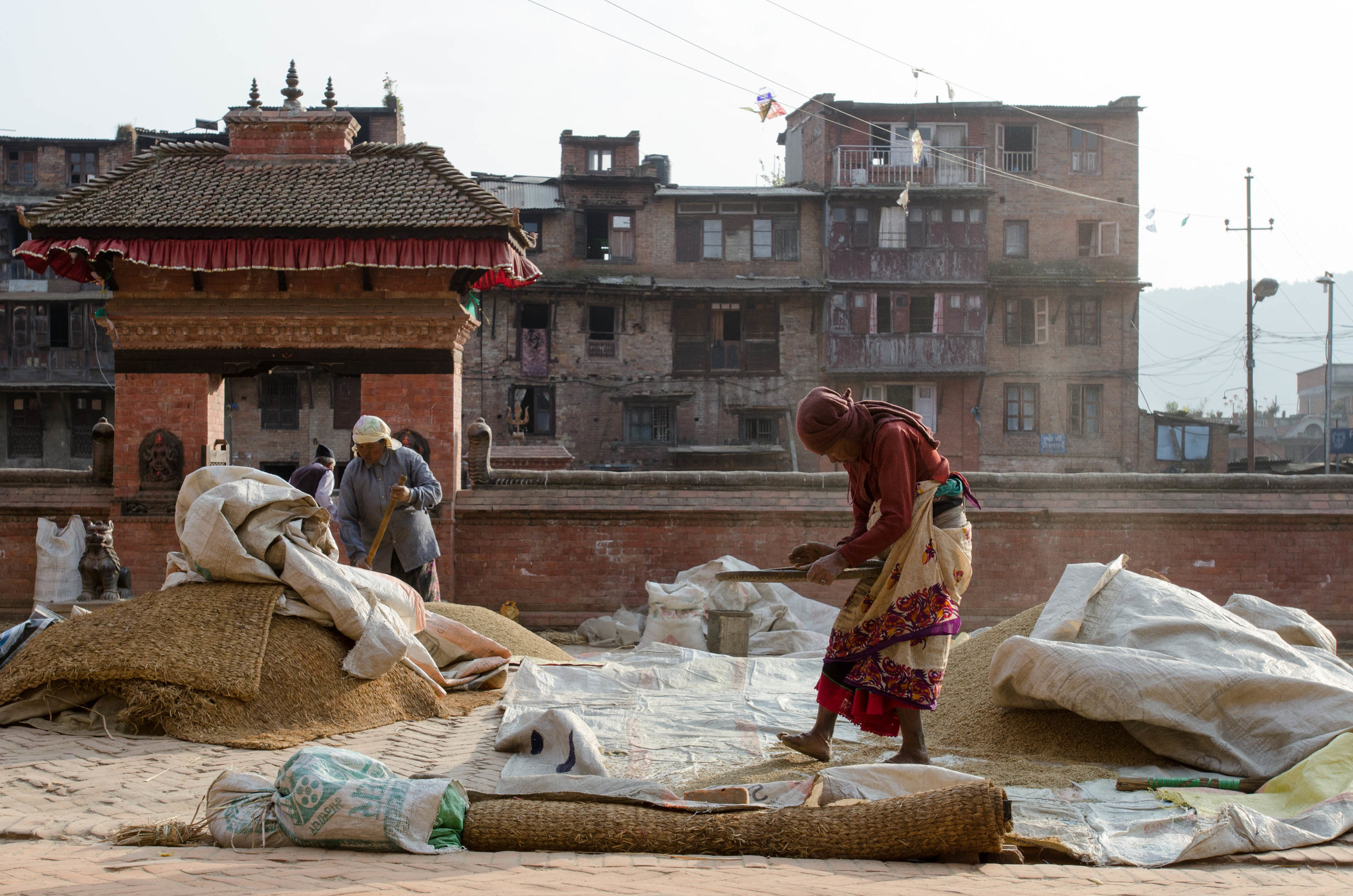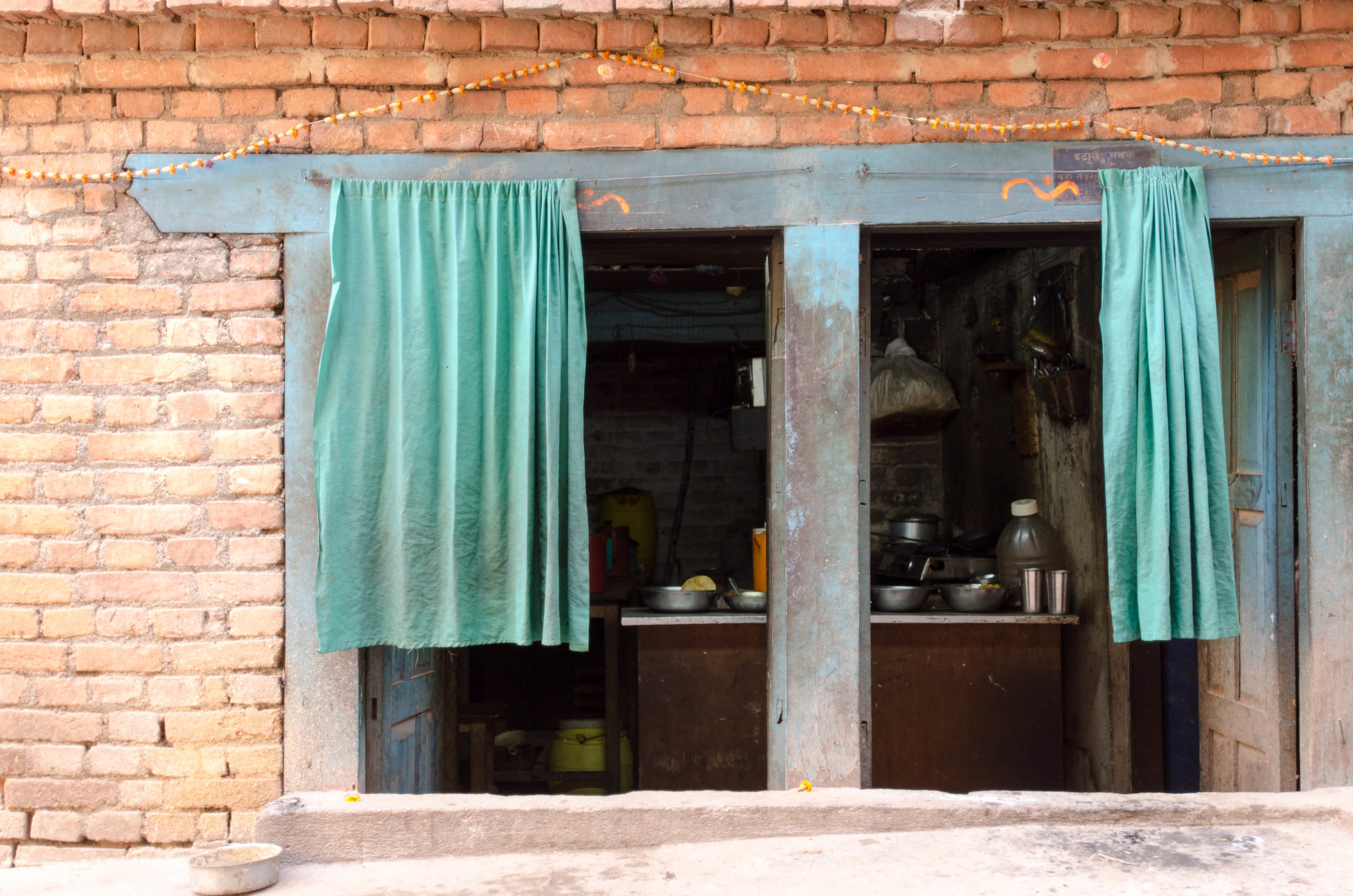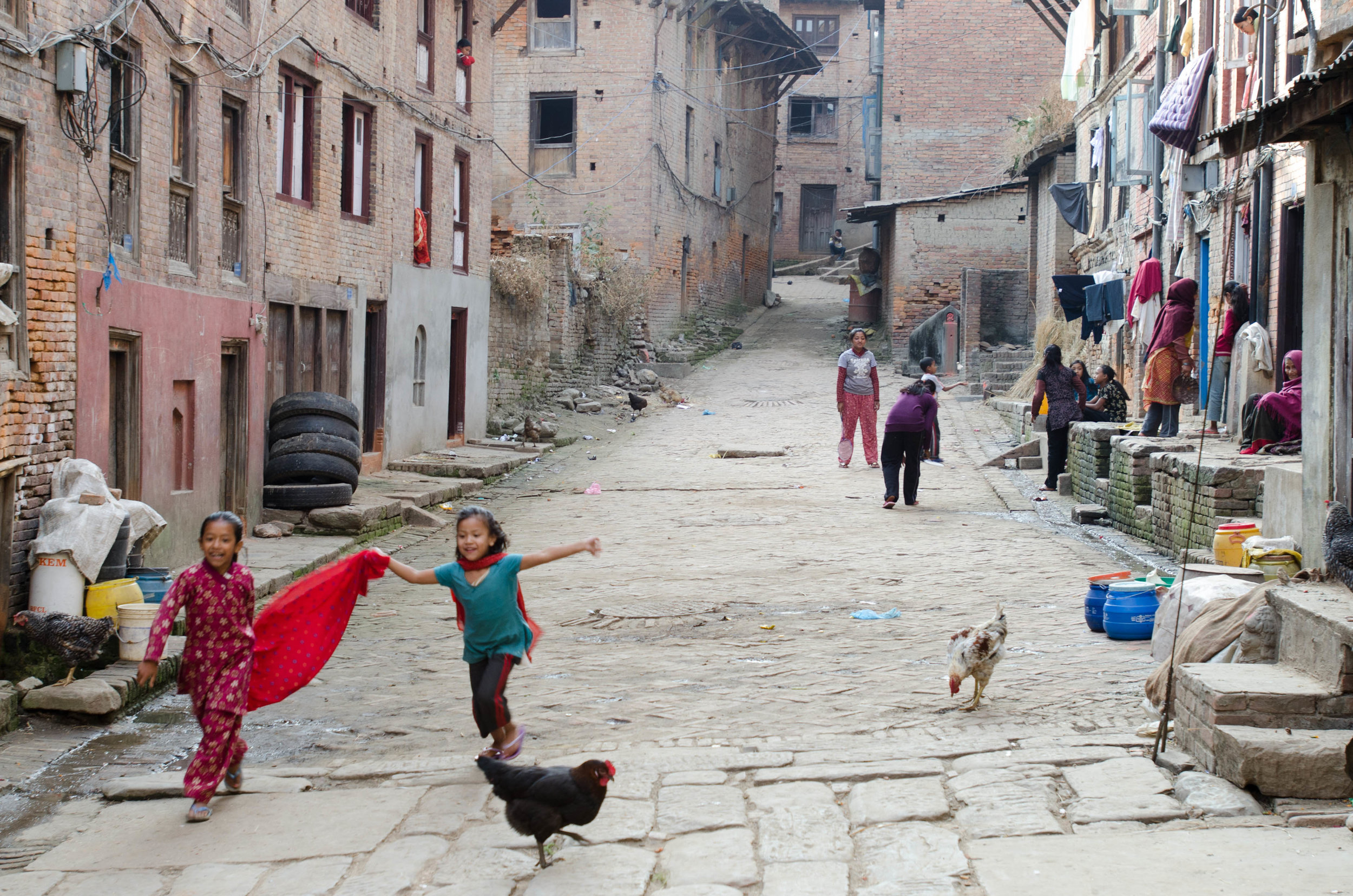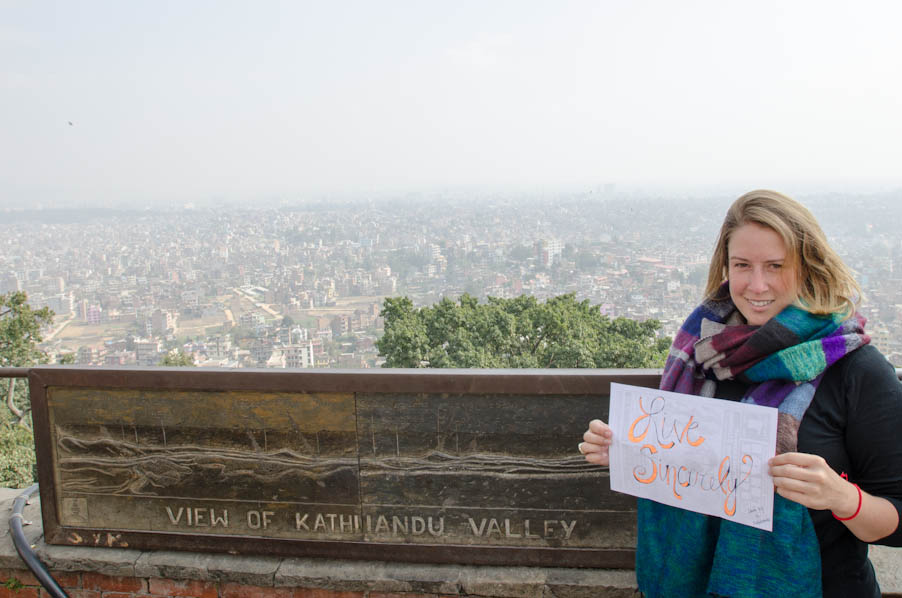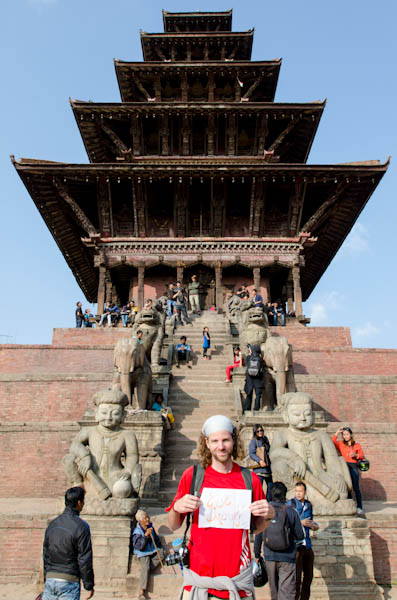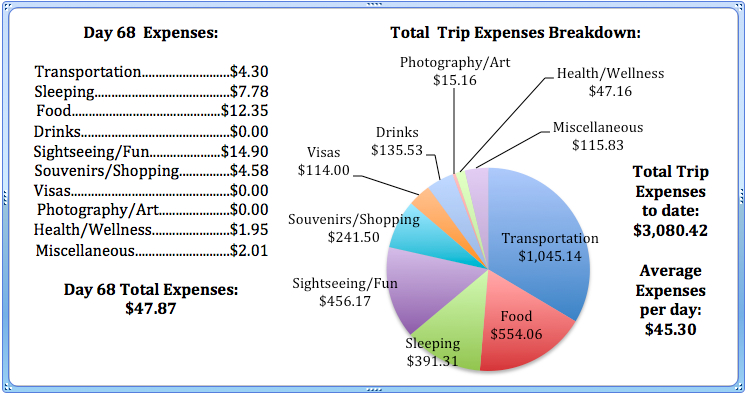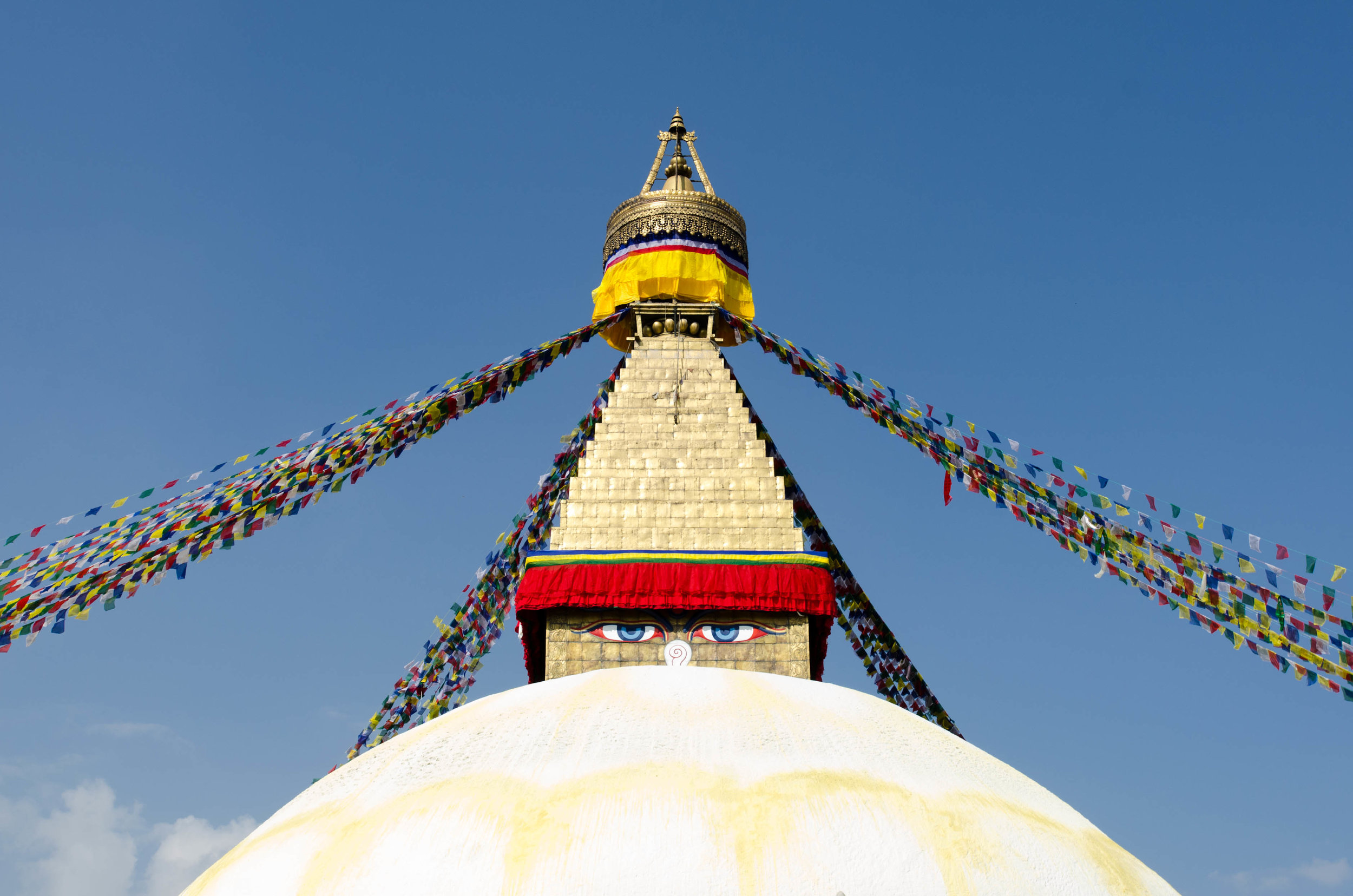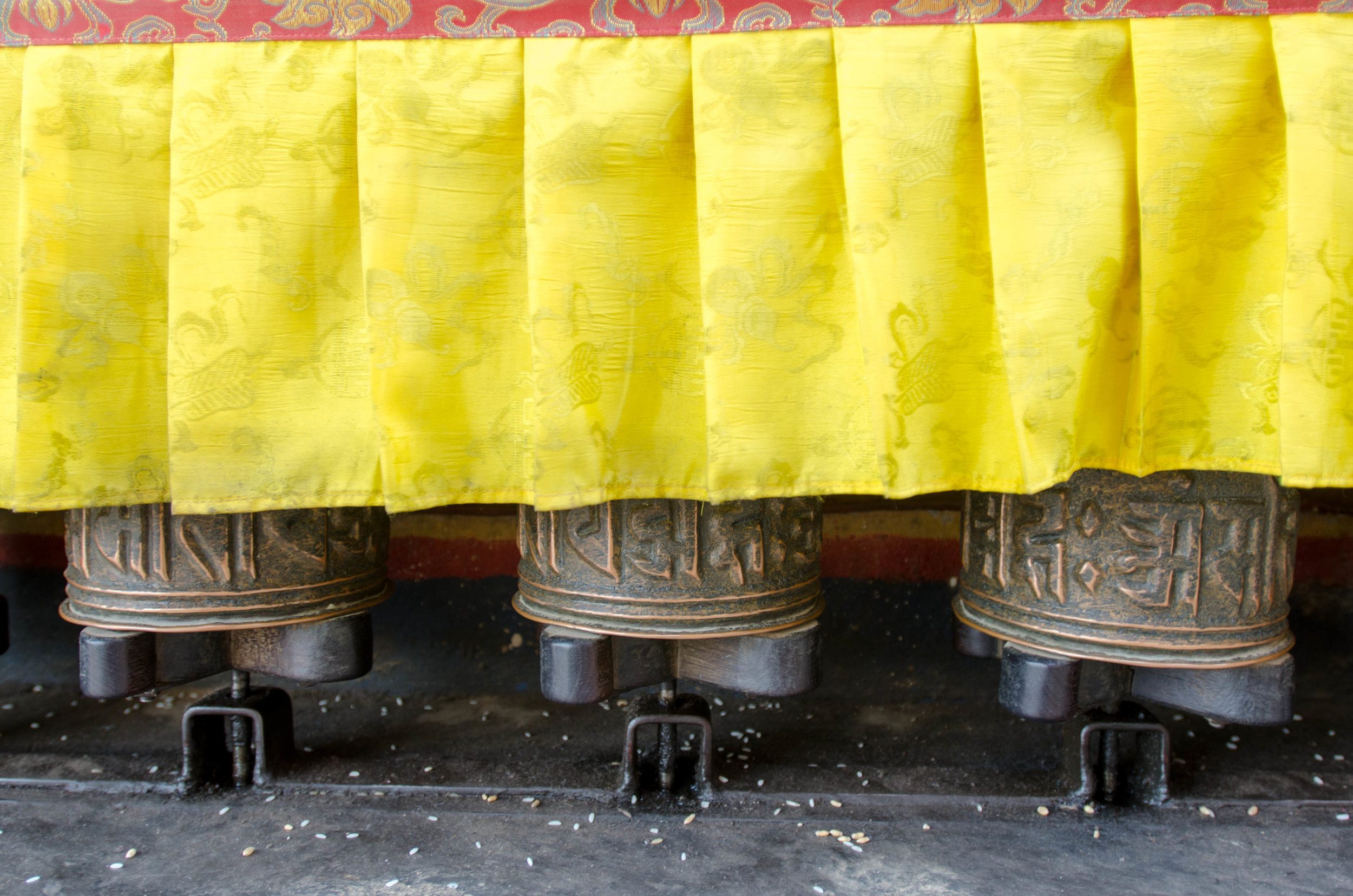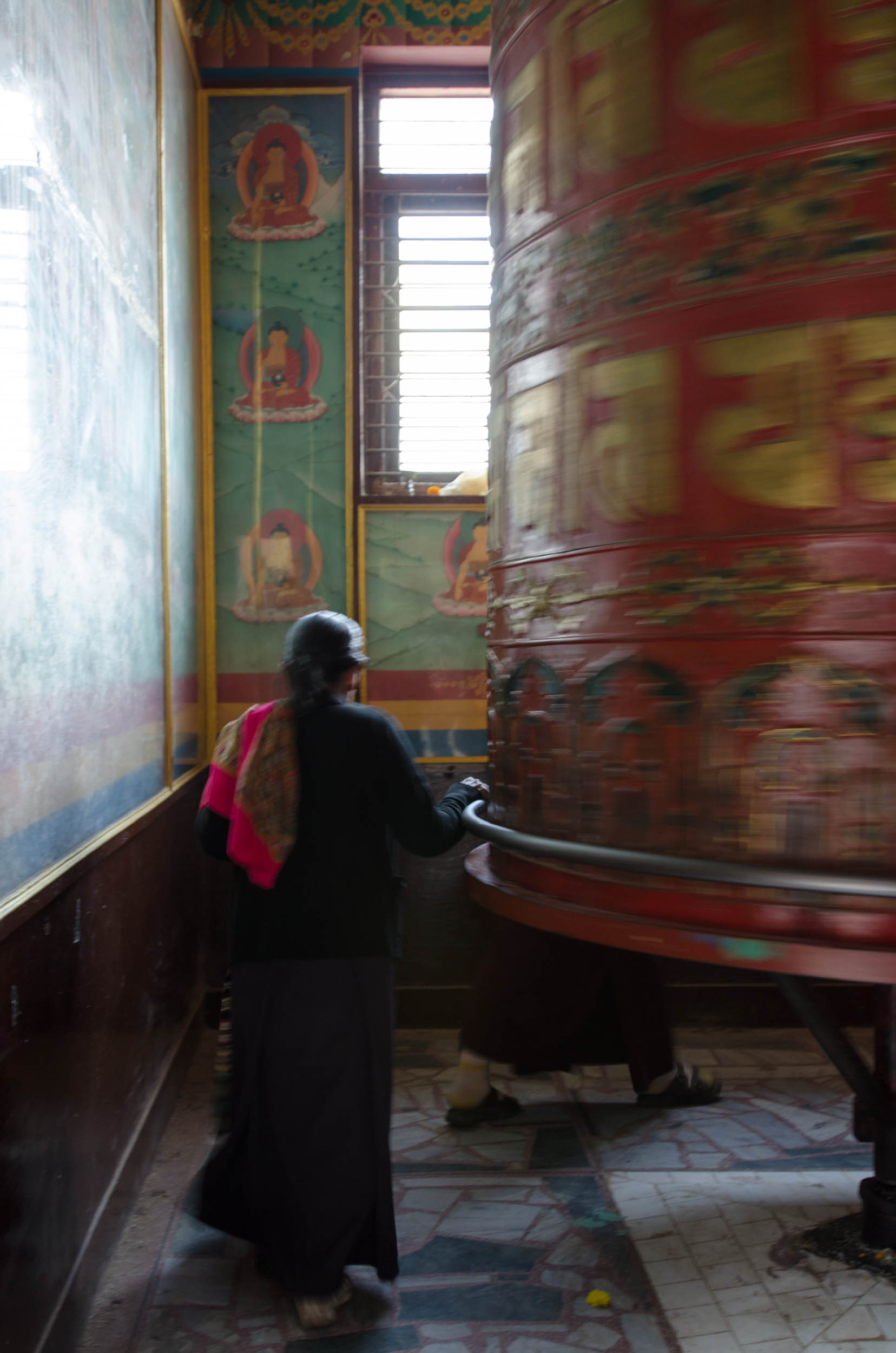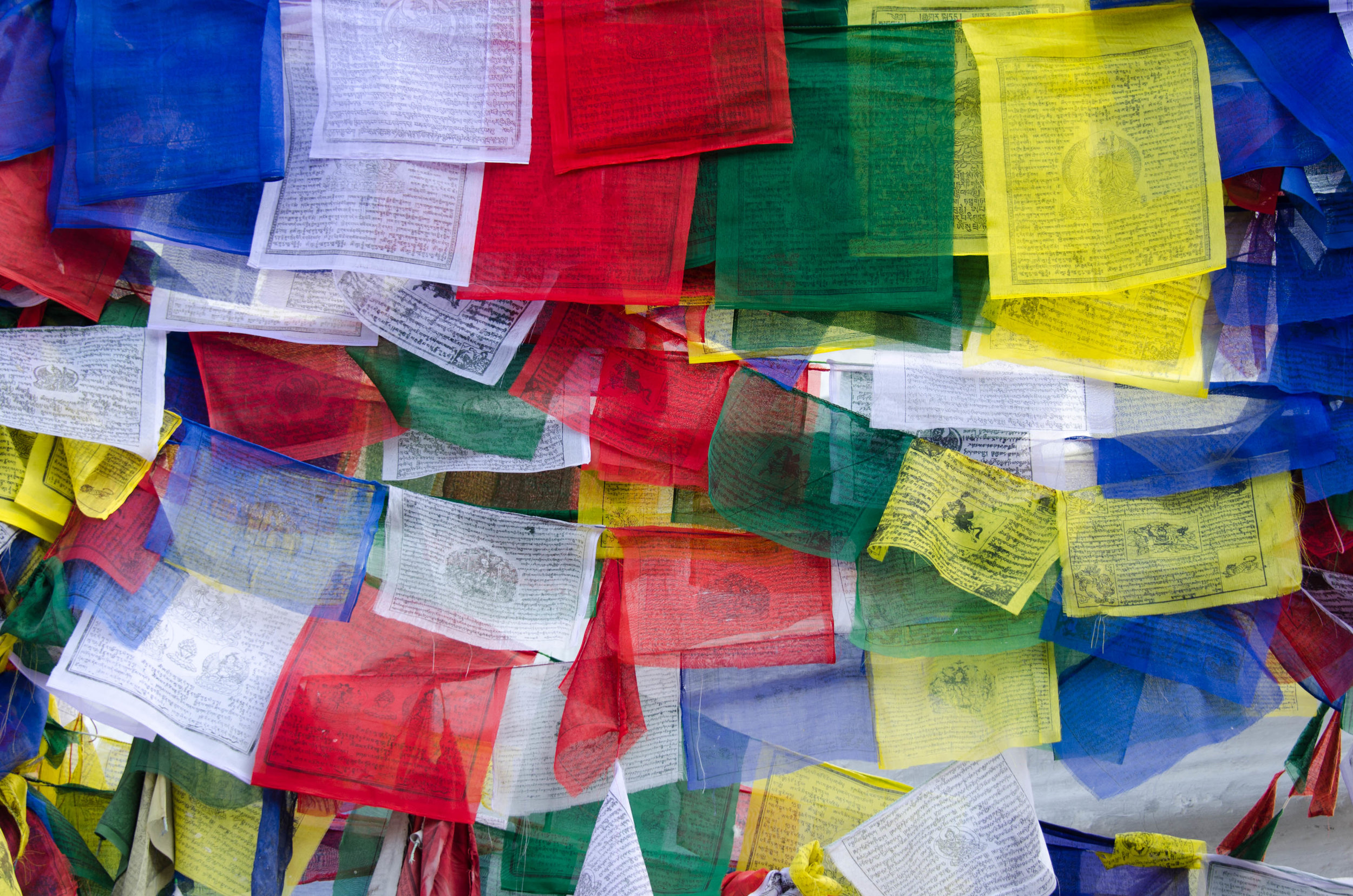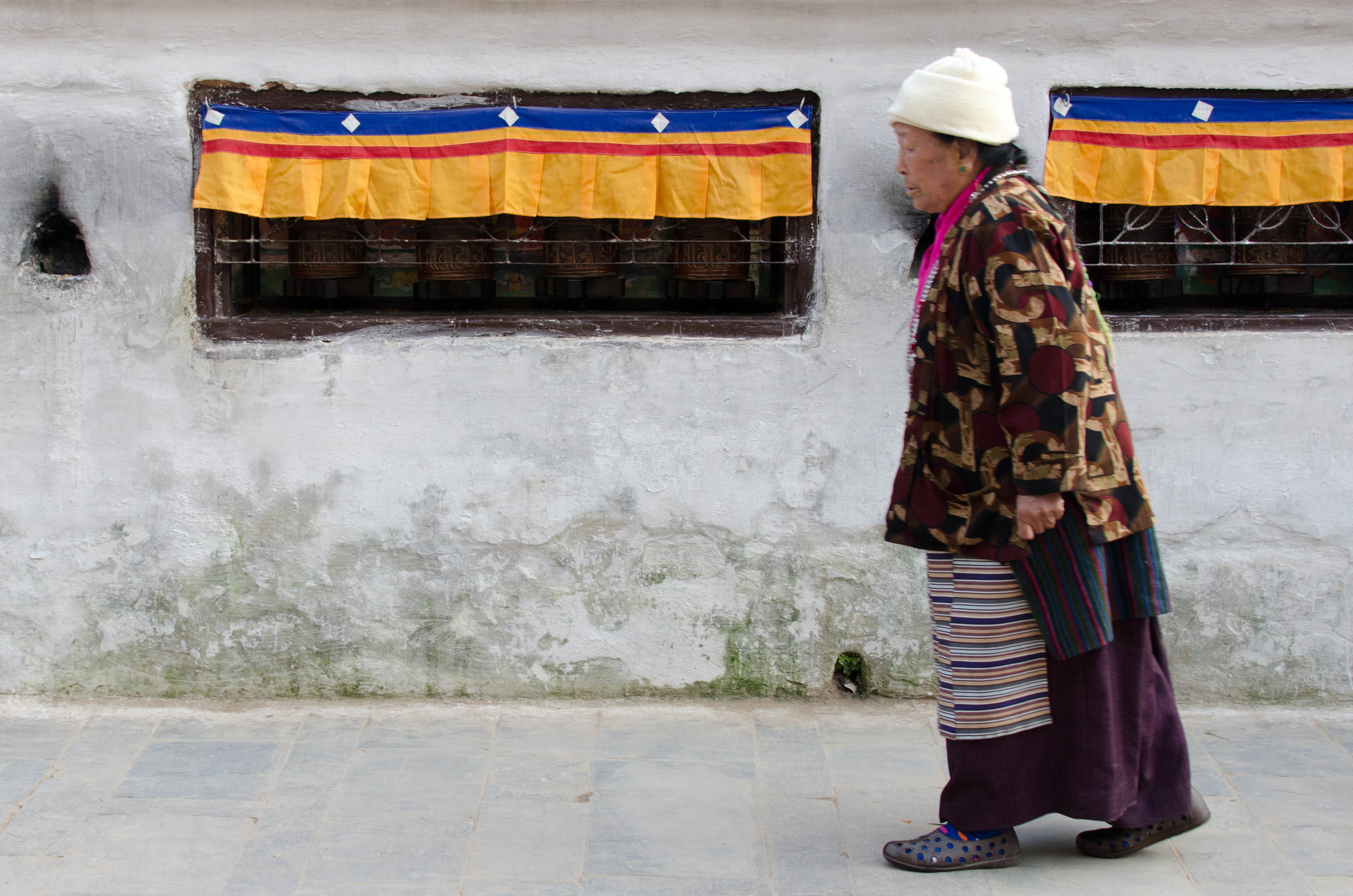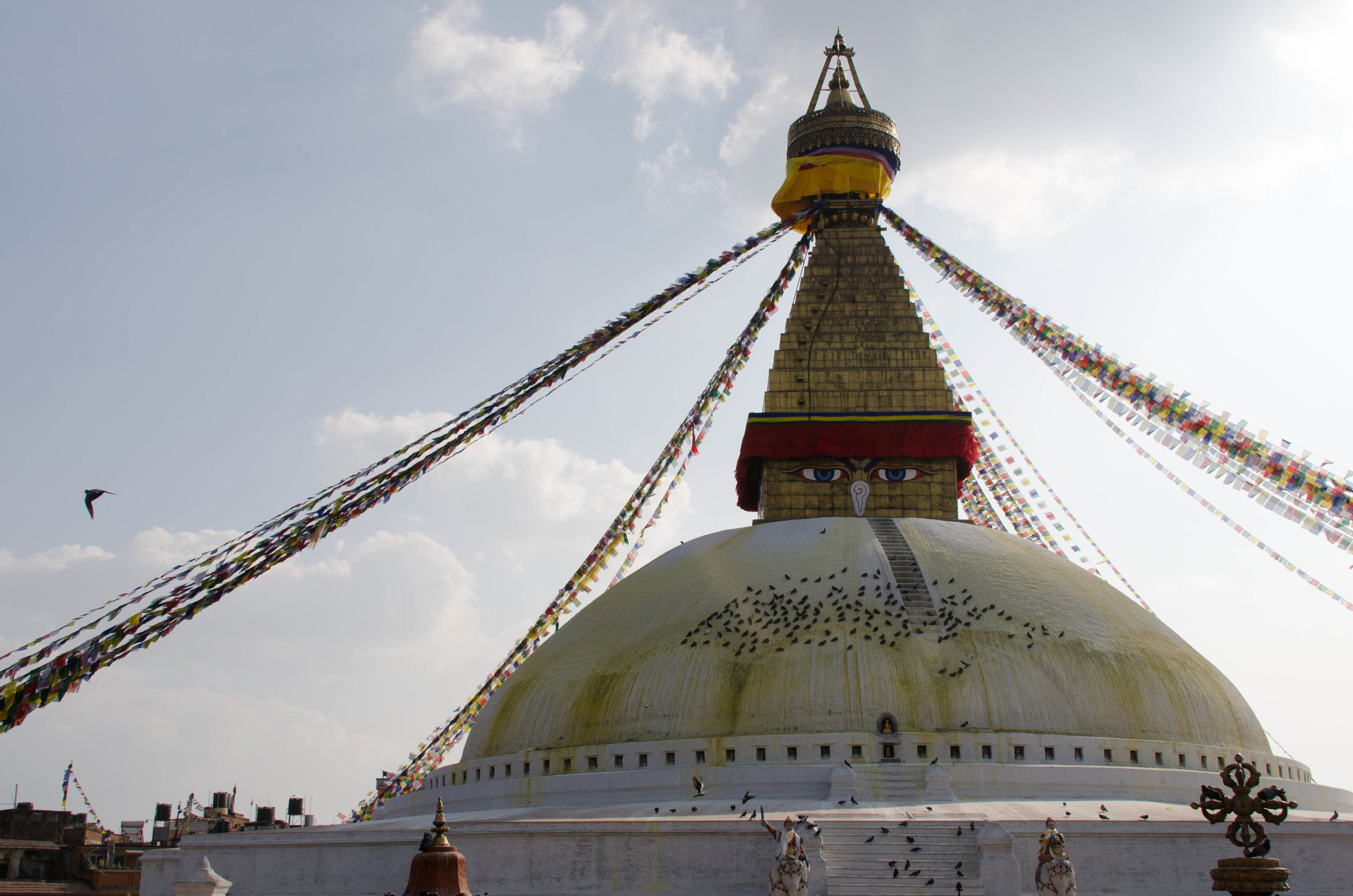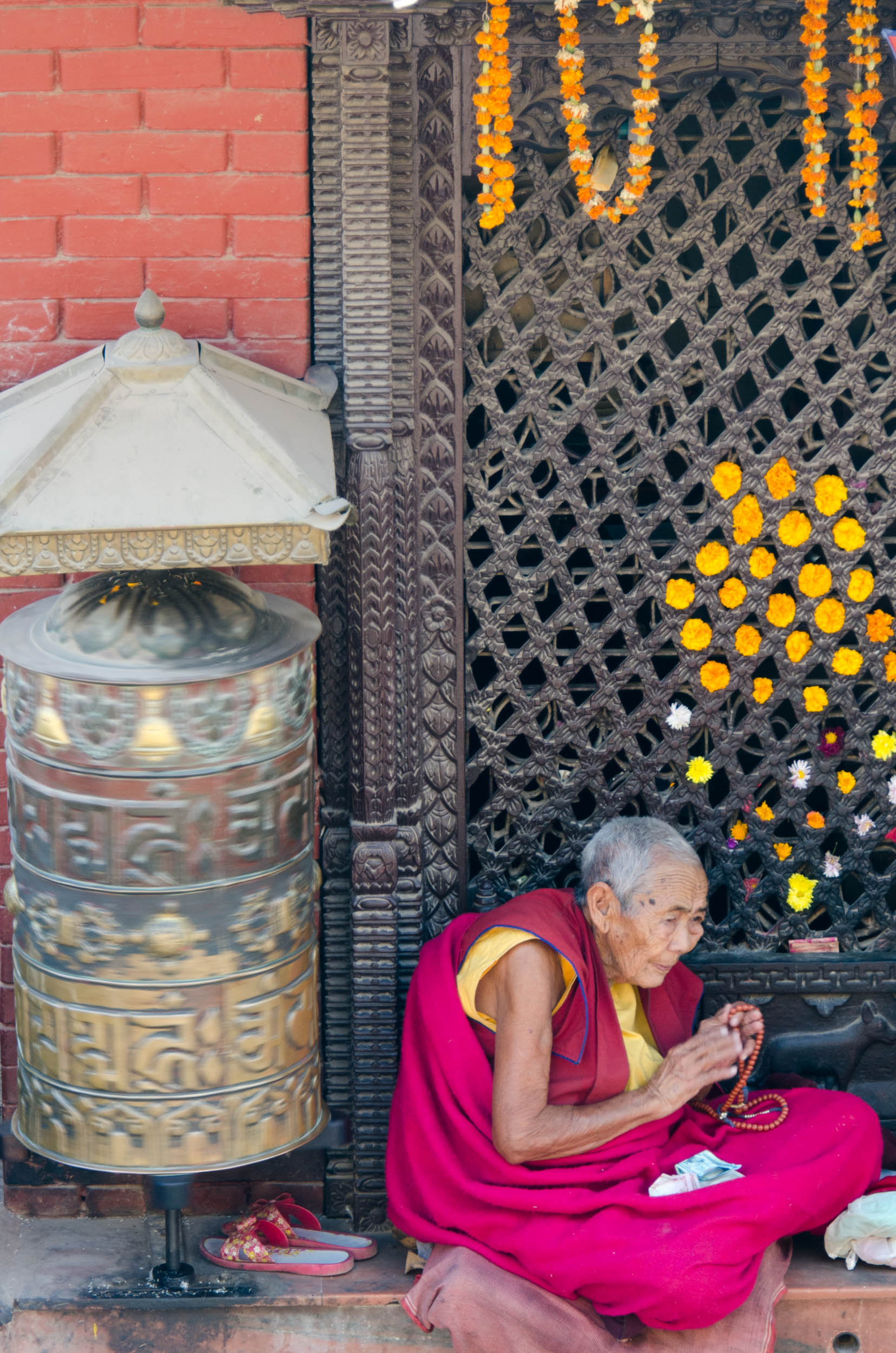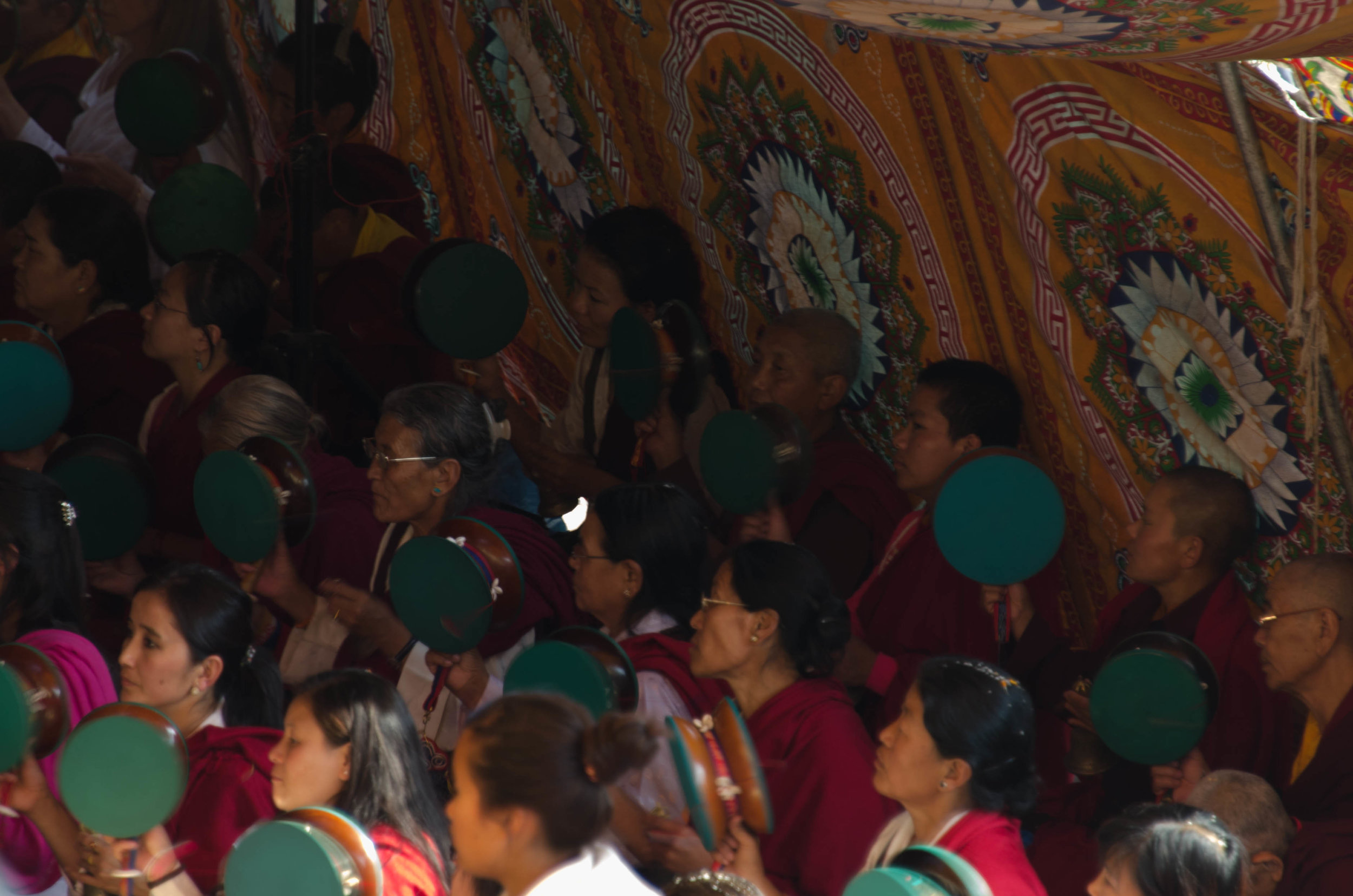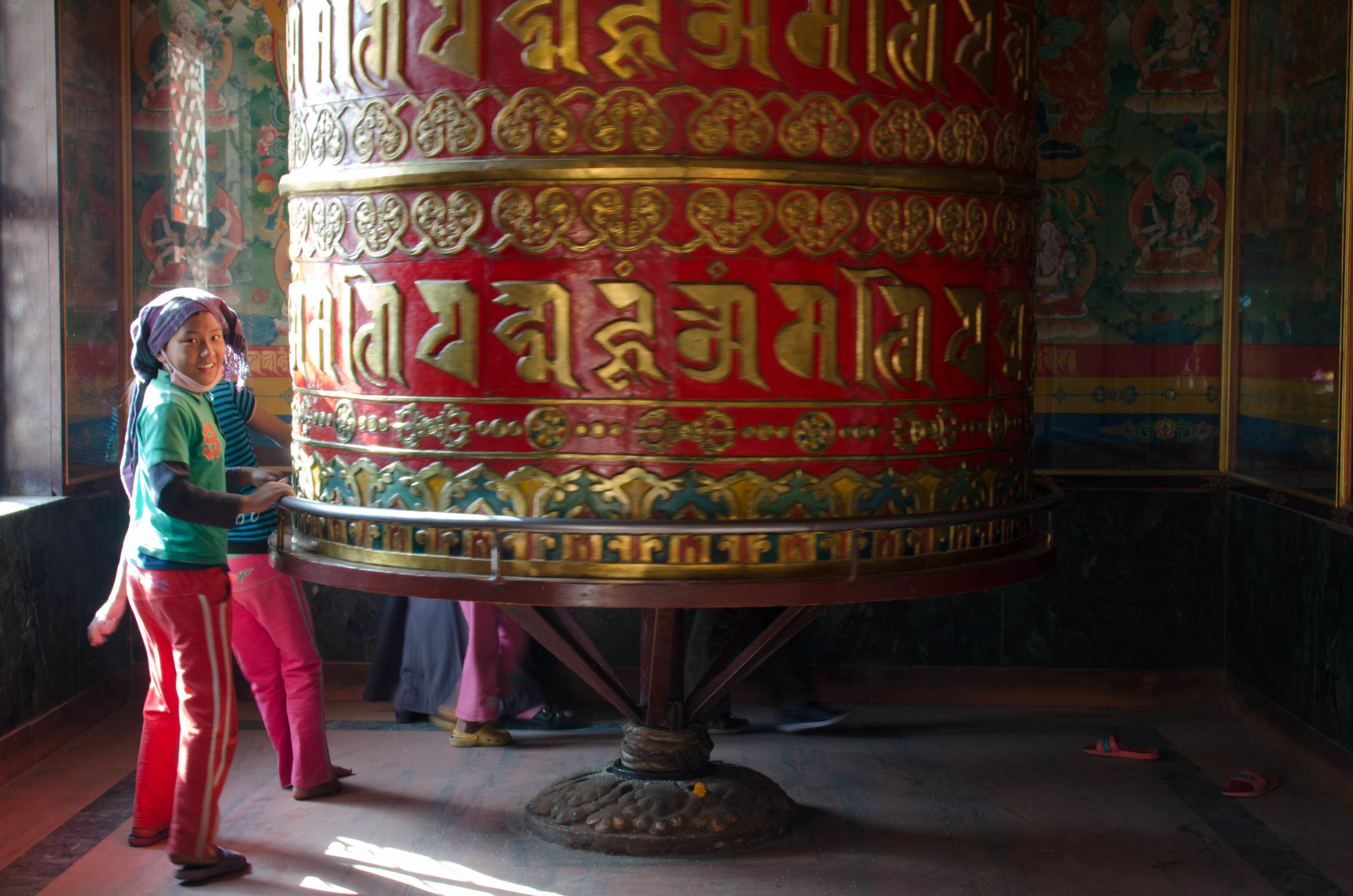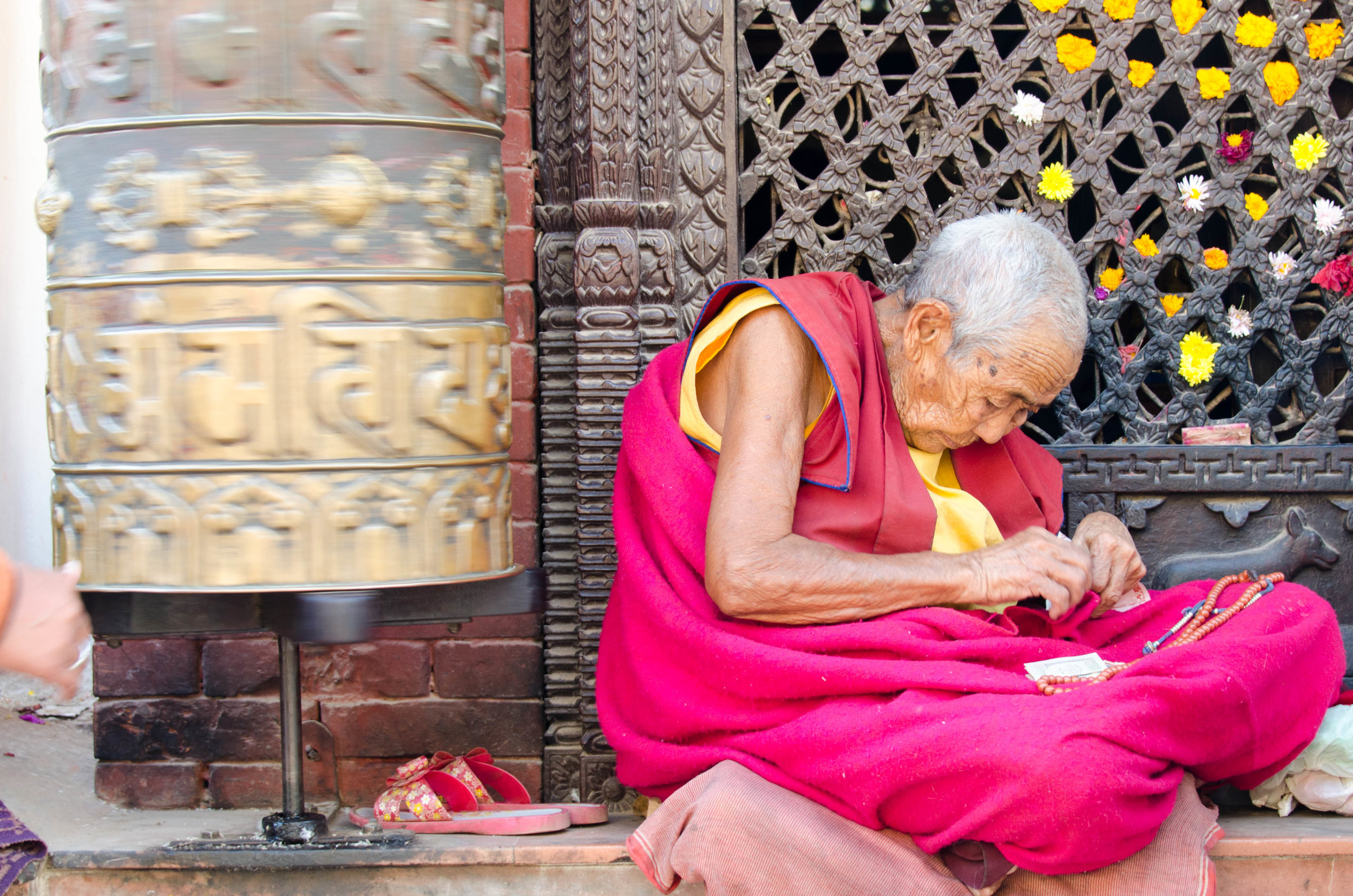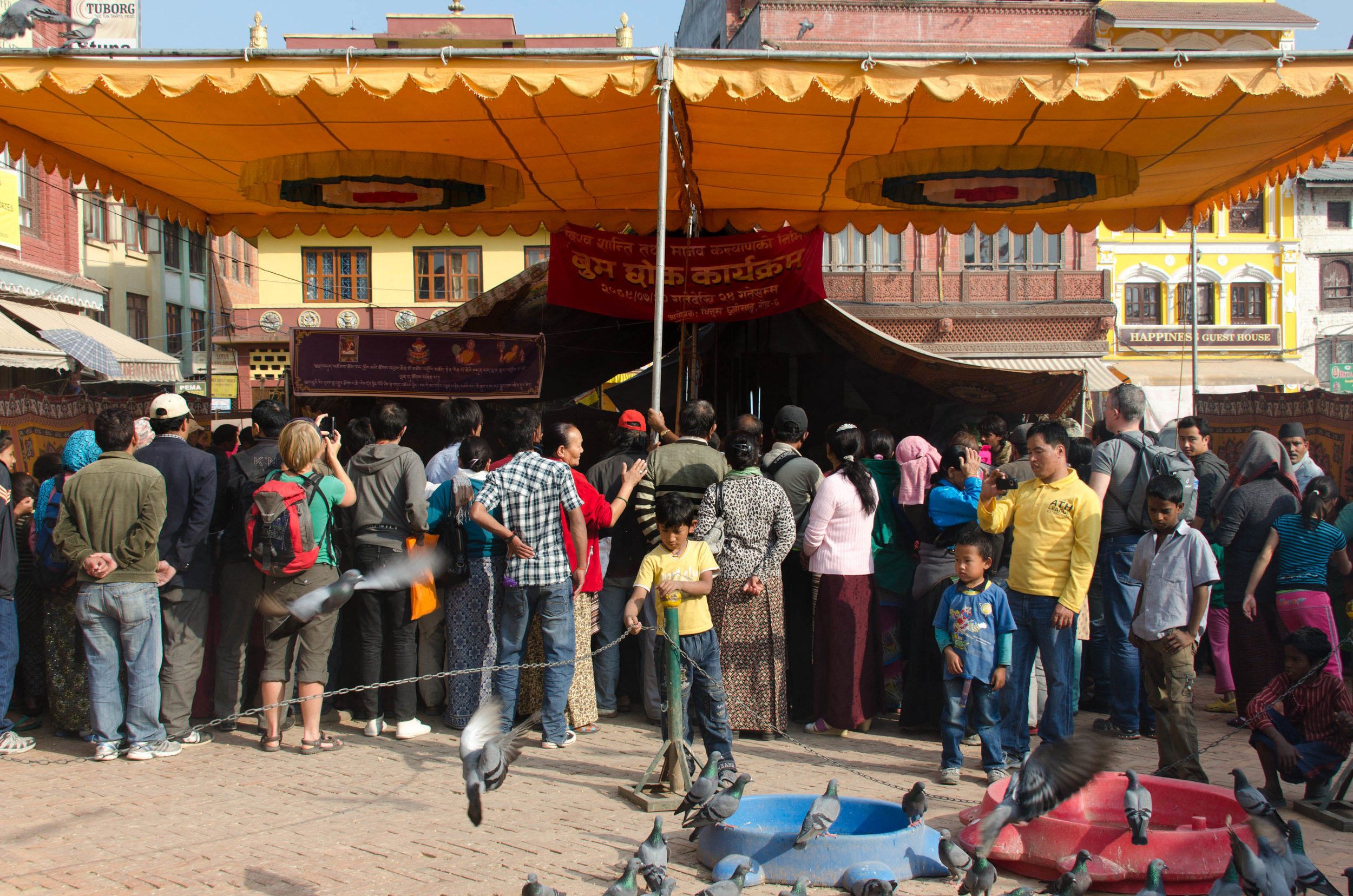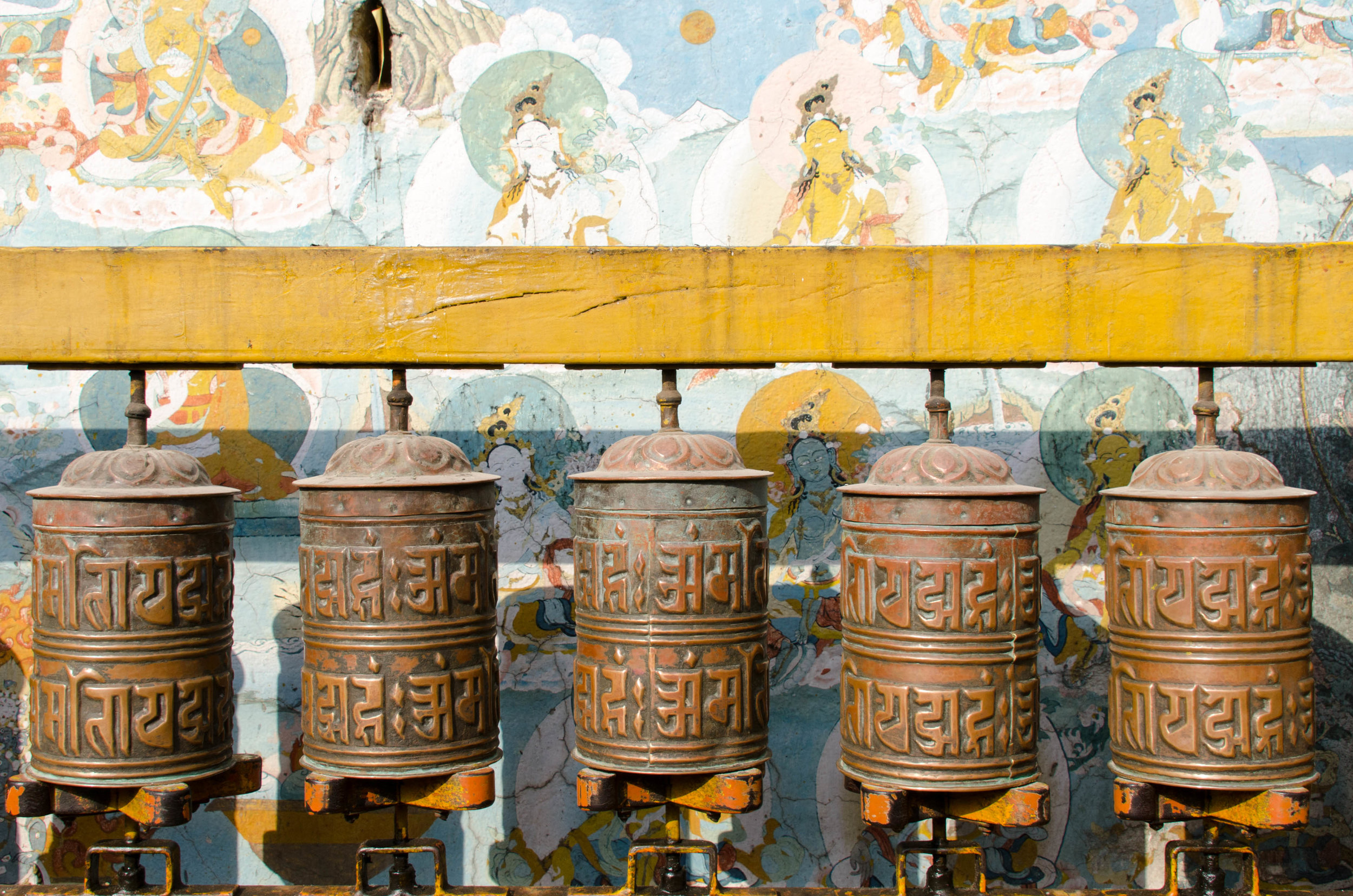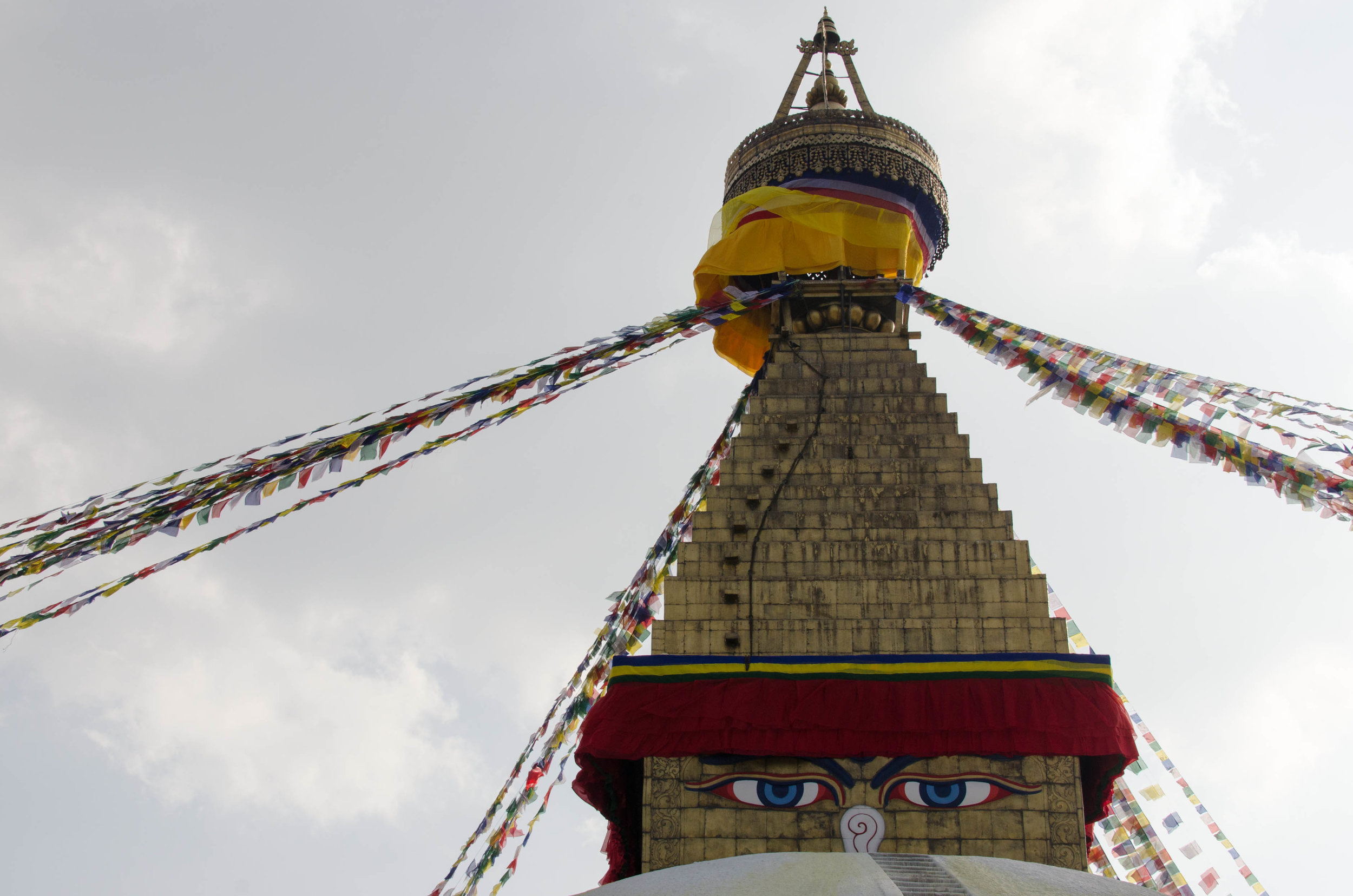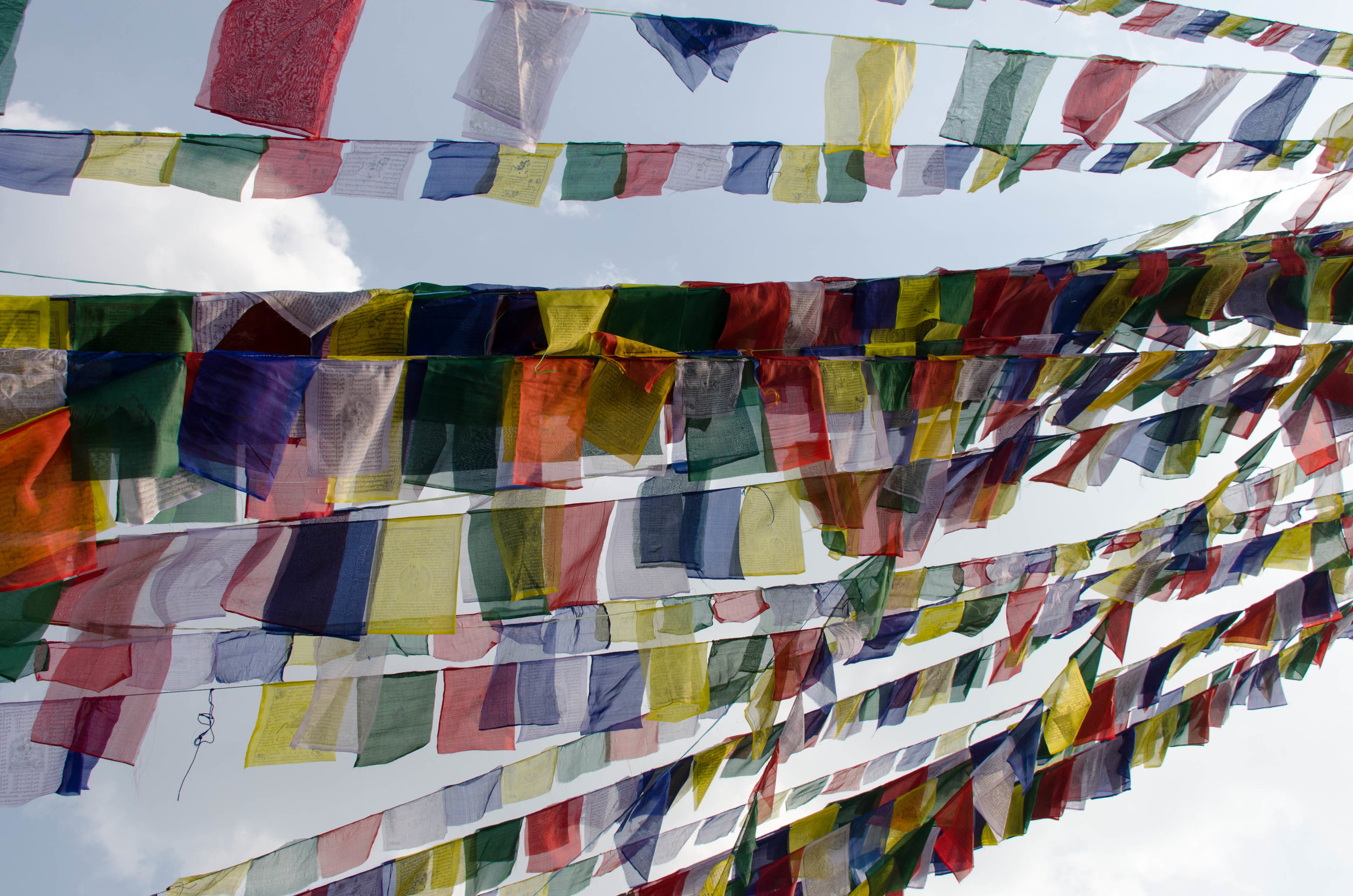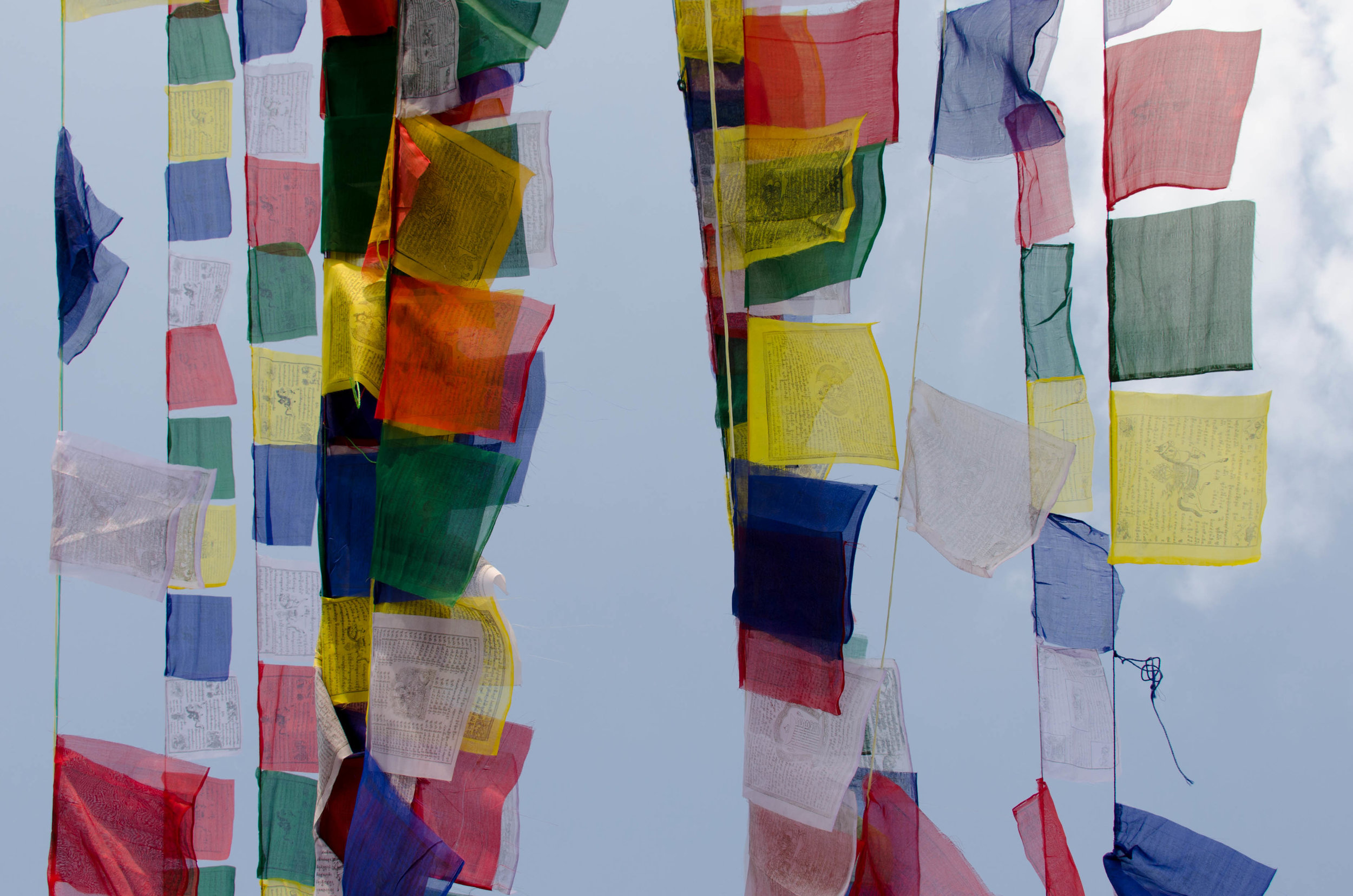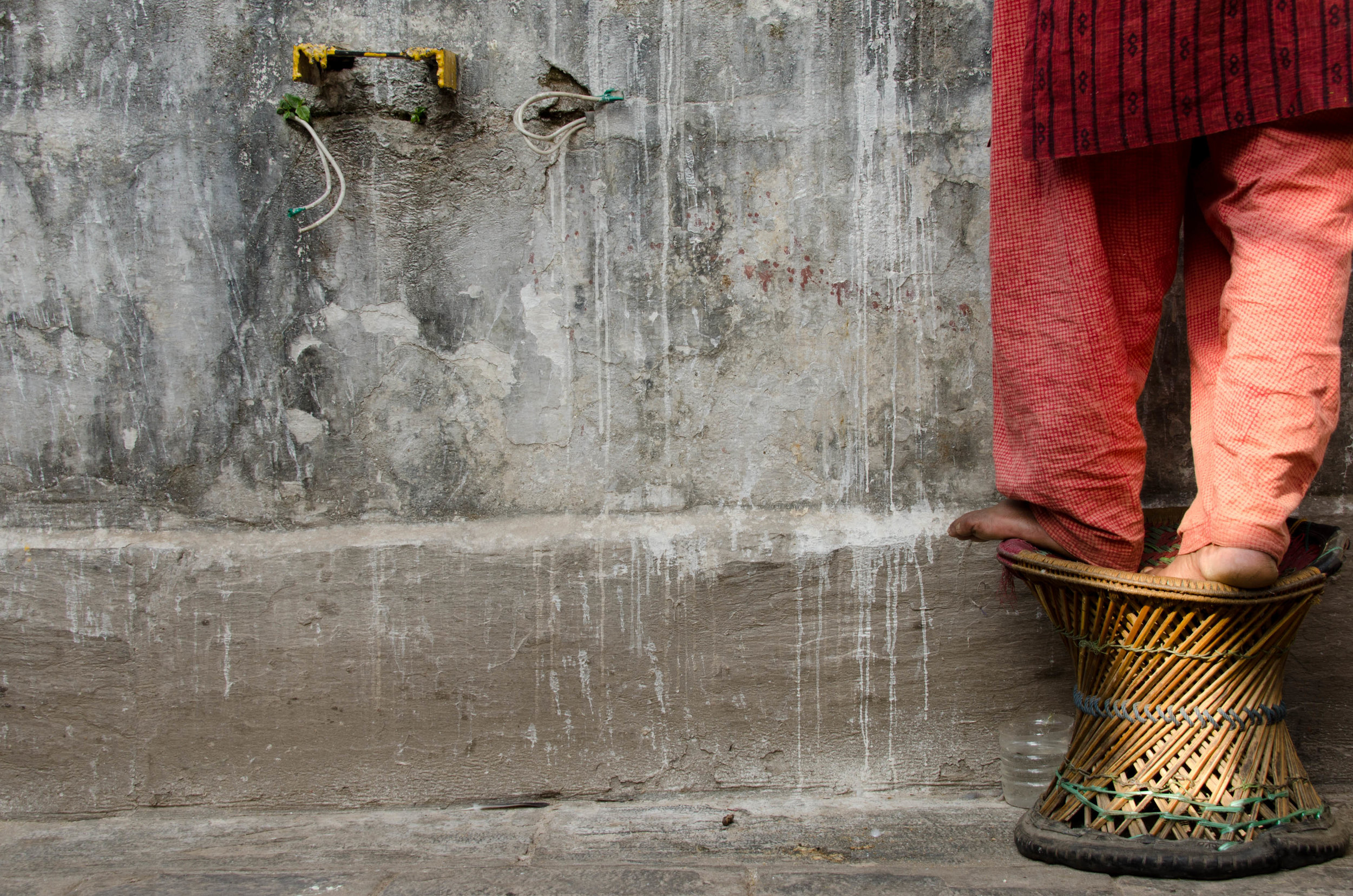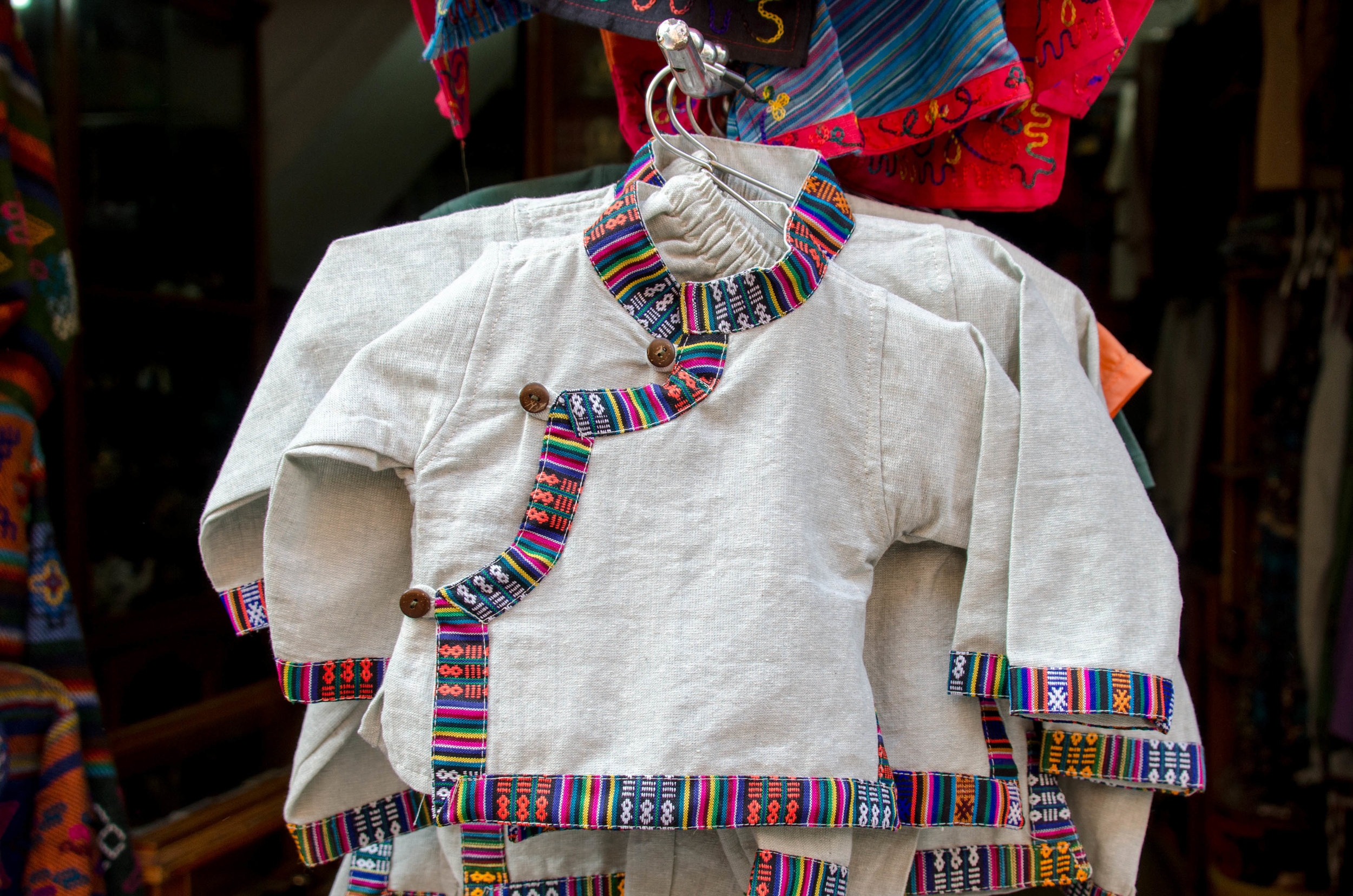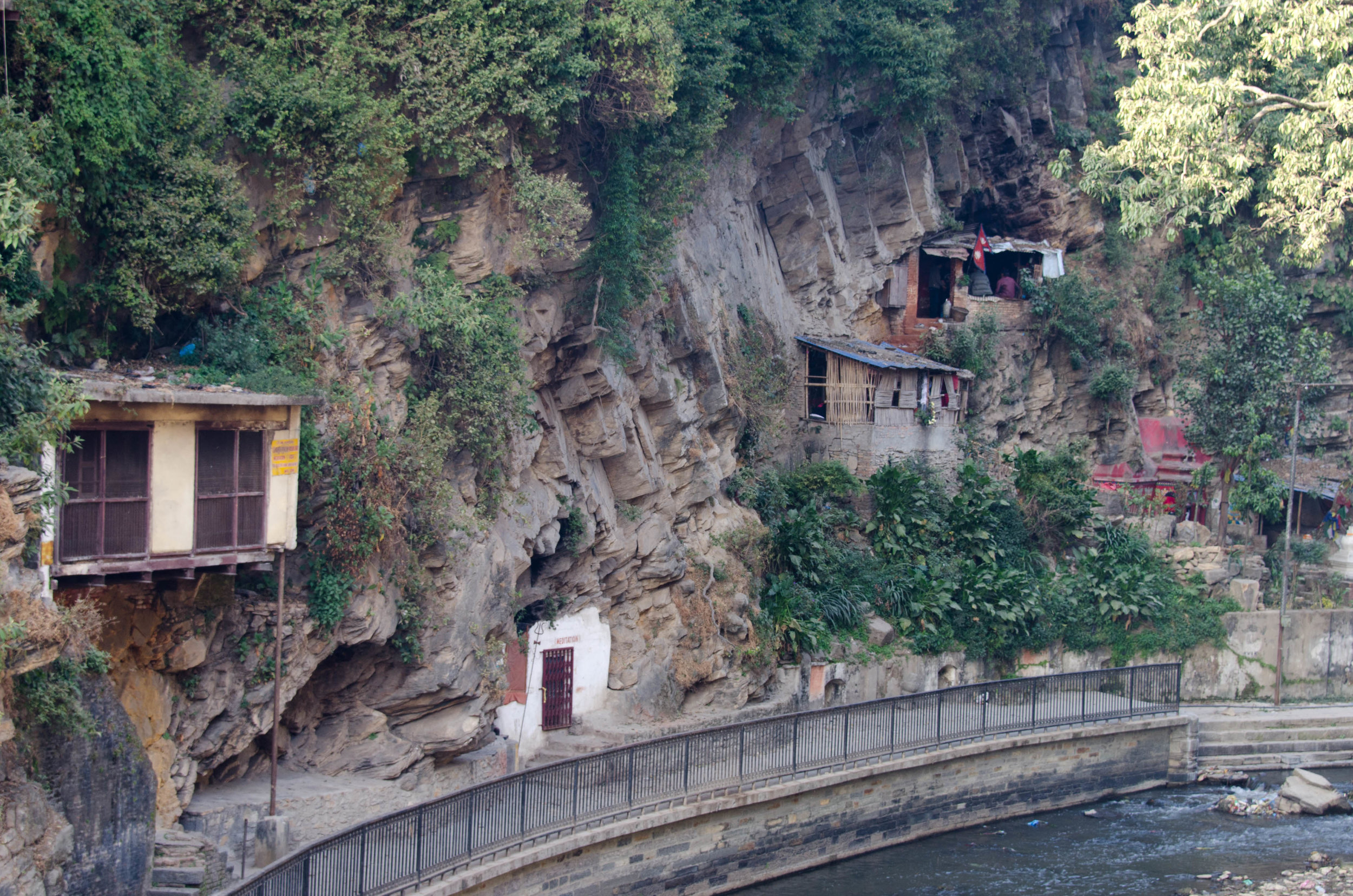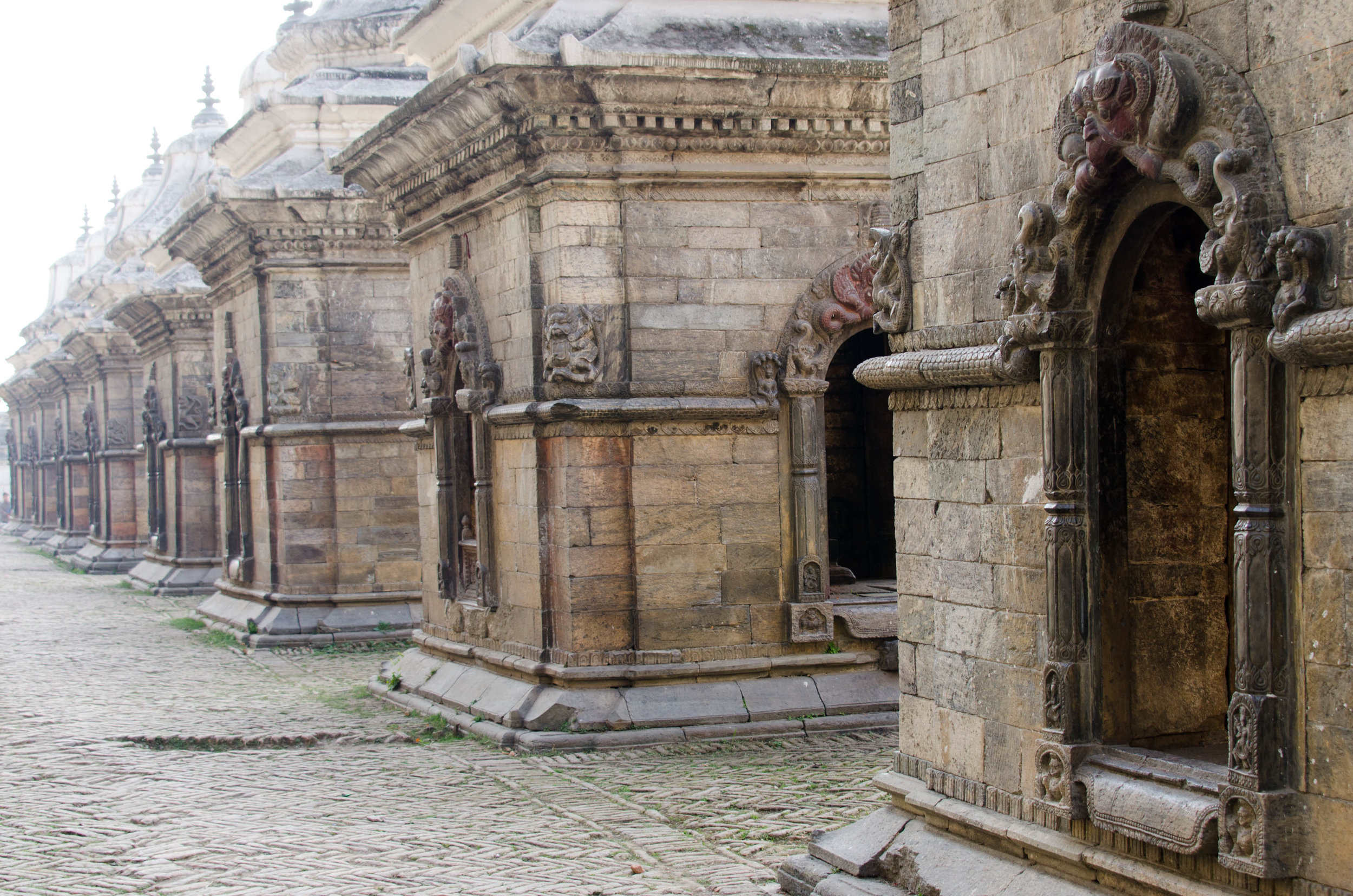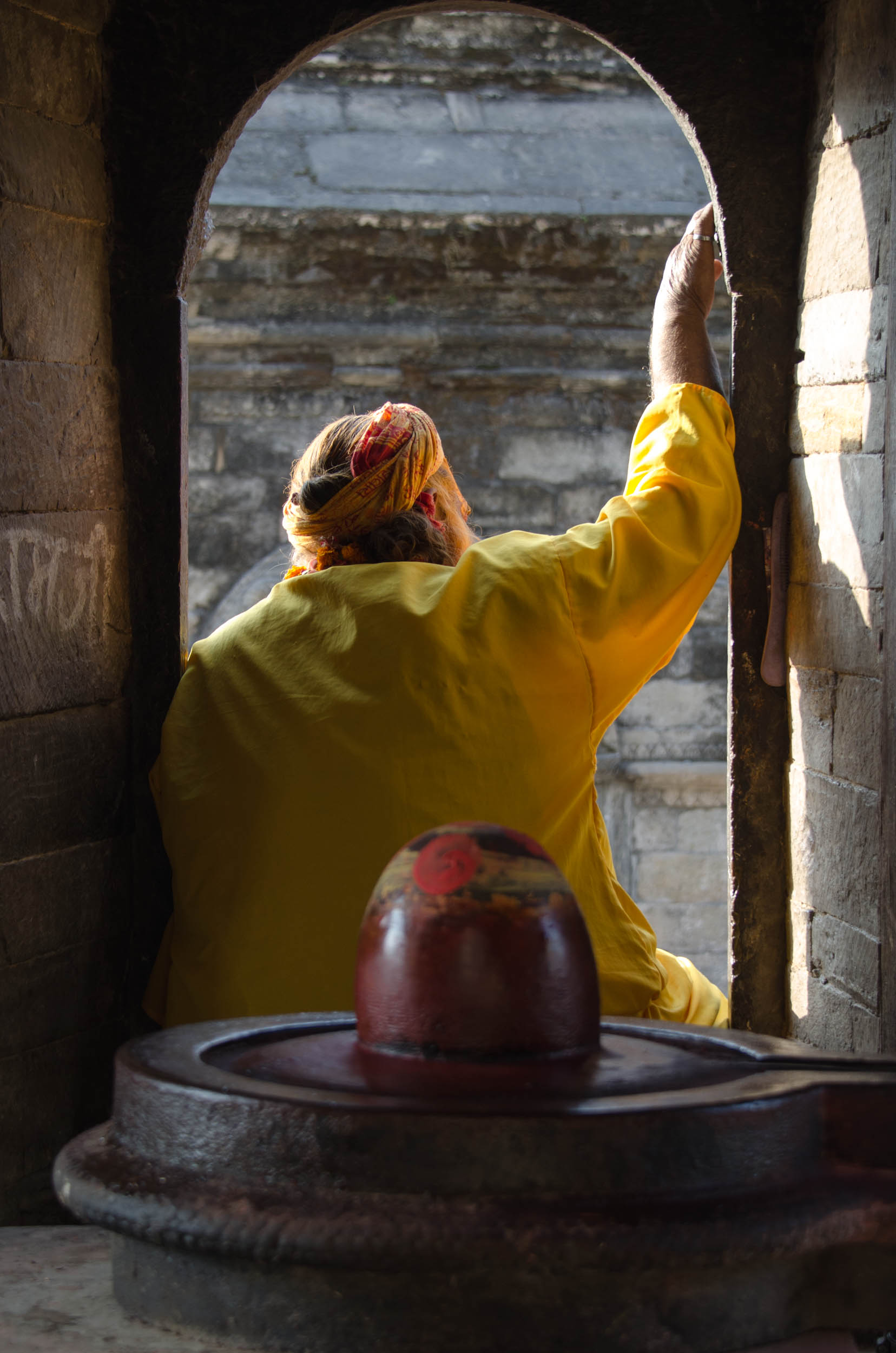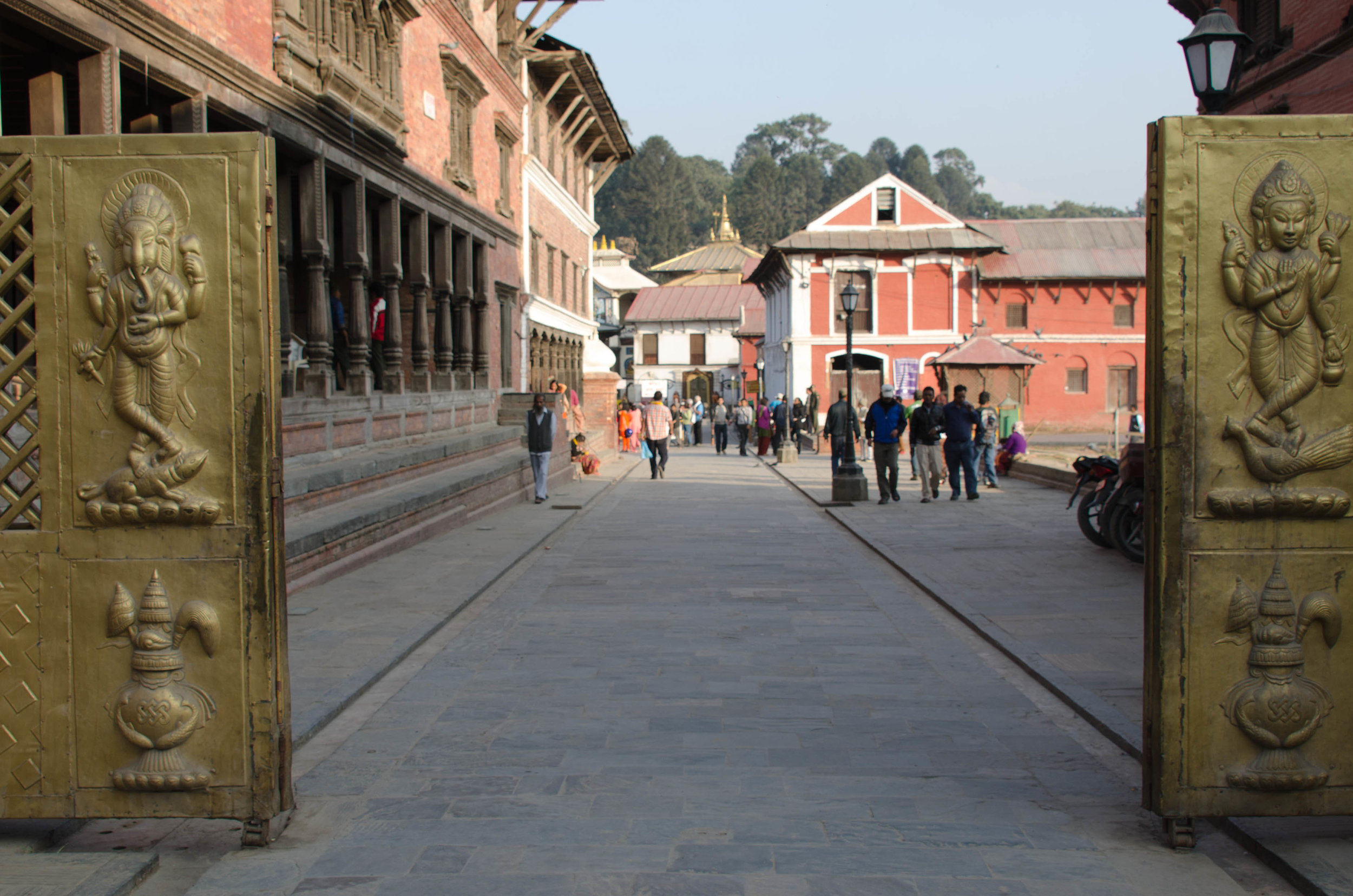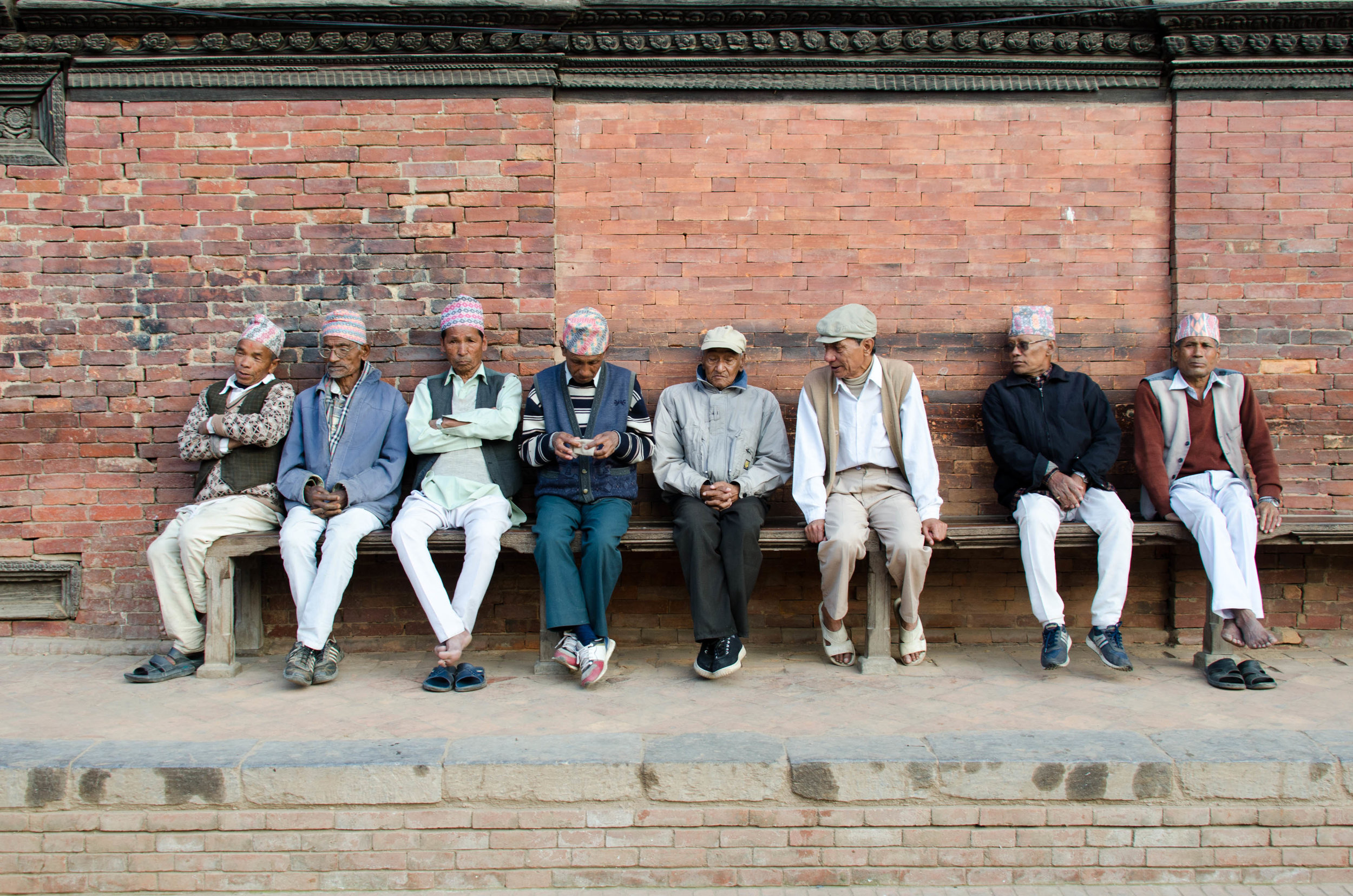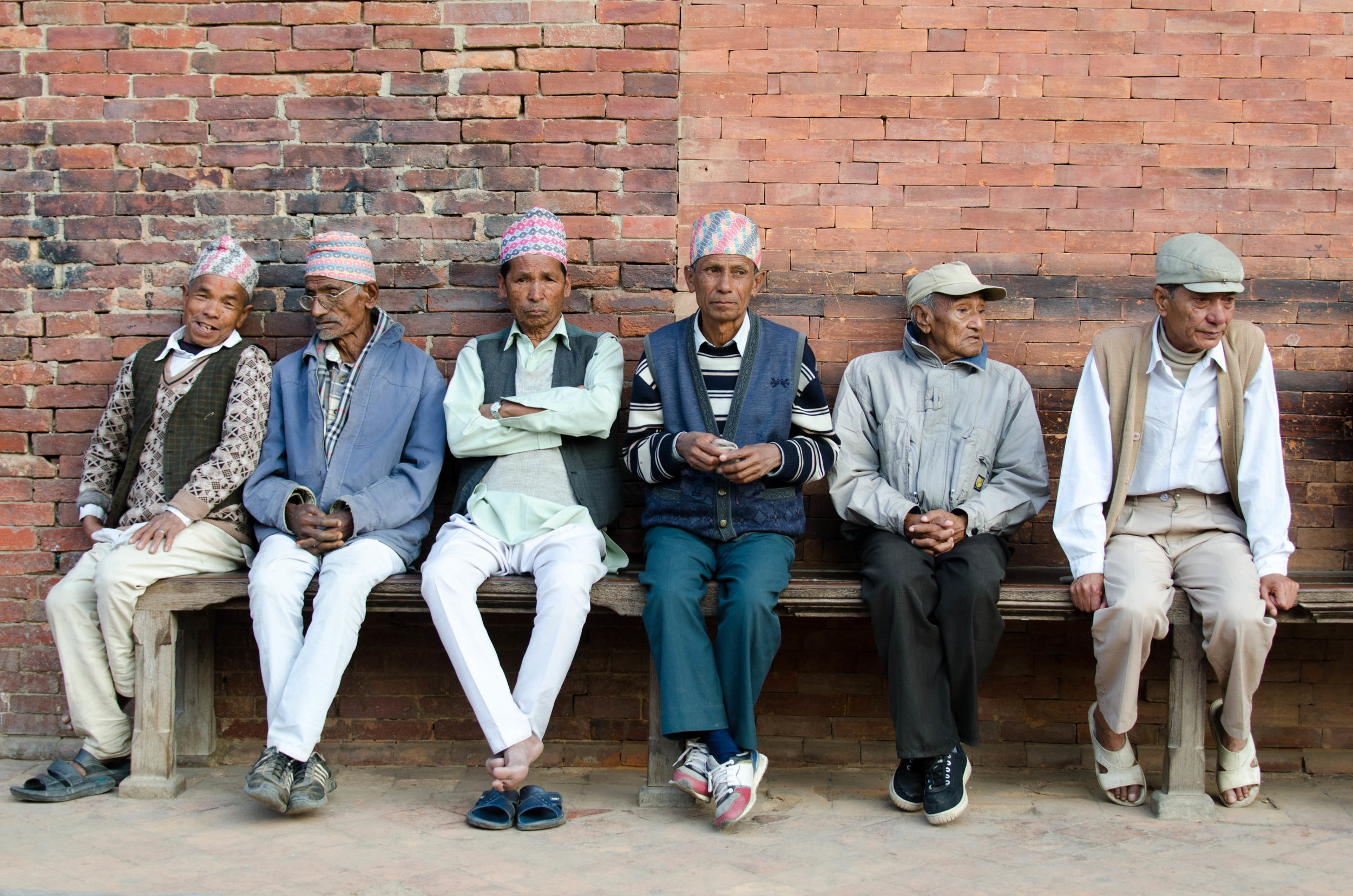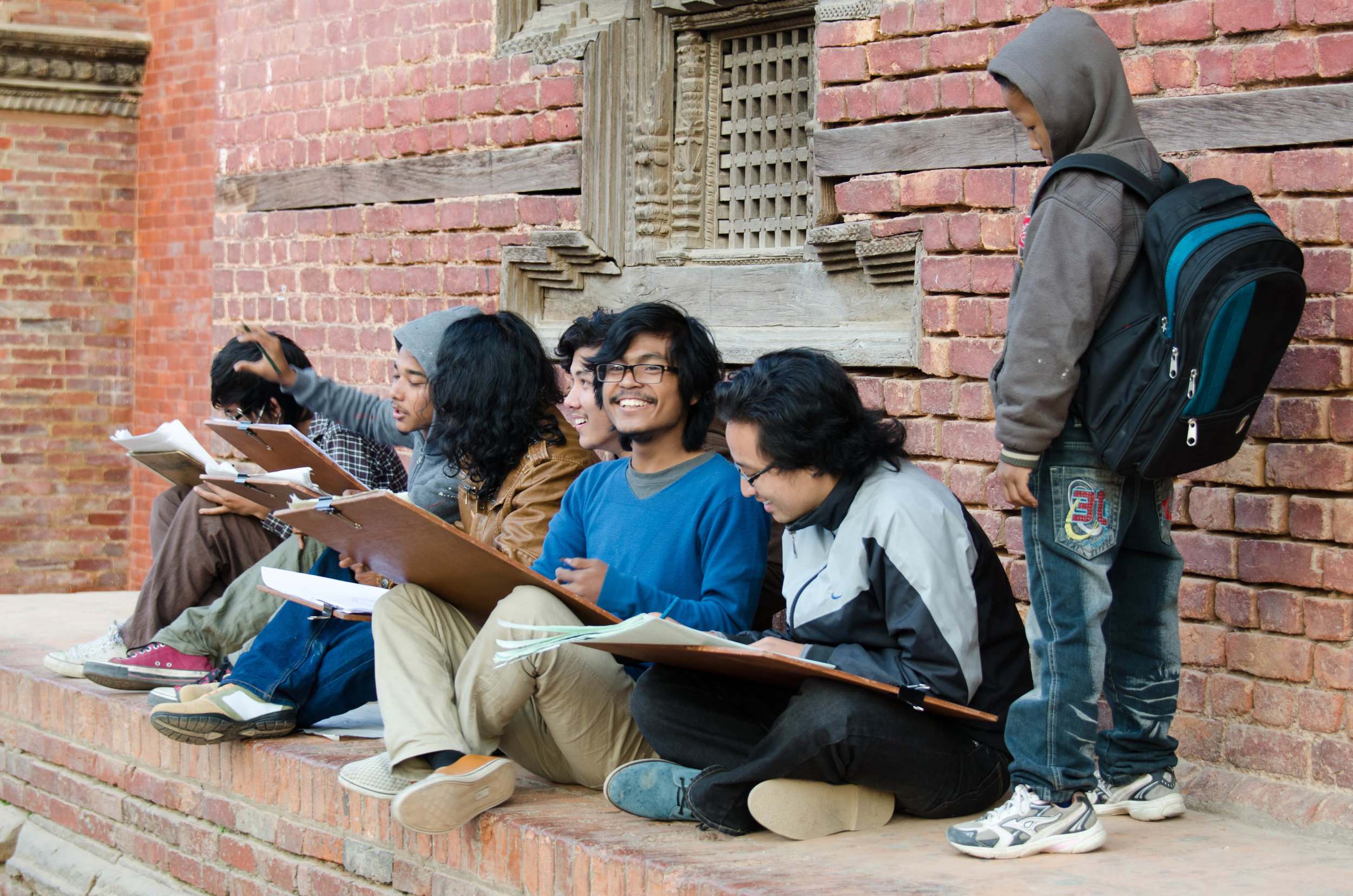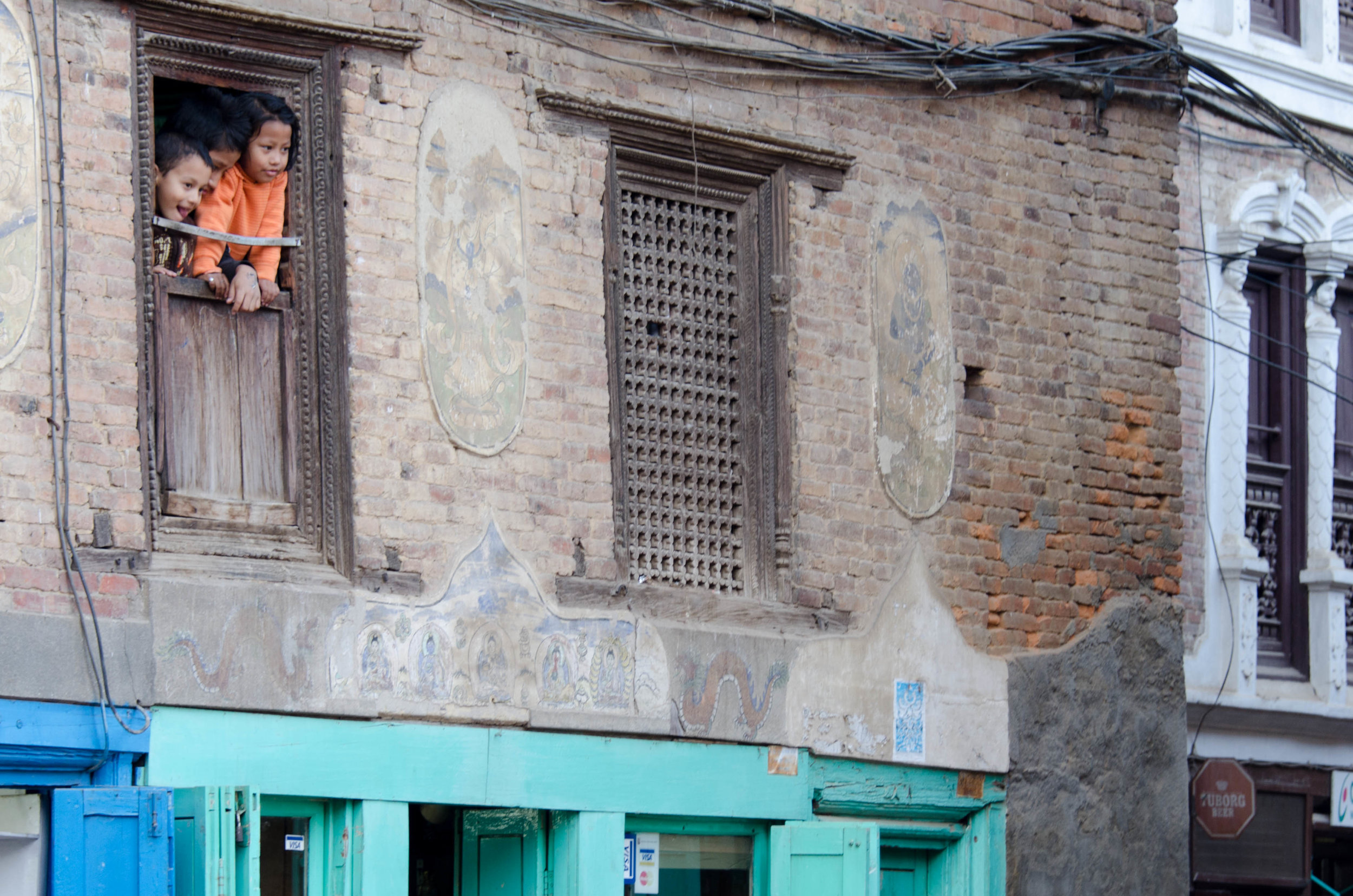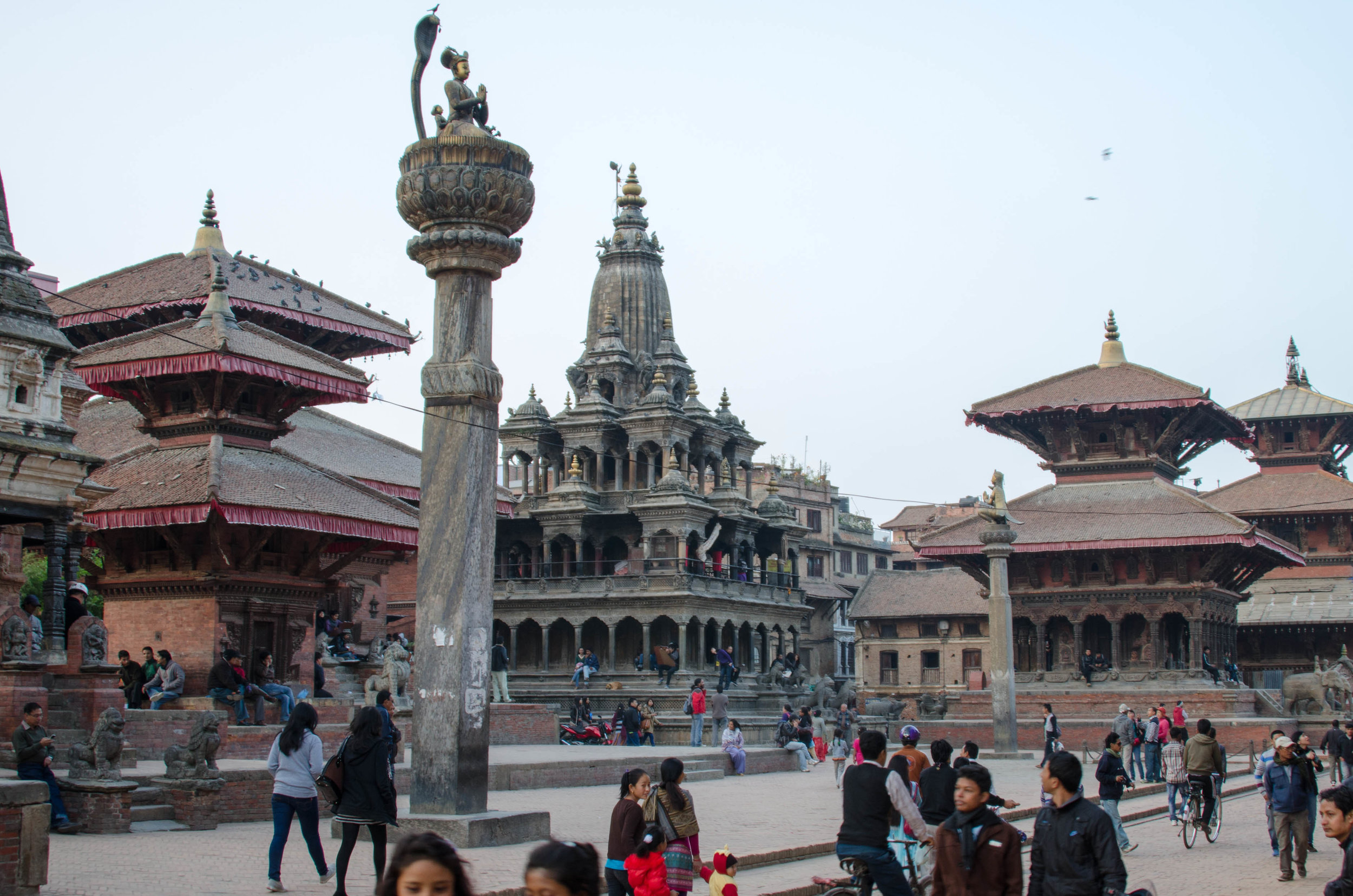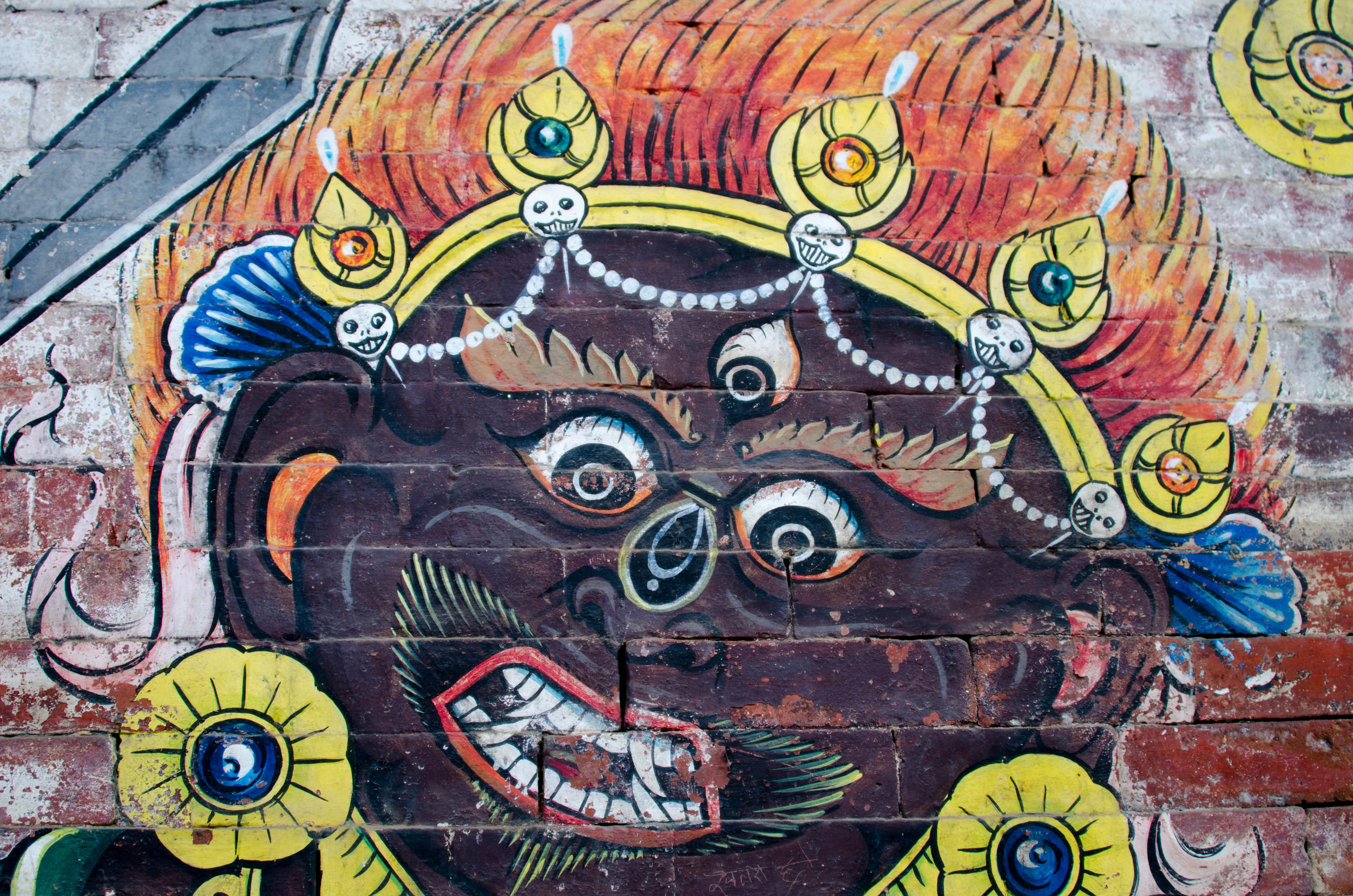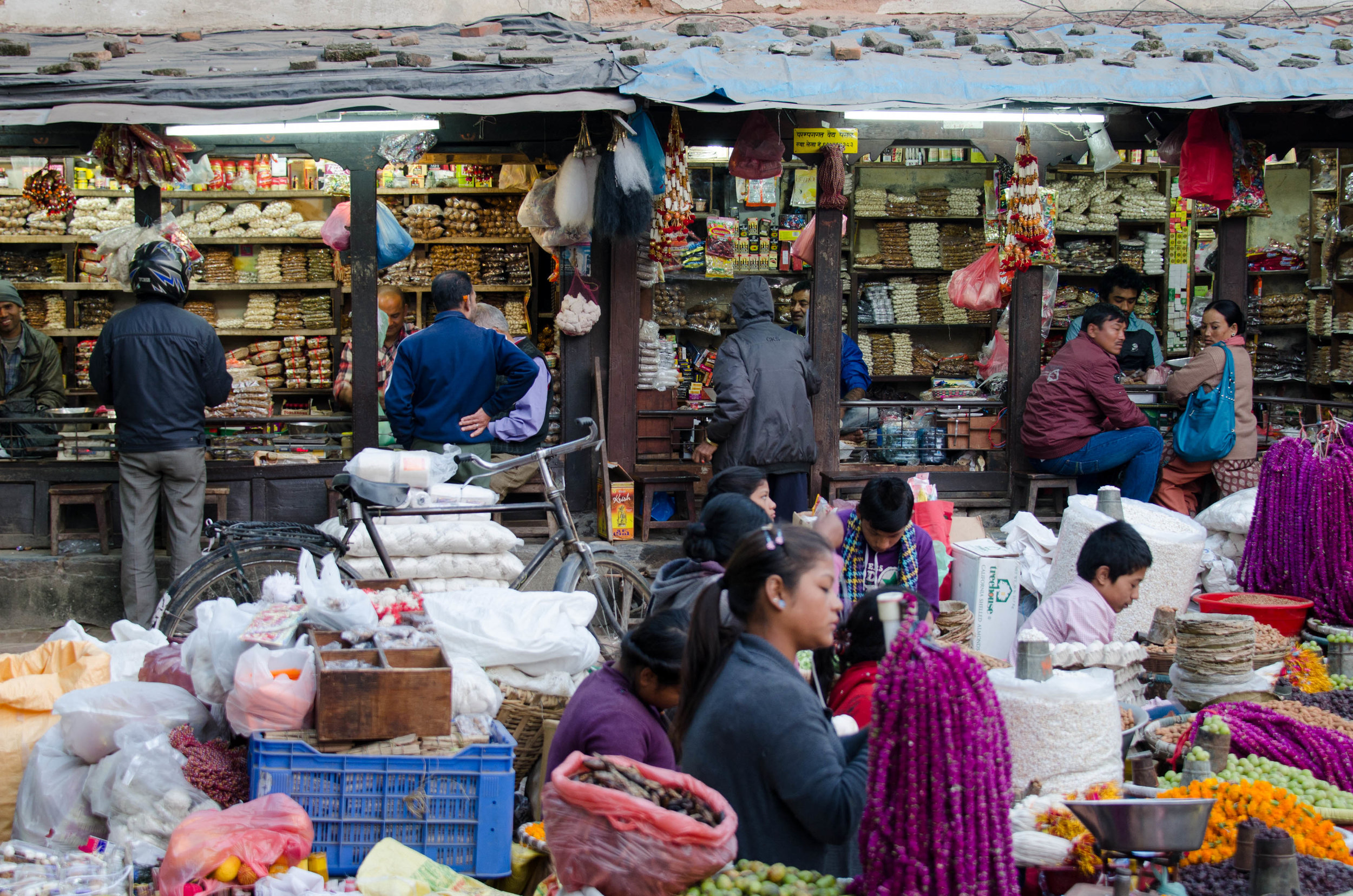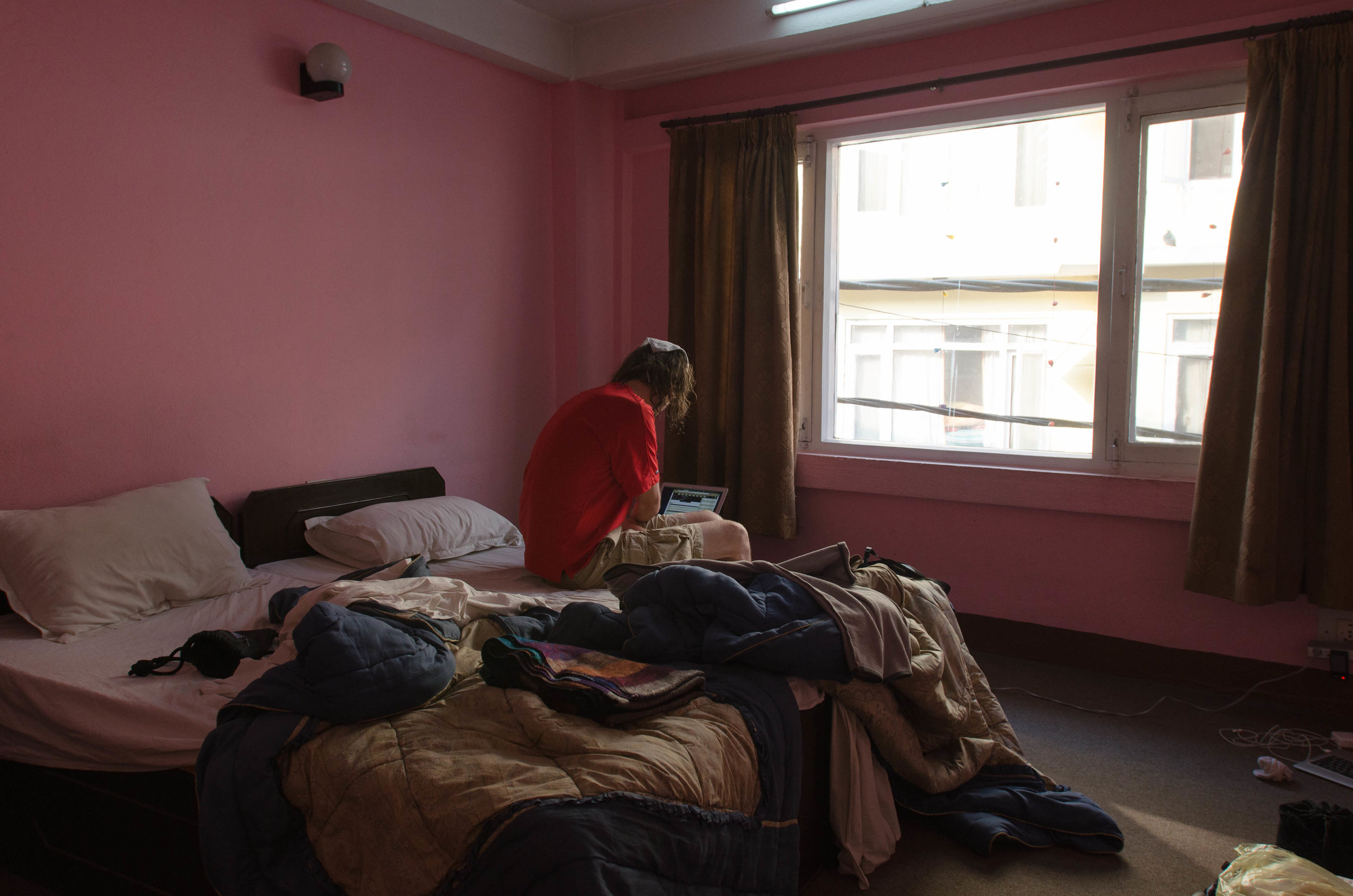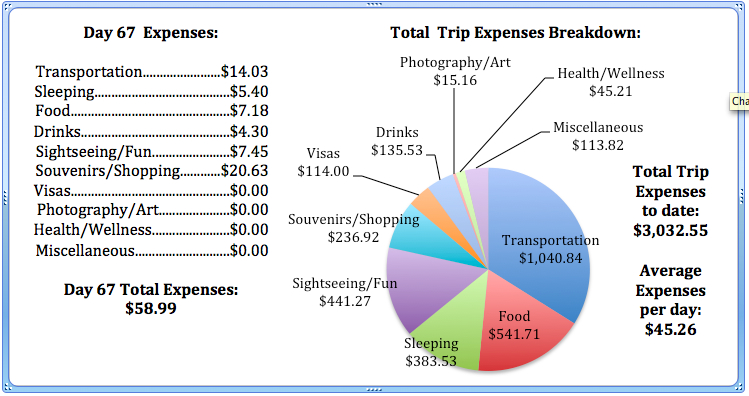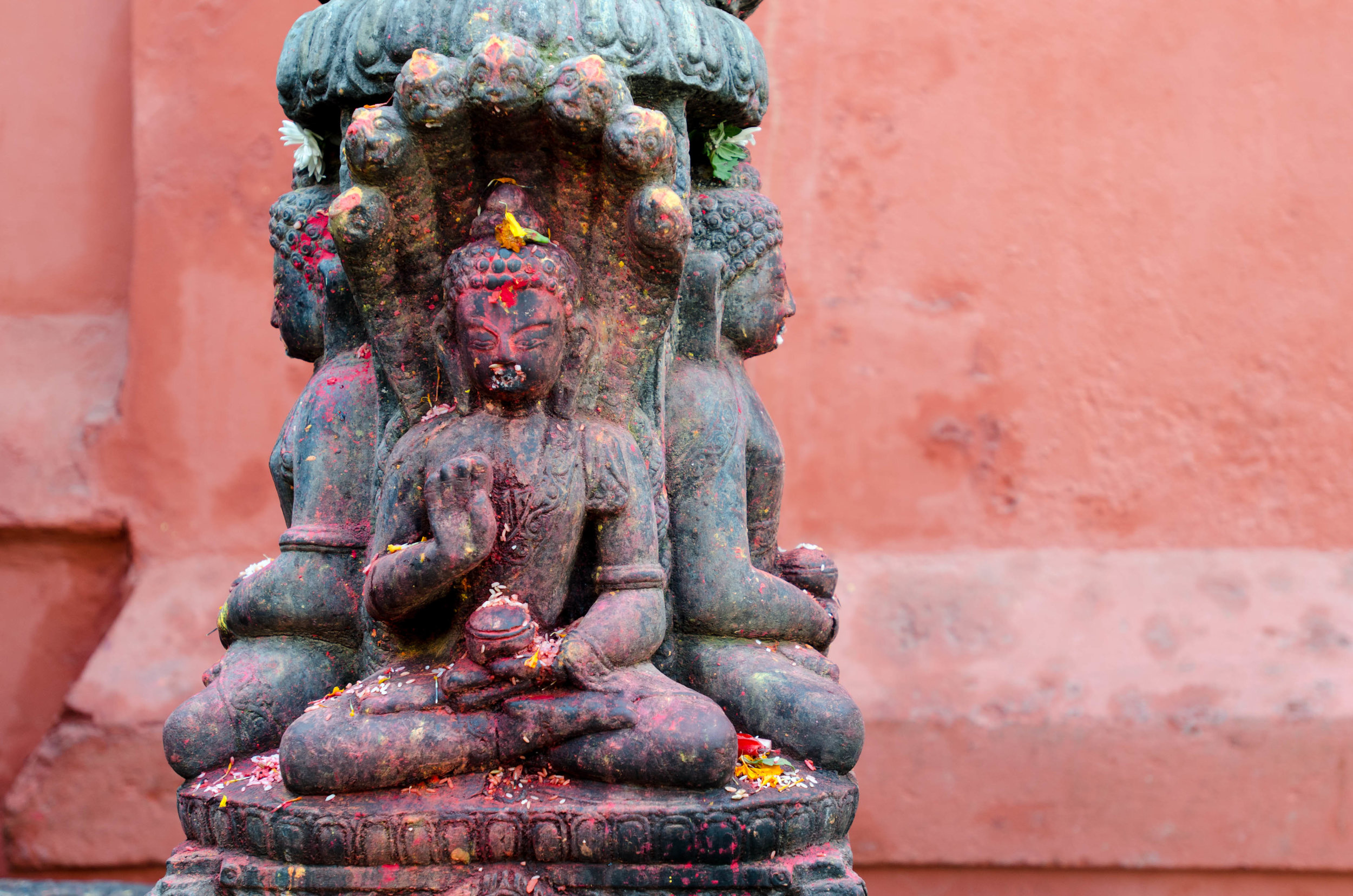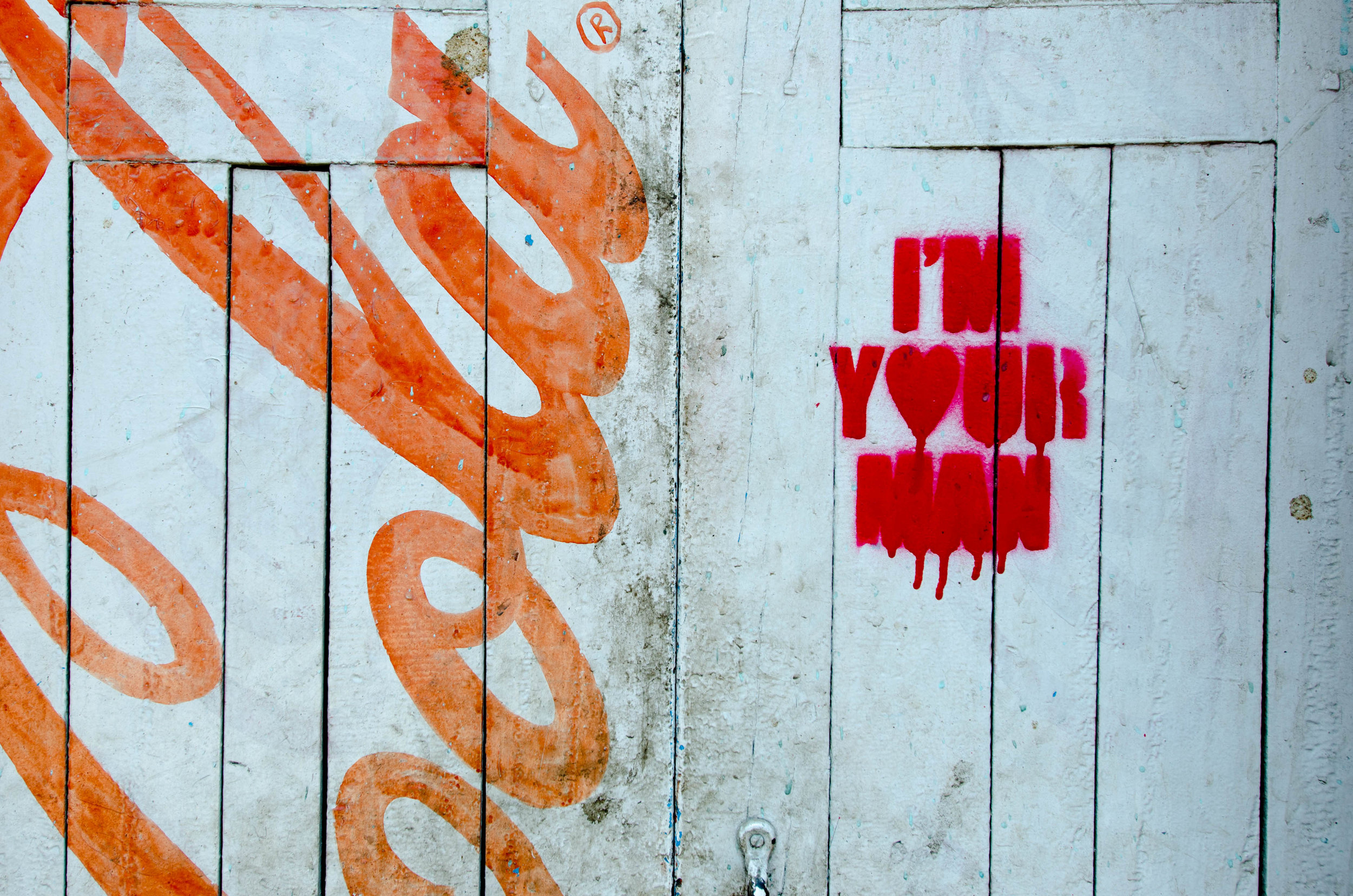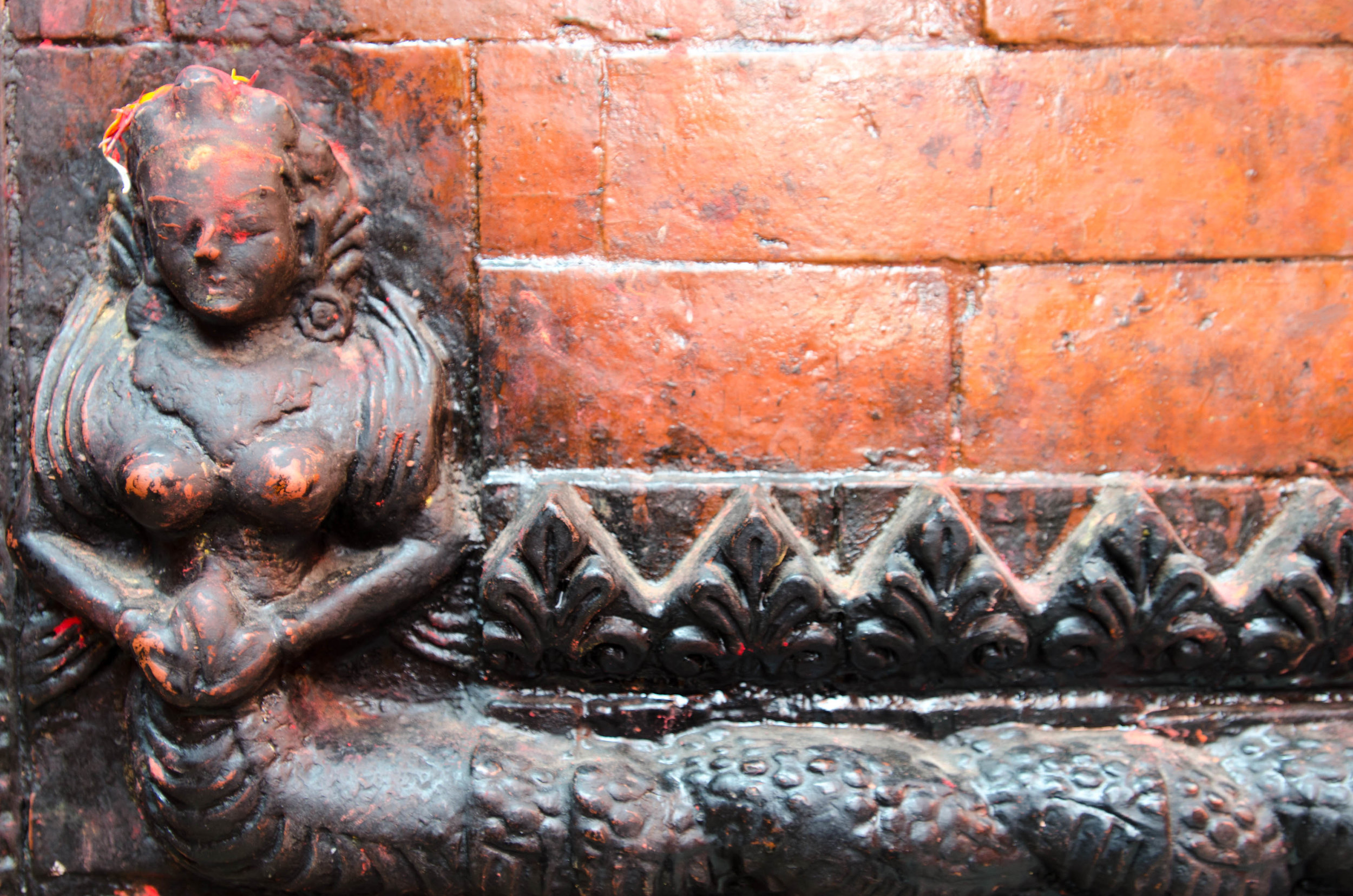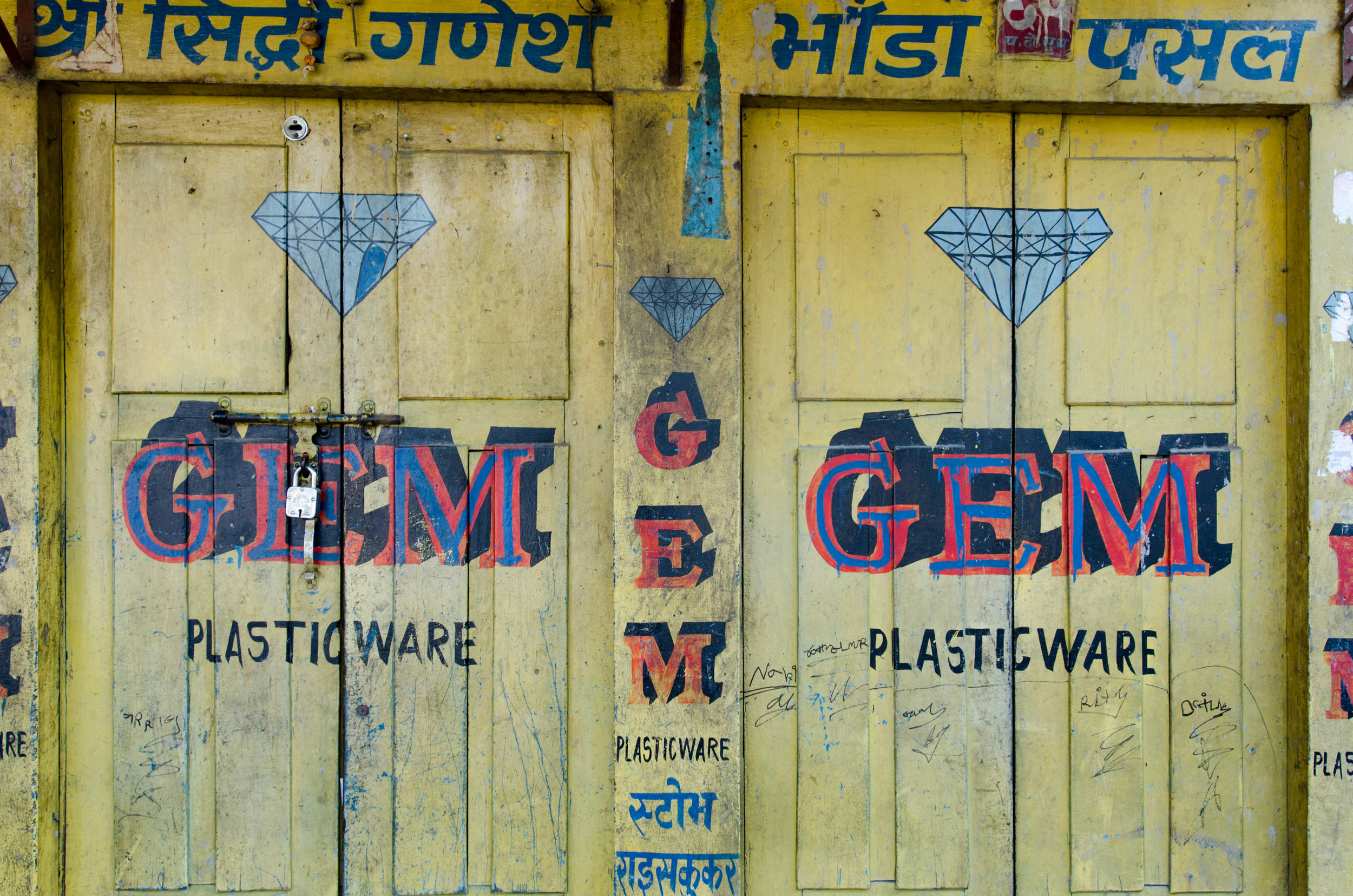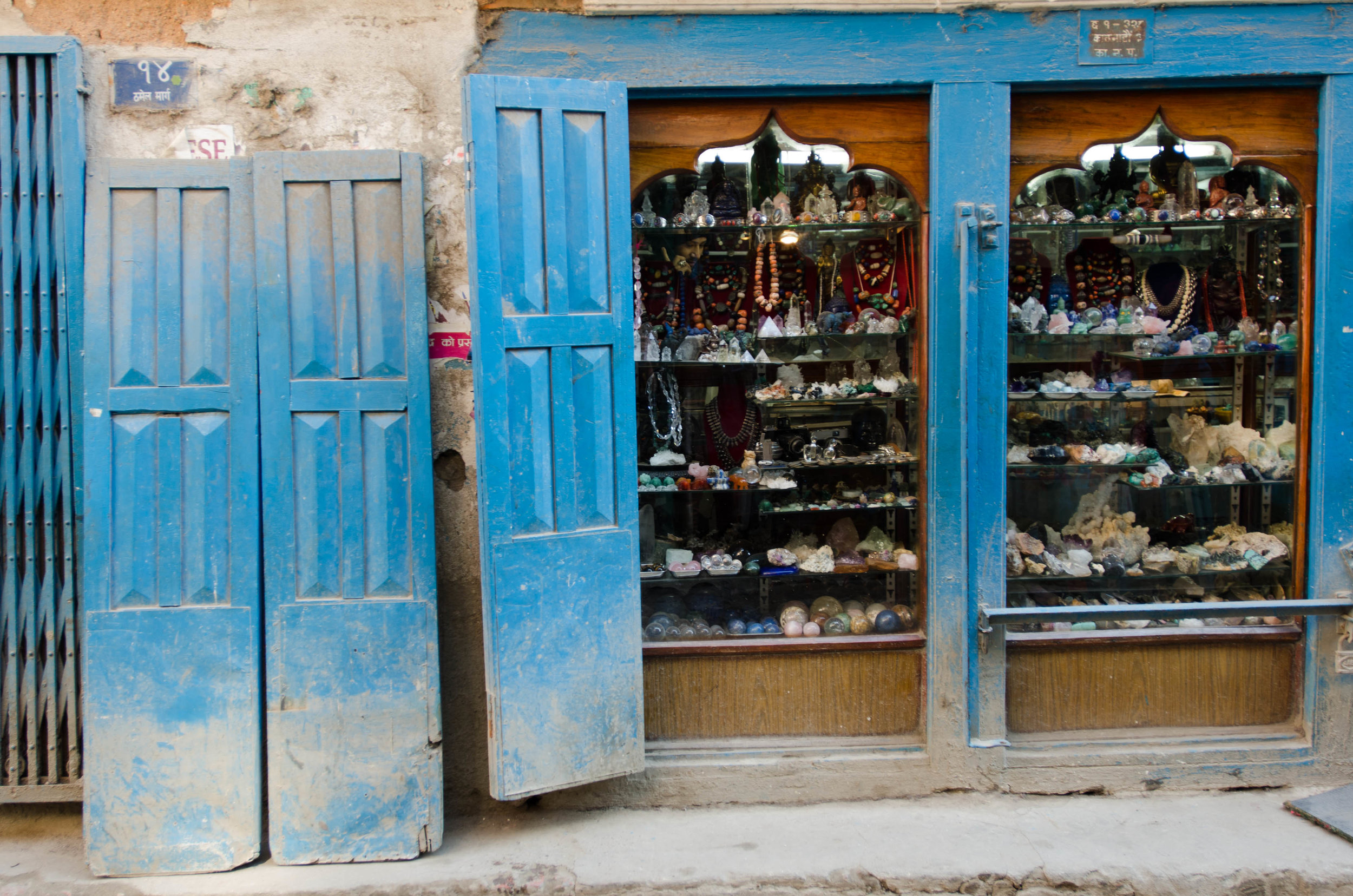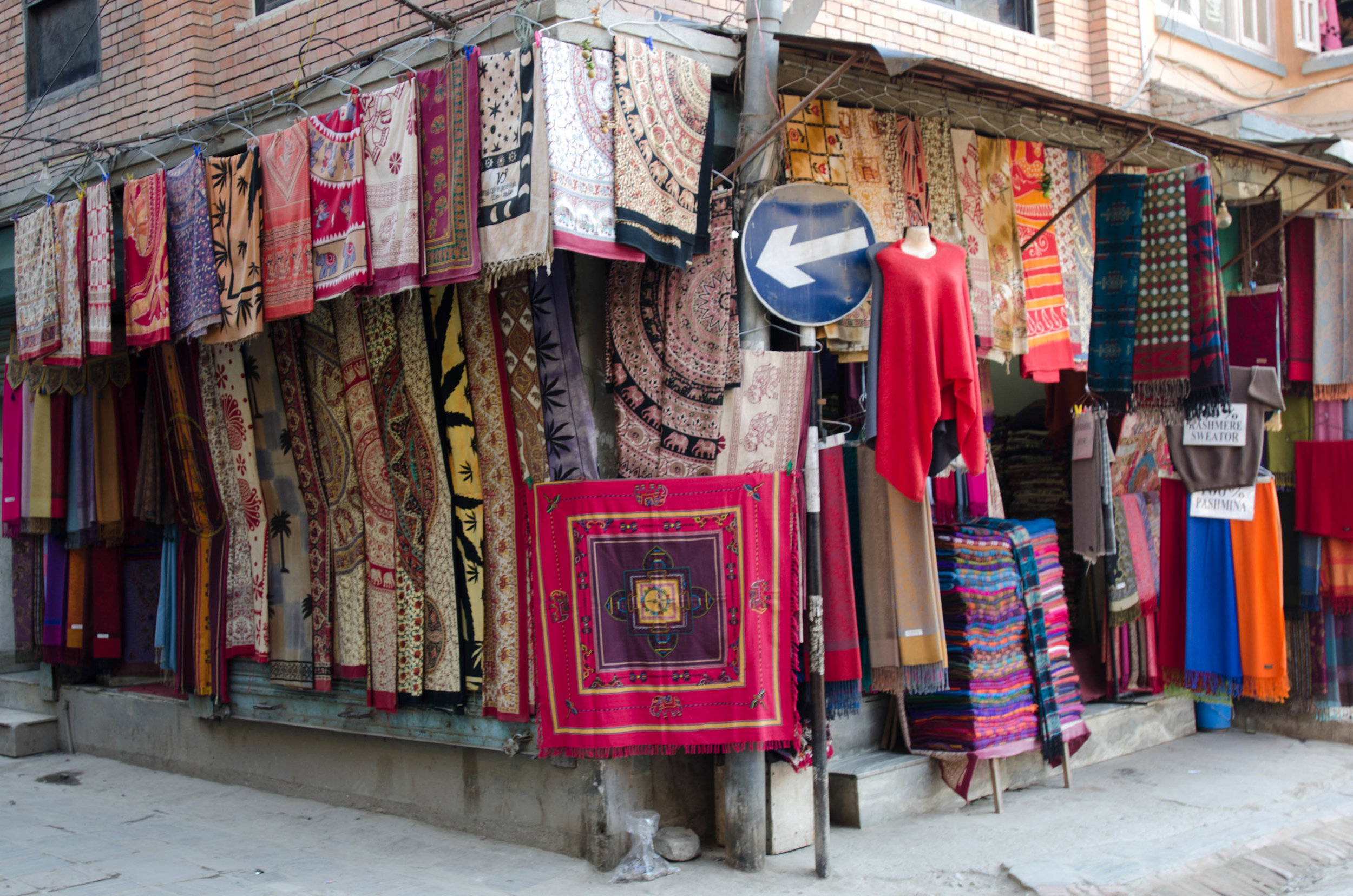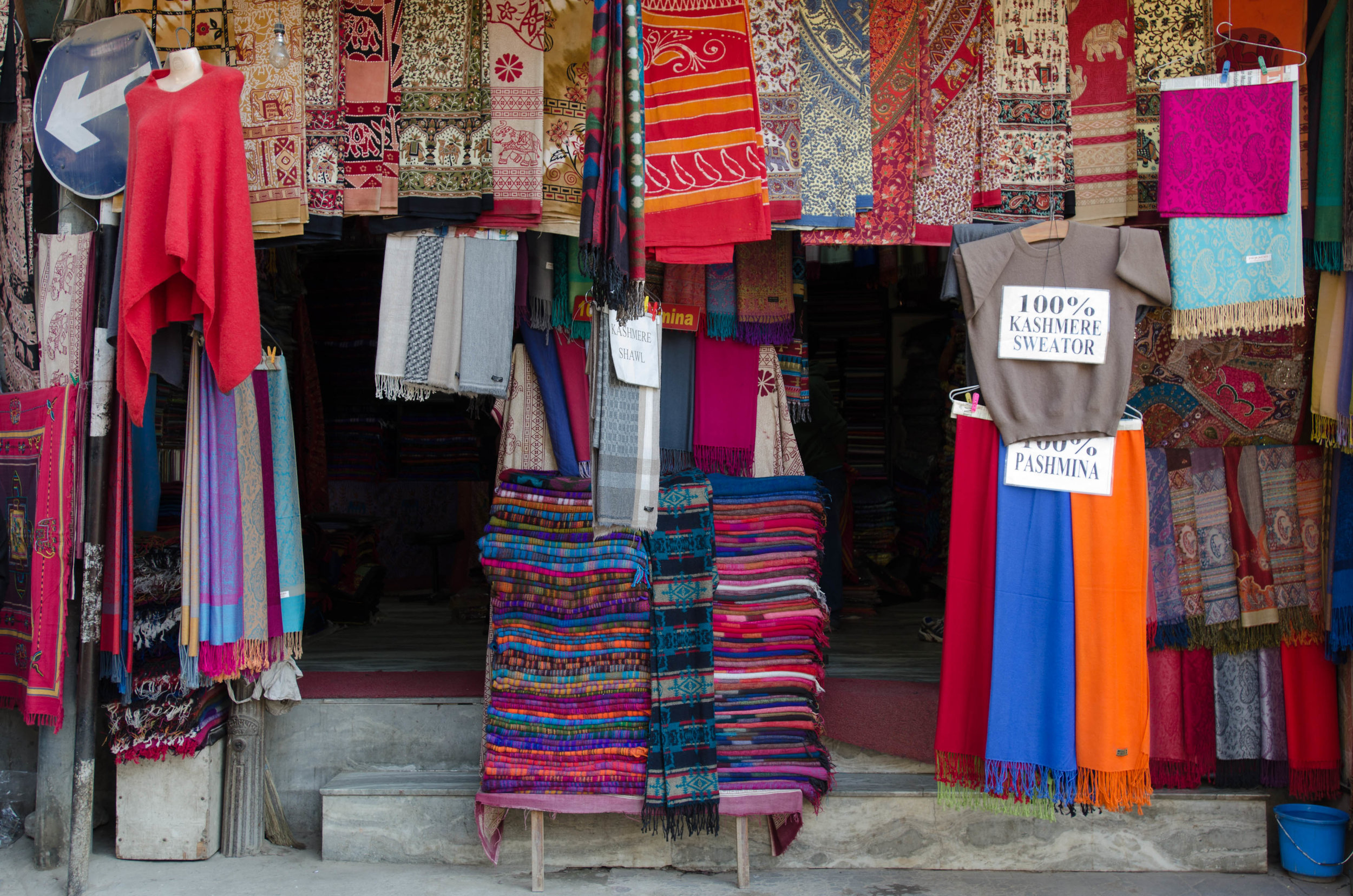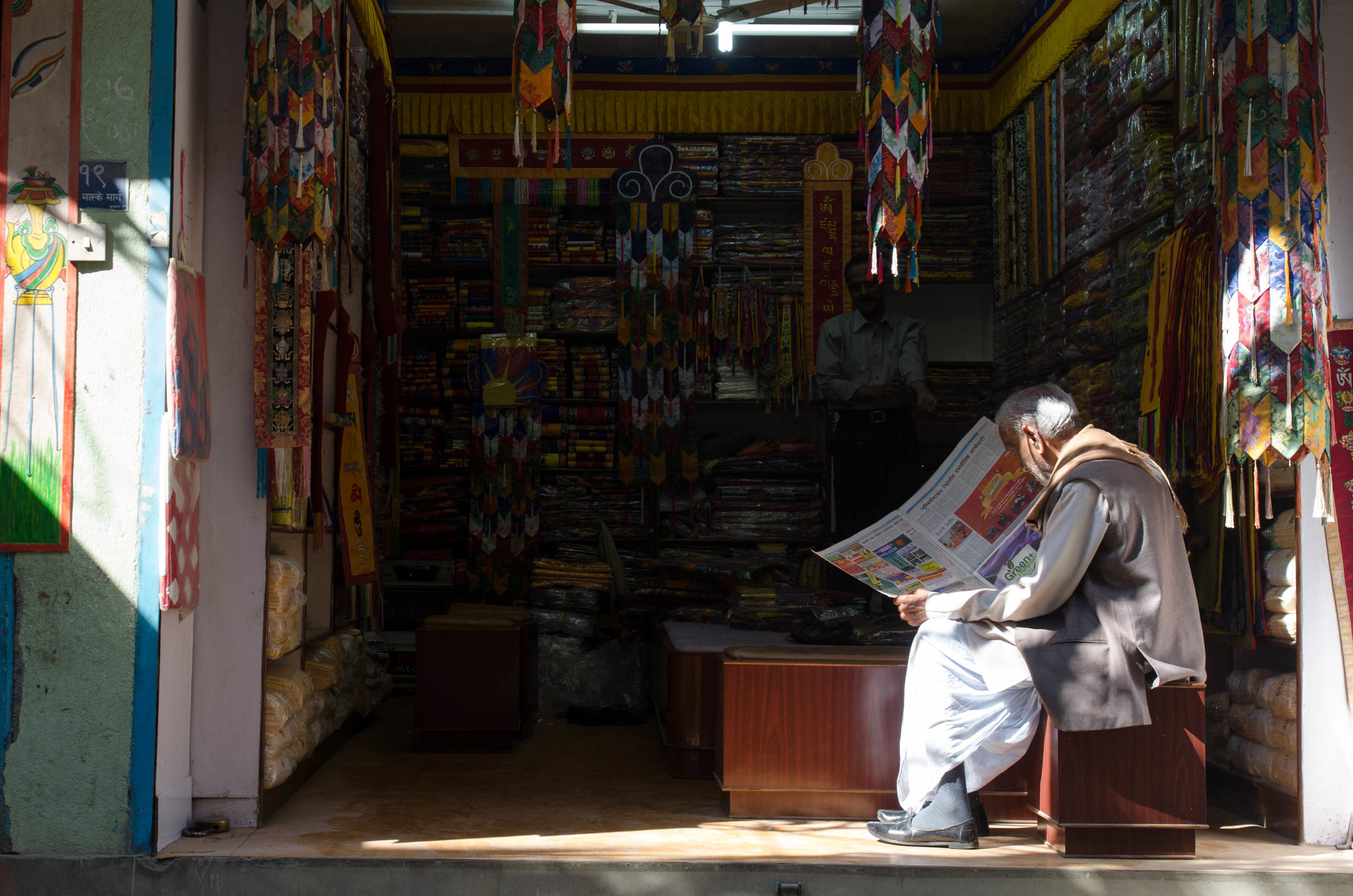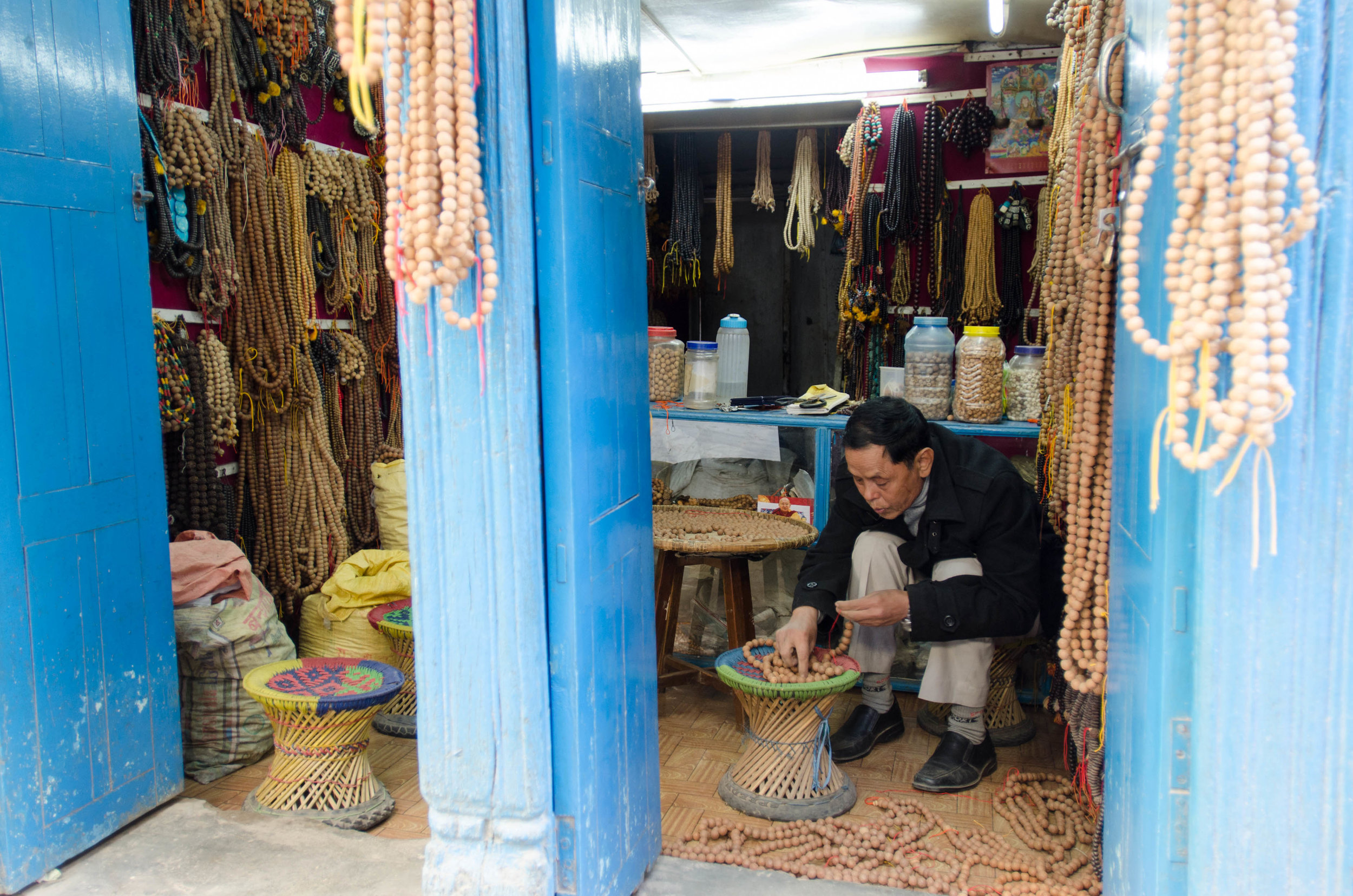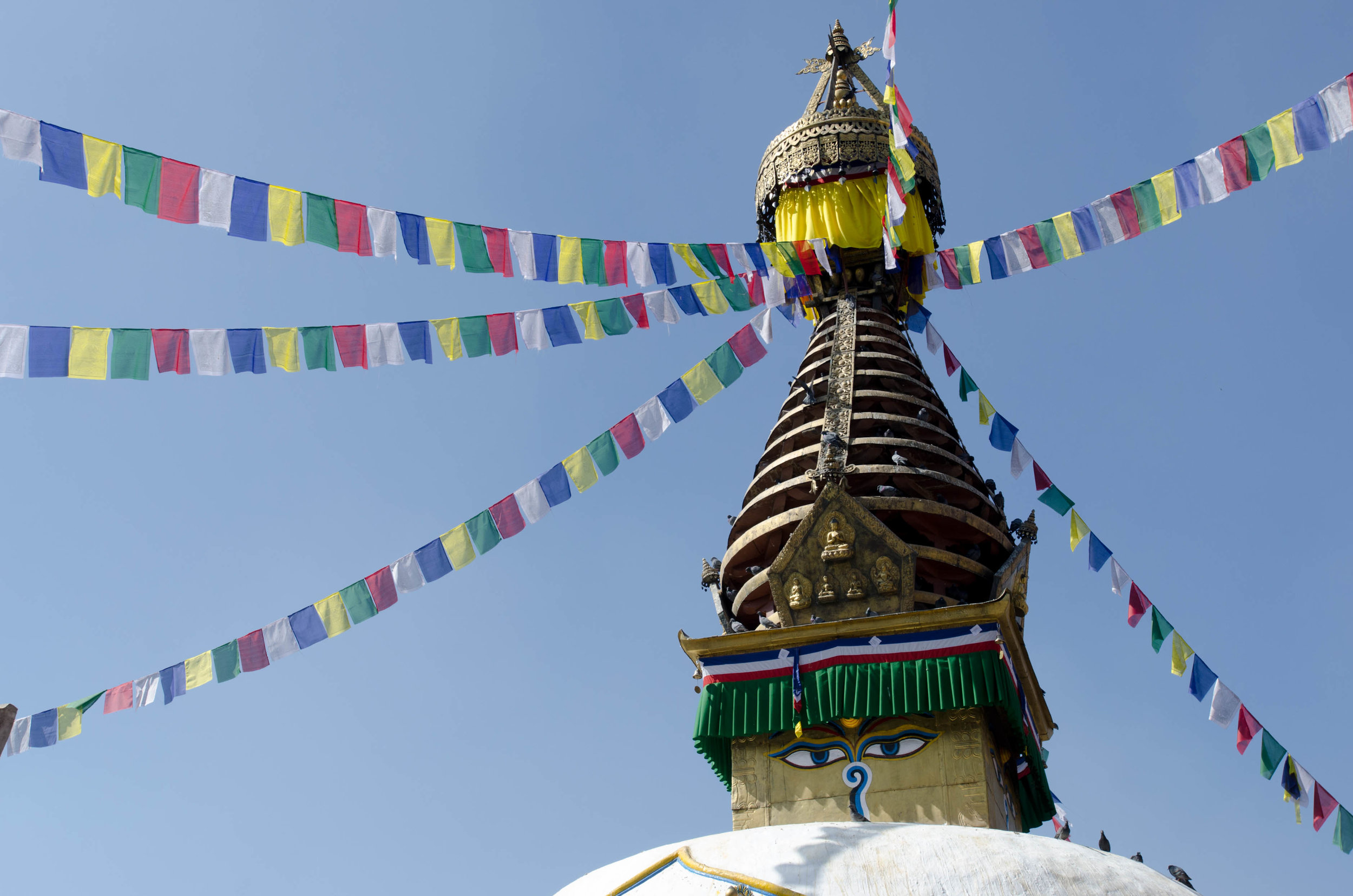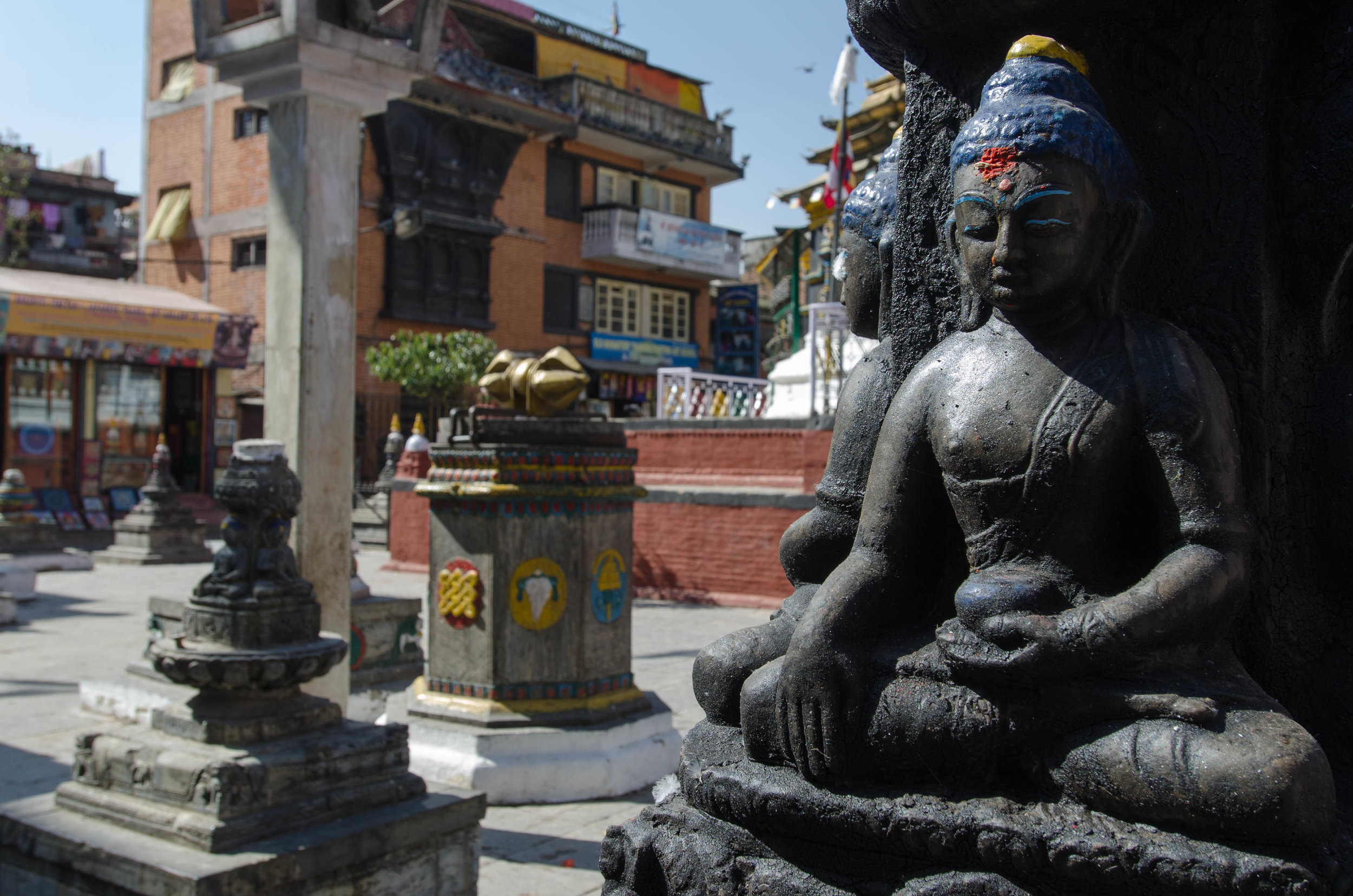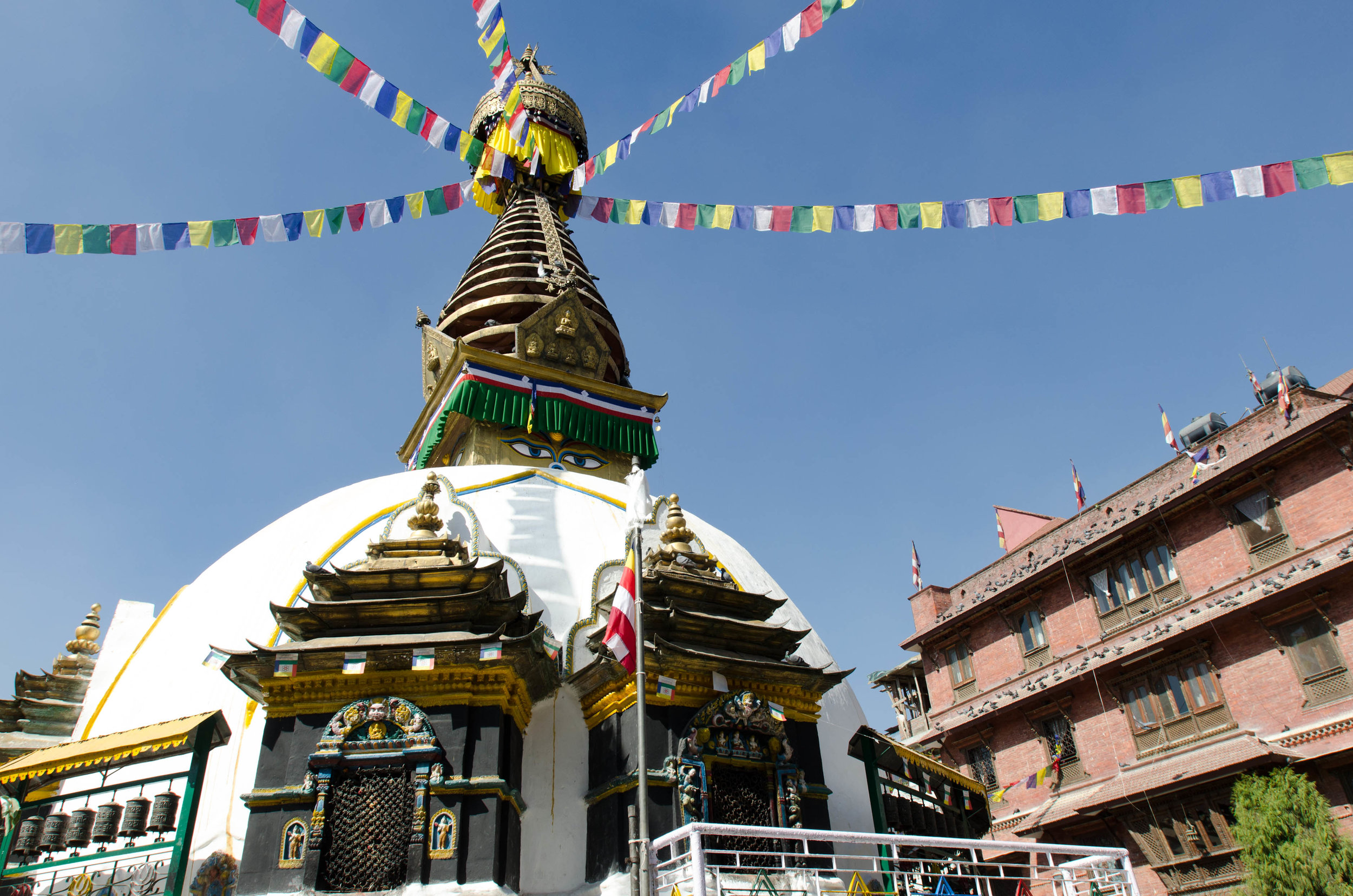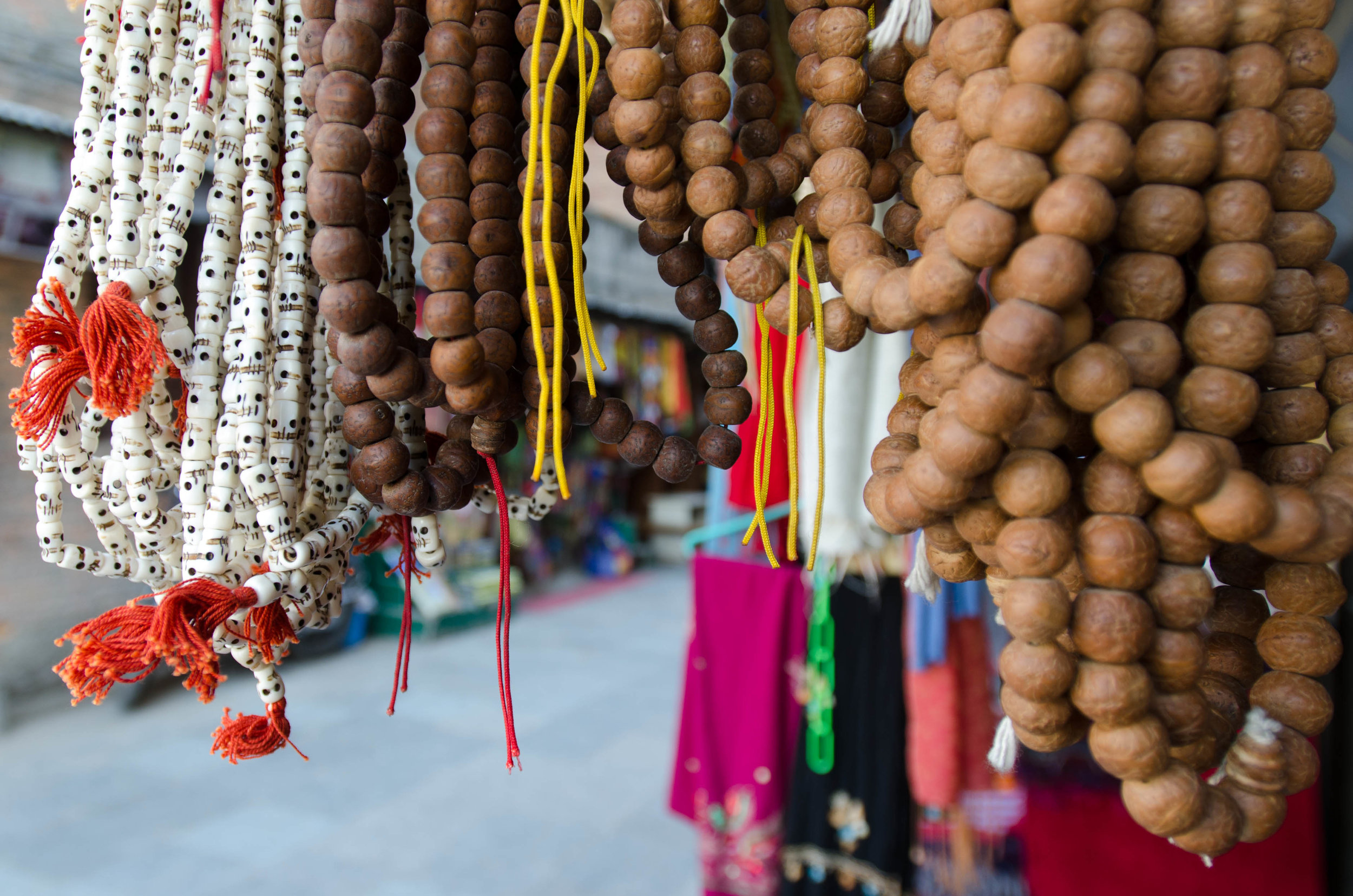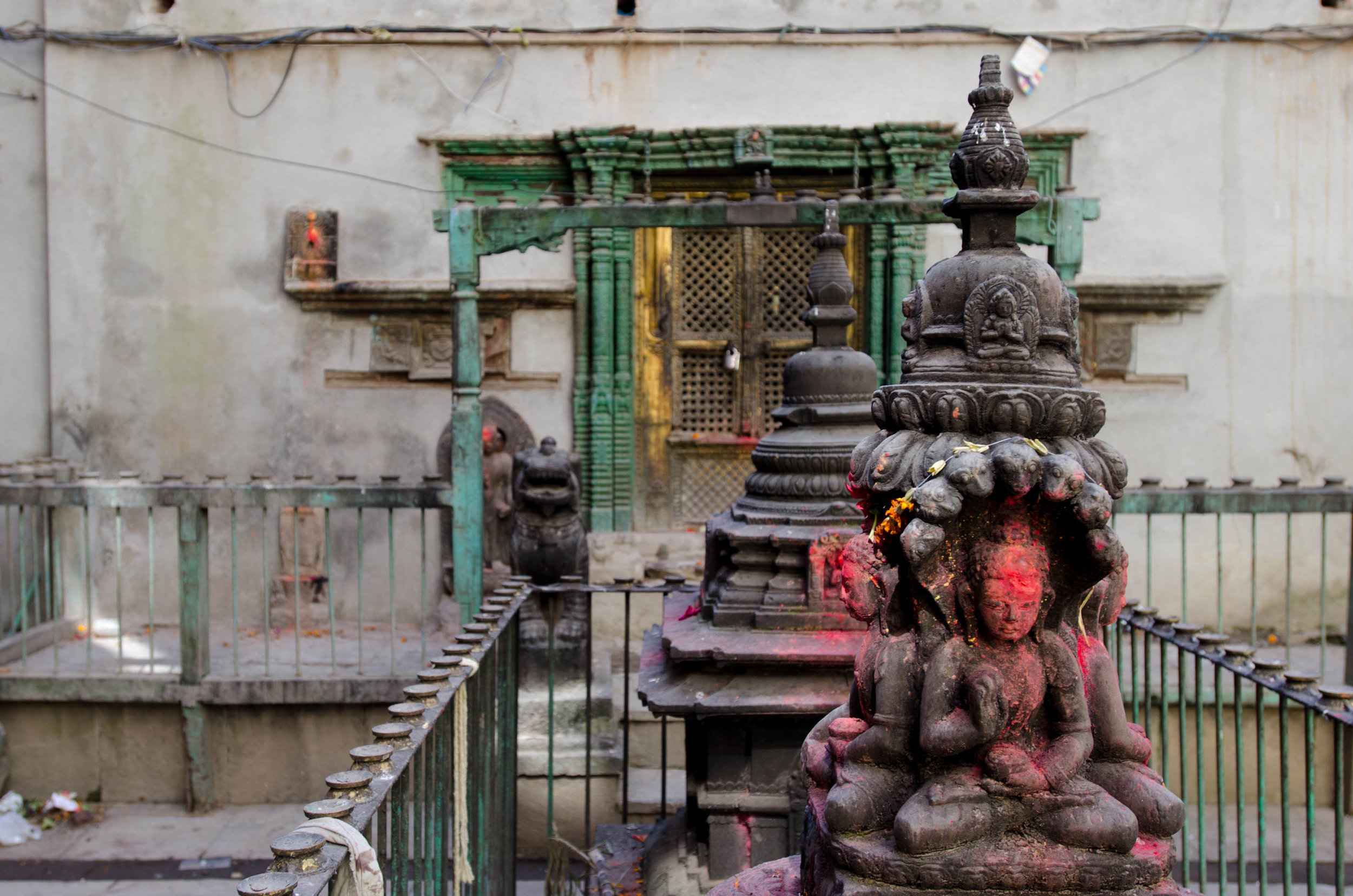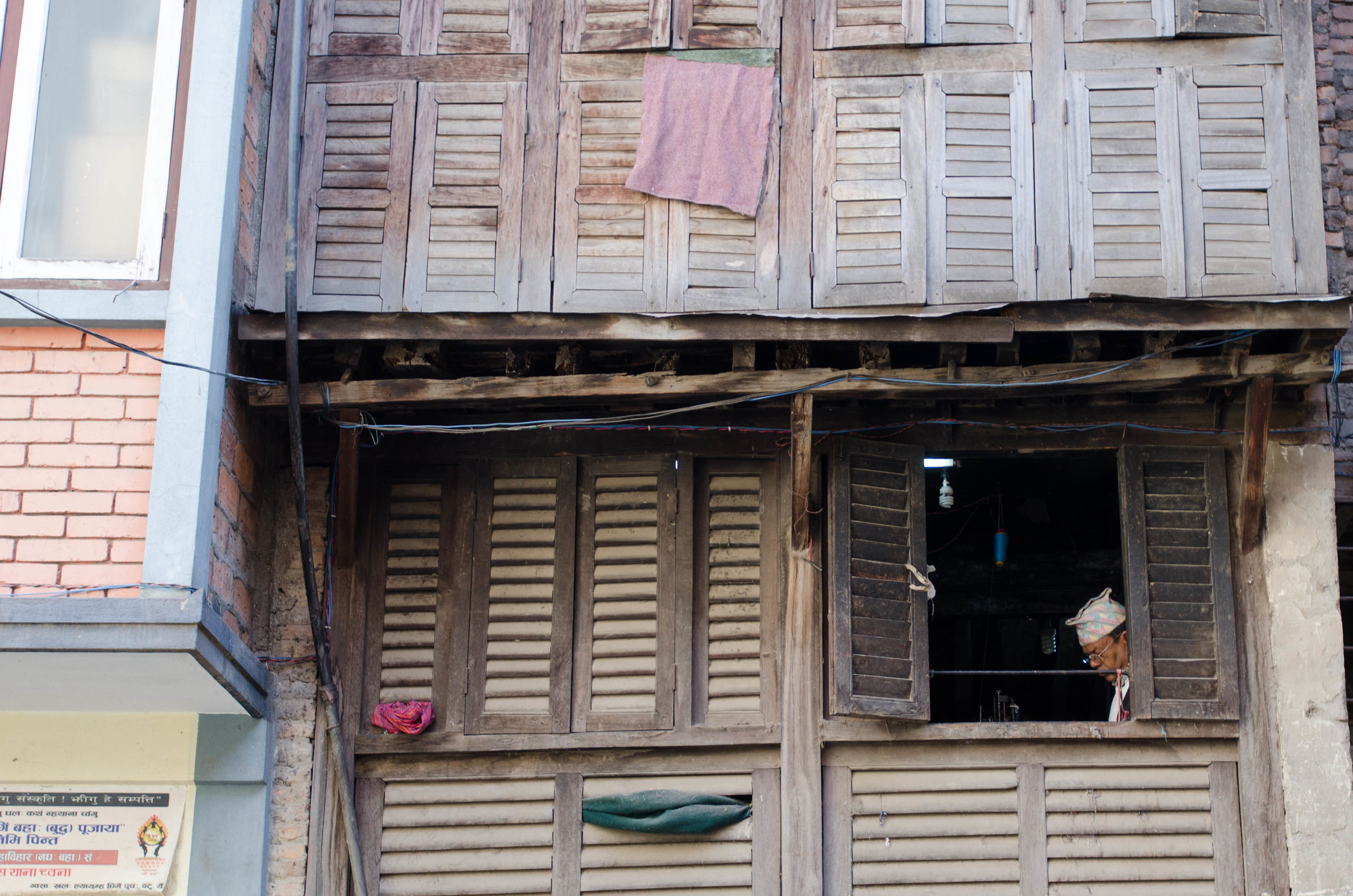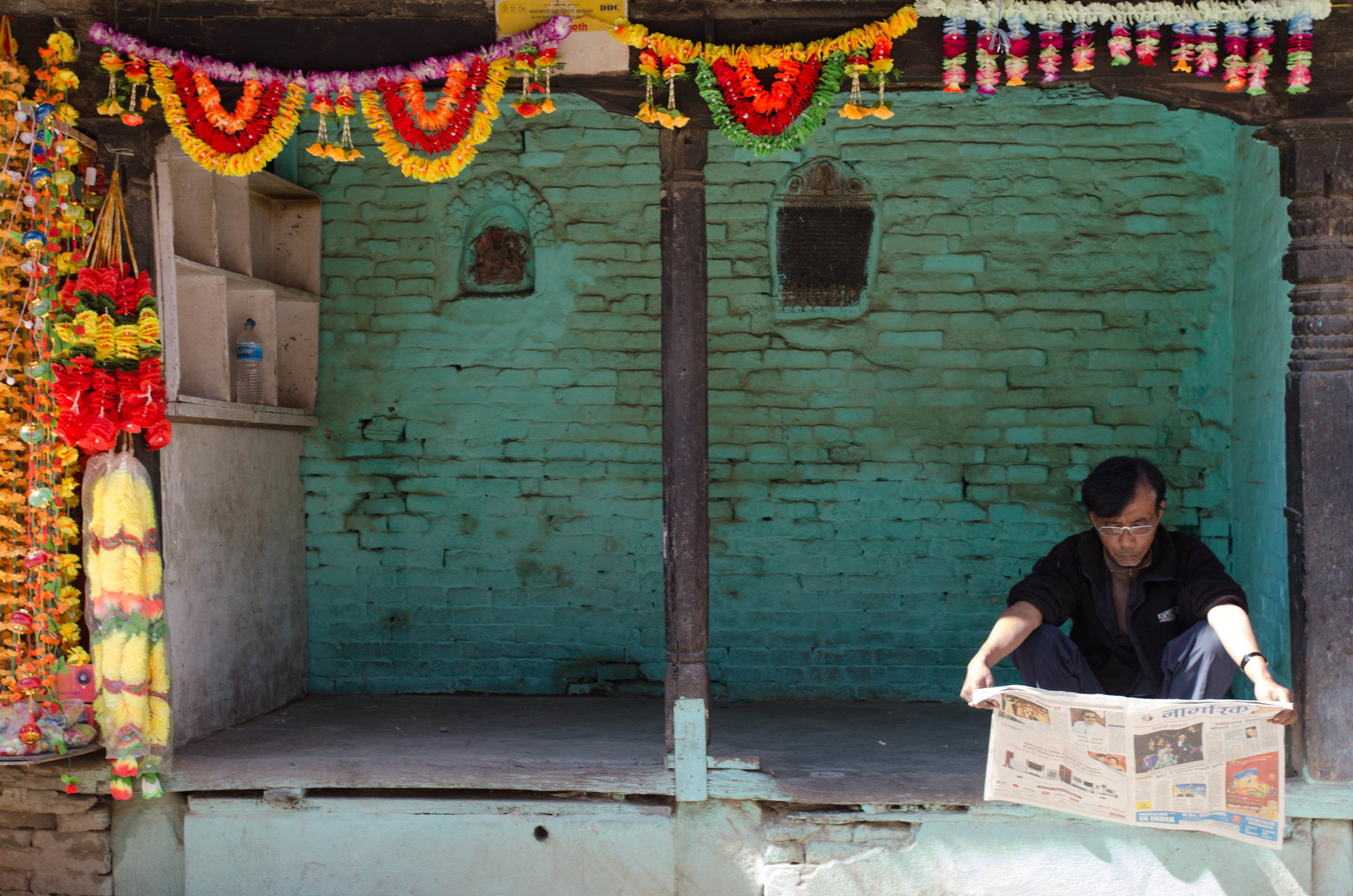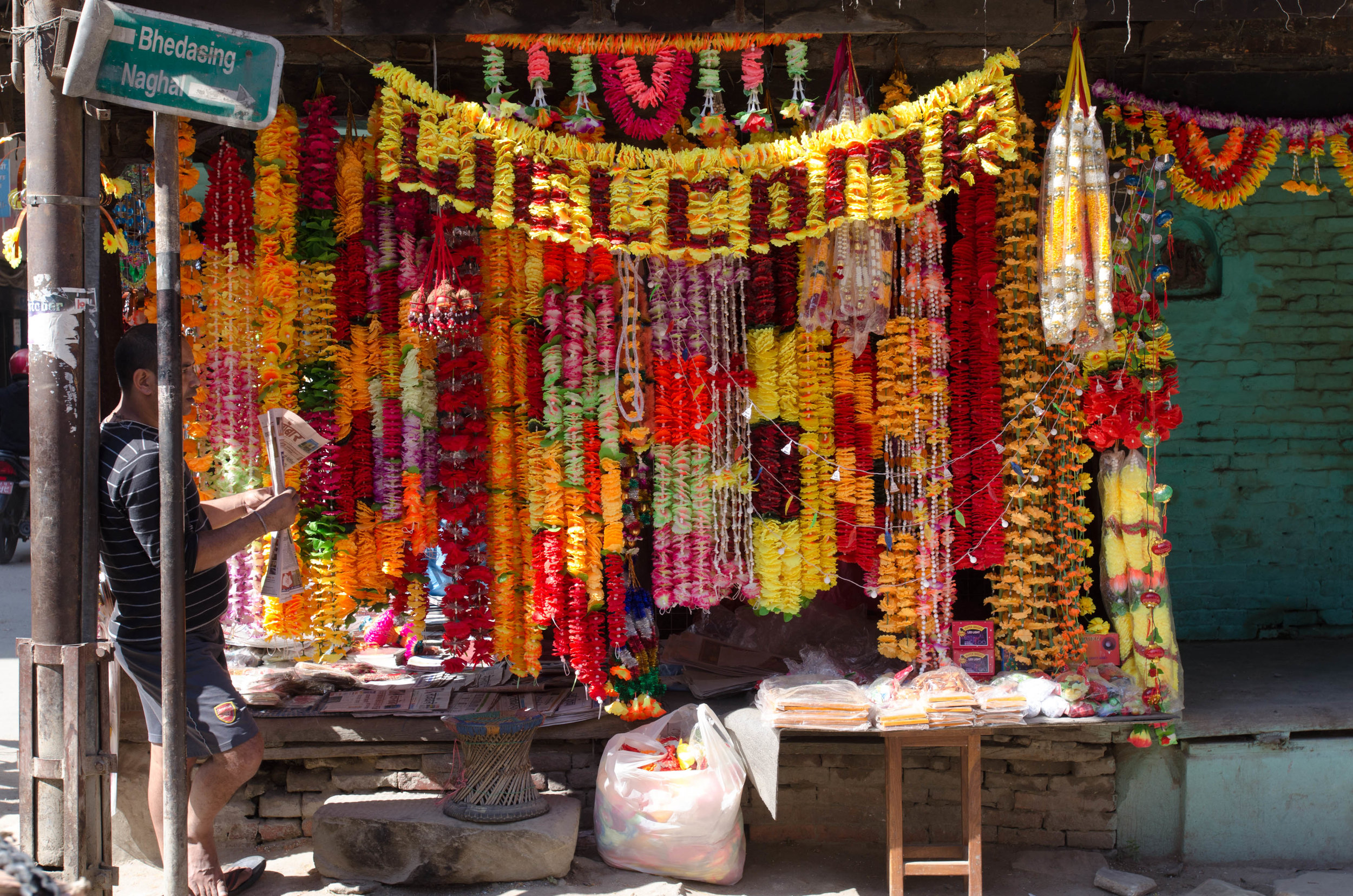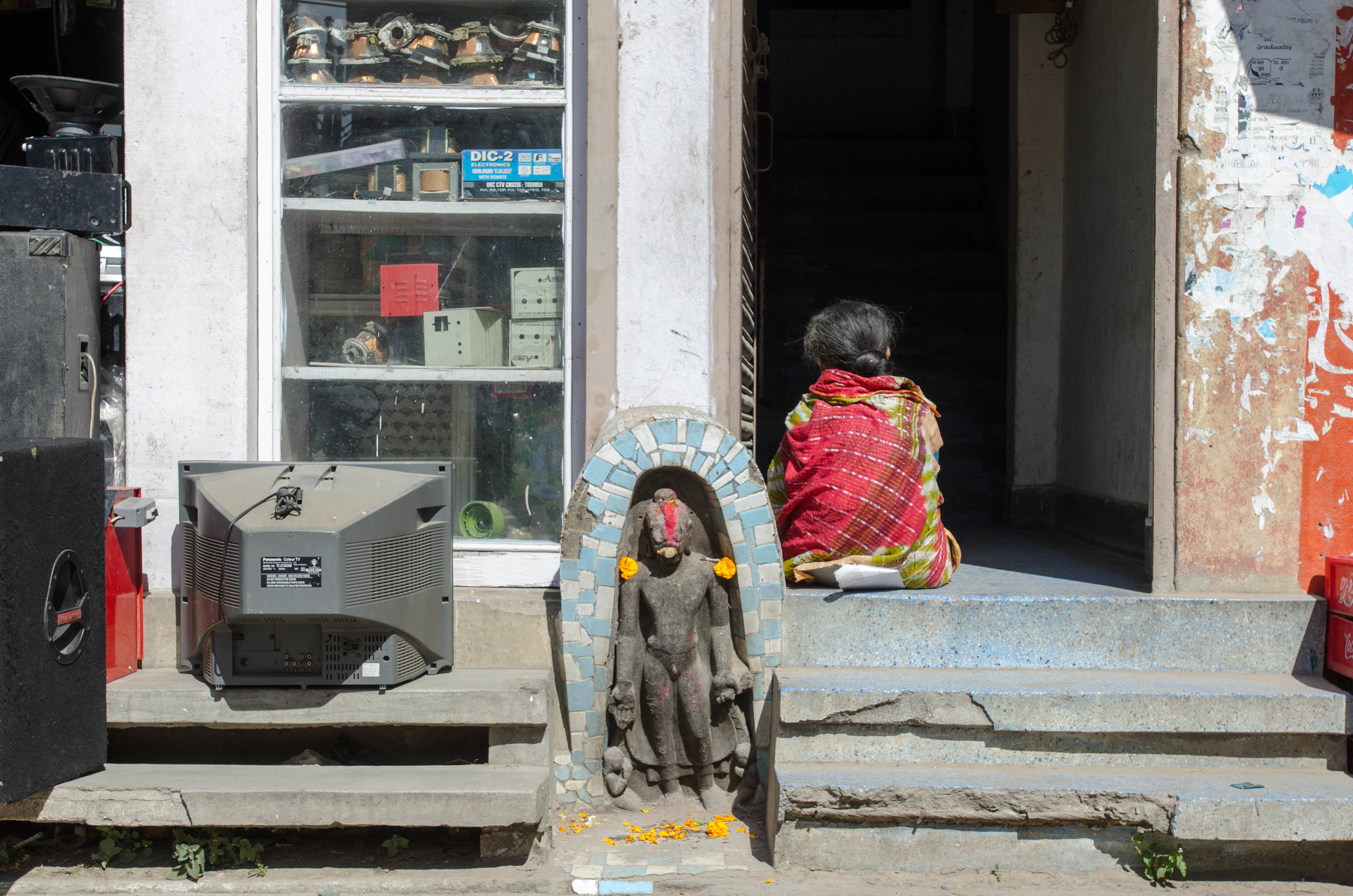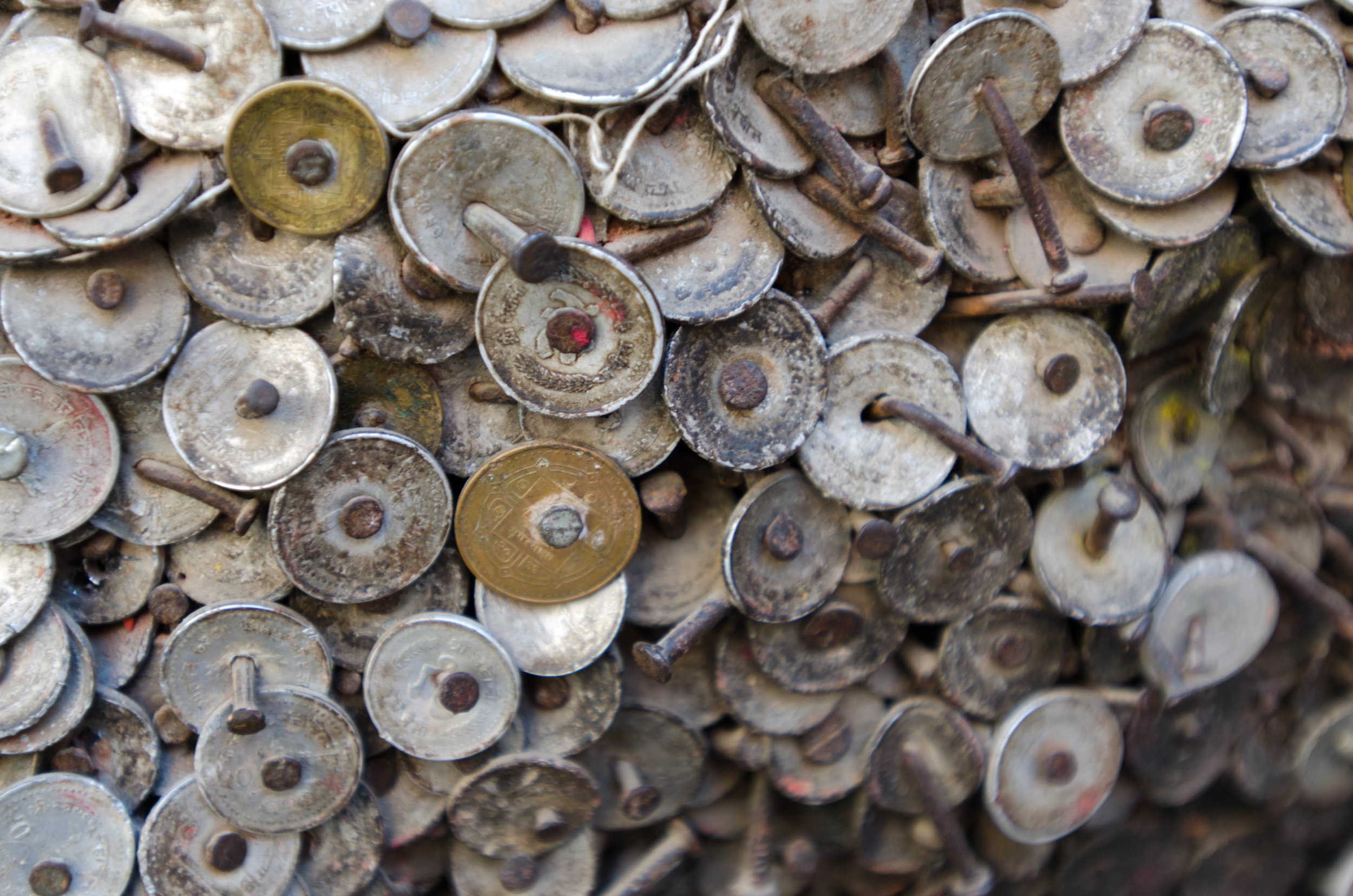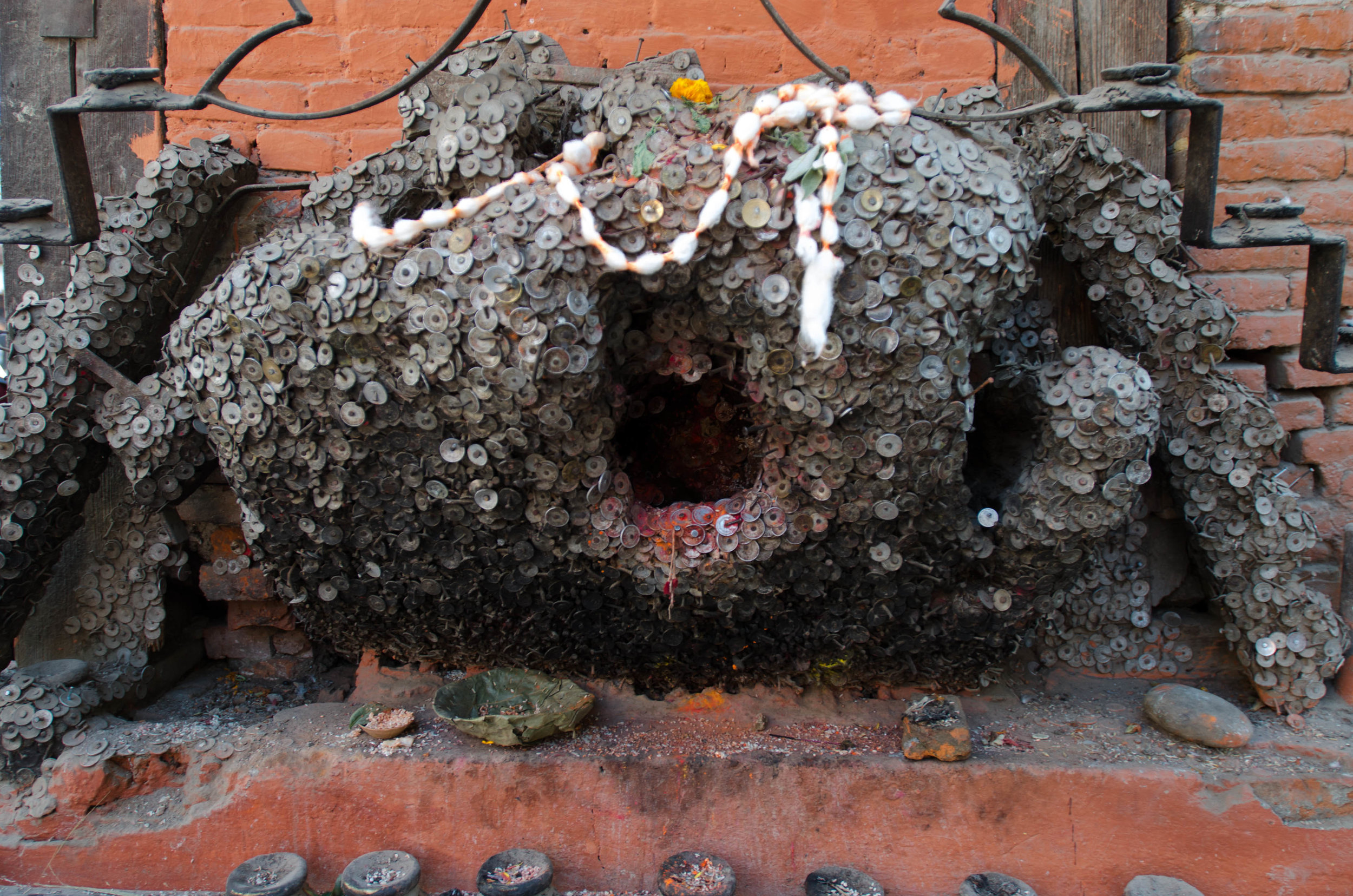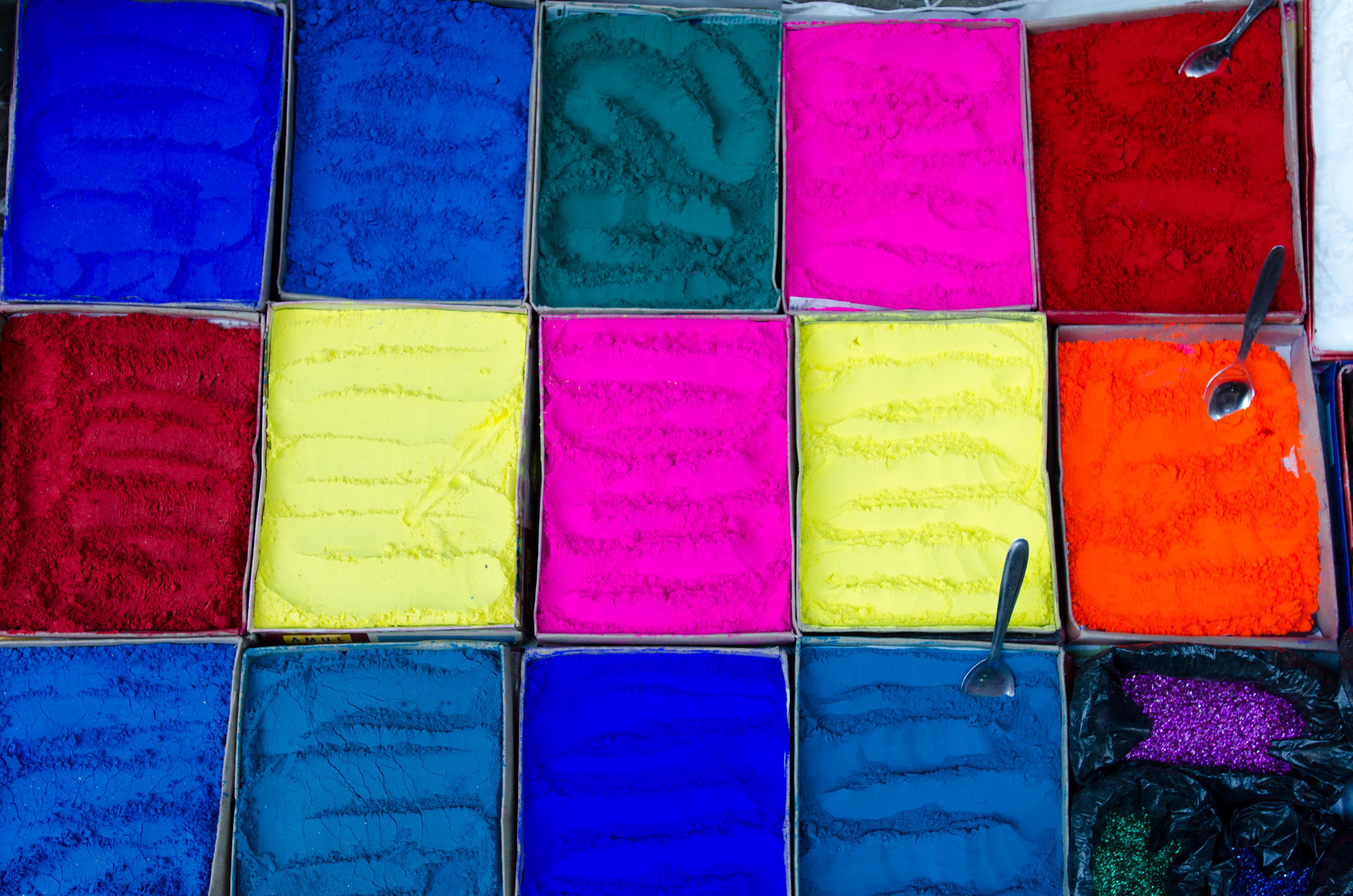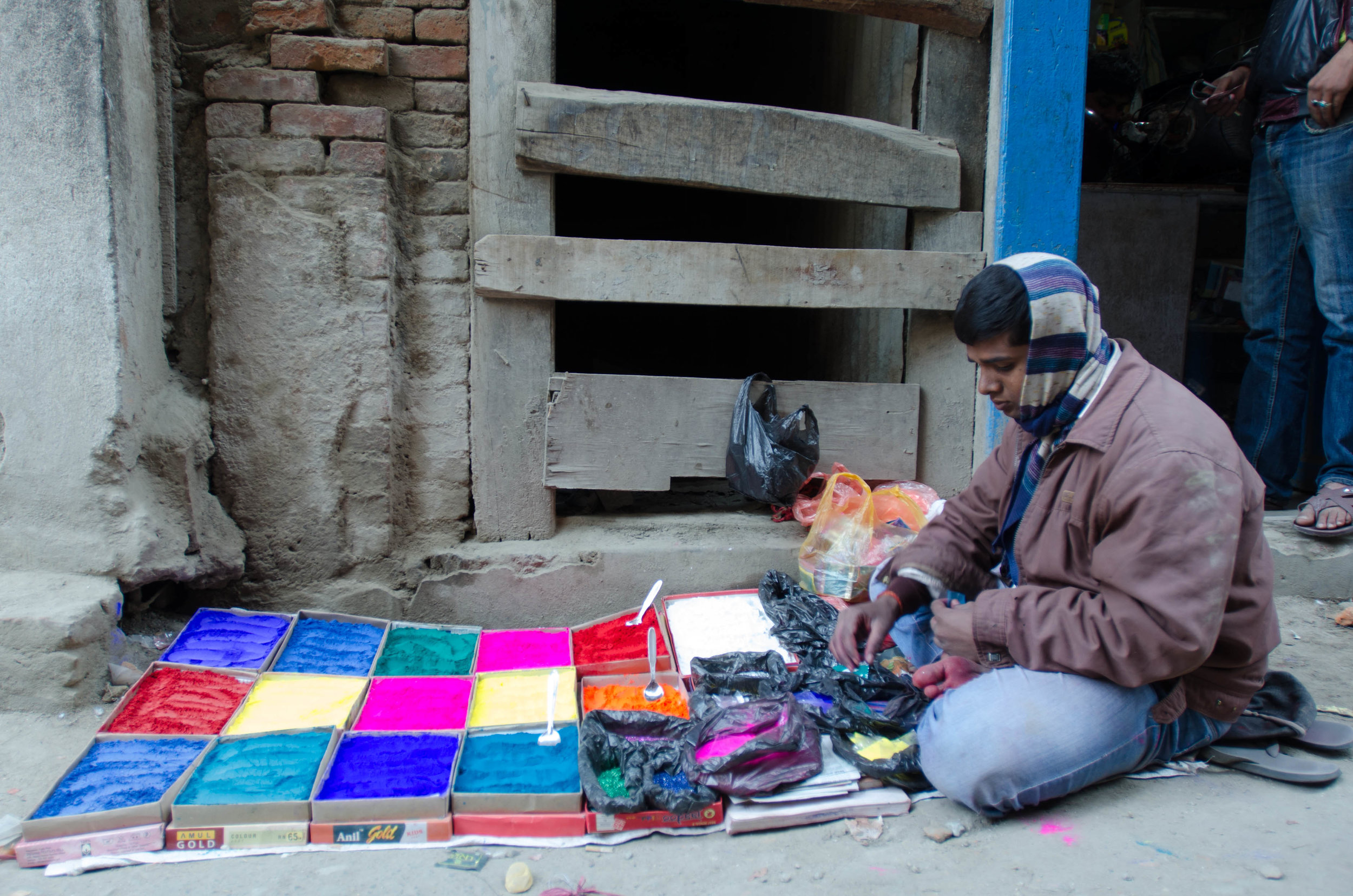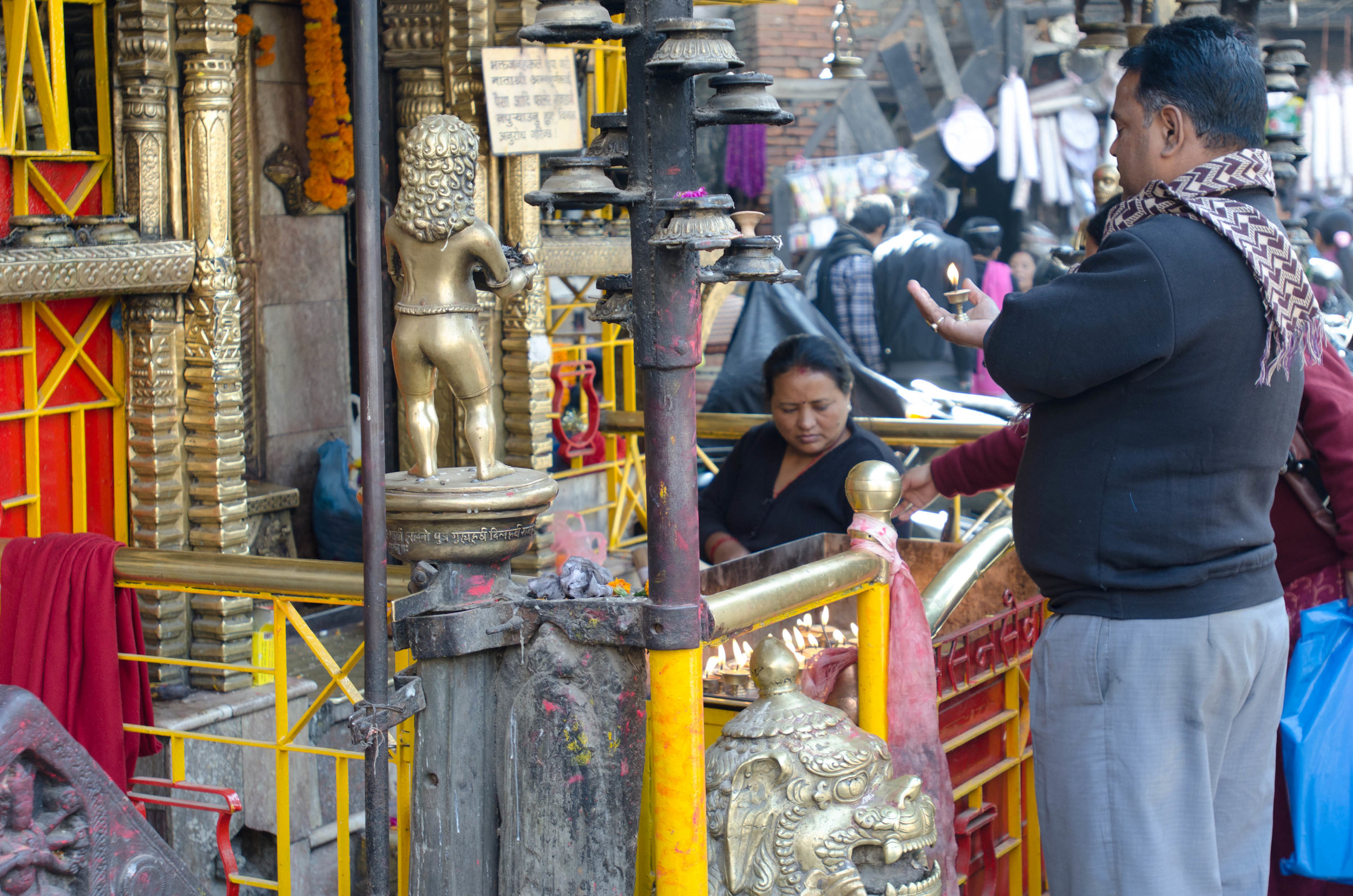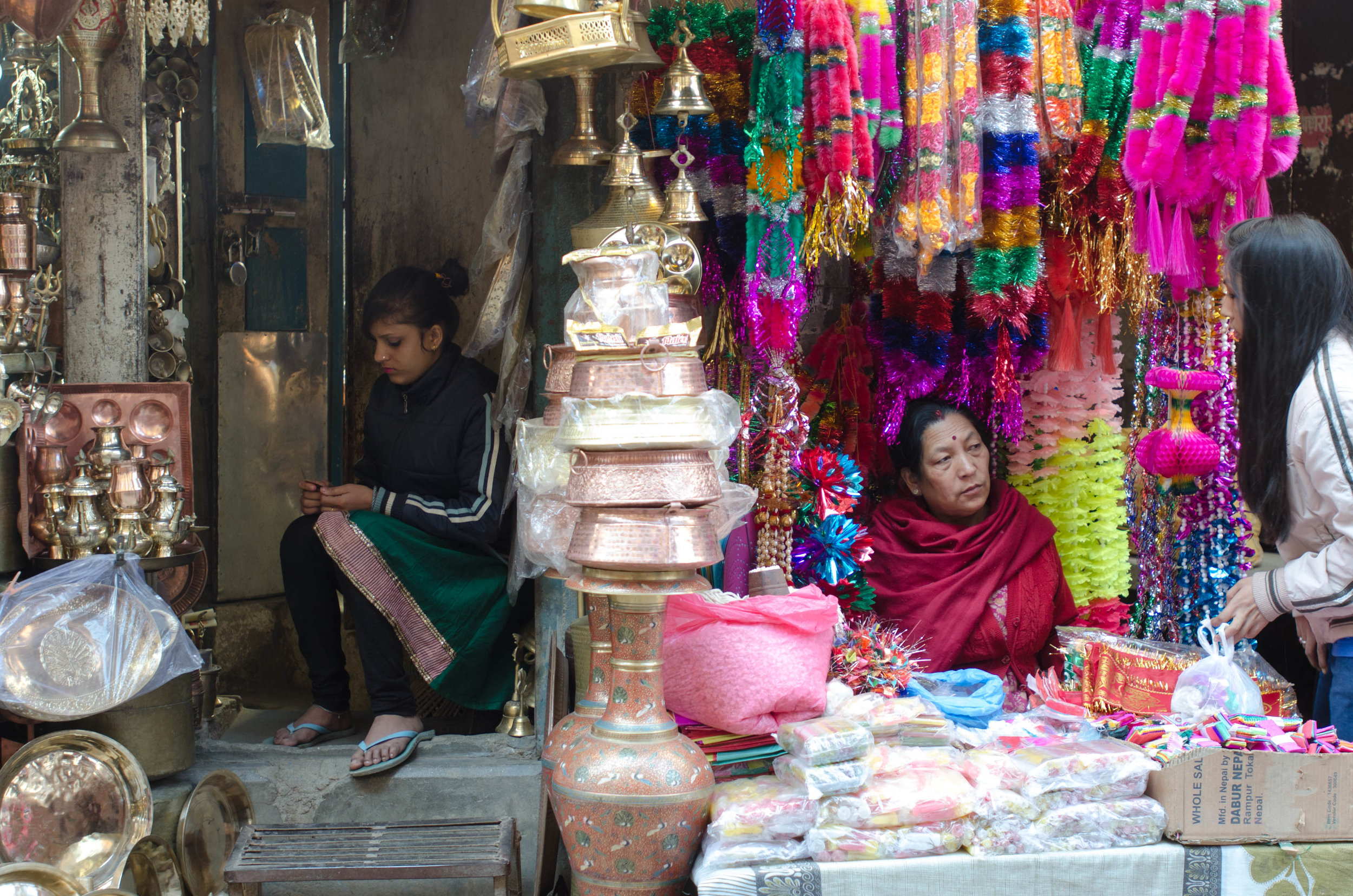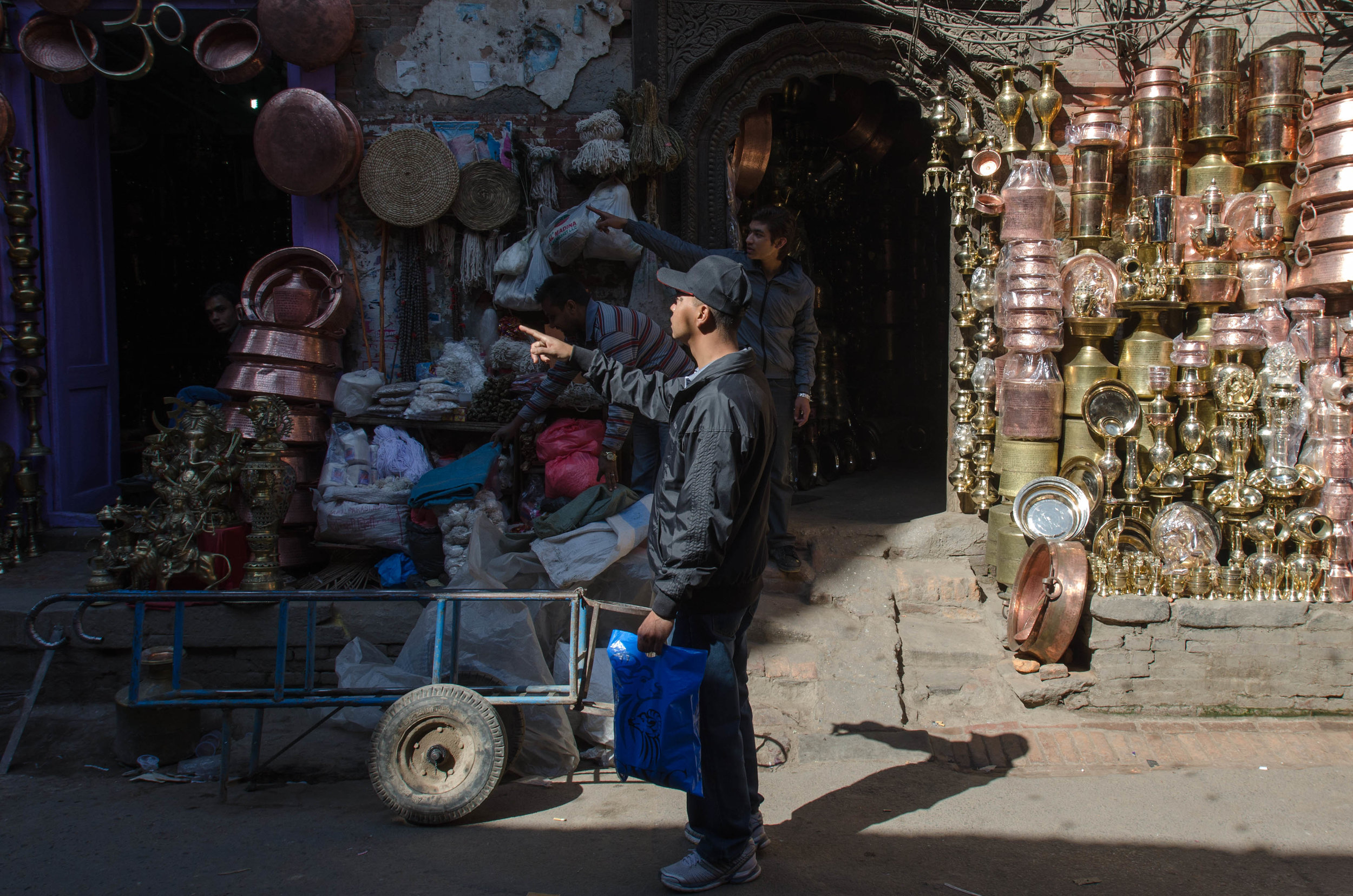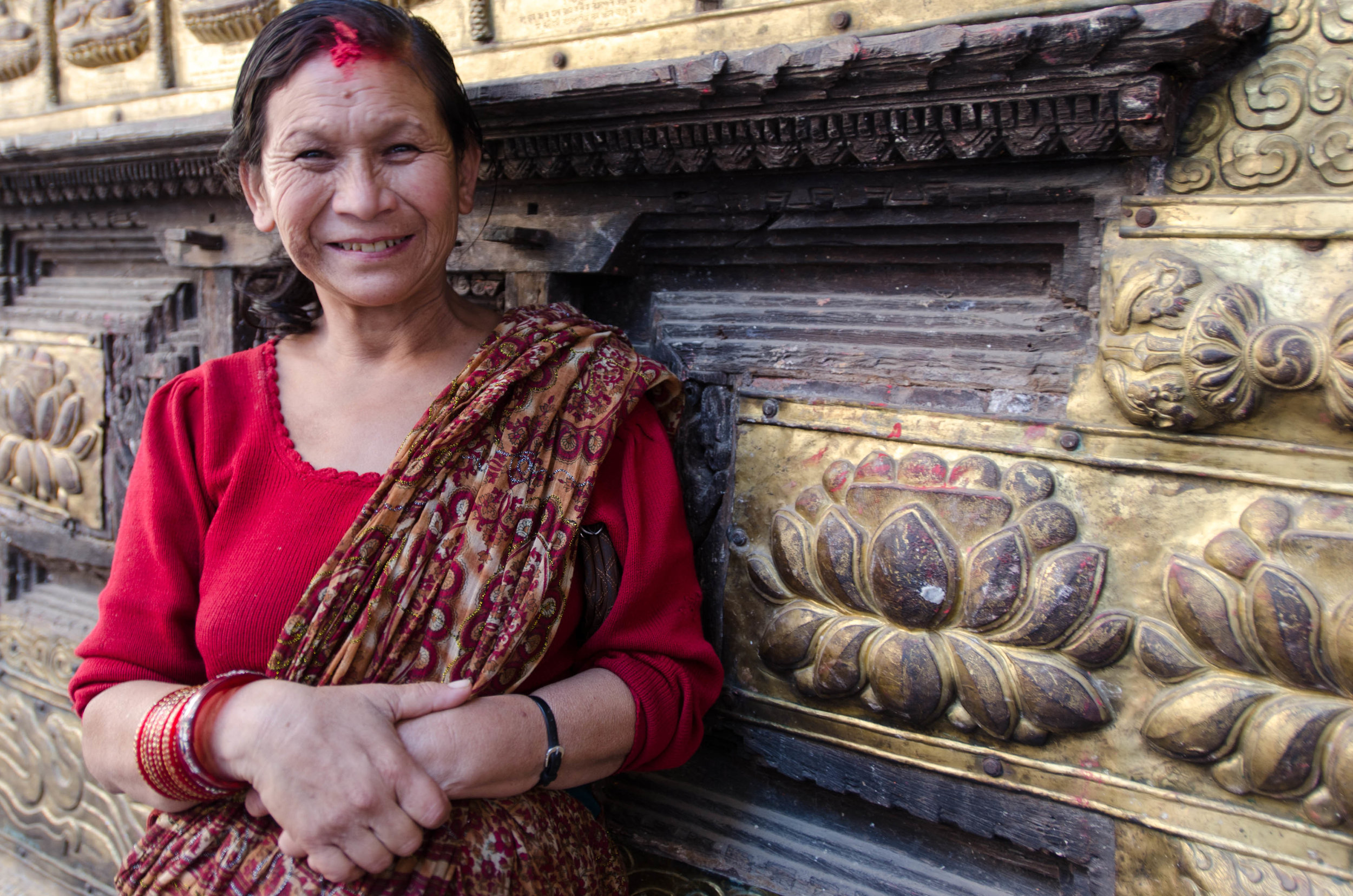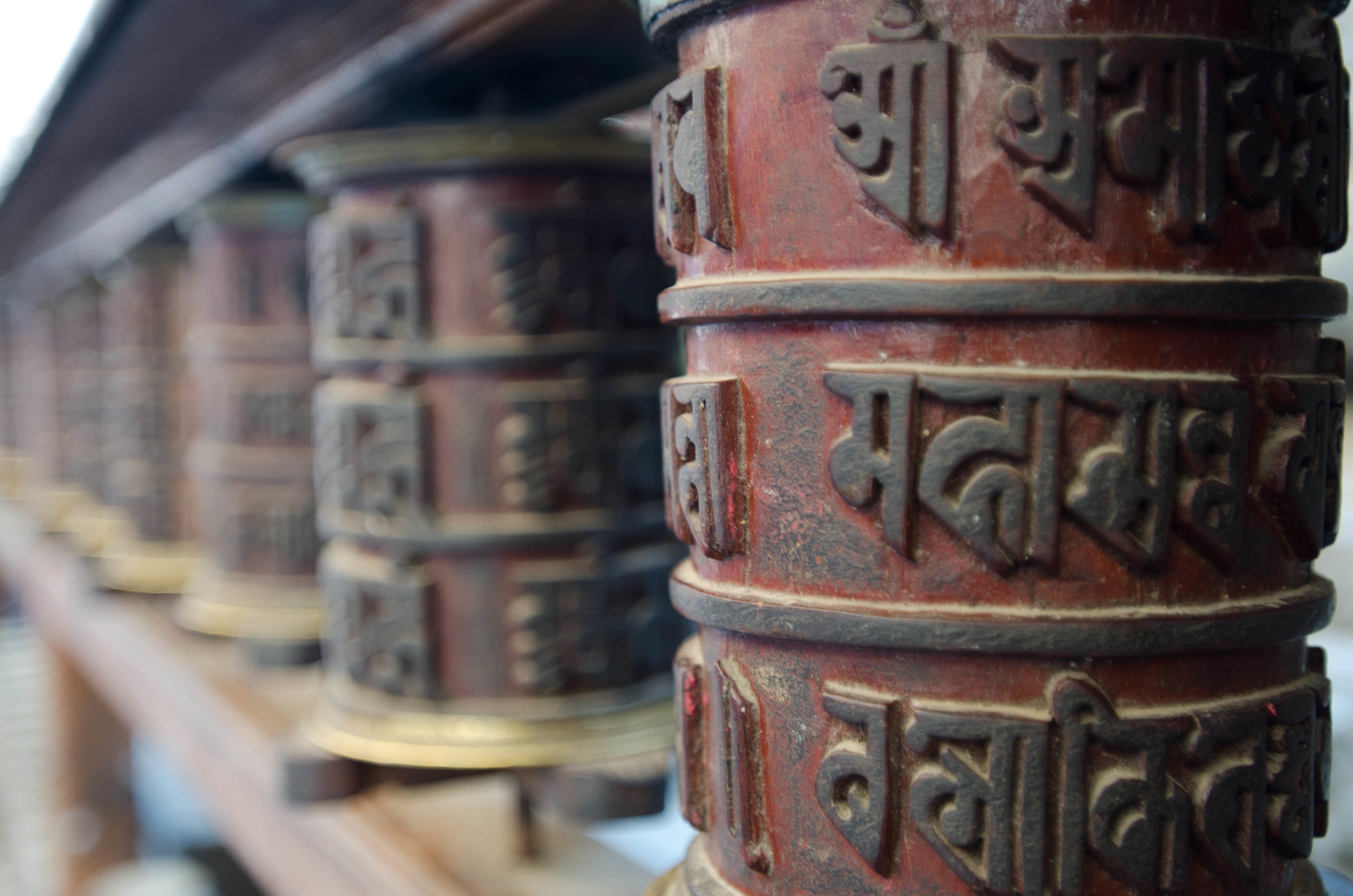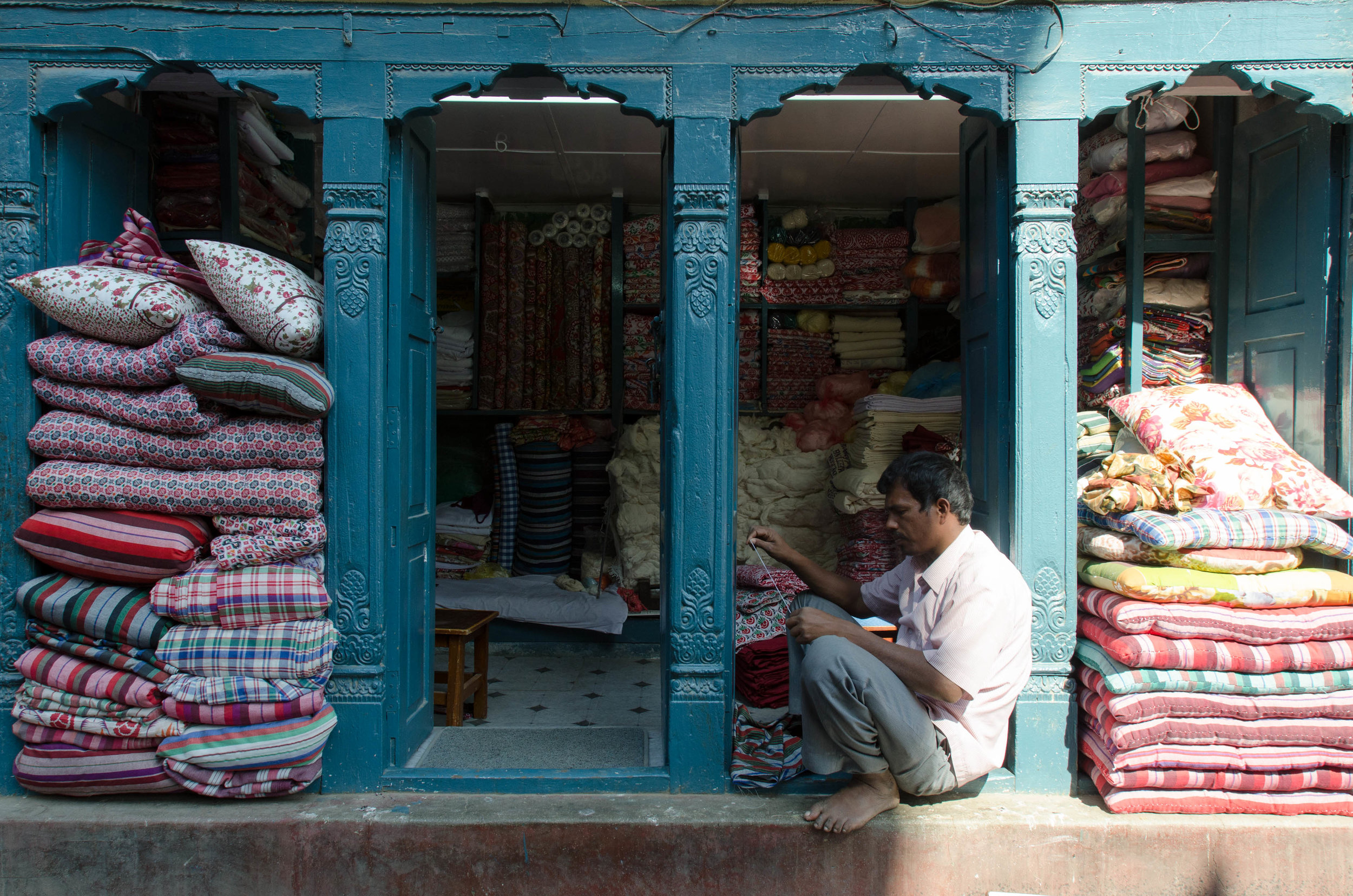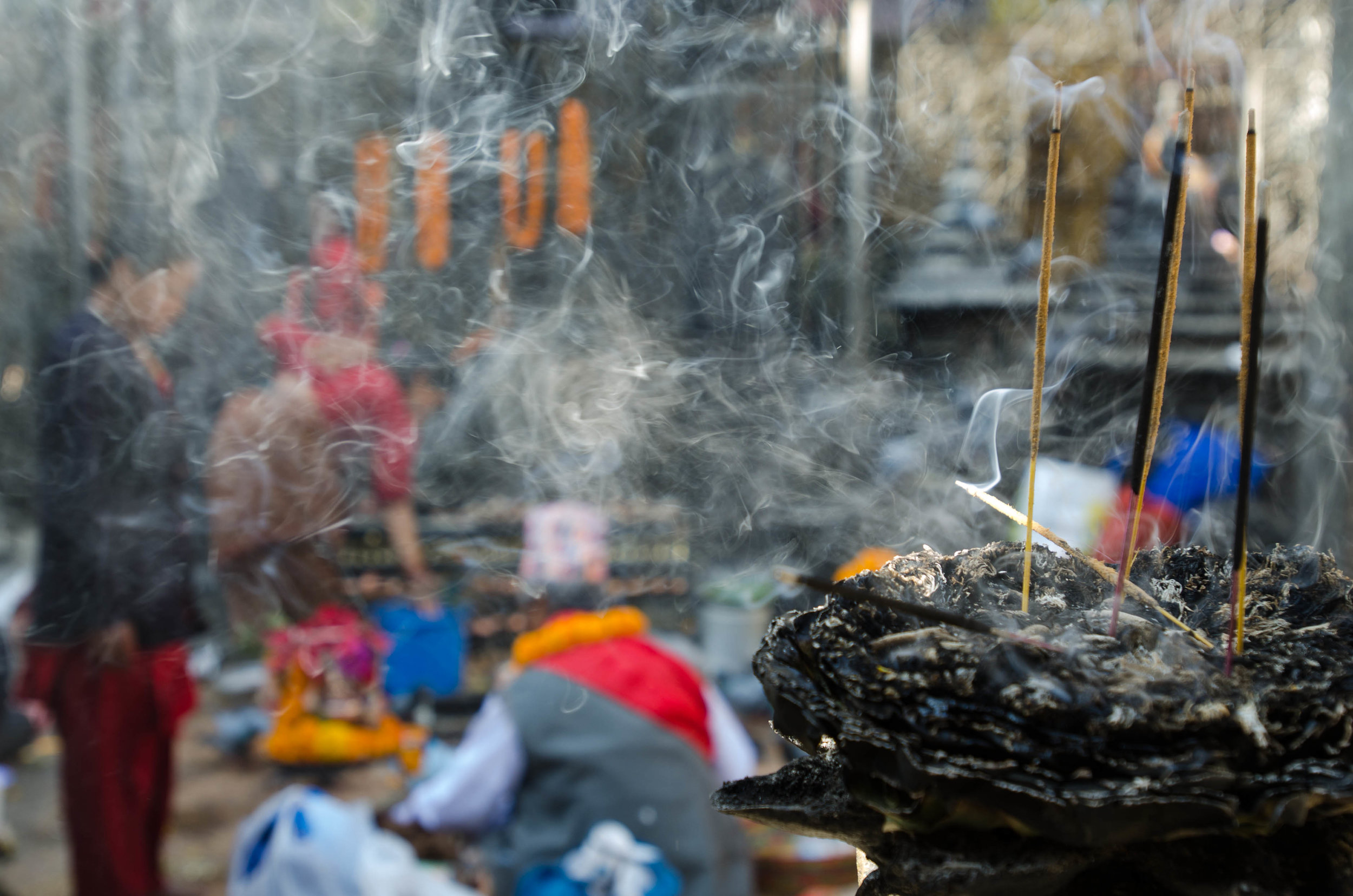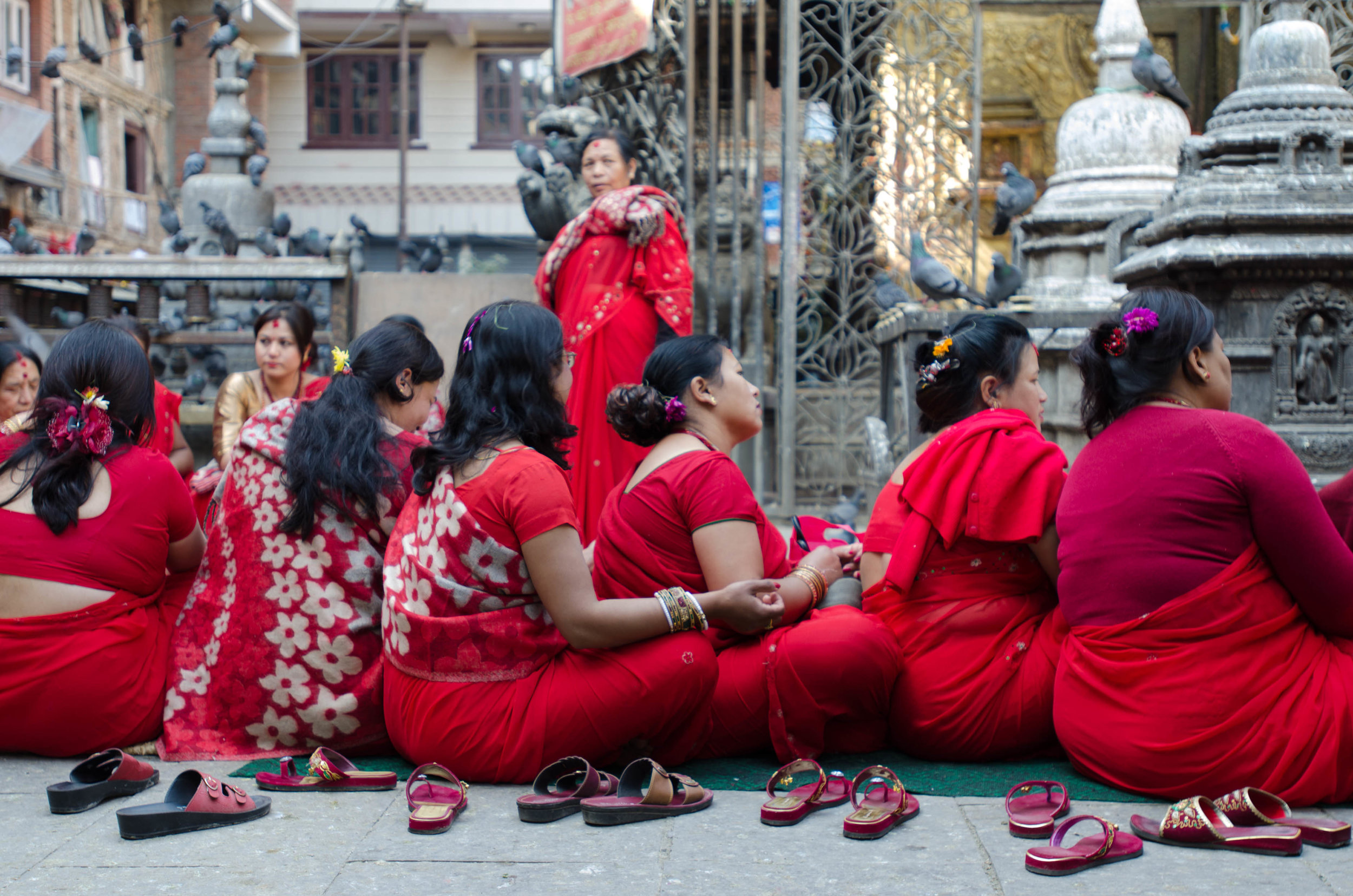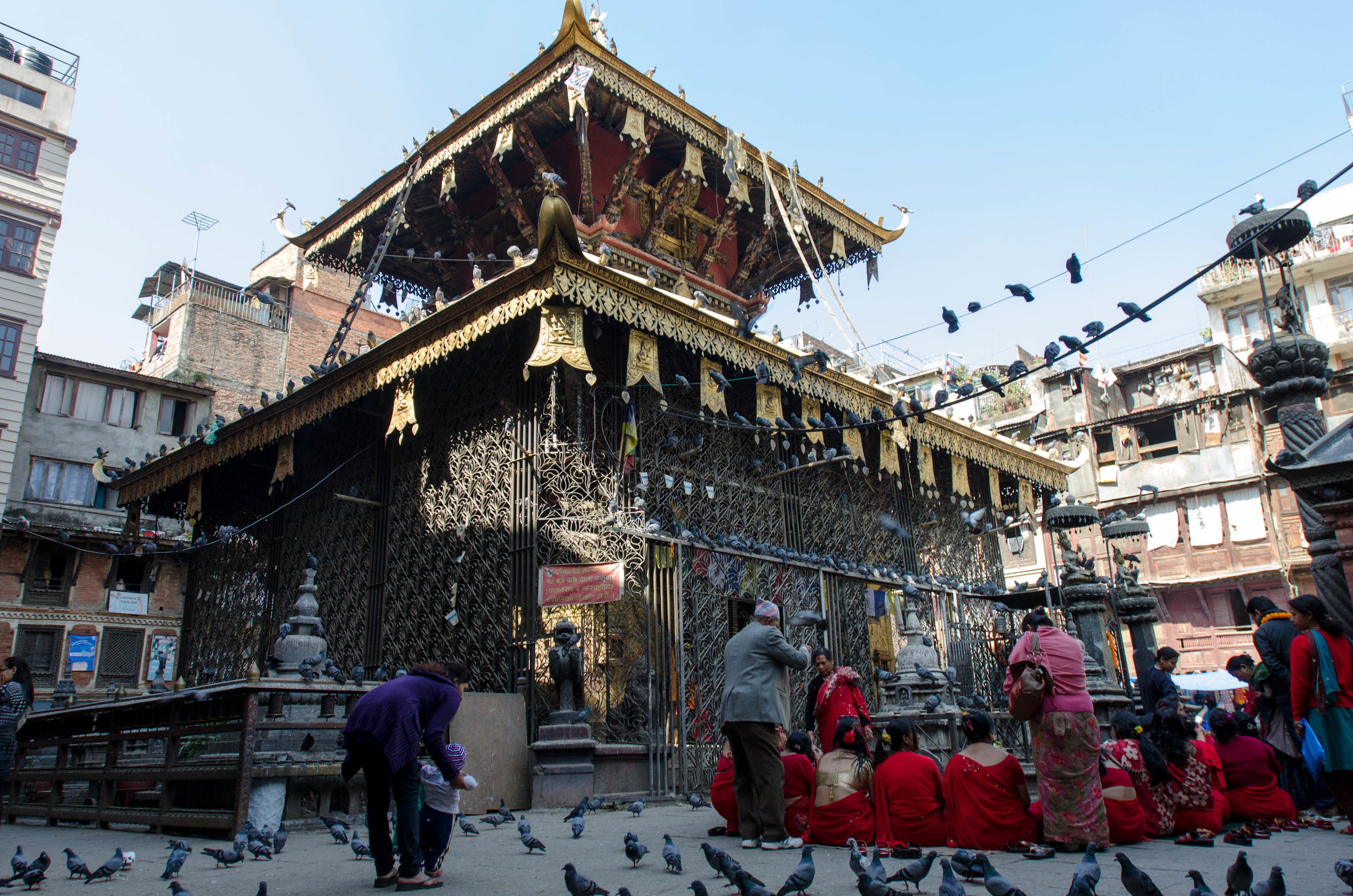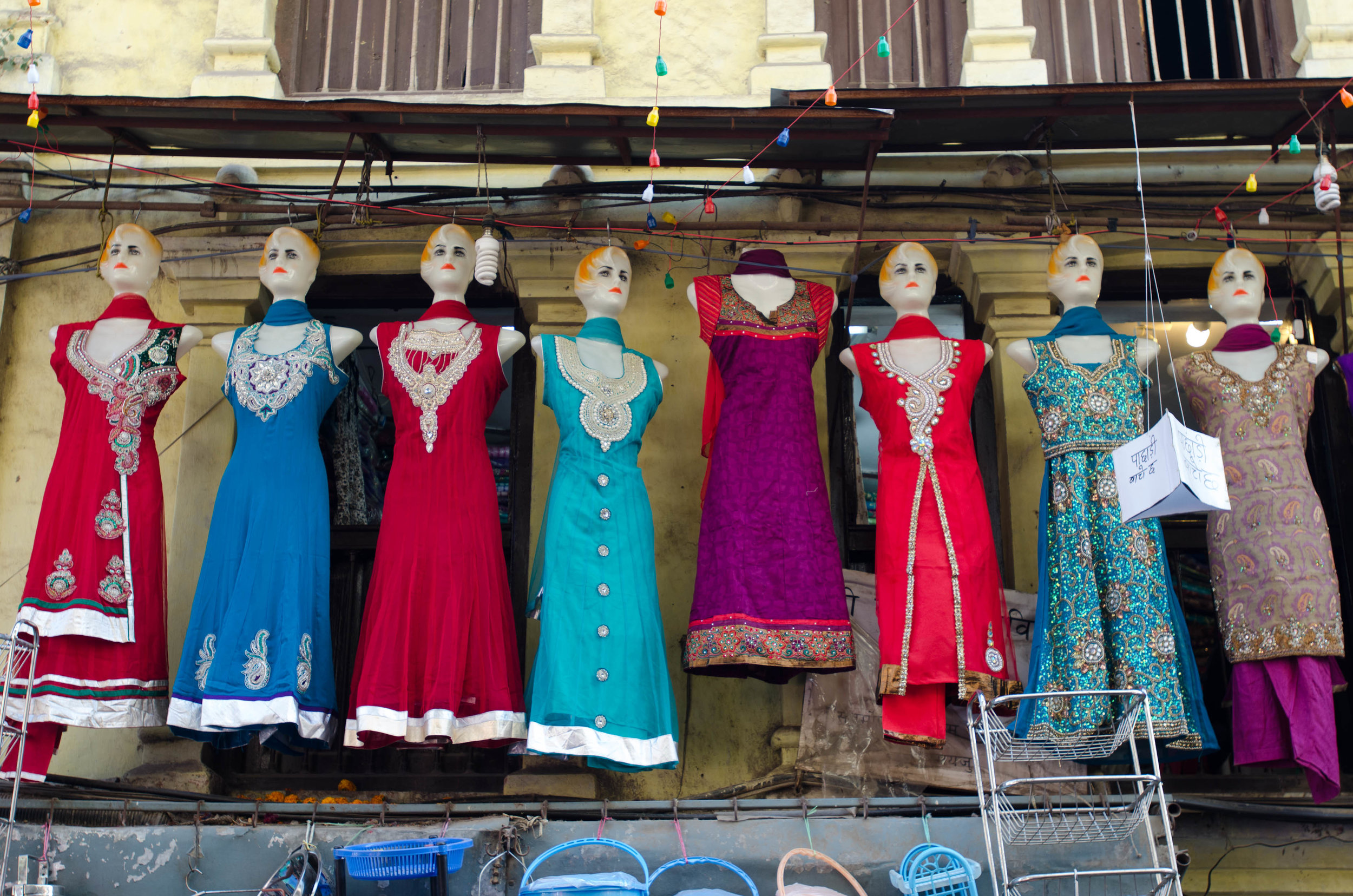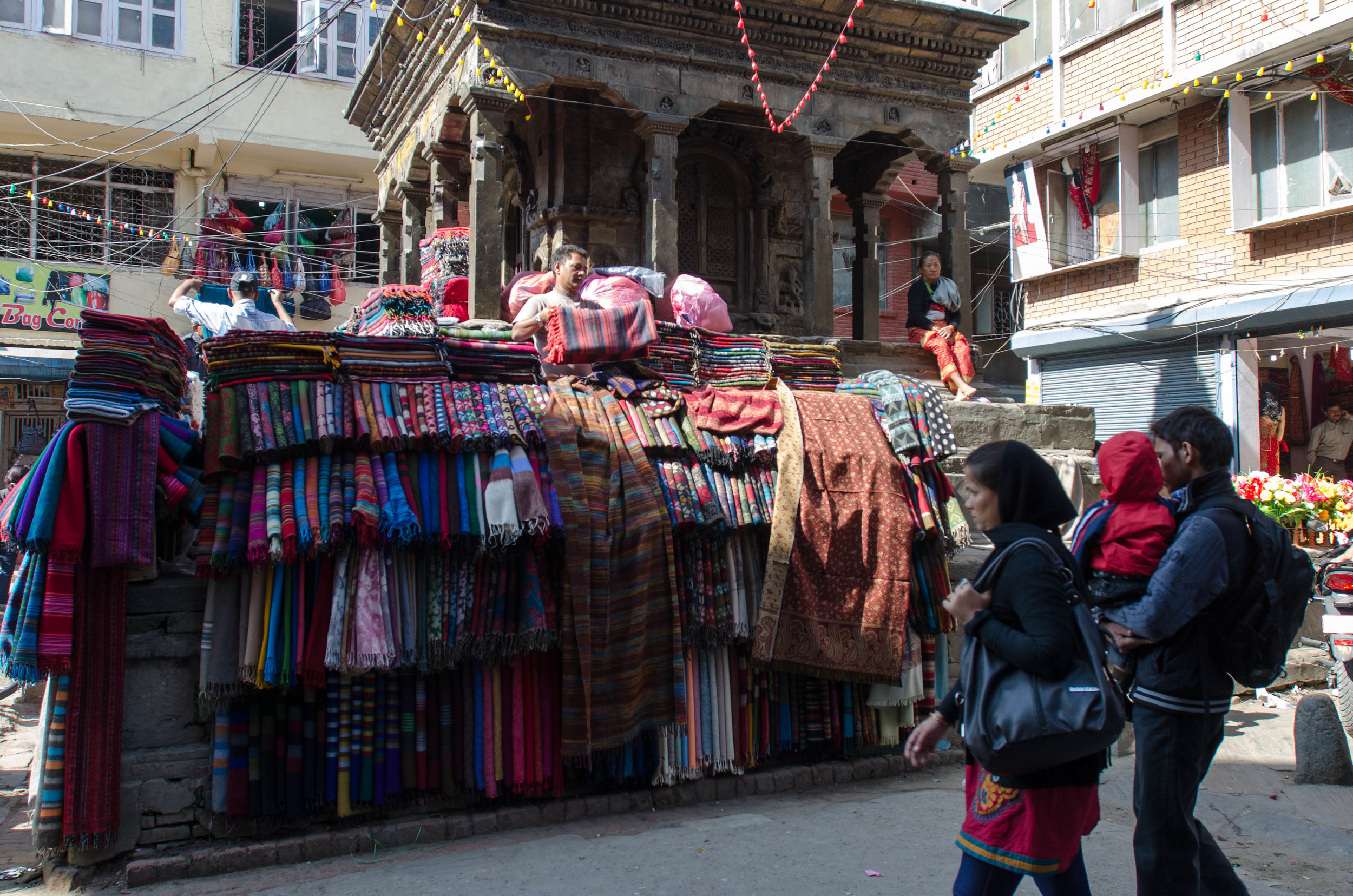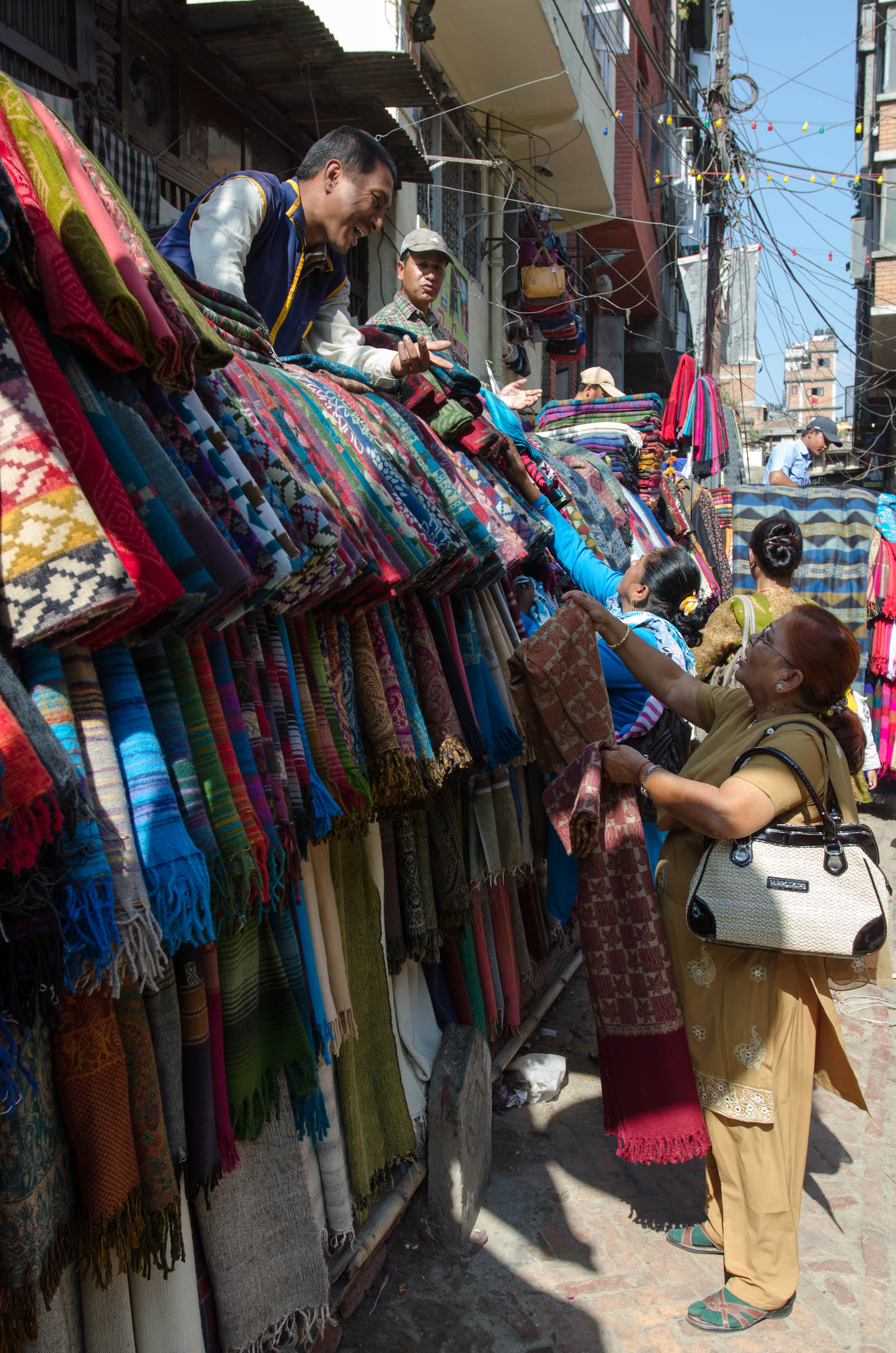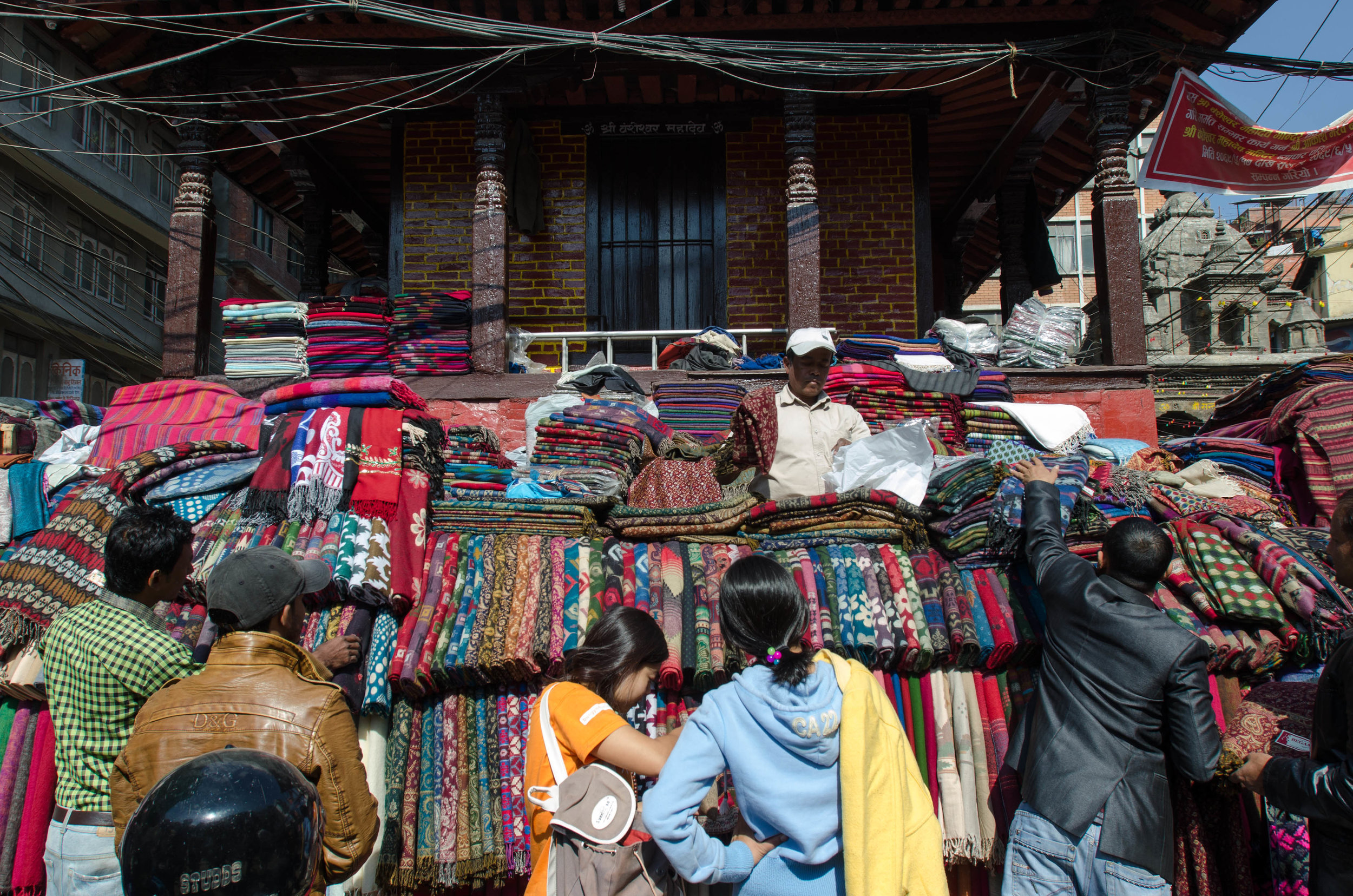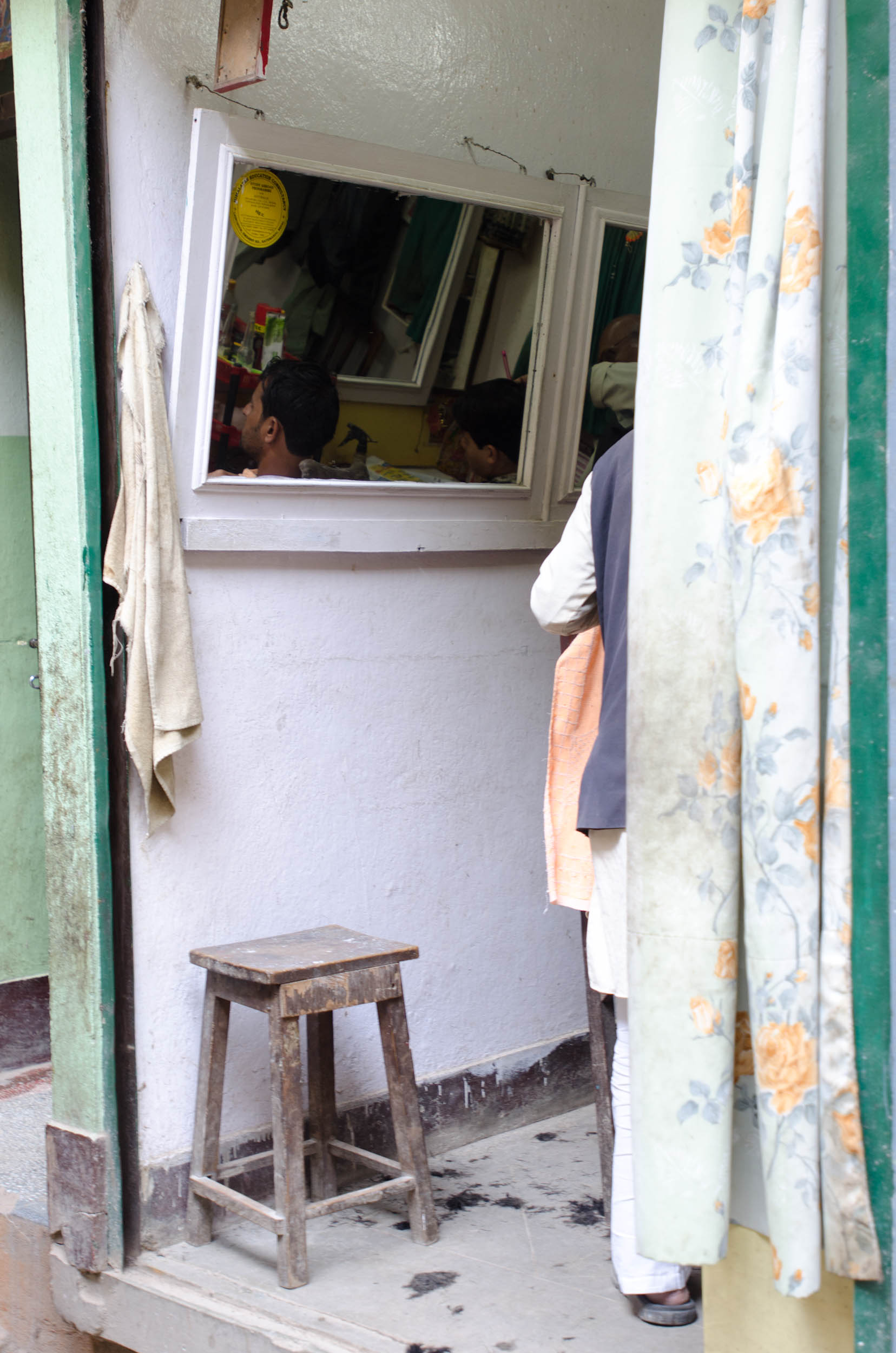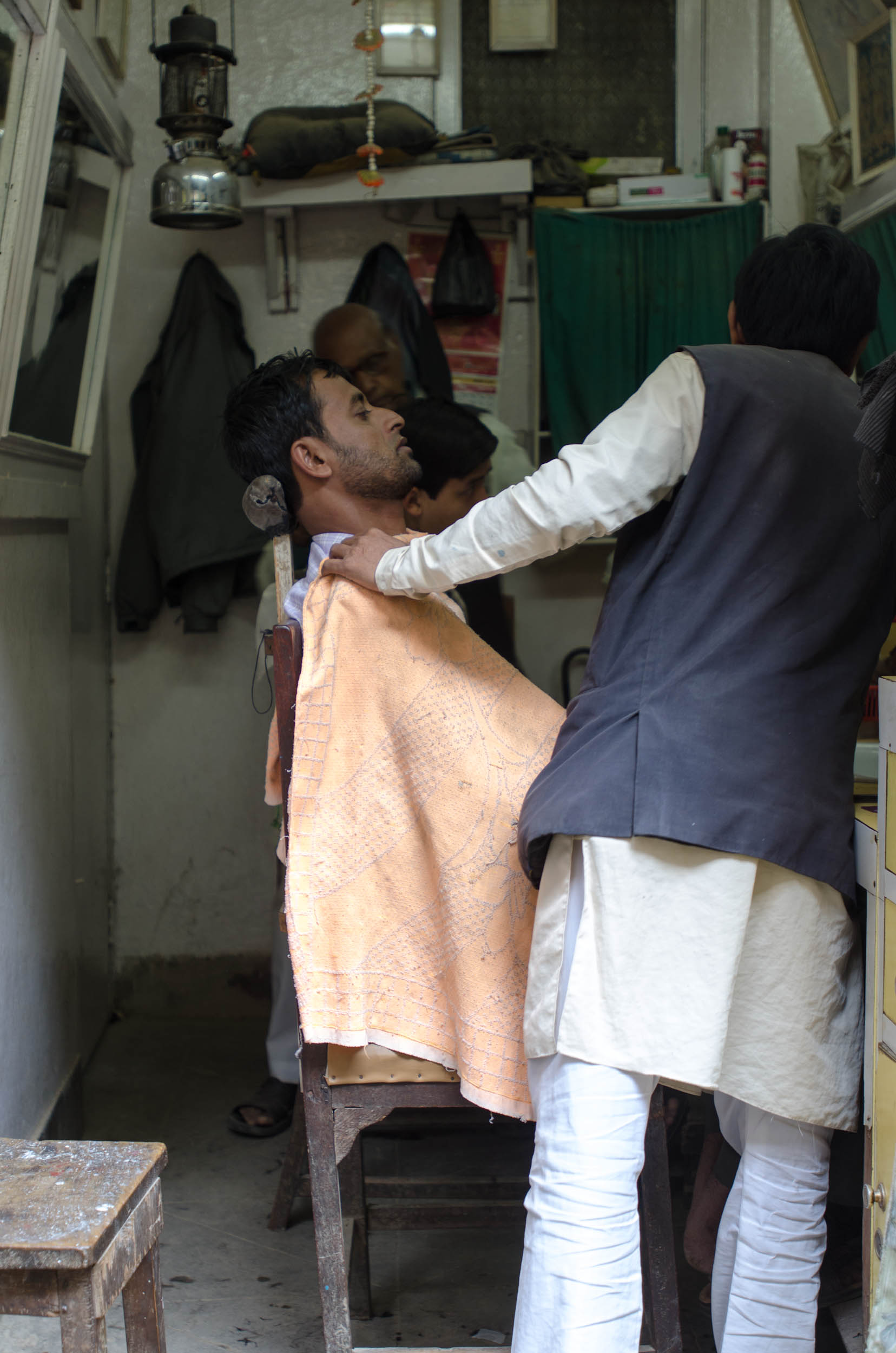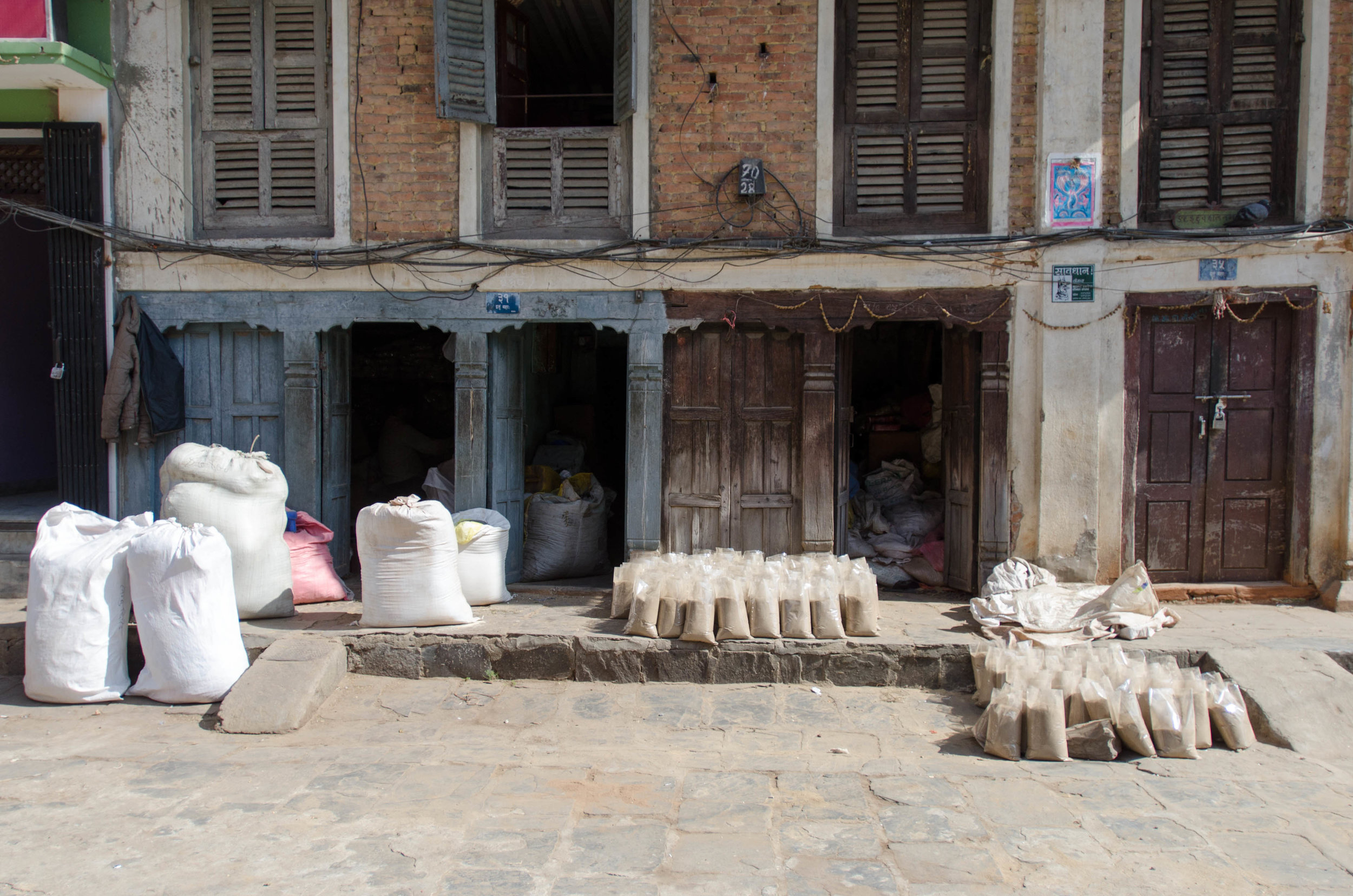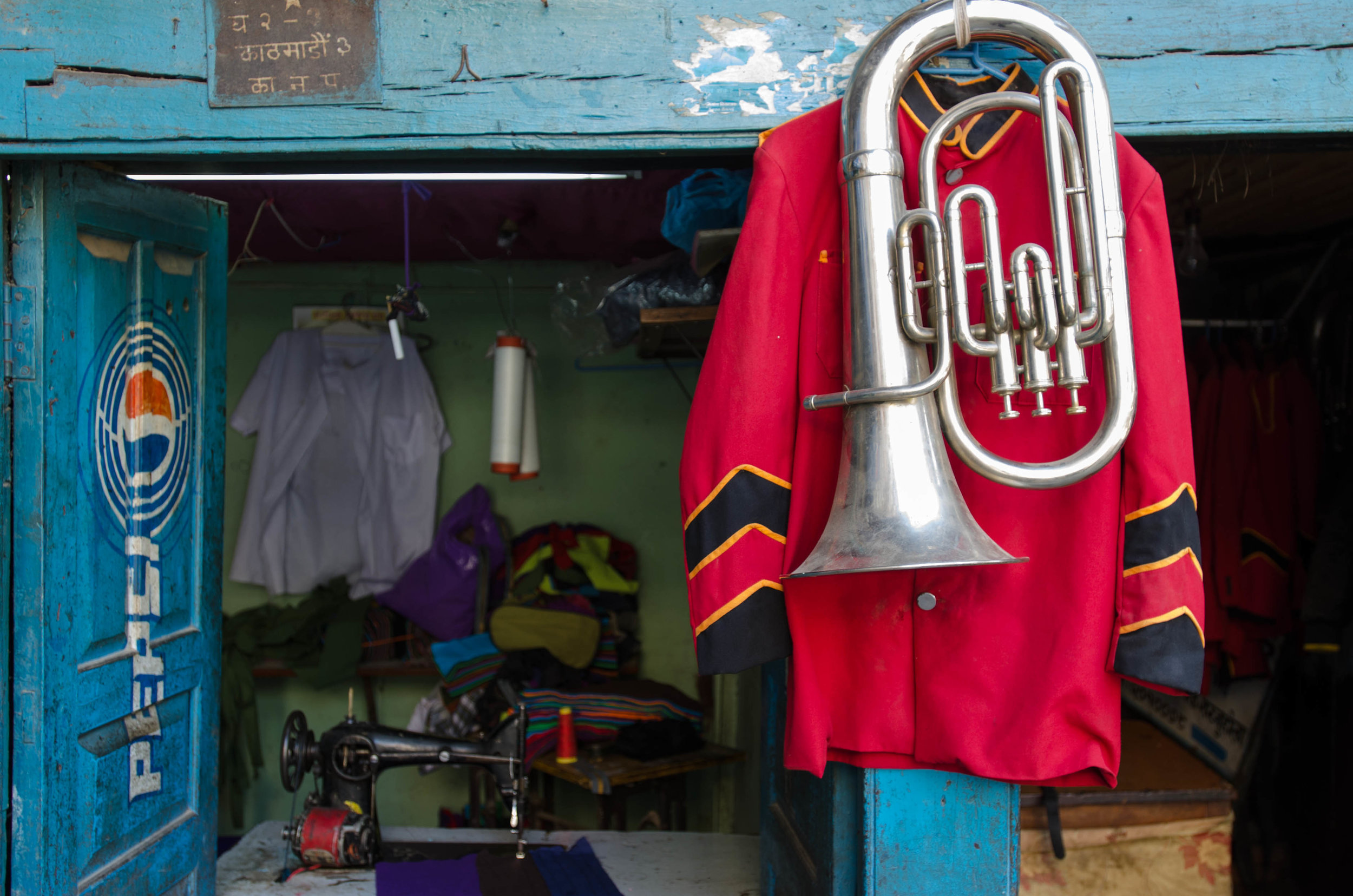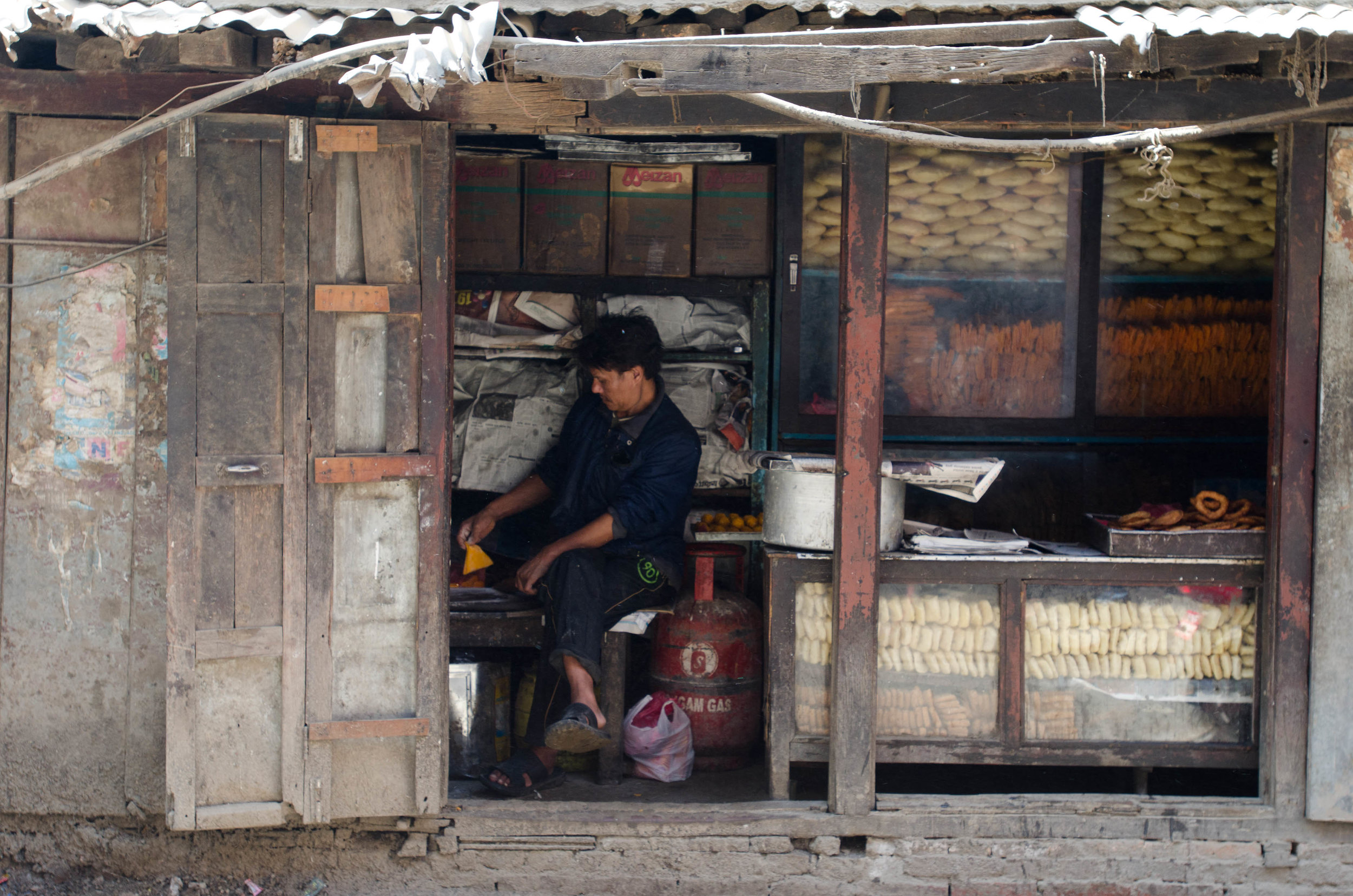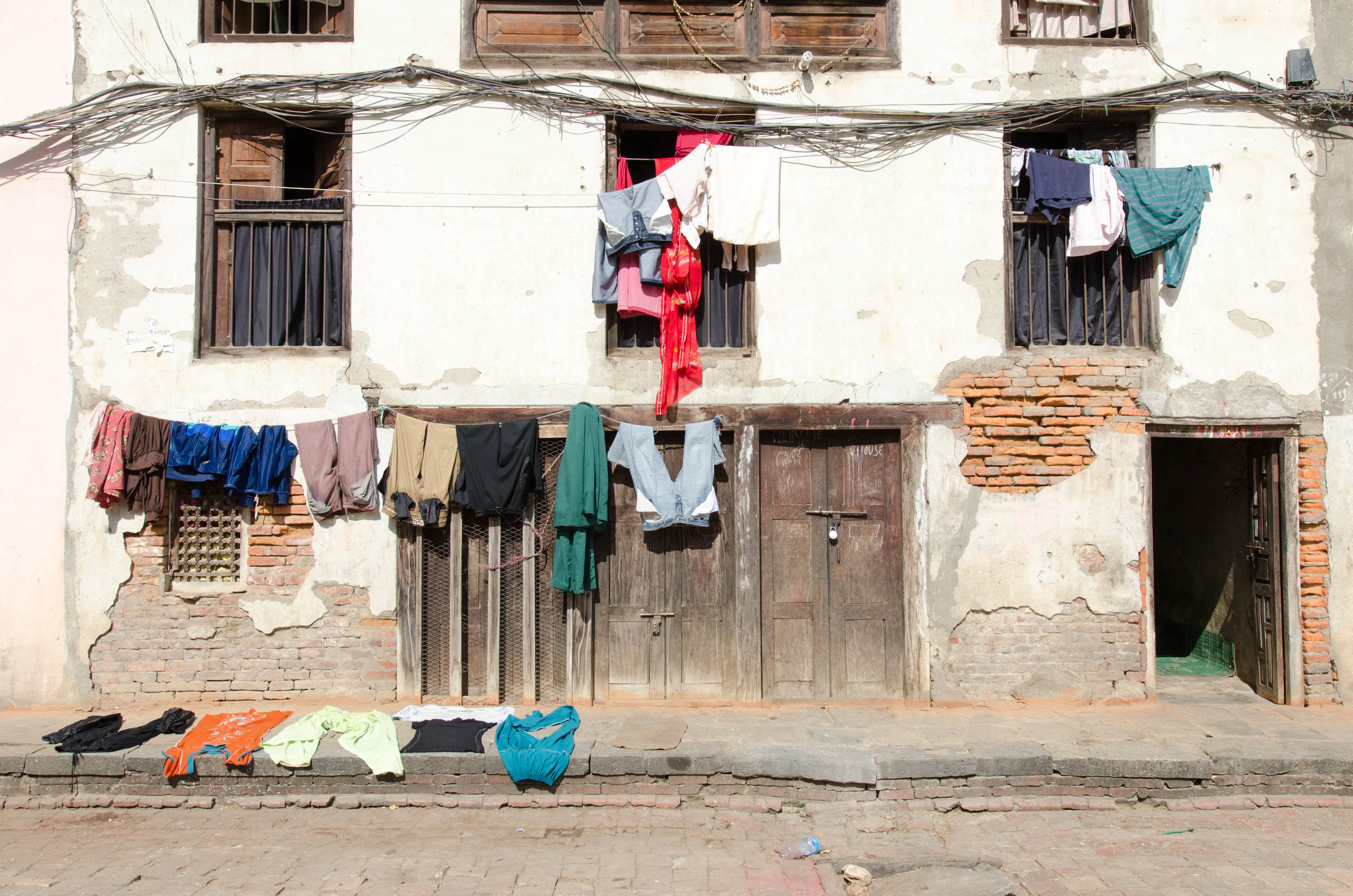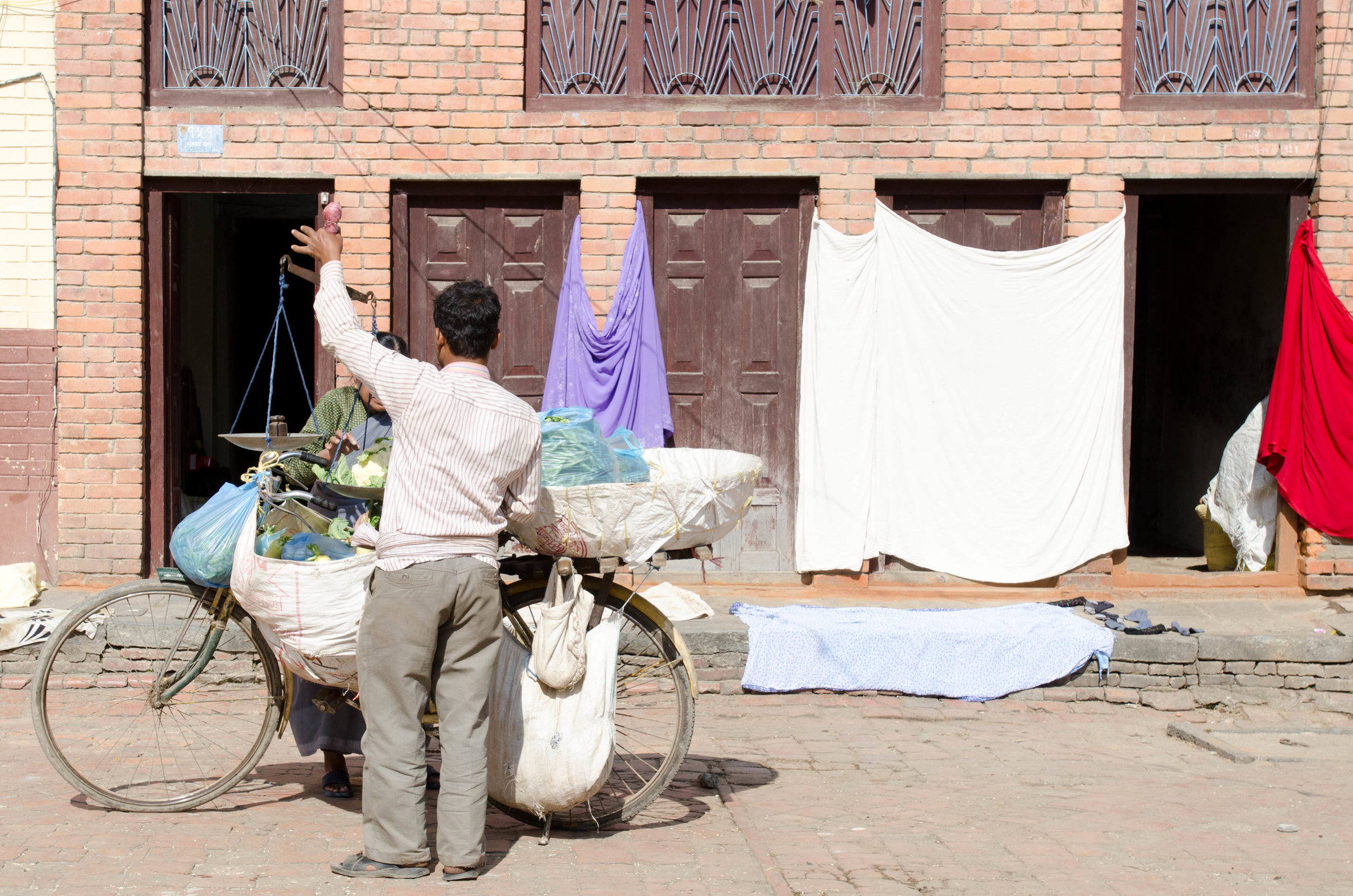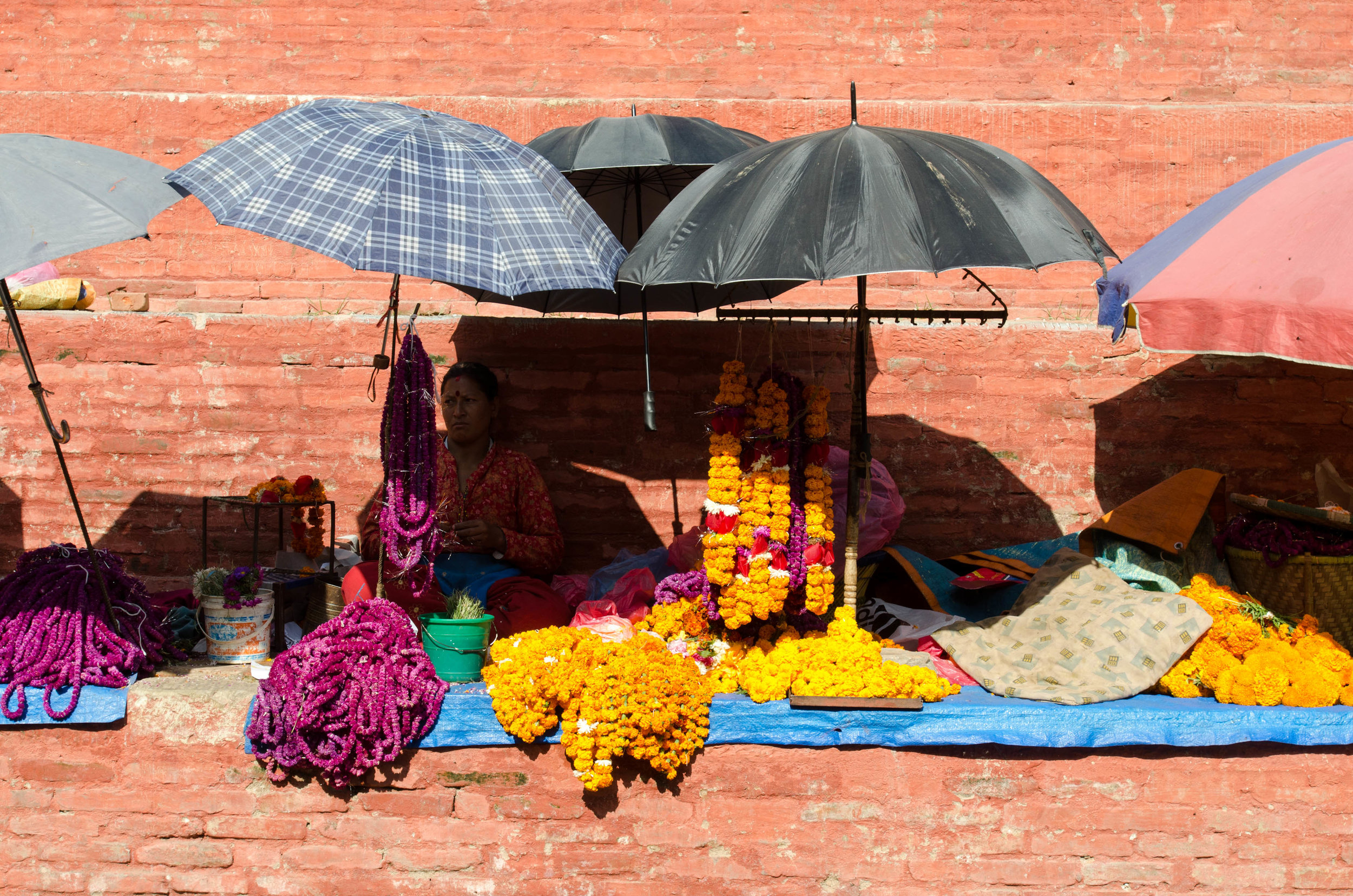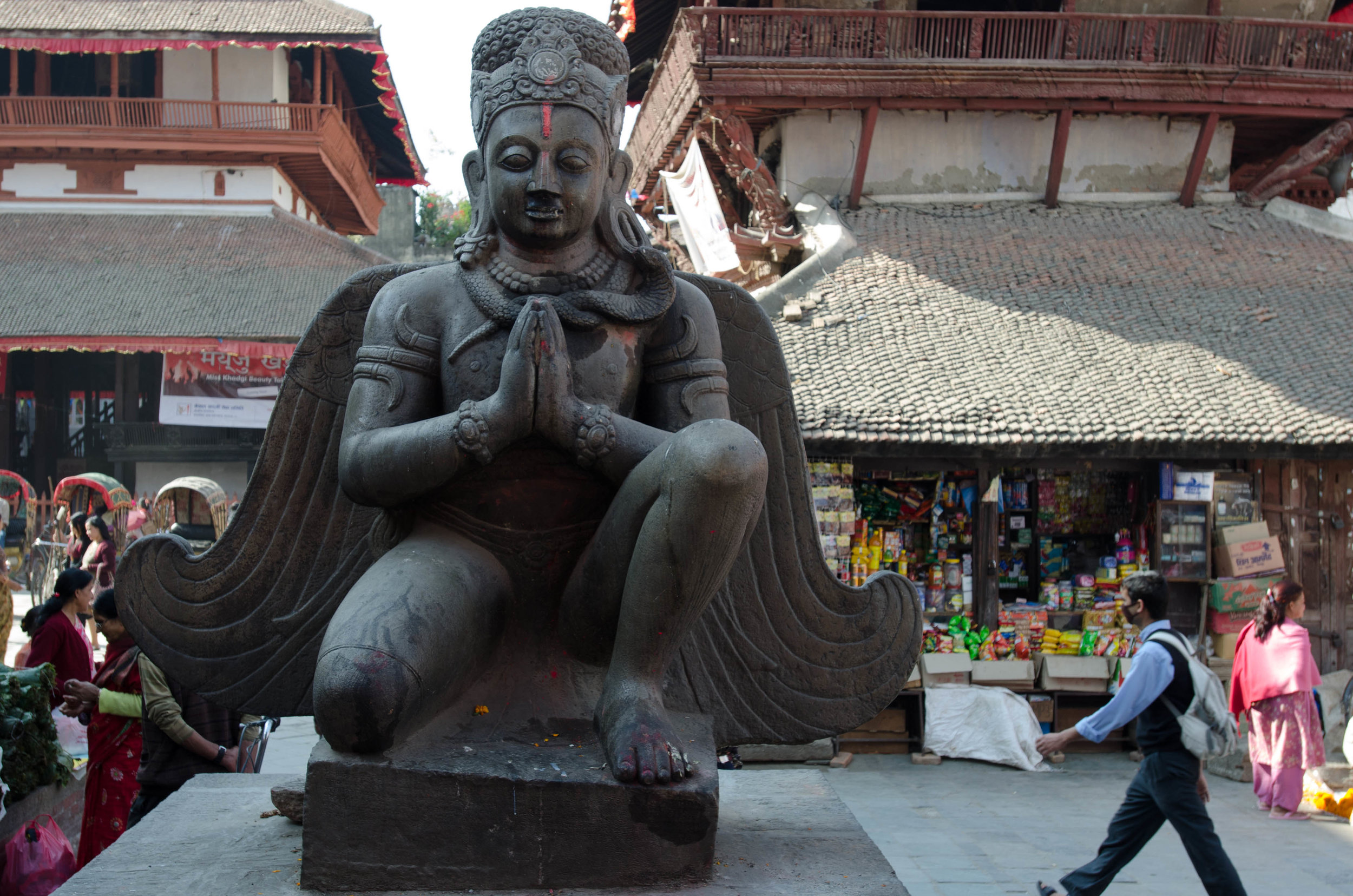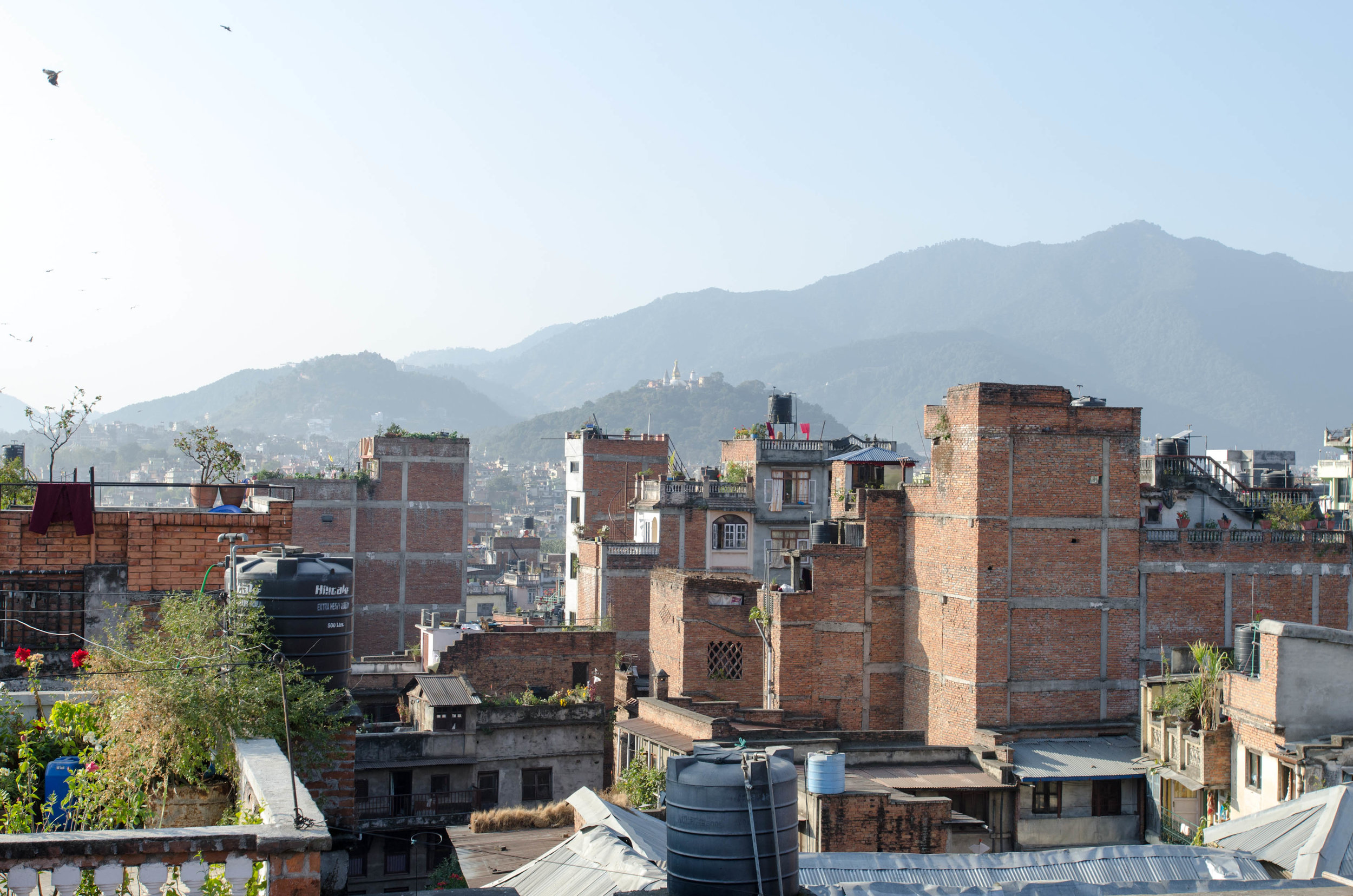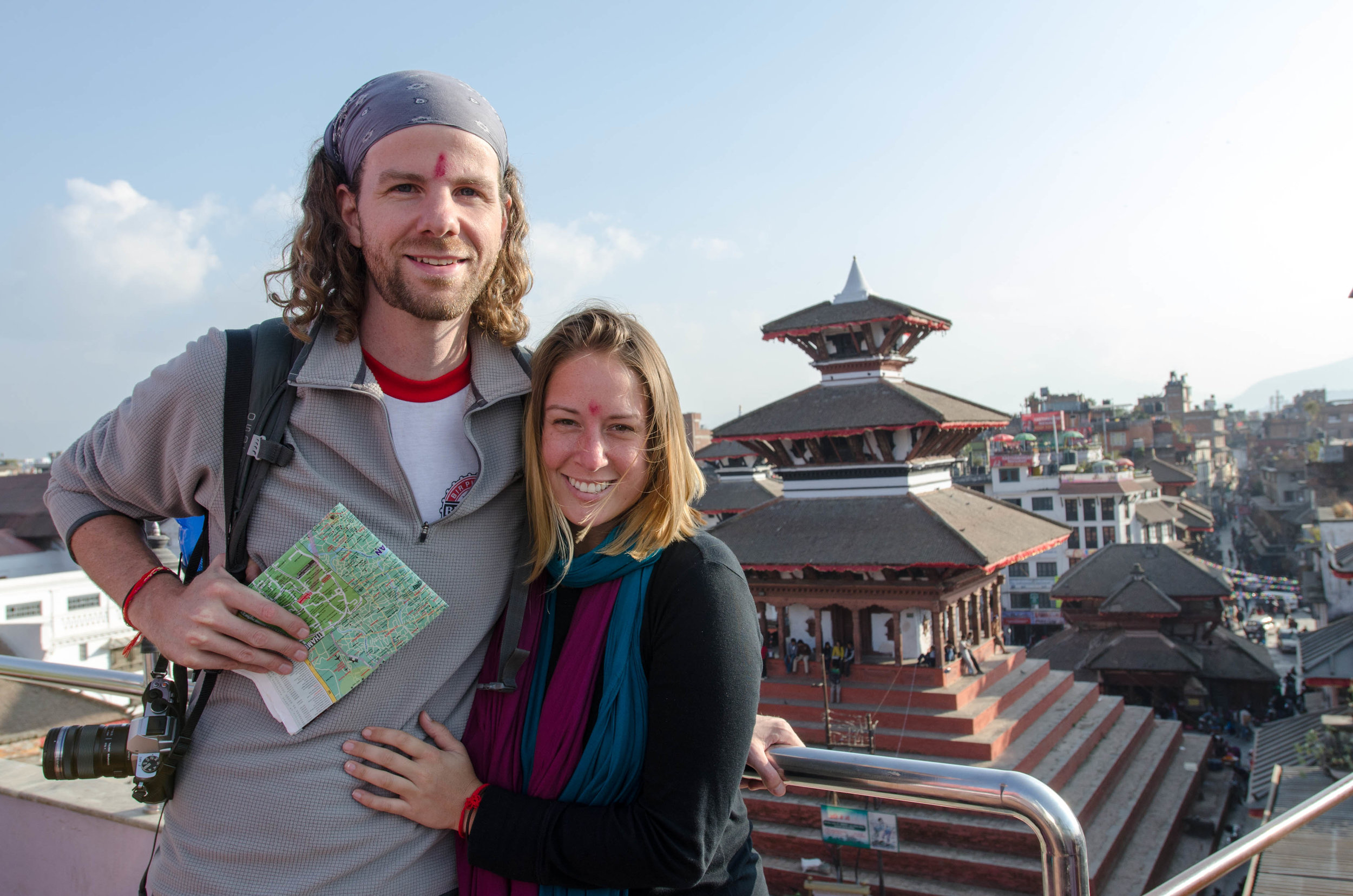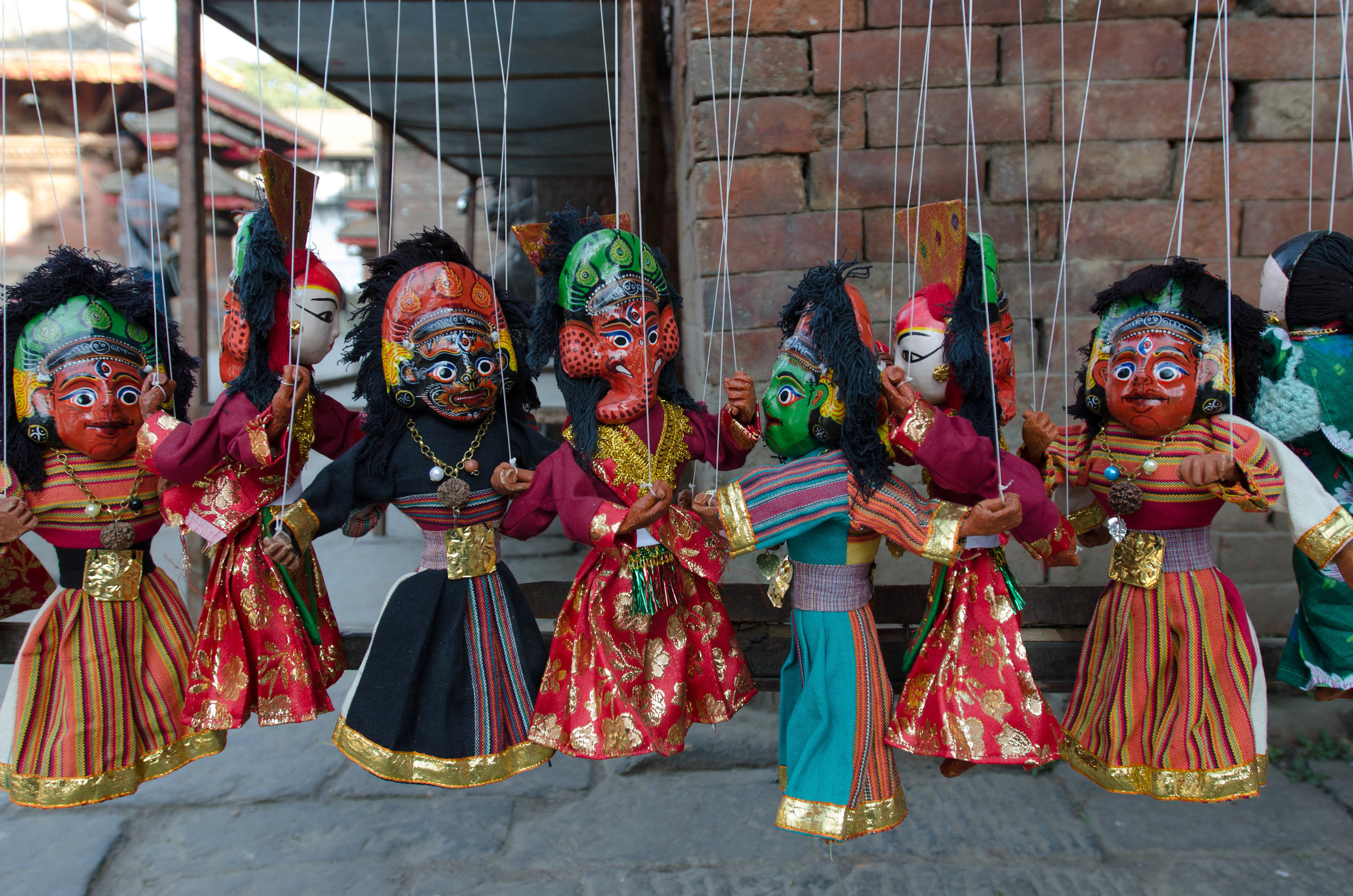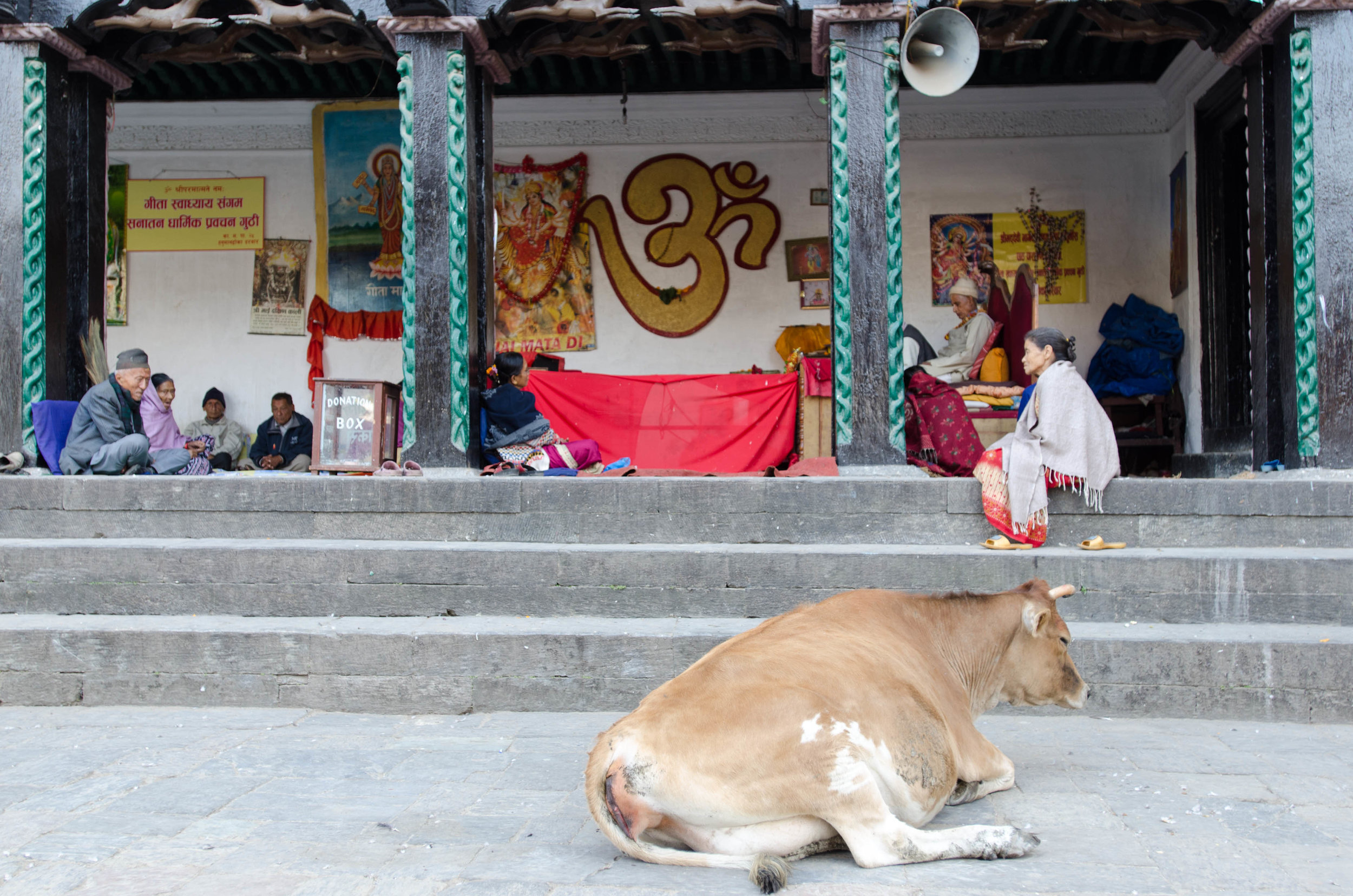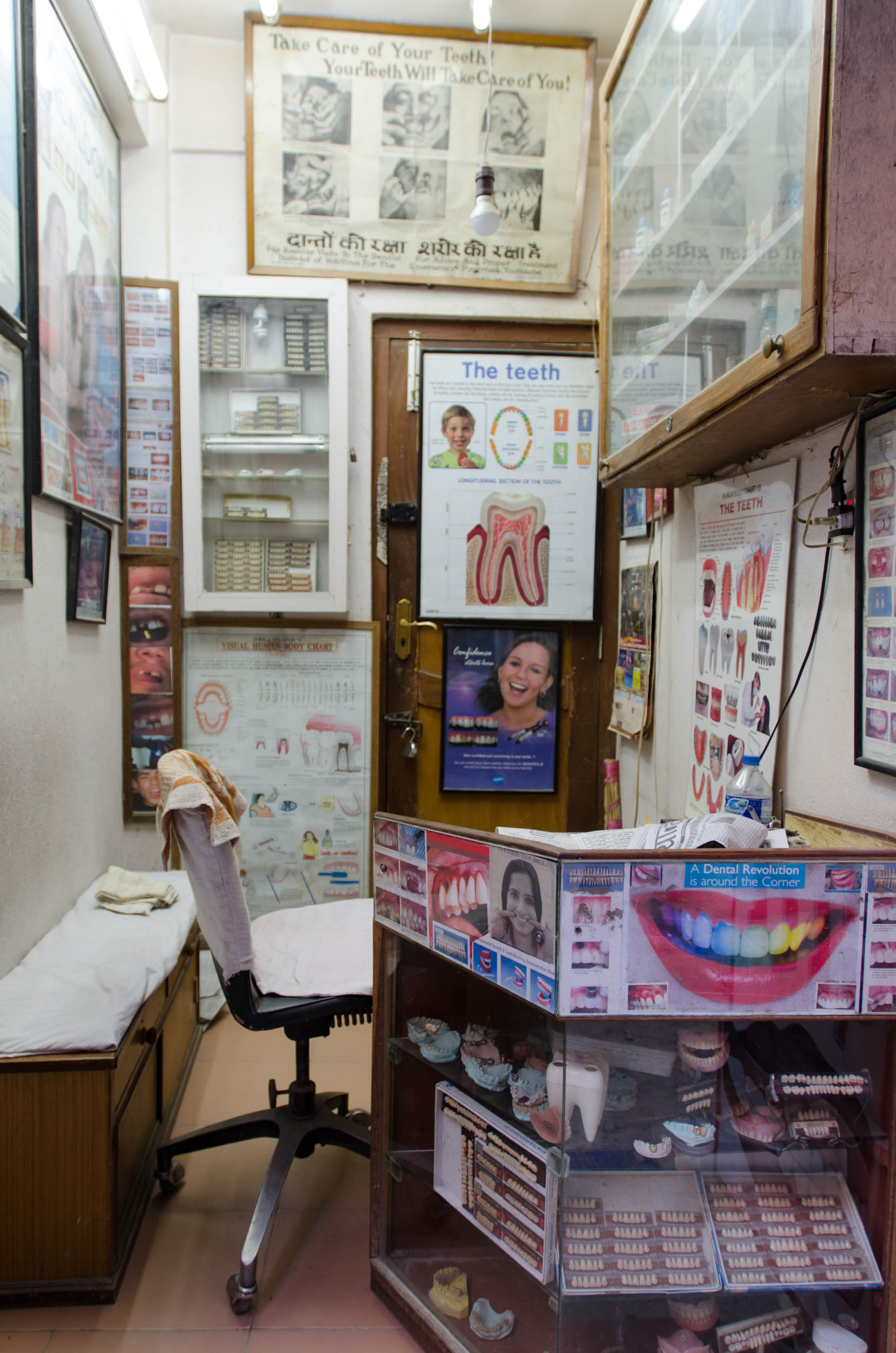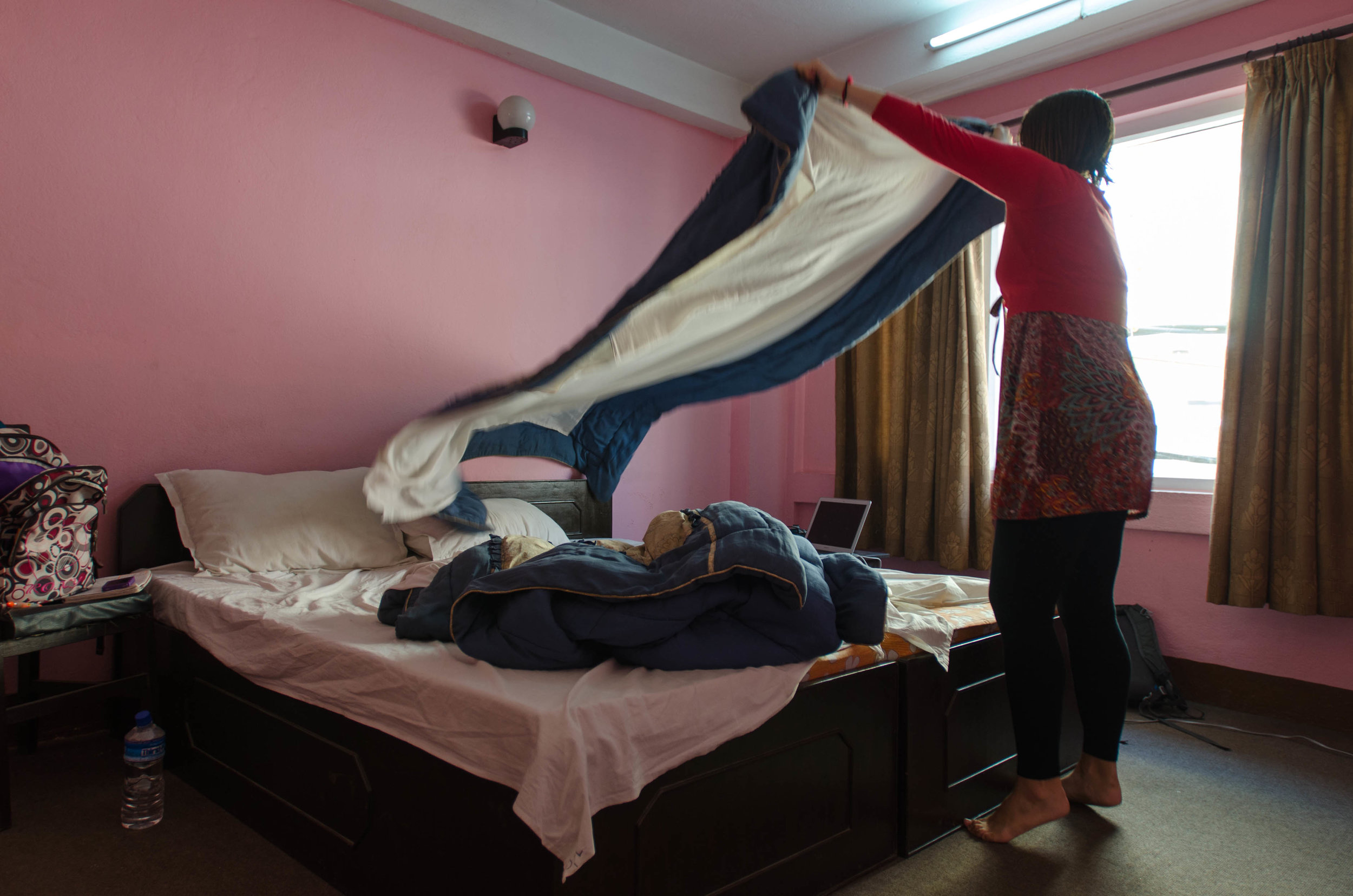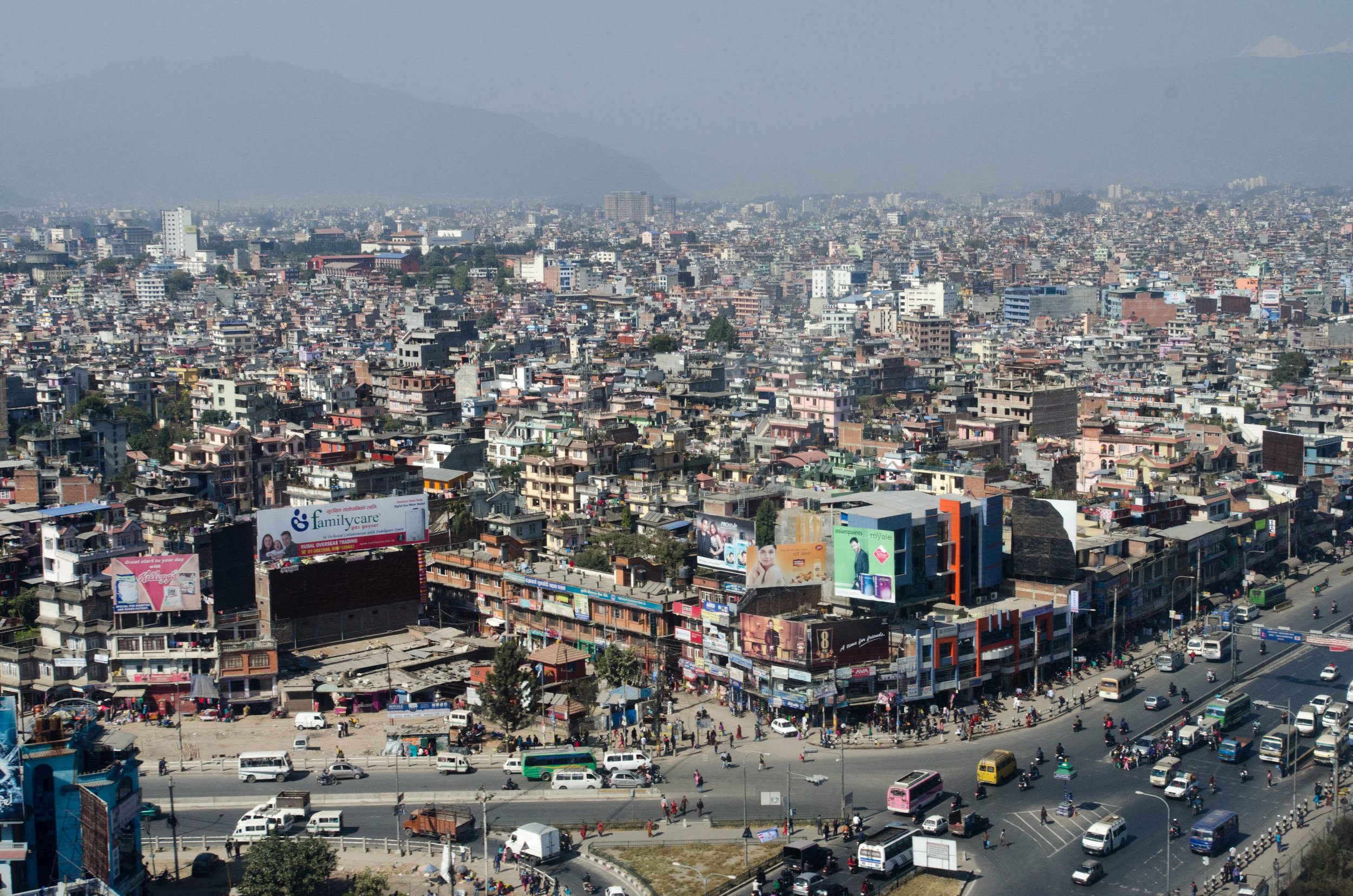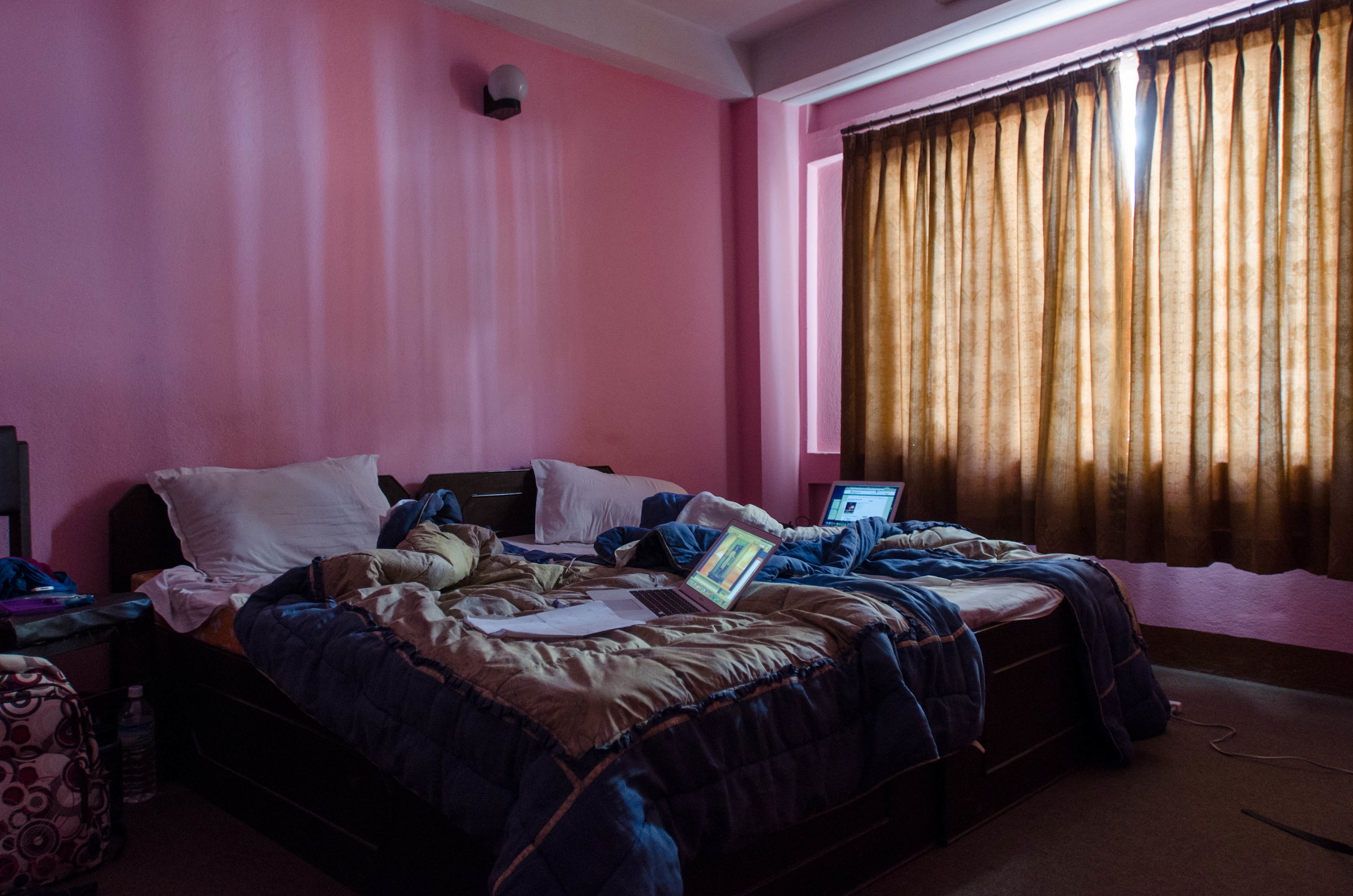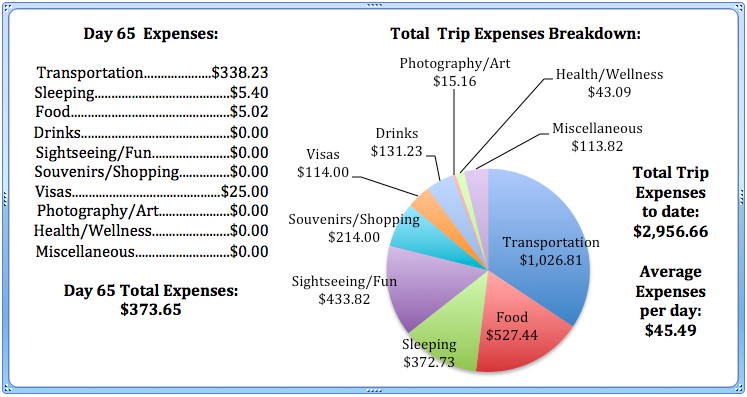Andrew and I have a (not serious) on-going argument you should probably know about. It's become a major part of our travels, or at least our communication throughout our travels. Here's the thing: I think he's an almost always awesome travel partner. He thinks he is always awesome. He also thinks I'm always awesome, which we all know cannot be true. We don't always agree. However, he IS always awesome when it comes to walking tours.
After stopping for directions a few times, we walked back through Thamel (the backpacker/tourist area of Kathmandu) and found Thahiti Tole; a stupa built in the 15th century with legends differing between keeping snakes and thieves away. I prefer the snake legend. It was busy, and we were asked if we wanted a taxi, or a trekking guide, or even "smoking" more than once, so we didn't stay long. We both preferred immersing ourselves in the small streets and alleyways lined with shops and front steps anyway.
From there, we headed west to the Kathesimbhu Stupa. This was (like many we later discovered) was located in a courtyard surrounded, but what appeared to be average Nepali inhabitants of Kathmandu. I wonder if living expenses differ when your house just happens to be looking over an ancient Buddhist stupa or not… Regardless every courtyard containing a stupa became a bit of a refuge from the hustle and bustle that was the Kathmandu street outside.
Right after the stupa, there was a tiny enclave; Nag Bahal. I felt like I was in someone's private courtyard it was so small, but the men sitting on the steps or in the windows above didn't seem to mind, or even notice we were there. We didn't stay long, as there wasn't much to really see and the shade was much cooler than the sun streaming out on the street.
Given our instruction was to walk past a string of dentist shops, I was amused by all of the signage, and wondered how comfortable Dr. Walker (my dentist since I was a child) would feel with me going into one of the shops to get some work done.
Our next stop on the tour was the Sikha Narayan Temple. I was more enamored by the city life surrounding the square. Rickshaw drivers were parked, some napping at the edge of the temple platform. On the opposite corners, men sold flowers, women sold vegetables, and it seemed that nearly everyone had a newspaper to read.
At the far corner of the square, there was a twisted piece of wood with thousands of coins nailed to it, offerings to the toothache god. We speculated that maybe it could look like a mouth? a set of teeth? Any thoughts?
Back on the tour, I trailed behind Andrew, fascinated by the bright tikka powders for sale on the street. Given that I've only seen red tikka powder before, I was curious what the bright colors were used for. Some google searches led me to discover that it's used largely for decorations for Diwali, which is part of the bigger festival season of Dasain & Tihar, here in Nepal. Regardless of what the tikka powder is used for, the colors are beautiful and really light up a dusty city street.
Asan Tole was our next stop. Bustling is not an accurate word for this busy junction. Andrew and I went our separate ways exploring and observing. Tea vendors operated out of shops lined up on one side of the junction. Motorbikes parked in the middle next to a shrine that men sat around and watched the traffic flow in every direction around them. Women sold flower garlands in front of the Annapurna Temple at one end. Vegetables lay in front of vendors on what appeared to be the street for cars and motorbikes. When Andrew found me and asked if I was ready to go, I smirked, unsure if this was one of those places you could ever be "ready" to leave.
Back in the day, the diagonal street that we took from Asan Tole was the main commercial street in Kathmandu. It was the main caravan route to Tibet, that is, until the construction of another road after an earthquake in 1934.
After walking through the busy street, and eyeing some Ganesh marionette puppets, we ducked into another courtyard to see the Seto Machhendranath Temple, also known as Jan Bahal. Attracting both Buddhists and Hindus, this was the most busy courtyard/temple so far on the tour. According to our Lonely Planet: "Buddhists consider Seto (White) Machhendranath to be a form of Avalokitesvara, while to Hindus he is a rain-bringing incarnation of Shiva." I think, although I'm not sure, it was a group of Hindu women who arrived shortly after we did for some special prayer or blessings. They bought grain and scattered it for the pigeons in the courtyard (for karma), circled the temple before us, and then sat in a line while each received blessings. I wish I knew what was going on, but enjoyed watching all the same.
After this courtyard and temple, we ended up on New Road, which basically sold a lot of imported goods, most interesting to me were the Nepali traditional dresses (daura suruwal) on display when only two months ago I was photographing Muslim headscarves on similar rows of manequins in Kuala Lumpur. Just opposite these dress shops, blanket vendors took up an entire shrine to sell their wares. Had I more room in my backpack, I would have gotten one!
We walked on, weaving through more narrow streets, rarely bumping into other tourists along the way. Later, Andrew and I agreed this was our favorite part of the trip so far. When you're surrounded by dozens of other tourists with cameras (as is the case half of the time on this trip), it takes the beauty away from exploring a new place. Being able to explore, without having to wait for someone else to take the picture you were going to take, or interact with locals without worrying about the "ugly tourist" on the same street as you is just one of the many reasons I wanted to go on this trip…
Our next stop was into another courtyard, this time a longer (much longer) one named Itum Bahal. Apparently it's one of the oldest and largest bahals in the city, although the only difference I could see was that it was much much quieter than the others. We sat and shared some baked goods we got along the way and watched a baby run around without her (his?) pants on. Our favorite part was when she (he?) went up to antagonize a dog until it barked and scared the poor thing away, much to the amusement of the women also watching nearby.
On our way out, we walked past a business (I'm assuming) that was making incense. No one was around, and I admired that there seemed to be an air of trust with the open doors, and goods sitting out. I wish I felt the same sense of trust in all countries! We then passed the junction of the Nara Devi Temple. More interesting though were the uniforms hanging outside of the offices to book bands for weddings and other celebrations. Opposite the band uniforms and dance platform (so Lonely Planet described it to be) I watched a man make snacks that we later discovered to be a big hit for the festival celebrations.
After another stupa, we arrived at our destination: Durbar Square. There are three of these Durbar Squares, and all of them are UNESCO World Heritage Sites. This one, Kathmandu Durbar Square is basically a square that was built in front of the royal palace of the old Kathmandu Kingdom. Somehow we managed to sneak into the square without having to pay the 500 Rs (nearly $6.00) entrance fee. We didn't really realize there was a fee to get into the square because it was also a busy thoroughfare with what looked like people walking through the square to get from one side to the other. Perhaps this is how we blended in. We strolled through, climbed atop one of the pagodas and people watched for awhile.
Back on the ground, we wandered around the different structures, I caved and bought a Ganesh marionette, and upon exiting in a different direction, we realized to get back in, we'd have to pay… So we went through the back alleys instead.
We had planned on going up to see Swayambhunath (also known as Monkey Tmeple) after Durbar Square, but worried by the time we would get there or have to walk back, it would be dark. Dusk rolls in around five, and the darkness isn't so much of a problem as the cold that sets in without the warmth of the sun. We headed back to Thamel the way we came, had dinner and I promptly got in bed as I have quickly discovered restaurants in Kathmandu are largely outdoors and buildings are not heated. After two months in SE Asia, and the warmest clothing in my backpack being a pair of yoga pants and a NorthFace fleece… this doesn't bode well for me being warm in Nepal…
